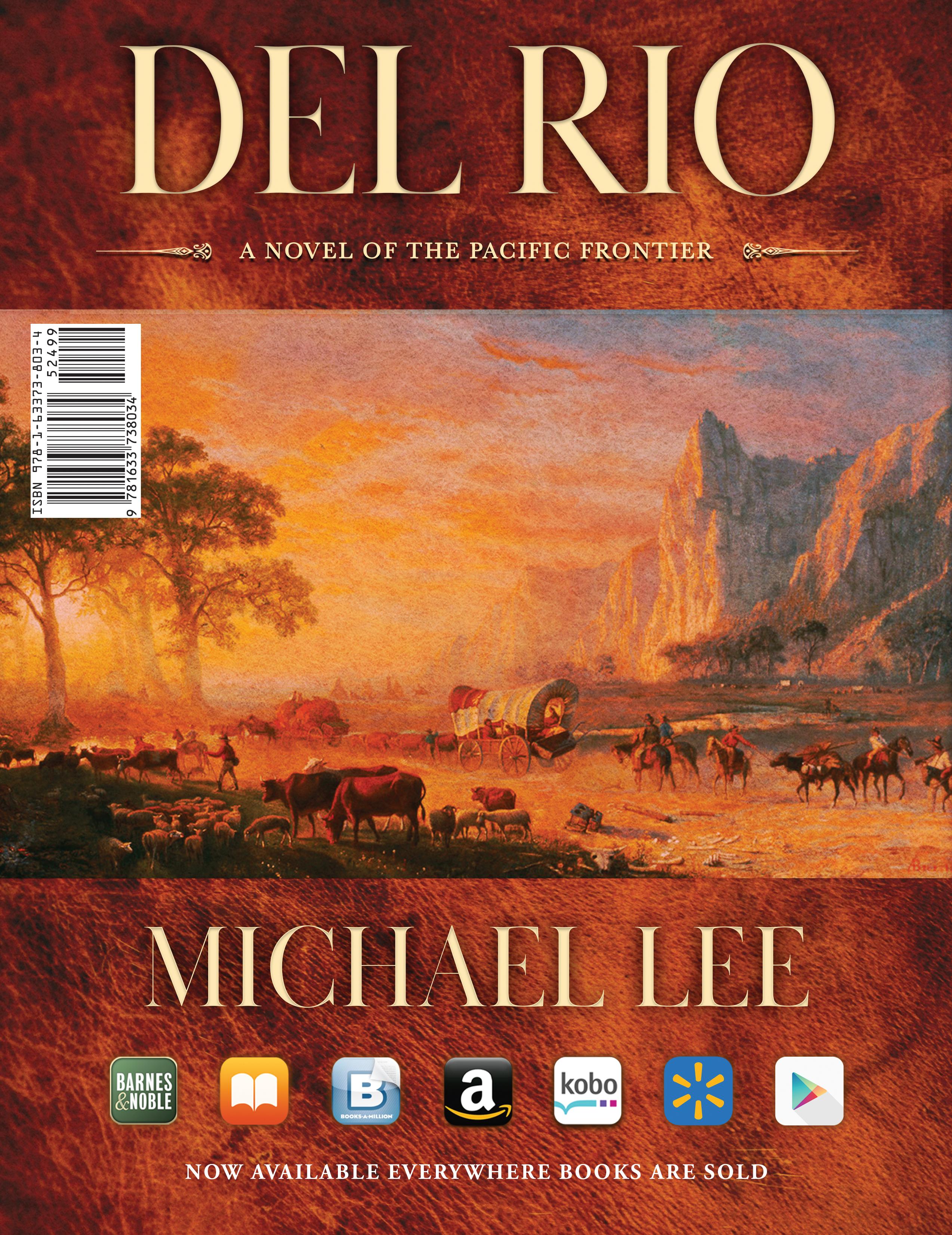






No submissions for our Winter 2022 Issue will be accepted. It will be a special edition dedicated entirely to the memory of our late co-founder, Dusty Richards.
SaddlebagDispatches is seeking original, previously-unpublished short stories, serial novels, poetry, and non-fiction articles about the West. These will have themes of open country, unforgiving nature, struggles to survive and settle the land, freedom from authority, cooperation with fellow adventurers, and other experiences that human beings encounter on the frontier. Traditional westerns are set west of the Mississippi River between the end of the American Civil War and the turn of the twentieth century. The western is not limited to that time, however. The essence is openness and struggle. These things are happening now as much as they were in the years gone by.


QUERY LETTER: Put this in the e-mail message: In the first paragraph, give the title of the work and specify whether it is fiction, poetry, or nonfiction. If the latter, give the subject. The second paragraph should be a biography between one hundred and two hundred words.
MANUSCRIPT FORMATTING: All documents must be in Times New Roman, twelve-point font, double spaced, with one-inch margins all around. Do not include extra space between paragraphs. Do not write in all caps, and avoid excessive use of italics, bold, and exclamation marks. Files must be in .doc, or docx format. Fiction manuscripts should be in standard manuscript format. For instructions and examples see https://www.shunn. net/format/story.html. Submit the entire and complete fiction or poetry manuscript. We will consider proposals for non-fiction articles.
OTHER ATTACHMENTS: Please also submit any pictures related to your manuscript. All photos must be high-resolution (at least 300 dpi) and include a photo caption and credit, if necessary.
Manuscripts will be edited for grammar and spelling. Submit to submissions@saddlebagdispatches.com with your name in the subject line.
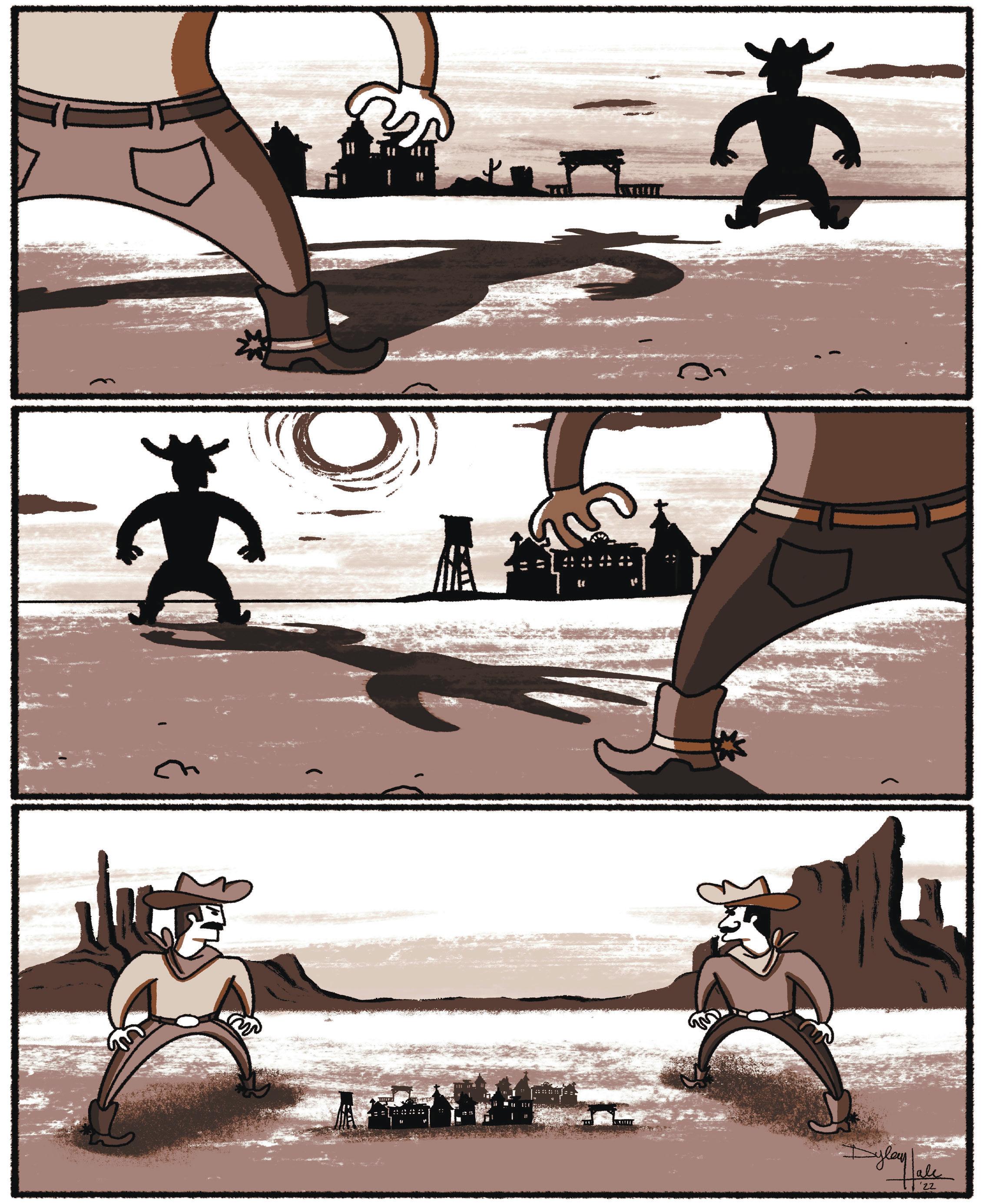

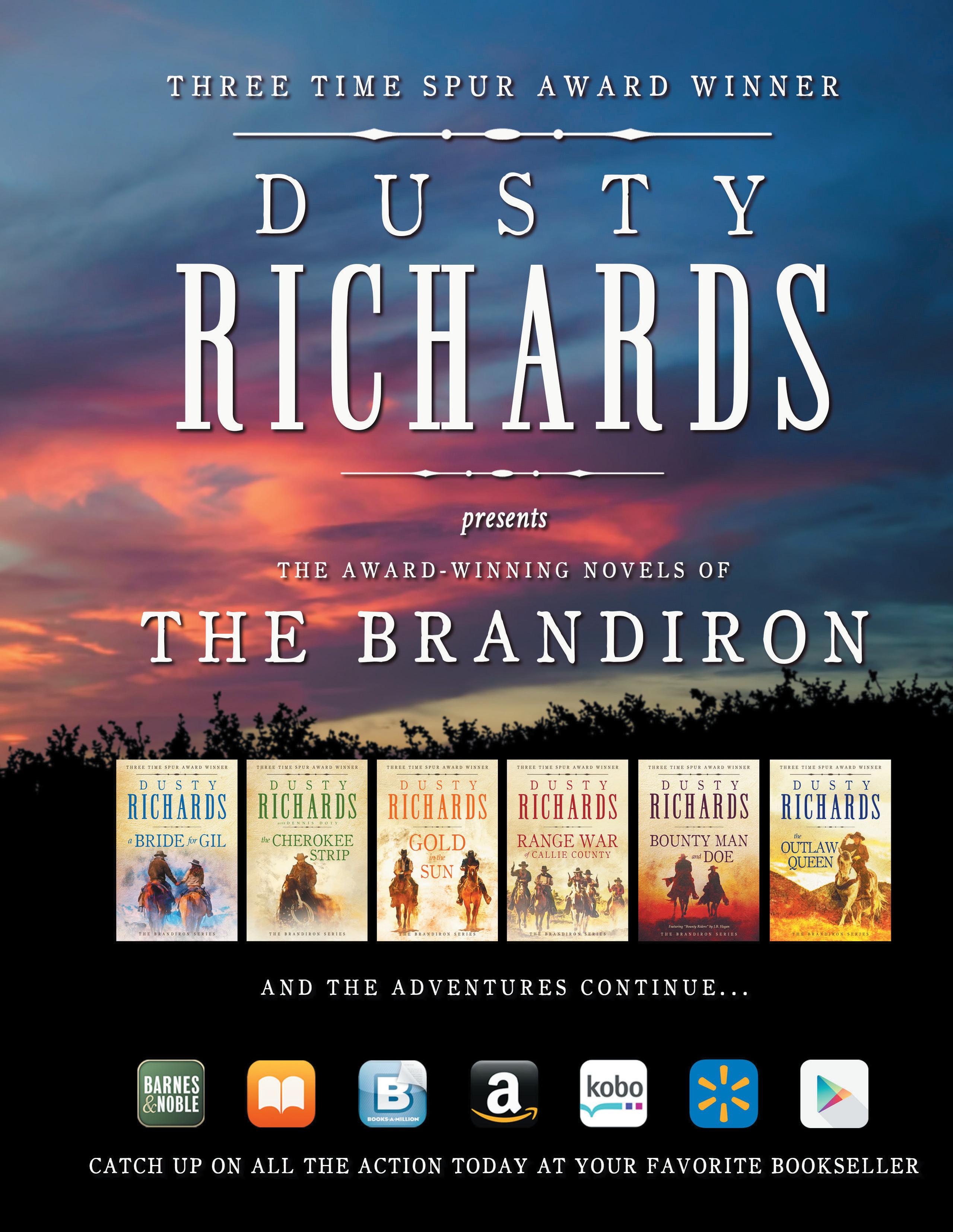
THIS IS A GREAT time to be a Western writer or reader. Never have there been so many talented and accomplished western writers to choose from. Our genre is healthy and vibrant despite the premature announcements of its passing.
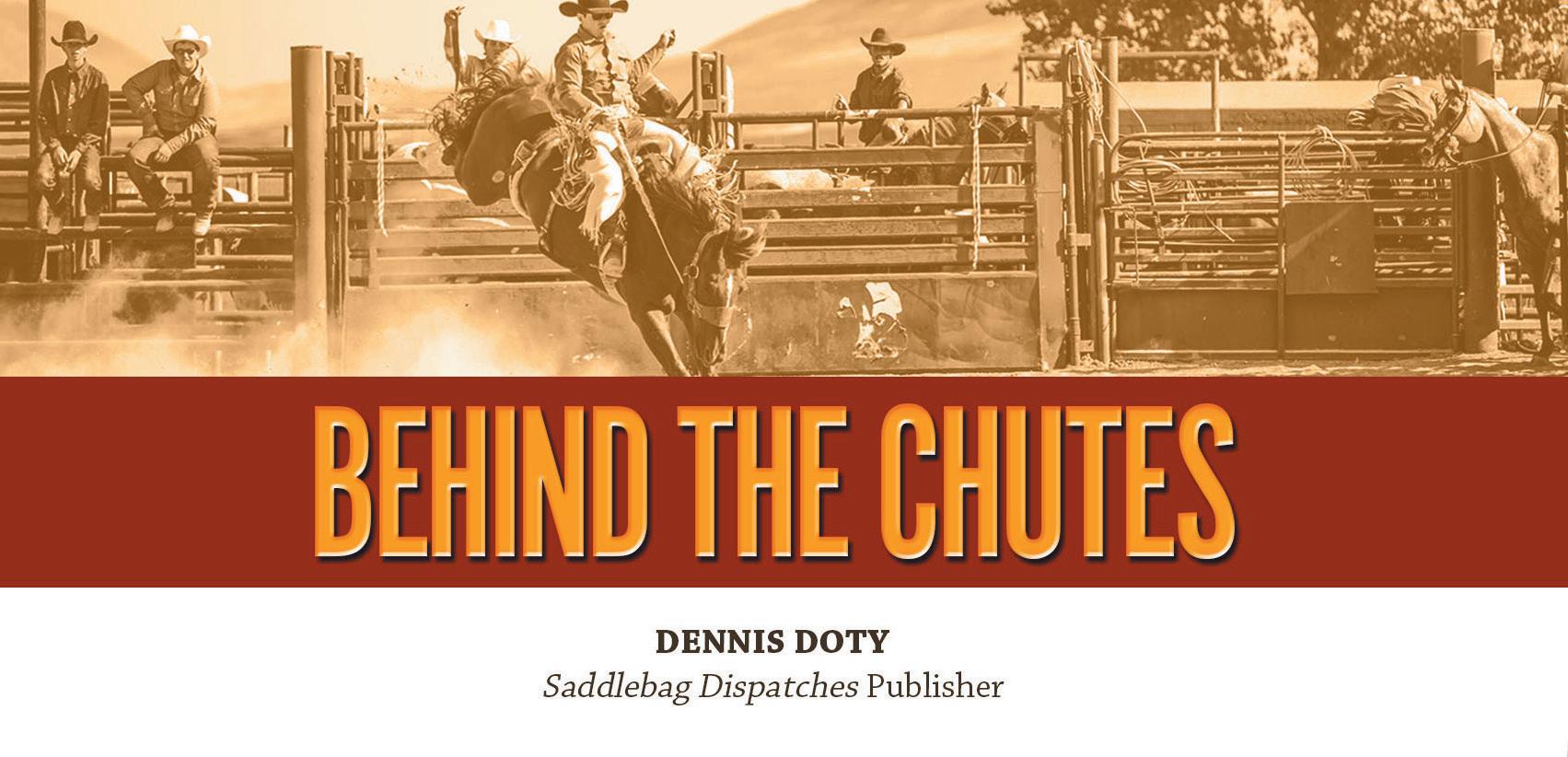
However, we do have a major challenge ahead of us. There are few western readers and even fewer writers under the age of forty. This doesn’t bode well for the future of the western genre. So, I am making it a priority to do whatever I can to bring our beloved genre to a younger audience.
I challenge all of you to introduce one new reader to the western genre and, if you are a writer, to find, recruit, and mentor at least one author under the age of thirty-five. This is no easy undertaking, but I believe it is vital to the long-term survival of our genre. I hope you will join me. So, if you are an unpublished western writer or wannabe western writer under age thirty-five and would like a mentor, feel free to drop me a note with a short sample of your writing at dennis@ oghmacreative.com.
Now, for the announcement many of you have been waiting for, but before we get to that, I’d like to once again thank our fine panel of independent
award-winning judges for selecting the winner and runner-up in our Second Annual Mustang Award for Western Flash Fiction.

L.J. Washburn is a talented western writer. L.J. received the Private Eye Writers of America paperback original award and the American Mystery award for the first book in the Lucas Hallam Mystery series, Wild Night. She also won the Western Fictioneers Peacemaker Award for the short story “Charlie’s Pie” and was nominated twice more for her stories.
Richard Prosch’s work has appeared in Wild West, Roundup, Boys’ Life, and Saddlebag Dispatches magazines. He won a Spur Award from Western Writers of America for Best Short Fiction for his story, “The Scalpers.”
Therese Greenwood won the Spur Award from the Western Writers of America for her story “Buck’s Last Ride” in Kill as You Go, her short story collection from Coffin Hop Press of Calgary, Alberta. She is a three-time Finalist for the Crime Writers of Canada’s Award of Excellence. She won the Canadian Broadcasting Corporation’s Mystery Flash Fiction Contest and her short fiction has appeared in Ellery Queen Mystery Magazine.
Thank you, judges, for taking the time to read and evaluate all the entries this year.
And now, the winner of our Second Annual Mustang Award for Western Flash Fiction is “Yellow Town” by Bruce Harris. Congratulations, Bruce! Also appearing in this issue is our first runner-up story “Lonestar Hate” by Brandon Barrows. Congratulations to you, too, Brandon. Unfortunately, we simply don’t have enough room in this issue for all five finalists, but the other three merit a mention as well. In third place was “Deadman’s Stand” by David Bowmore. W. Michael Farmer took fourth place with “A Man of His Word,” and Allison Tebo was a very close fifth with her story, “Blaze of Memories.” Congratulations to all of you.

You’ll notice we’ve added a new column this time out, “The Book Wagon.” It will be here that the newest member of our staff, Doug Osgood, a talented writer in his own right, will review a trio of Western books— fiction and nonfiction—for each new issue moving forward. He’ll give a short synopsis of each book, along with his overall impressions, then rate each on a scale of one to five gold nuggets. If you’re a Western writer or publisher and would like to submit a book for review, send your request to dennis@oghmacreative.com and we’ll get it set up on Doug’s reading list.
At last year’s Will Rogers Medallion Awards, outgoing Director Charles Williams mentioned to us how desperately we needed to add some Visual Humor to our lineup. It was a suggestion we couldn’t refuse. So in addition to “The Book Wagon,” we’re proud to present our other new feature debuting this issue, “The Punny Express,” a humorous, Western-themed cartoon strip written by Saddlebag Dispatches Associate Editor George “Clay” Mitchell and illustrated by Assistant Art Director Dylan Hale.
Finally, we’re proud to offer our latest issue of Saddlebag Dispatches. We have modern gunmen, heroic horses, classic rodeos, land-grabbing mobsters, two amazing Apache women, and much more. So, what are you waiting for? Turn the page, pull up a log to sit on, pour a cup from the camp pot, and get to reading.
DENNIS DOTY PublisherCopyright
MATHEW GARTH SPENT THE last twenty years keeping Thomas Dunson’s cattle empire thriving. Now, middle-aged with two sons of his own, an especially harsh winter has devastated herds throughout Texas, even reaching deep into southwest Texas to Garth’s own herd. Debts old and new force him to risk storms and rustlers to drive a herd to Dodge City. Along the way, he must battle old enemies, face old secrets, and even fight family, all to save the Dunson legacy.
Two elements are critical for iconic westerns— settings and action. In Return to Red River, setting is as much a character as the Garth family, and Boggs paints such vivid scenes the reader might reach to wipe sweat or shiver along with the characters. In addition, the author uses all the classic action scenes— saloon fights, stampedes, gun battles, and more, all with the attention to detail that sets the reader front and center. Yet, the real keys to this novel are the relationships. Human passions are all on display, driving the plot, and Boggs handles them with the dexterity of a fine craftsman. Every word, every scene, tightens the screws on Mathew Garth.
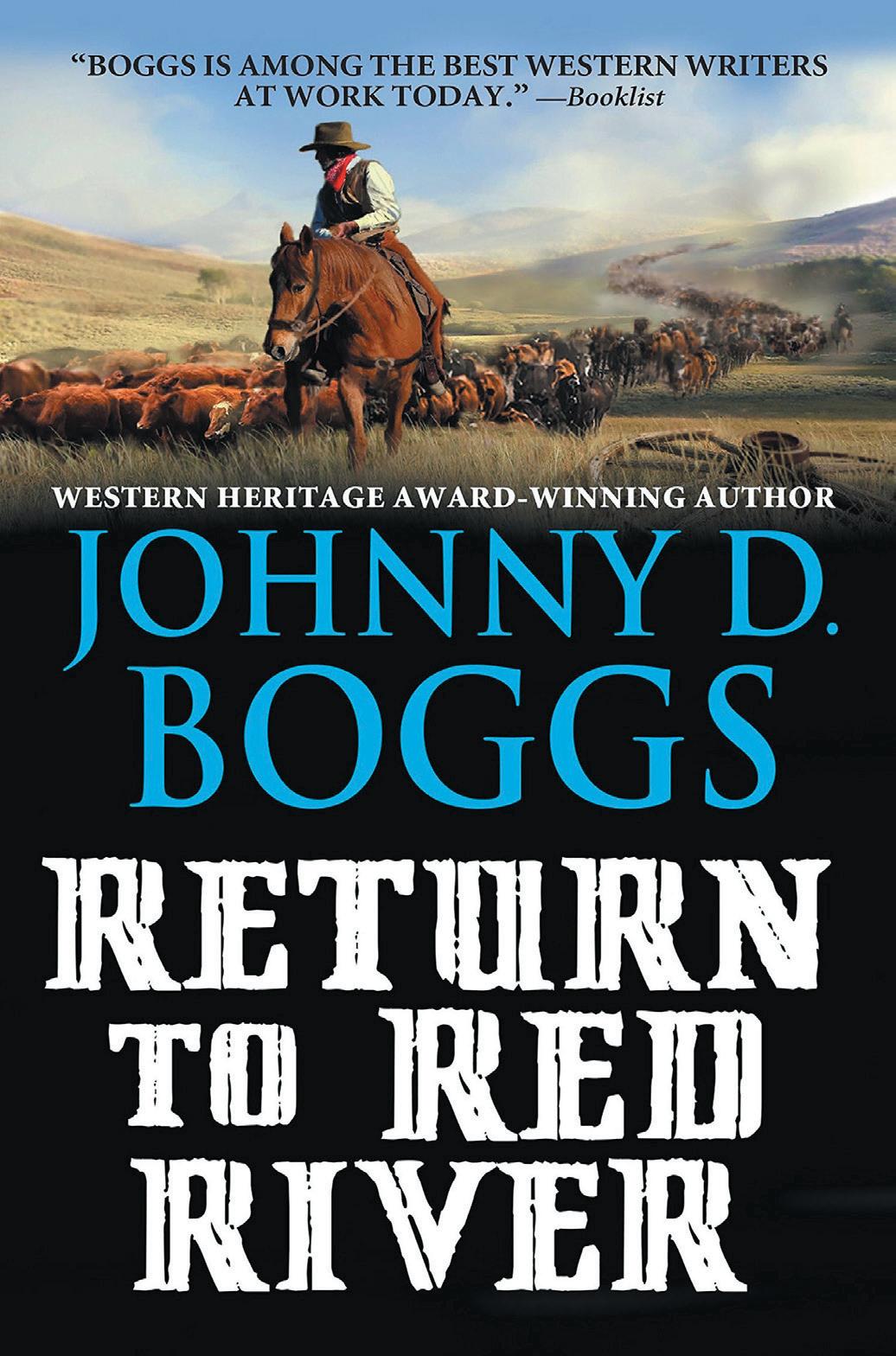

With this revisiting of the classic movie, the author proves yet again why he is the modern master of the western genre. The plot spins and bucks more than a rodeo bull and leaves the reader gasping for
breath long after the final page. Place this one to the front of your bookshelf. You’ll want to read it again and again.
Rating: 5 Nuggets (out of 5)




 ReturntoRedRiver by Johnny D. Boggs
2016, Published by Kensington Publishing Corp.
ReturntoRedRiver by Johnny D. Boggs
2016, Published by Kensington Publishing Corp.

TEDDY ROOSEVELT BELIEVED IN preserving the West for all Americans. To that end he set aside millions of carefully chosen acres among the vast tracts of empty wilderness. Then he placed them in the care of Gifford Pinchot, head of the newly formed forest rangers. Teddy’s own party revolted against him to stand with powerful, wealthy timber and railroad barons seeking more—more land, more money, and more power. By 1910, with Roosevelt out of office and his hand-picked replacement, Taft, proving to be weak-willed and more interested in his golf game than politics, the wealthy business interests seemed to be winning. Until August 20, 1910.
A windstorm turned several small drought-fueled fires into a raging conflagration unlike anything any living man had ever seen. To the wealthy railroad and timber executives, this seemed a Godsend. Destroy the forests the rangers protected and eliminate their need. Then the acreage could be reclaimed for the sake of big business.
The narrative is engaging and entertaining despite the author spending significant portions of the text explaining the history of the war between preservation and big business. The impact of Roosevelt’s presidency on the preservation movement and his friendship with Gifford Pinchot are covered in depth. Interspersed are heroic stories of men and women who bravely stood against the overpowering flames.

Who wins? The barons rejoiced. But in the end, the ranger’s defeat turned to victory. This is a story of hope, bucking the odds and the power of public sentiment. In light of even more recent history, this book needs to be shouted from the mountaintops.




Rating: 4.5 Nuggets (out of 5)
Jack Wills wants is to live out his string on his Lucky Five ranch with his aging dog, Thor, longtime friend, Rudolph Kilgore, and adopted son, Jordon Jackson. Until a young woman, Sierra Wills, shows up at the ranch with a wild story about being Jack’s granddaughter and begging help to recover her herd of horses stolen by the same Comancheros who murdered Jack’s son—a son he never knew existed. A long evening of conversation with Sierra leads retired ranger Wills to believe her story. Subsequently, he agrees to put together a team to recover her stolen herd.
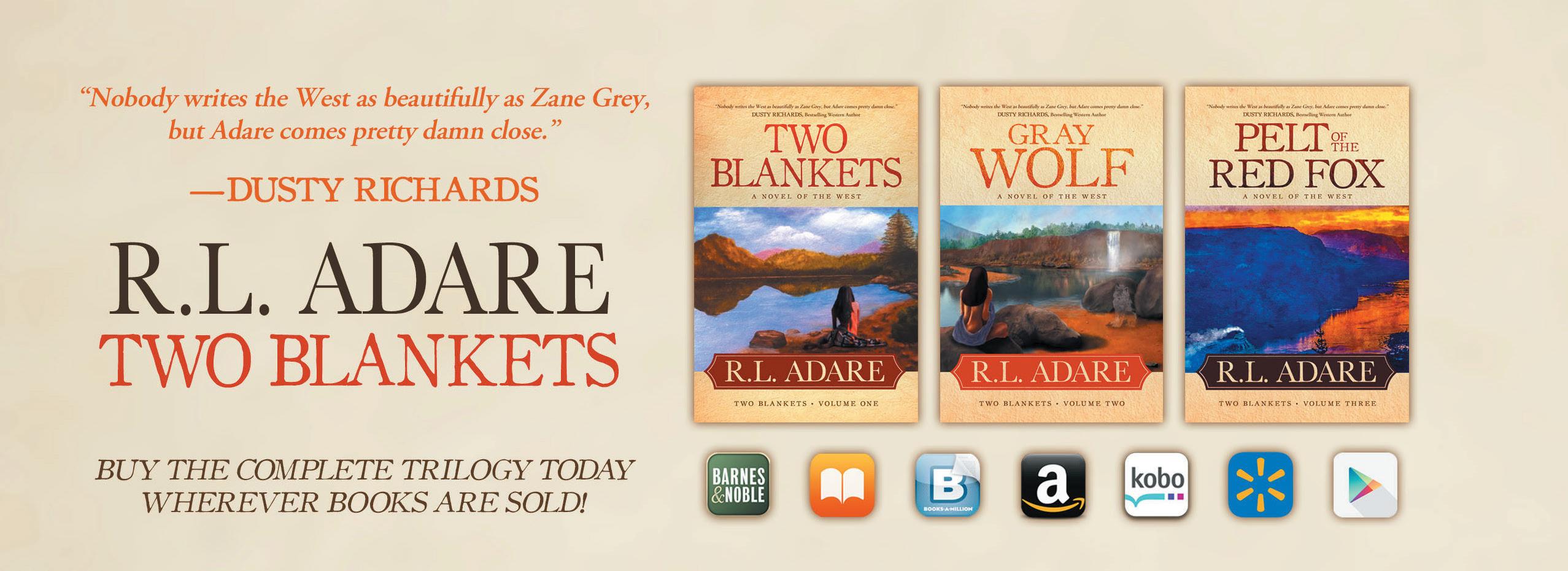
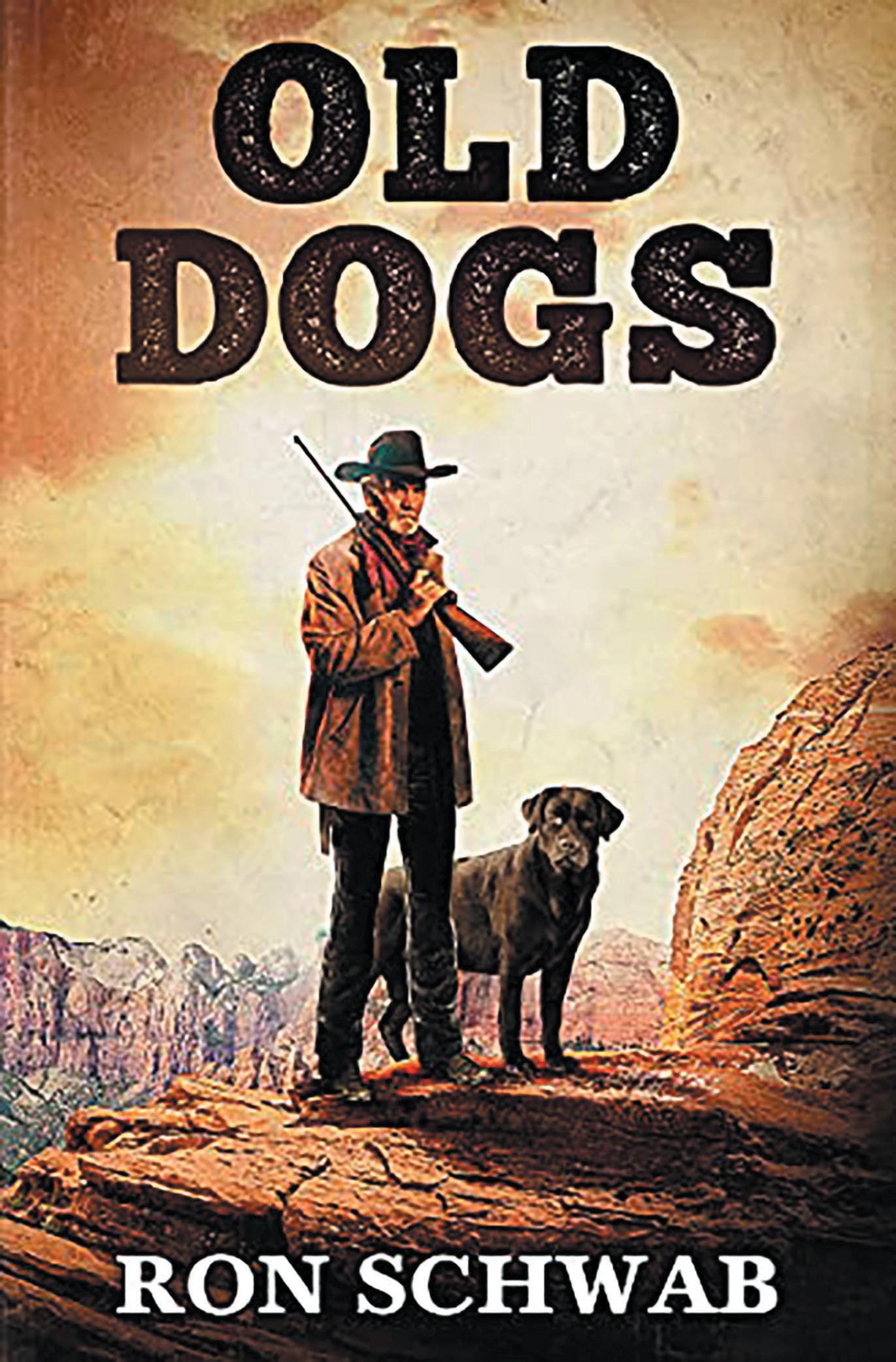
The author does a satisfactory job of exploring the universal issue of ageing and tying it to the plot. Sentimentality, aches, bodily ailments, and the desires for progeny’s future push this story forward. Schwab also handles fight scenes well—sufficient details to allow the reader to paint a vivid picture without dragging at the story. However, billed as an adventure yarn, I was disappointed by the shortage of edge-of-seat suspense or rip-snorting action. Even the relationships, which take front and center throughout, felt rushed, robbing the book of the conflict and tension they should add. Thus, the telegraphed ending, which could have been both surprising and inevitable, fell flatter than a cowboy flapjack and lacked the kind of shocking surprise needed for a truly satisfying read.
Overall, while Old Dogs was worth a quick read, it doesn’t stand up to the best the genre has to offer, and I wouldn’t read it twice.
Rating: 3 Nuggets (out of 5)




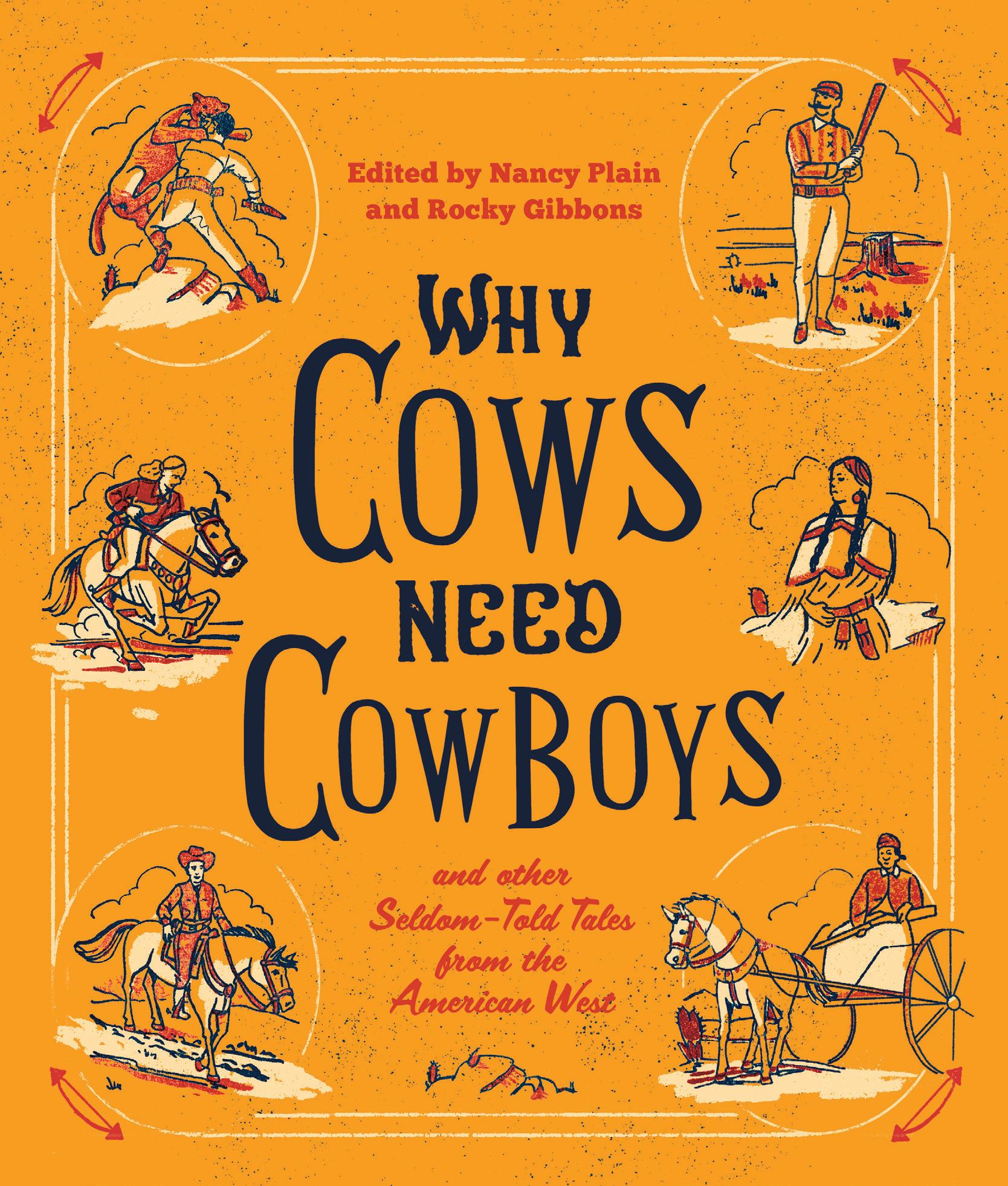
BETWEEN 1968 AND 1971, Paperback Library published twenty slim western novels under the house name Alex Hawk. They were uniformly packaged with cool western pulp style illustrations on the covers. I really dug both the aesthetics of the series and the stories themselves. The books in the series are akin to eating Lay’s Potato Chips—you can’t read just one—which meant when I discovered the first three in a used bookstore and finished reading them, I had to track down all twenty. That was the easy part. The hard part began when I tried to identify the actual authors, which has turned out to be harder than figuring out the wordslingers writing behind non-disclosure agreements for the William Johnstone brand. A big part of the reason it’s harder is because the Alex Hawk books were written fifty years ago, and whatever sign left behind for a tracker to follow has been covered over by the sands of time.
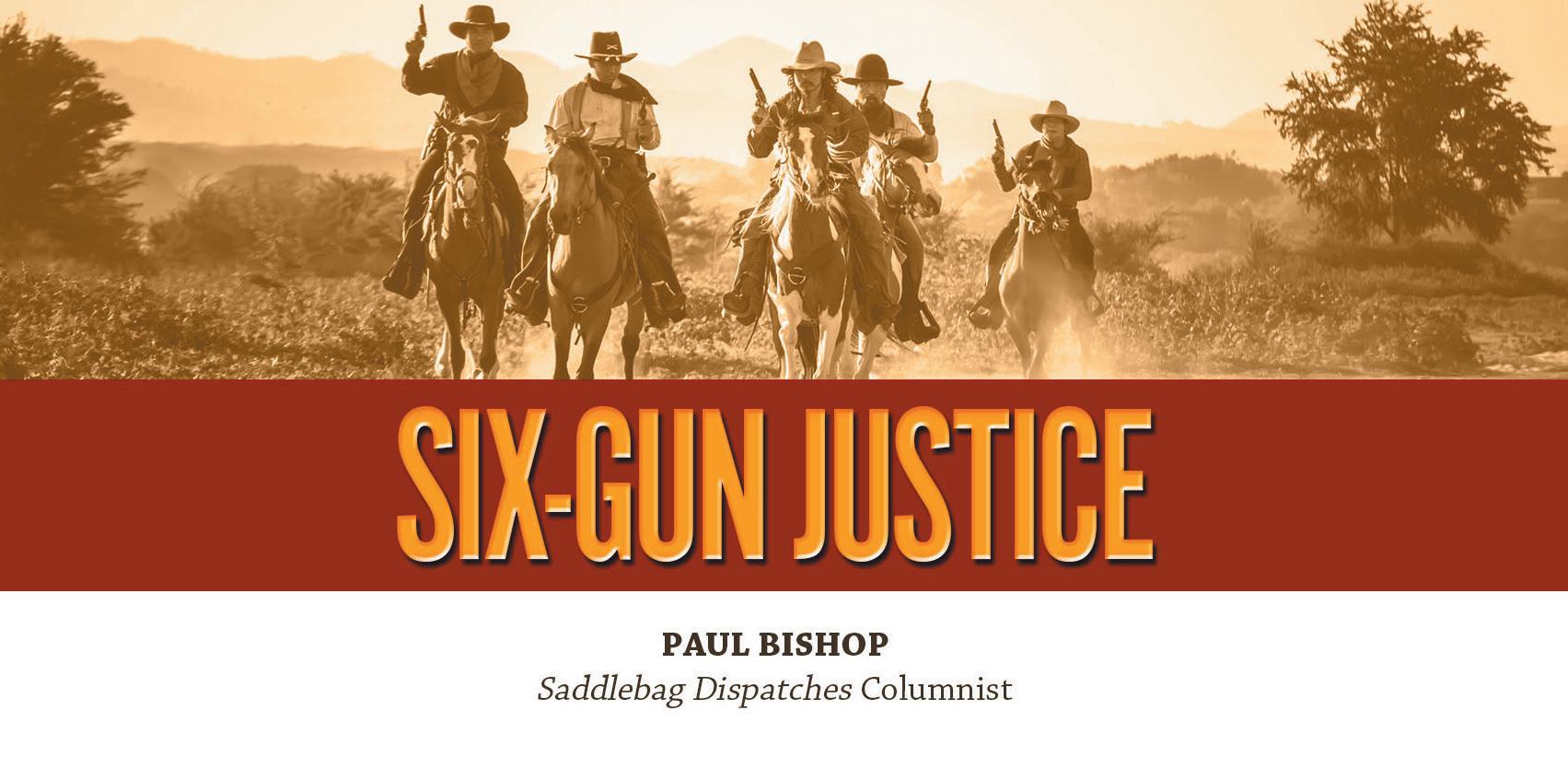
The indications are there were at least ten writers and perhaps as many as fifteen behind the Alex Hawk house name. Some may have written only one title, some two or three, and one at least five. All the books were stand-alones featuring different heroes, with the exception of three books featuring the character of half-breed sheriff Elfego O’Reilly, written by a big name wordslinger who I’ll unmask in a second— which puts a picture in my head of a guy in a mask pounding away furiously on his battered Olivetti, but perhaps that’s a little farfetched.
There’s no doubt I’ve spent more time banging my head against search engines trying to figure this out than the mystery is actually worth. However, I did manage to discover there was some heavyweight western wordslinging behind the pseudonym as well as some lesser lights.
The problem of author identification starts with the copyright for all books assigned to Coronet Communications. There is no indication of the actual authors either on the title page inside the books or in the US Copyright listings. Any information pertaining to Coronet Communications has disappeared into the ionosphere along with the company itself.
If I was to make an educated guess, it wouldn’t be unusual for a company like Coronet Communications to act as a book packager. The most likely scenario is Paperback Library asked Coronet to create a western series expecting Coronet to find the authors for the series, edit the books, and then turn them over to Paperback Library to publish.
However, a packaged series being built around a pseudonym—Alex Hawk—instead of a recurring character would be very unusual. This begs the question, did Paperback Library come up with the Alex Hawk house name—which would be most likely—or did an editor at Coronet pull it out of thin air? It also makes you wonder if Alex Hawk was actually supposed to be the name of the series character, and somewhere in the process it ended up as the shared author alias.
It all could have been a miscommunication between Paperback Library and Coronet, but that’s another mystery about these books which will never be solved at this late date. As it is, this is a mystery only Sheriff Minutia would worry about solving, but again these are the kinds of details hardcore genre fans thrive on, right? I am possibly confusing western fans with Star Trek fanatics, a mistake that might lead directly to a Six-Gun Justice Podcast cosplay contest.

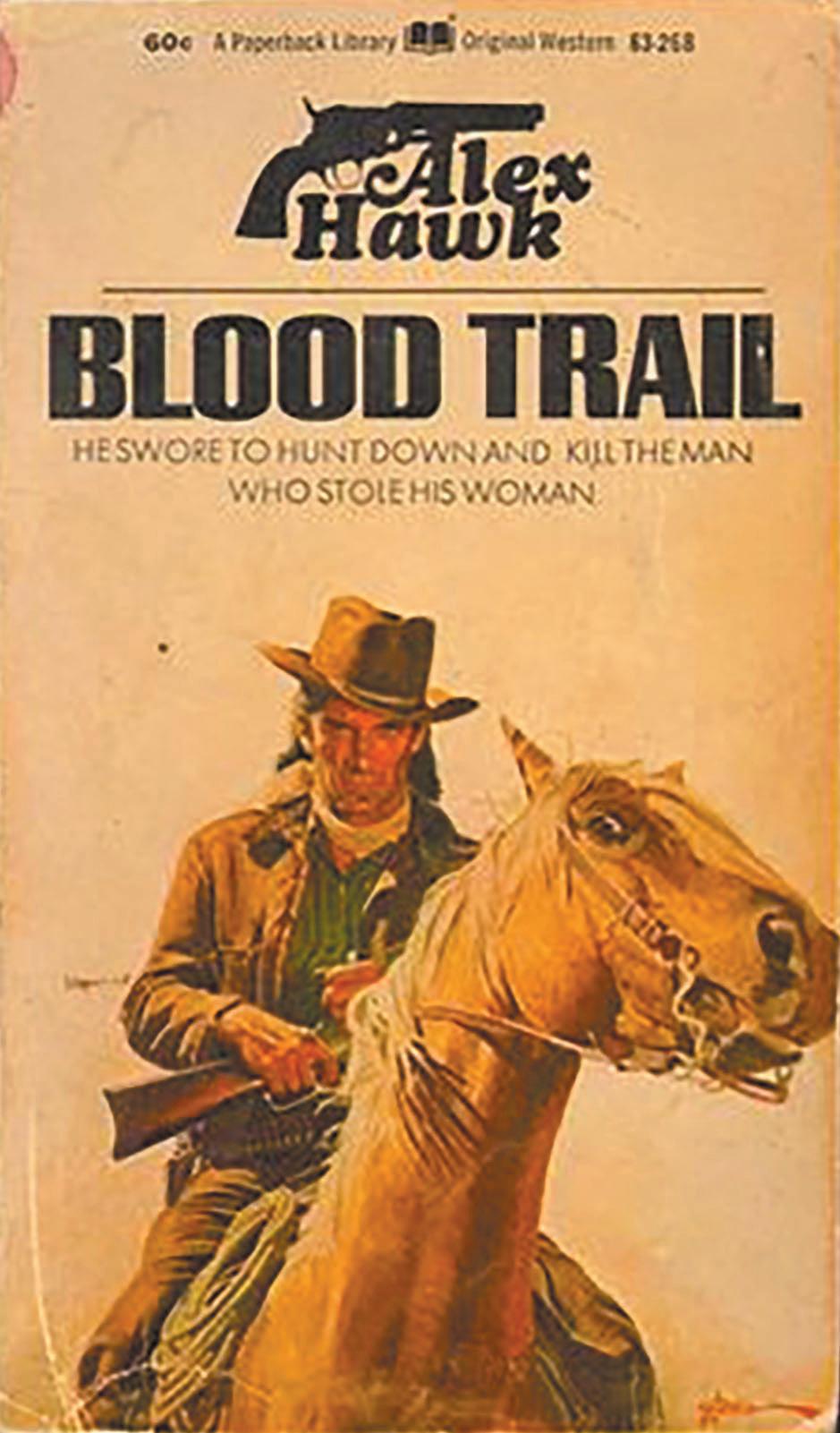

But let’s get back to making a long story longer... I have no doubt the books were contracted as work-forhire gigs. These would be contracts accepted by writers needing to make a quick buck by turning out in a week or two what in reality was a fifty thousand word story—too long to qualify as a novella but barely long enough to be called a novel. The books published under the Alex Hawk pseudonym were stripped down, guns blazing, fists flying actioneers that would have been right at home in the best of the old school western pulps.
My favorite Alex Hawk book is SavageGuns, which made sense when I learned it was written by Brian Garfield. With some more digging, I was able to discover the highly respected Elmer Kelton also donned the identity of Alex Hawk when he penned Shotgun Settlement. Kelton would later republish Shotgun Settlement under his own name using the slightly revamped title, Shotgun. It’s hard to say if Kelton officially got the rights back for Shotgun Settlement, or Coronet Communications went so completely defunct the issue of rights conversion was a moot point. However, Kelton was an upright guy, so I’m going to assume the best and say the rights reverted to him at some point—unusual for a work for hire gig but possible.
Checking several bibliographical sources for Kelton and Garfield, I confirmed Alex Hawk was listed as a pseudonym for both. The sources further confirmed
Savage Guns as Garfield’s Alex Hawk title and Shotgun Settlement as Kelton’s. Since there were no other Alex Hawk titles listed for either author in their bibliographies, I think it’s safe to assume their tenure as Alex Hawk was confined to a single outing.
Hauling out my copy of Hawk’sPseudonyms, a regular go-to reference work, I checked the listing for Alex Hawk. Both Garfield and Kelton were again confirmed along with several other Alex Hawk stand-ins. These included well-known western wordslinger Giles Lutz
and two other lesser-known scribes—Johanos Bouma and Joseph Chadwick. This was a definite step forward in solving the enigma of Alex Hawk. However, there was no indication of which Alex Hawk books Bouma or Chadwick had written.
My next stop was Twentieth Century Western Writers—another fantastic reference. The entry for Giles Lutz was a bonanza crediting him with five Alex Hawk titles—ToughTown,DriftersLuck, and the three books I mentioned earlier featuring the character of Elfego O’Reilly—Mex,HalfBreed, and MexicanStandoff. Frustratingly, the entries for Bouma and Chadwick did not list Alex Hawk as a pseudonym, nor did any Alex Hawk titles appear in the listings of their works—but more on them later.
While researching the Western TV tie-ins episode of the Six-Gun Justice Podcast, the name Owen Dean —a pseudonym used by the prolific Dudley Dean McCaughy —was credited on many of the western tie-in novels. I was looking through his extensive bibliography when I came across two books— PecosSwap and BloodTrail —which he wrote as Alex Hawk. Bingo! Another wordslinger unmasked from behind the Alex Hawk pseudonym along with two more titles with solid attribution.
At this point, my Alex Hawk dance card is filling up. Garfield and Kelton each wrote one identified Alex Hawk title. Owen Dean wrote two identified titles; and Giles Lutz is the top scorer with five identified Alex Hawk titles.
This leaves Johanos Bouma and Joseph Chadwick identified as authors—but not the books they wrote or how many—and eleven titles still not matched to authors. It was time for a deep dive into the mysteries of the Internet. My search for Johanos Bouma turned up nothing of interest. However, when I searched for J. L. Bouma, it came back with the cover of the Danish edition of McGee under the title Haevntorst. Score one for Google. I kept digging and found a reference to the Danish edition for Gunslick, with Joseph Chadwick behind the Alex Hawk pseudonym.
There were a number of other Alex Hawk titles published in German, Swedish, and Danish editions but no further information as to the authors disguised as Alex Hawk. The titles had also
been changed, and it was difficult to match them to the original titles. I have my suspicions Wayne D. Overholser, Roy Hogan, and T.V. Olsen took turns as Alex Hawk, but I was unable to uncover any solid confirmation or any indication as to which books they may have penned.
Currently, the score stands at six authors identified along with the eleven titles they wrote as Alex Hawk— leaving nine titles with unidentified authors. The trail may be cold, but I am relentless, and the search goes on. If anyone out there knows any more information pertaining to the Alex Hawk books, please drop Sheriff Minutia an email at www.sixgunjusticewesterns@gmail.com.
Savage Guns—Brian Garfield Shotgun Settlement—Elmer Kelton Mex—Giles Lutz Half-Breed—Giles Lutz —Giles Lutz Trouble Town—Giles Lutz Drifter’s Luck—Giles Lutz Pecos Swap—Owen Dean Blood Trail—Owen Dean McGee—Johanos Bouma Gunslick—Joseph Chadwick Blizzard Herd
Gunslammer Ruthless Return Violence Valley High Vengeance Hidden Hills
The Last Bullet
PAUL BISHOP is a novelist, screenwriter, and western genre enthusiast, as well as the co-host of the Six-Gun Justice Podcast, which is available on all major streaming platforms or on the podcast website: www. sixgunjustice.com/

His voice is like a rusty hinge that swings a gate in rain.
His voice is like a rusty hinge that swings a gate in rain.
He walks a cowboy strut on legs that protest and complain.
He walks a cowboy strut on legs that protest and complain.
One finger has gone AWOL since a dally cut it clean.
Deep creases near his eyes are maps to all the things he’s seen.
One finger has gone AWOL since a dally cut it clean. Deep creases near his eyes are maps to all the things he’s seen. There’s more hair on his hands than what still sprouts upon his head.
There’s more hair on his hands than what still sprouts upon his head. His sweat-stained, battered hat sits square as rain and snow are shed.
Work starts before the sky sloughs off the stars like flaky skin and doesn’t end until another night has stumbled in.
His sweat-stained, battered hat sits square as rain and snow are shed. Work starts before the sky sloughs off the stars like flaky skin and doesn’t end until another night has stumbled in.

He eats two meals a day out of an ancient cast-iron pot that Cookie serves as culinary torture, though it’s hot. The ground has been his mattress, cheap, available, and near. It’s served him in the heat and cold throughout his long career. The work is hard and dang’rous, pays a dollar every day.
He eats two meals a day out of an ancient cast-iron pot that Cookie serves as culinary torture, though it’s hot. The ground has been his mattress, cheap, available, and near. It’s served him in the heat and cold throughout his long career. The work is hard and dang’rous, pays a dollar every day.
Sometimes the boss will let him take a calf in lieu of pay.
Sometimes the boss will let him take a calf in lieu of pay. A cowboy’s life’s romantic ’tween the covers of a book, but he needs grit and gristle if you take a closer look.
He proves his worth on horseback, lives his life in dirt and grime. Although he works for others, they own nothing but his time.
A cowboy’s life’s romantic ’tween the covers of a book, but he needs grit and gristle if you take a closer look. He proves his worth on horseback, lives his life in dirt and grime. Although he works for others, they own nothing but his time.
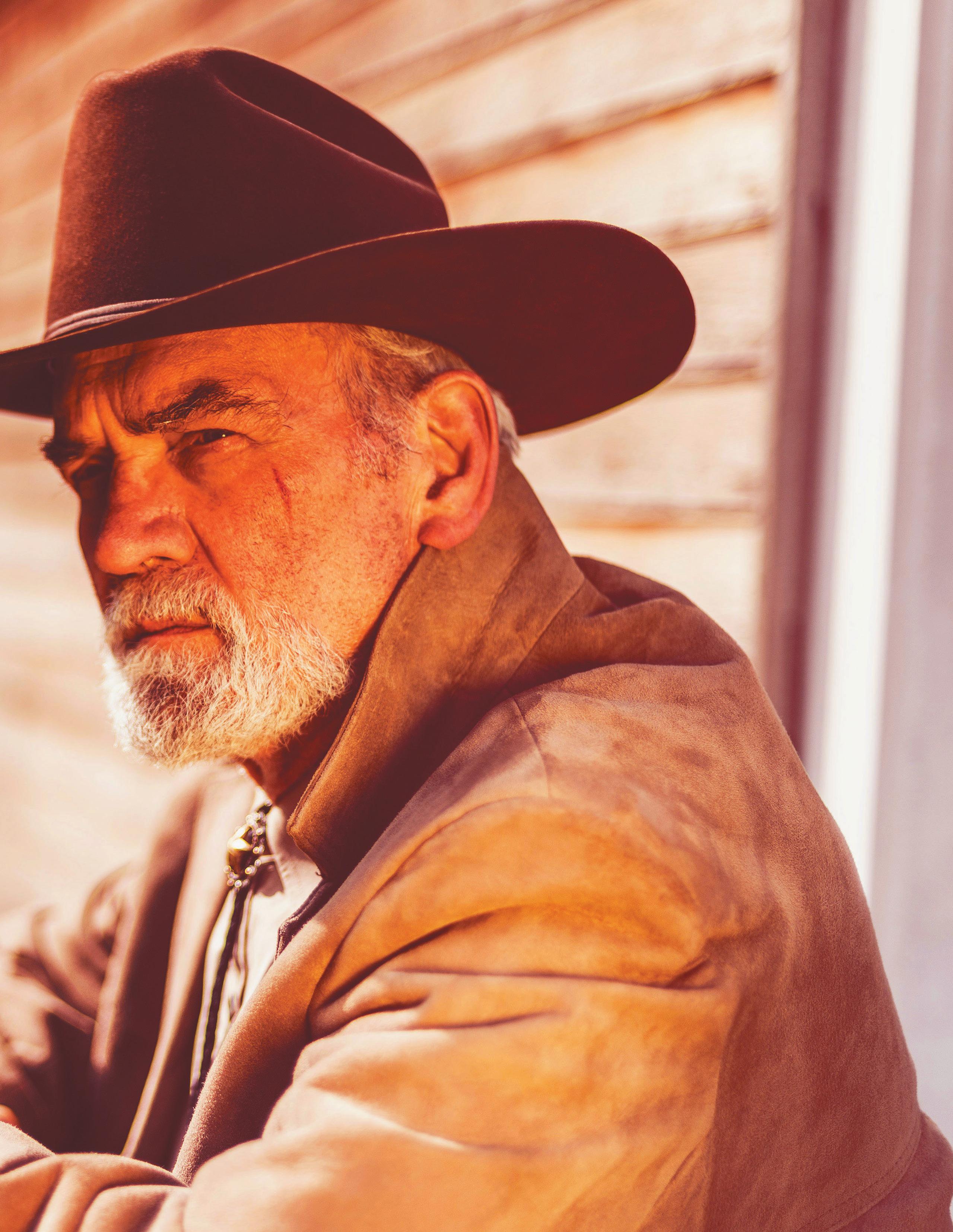

THE CABIN WAS ONCE some homesteader’s attempt at building a dream. Now, the porch was half-collapsed, and the moss-covered roof wasn’t far behind. Smoke curled from the tin chimney, though, and a horse with a distinctive star-shape on its flank sheltered beneath an eave. The tip was good. Ned Lukas was back in Texas.
“Think it’s him, Sarge?”
“Hush,” I snapped. Stinton’s cheeks colored, but he kept quiet. He took orders and was a fair shot. He’d be a good ranger someday. I still had no use for him. Captain Miller ordered Stinton along for the experience, though, and if it wasn’t for Miller, I wouldn’t be there at all. He was new to the post and didn’t know I shared history with Ned Lukas, didn’t know Lukas killed my sister.
Lukas was a gunman and worse, but his smile could charm rattlers. I only learned Cora knew Lukas from the letter she left, the day they disappeared below the border. His gang pulling a bank hold up that same morning wasn’t coincidence.
It was two years before I had news of Cora, and then it was too late. She died in childbirth, abandoned
by a man she loved in a country whose language she couldn’t speak. The thought still ripped my guts like bullets. It was time to return the favor.
“Sit tight.” I rose from a crouch, slipping the thong from my revolver.
The recruit looked closely at me. “Sir?”
“I’ll handle this alone.”
There was an odd light in Stinton’s eyes. “Captain Miller ordered me along with you, Sergeant Herndon.” His fingers toyed with the butt of his own gun.

White-hot fury flared inside me. I had waited so damned long. Who was this snot-nosed kid to take my moment away?
“Miller’s not here,” I said tightly.
Stinton shook his head. “Sorry, sir, but I’m coming.”
“Fine, then.” I couldn’t hide my anger, but every moment wasted was another Lukas might slip away or get the drop on us. I’d just have to deal with Stinton, too.
Quietly, we approached the shack. At the crumbling porch, Stinton turned. I mouthed, “Easy now,” gesturing for him to take the lead. Stinton nodded and lifted his .45 from its holster. Before he could take another step,
I brought my Colt smashing down behind the rookie’s ear. He moaned softly and collapsed.
“Sorry, kid, but this is my showdown,” I whispered.
I waited, chest tight and palms sweating, listening for signs Lukas heard. Satisfied he was still unaware, I moved onto the porch, wary of the slightest creak. Please let this be the end, I prayed.
My heel snapped the half-rotted door right off the hinges. A flurry of motion erupted as Ned Lukas sprang from a bunk built into the wall and toward a gun-belt hanging nearby.
“Hold it!”
The outlaw froze. Recognition came into his face.
“That’s right, Ned. It’s Mike Herndon–Cora’s brother. I finally found you.”
Lukas was stricken. “Now, just wait—”
“Shut up. Coming back here is the last mistake you’ll make,” I told him, my thoughts racing so fast I was dizzy. After imagining this moment a million times, now I couldn’t remember how it was supposed to go.
Lukas’s Adam’s apple bobbed, and his eyes flicked to his holstered revolver. “About Cora—”
“Don’t say her name, bastard, and don’t you worry about that gun. It’ll be in your hand shortly.”
Lukas didn’t need an explanation. “That’s murder!”
I tried to smile cold and cruel like in my daydreams, but I just felt sick.
“You’re a lawman! You can’t,” Lukas croaked.
I raised my revolver. “Tell it to the devil.”
Something changed in Lukas’s face then. The mask of fear slipped, showing his anger. Then he did the last thing I expected. He roared like an animal and charged.
His weight hit me like a steam-engine, tumbling us both, breaking my grip on the Colt. It clattered to the floor and skittered across the room.
The impact emptied my lungs, and Lukas’s pounding fists kept me from refilling them. His knee found my groin, and nausea rocked me. Then his weight disappeared. He was going for my gun.
I rolled, and my fingers found Lukas’s ankle as his found my gun. I yanked him back to the floor and slammed a fist into his head. Lukas thrashed, flipping onto his back, then somehow, his hands were around my throat.
Already winded, my lungs burned, and my vision went red. Lukas gasped something, but I only heard my heartbeat against my eardrums. I threw a punch that Lukas shrugged off, but his grip loosened. I managed to tear his hands away, and cursing, he broke free to try again for the fallen revolver.
Lukas lost the gamble. I found my feet, then bulled him against the wall, driving my fists into his kidneys until he crumpled and lay still.
Chest heaving, the room spinning, I wiped sweat from my eyes. I took up my six-gun and aimed squarely at Lukas’s face.
Despite the heat of exertion, I felt cold. I tried to speak, but only a sobbing sound came out. I’d waited long years for this moment only to find I couldn’t squeeze the trigger. What Lukas said—“lawman”— rattled around inside my head.
“Let’s take him in, Sarge.”
Stinton stood in the doorway, hat in hand, massaging his head. “What was the story gonna be, sir? Lukas jumped me, and you shot him?”
“How long have you—”
“Since he tackled you. Some of the fellas told me why you want him so bad, so I didn’t interfere.” Gravely, Stinton added, “I would have, though, if you needed help, sir—or if your trigger-finger tightened much more. Ready to do our duty now?”
I was wrong. Stinton was already a good ranger. And as I realized it, the coldness slowly disappeared. “Let’s get our man into a cell, huh?”
The rookie offered me handcuffs. “Honor’s all yours, sir.”
“Thanks, Stinton… for everything.”
BRANDON BARROWS is the author of the novels Burn Me Out, This Rough Old World, Nervosa, and in the books The Altar in the Hills and The CastleTown Tragedy. He is an active member of Private Eye Writers of America and International Thriller Writers. Find out more about Brandon and his writing on Twitter @brandonbarrows, or on his website, www. brandonbarrowscomics.com.


THE BEARDED MAN TACKED a wanted poster alongside the bank’s door, spit, and walked across to the barbershop.

“Mind if I post this here?” he asked. “Been putting ’em up all over town. Last one I got.” He held up the poster. “It’s the guy who killed Sheriff Rance.”
Henry Parker tossed his newspaper aside. “Bobby Brackett, wanted for murder. Sure, put it anywhere you like,” Parker said. “Where you from, stranger? And how do they know this Brackett killed our sheriff?”
“Obliged to ya.” The man looked around the shop for a suitable spot. “Home is out near Fort Kent. I don’t know how they found out Brackett killed Rance. A U.S. Marshal paid me to ride over here and place these posters all around. That’s just what I done. This here’s the last one.” The man tacked the wanted poster on a wall, hammering the final nail with his gun handle. He glanced at the empty chair, rubbed a meaty hand along his cheeks, and said, “If you ain’t too busy, I’ll have a shave and a haircut.”
“Have a seat,” Parker said.
“Shame what happened to Sheriff Rance,” the man
said while hair fell to the floor. “Word has it there was a lot of people who saw the shooting but none of ’em was willing to speak up.”
Parker momentarily stopped cutting. “Ain’t true. Where’d you hear that?”
The man shrugged. “Don’t matter, none. From what I seen, this here Stone Quake looks like a nice town, you know, nice people and all.”
“It is,” Parker said. “Nice and yellow.”
Parker again stopped cutting, “Now just a darn minute, mister. I don’t even know your name, and you come into my shop and insult me and the entire town. I won’t stand for it.”
“Whoa, slow down there. I don’t mean nothing by it. Just repeating things I heard around the fort. News travels.”
“Well, it ain’t true. Sheriff Rance was gunned down, shot in the back. No one saw who did it. I can guarantee you that much,” Parker said.
“That so?”
The two men were silent. Parker finished cutting and began shaving the man. Through the corner of
his mouth, the man asked, “How can you be so sure no one saw who done it?”
The straight edge scraped over the man’s Adam’s apple. “’Cause it happened on a Sunday morning, that’s how. The entire town was in church when we heard the shot. By the time we all came rushing out to see what happened, the killer was gone, and Sheriff Rance lay bleeding in the street. He died in the doc’s arms. Doc couldn’t get no words out of him before he… anyway, he’s in heaven now.”
Parker continued shaving. The man held up a hand to stop him for the moment. “You’re telling me this town ain’t yellow? You trying to tell me there are some real men in this town?” He laughed. “People say otherwise.”
Parker squeezed the razor’s handle. “Look here, stranger. I don’t give no hoot what other people are saying. I don’t like what you’re saying, not one bit, I don’t. I’m gonna finish shaving you. Then I’m going to tell you to walk out of here and leave town.”
“I’ll do as you say, friend,” the man said.
“I’m not your….” Parker stared at the man’s cleanshaven face. He glanced back at the wanted poster. “You’re—”
“Bobby Brackett?” the man said, rising from the chair. He pulled his gun. “This town might be yellow, but it got itself one smart barber.” Keeping his gun on Parker, the man looked at himself in the mirror. “Nice job, friend.”
“Get out!” Parker shouted.
“I’m going.” He backed up a step. “Oh, one other thing. I’ll be back. Tomorrow. First thing. A town with a bunch of cowards and no lawman is a town for me. I ain’t gonna tell you which place I’m gonna rob. Fact is, I haven’t made up my mind yet. Might be the bank or the saloon or the general store. I just don’t know yet. But you and everyone else in town will know tomorrow early.”
The man took off. Parker watched him ride away. It was already late. There wasn’t time to get a message to the sheriff in Bookerville. Parker closed his shop and ran to the church.
The man spent the night less than a mile from Stone Quake. Under a moonless sky, he made his way back. He carried a ladder he’d brought along,
climbed up, and went through one of the hotel’s back windows.
Sunrise. He stared out the window. Smiling, he scanned the street and storefronts. There were men everywhere. Armed men. Nasty looking men. Triggerhappy men. They stood sentry in front of every shop in Stone Quake. He didn’t realize the town had that many men. Impressive. It was time to make his move. He walked slowly down the stairs but noticed a group had also congregated in front of the hotel, guarding it. The man went back up the steps. He exited through the window and climbed down the ladder. He fired a shot into the air as he emerged onto the street.
“Hold off, everyone,” he shouted. He holstered the gun, reached into his shirt pocket, and pulled out a badge. “Name’s Peter Childs. I’m a U.S. Marshal. I’m the new law in Stone Quake.”
Despite the number of men, the street was silent. Henry Parker spoke. “What? You’re not Bobby Brackett?”
“No. Bobby Brackett doesn’t exist. I had those posters printed myself.”
“But, why?” Parker asked. “I don’t get it.”
“Truth is, I heard rumors about this town, that it was yellow. I had to find out for myself before accepting this job. Well, I accept. And I make a solemn promise to each and every one of you. I will track down Sheriff Rance’s killer and bring whoever done it to justice. God bless Stone Quake.”
BRUCE HARRIS writes mystery, crime, and western stories. His western short stories have appeared online at Frontier Tales, and anthologized in Grizzly Creek Runs Red, The Last Comanche, Bourbon & a Good Cigar, Time to Myself, Coyote Junction, Hangmen & Bullets, and The Shot Rang Out, among others. He lives in New Jersey, but that is only a temporary situation.


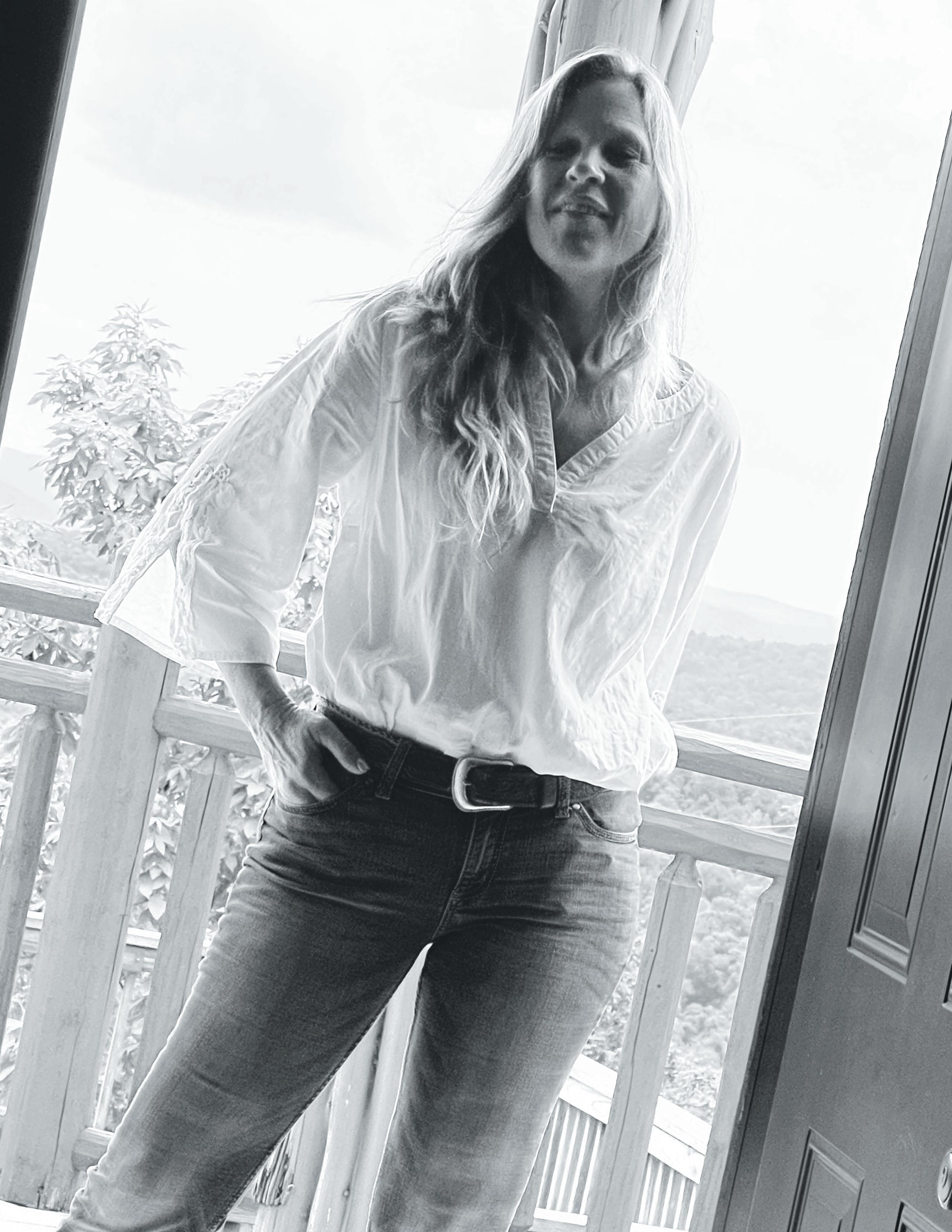
Truck Driver. Mother. Grandmother. Woman. Professional Equine Photographer Patricia Rustin Christen Wears All These Hats and Many More.
Photography Courtesy of Patricia Rustin Christen
AT THE MIC, THE late Dusty Richards calls the race while crowds of people shout with expectation. And sprawled in the mud, camera lens focused between horse’s hooves and wagon wheels, a strikingly beautiful photographer searches for that perfect shot. The wild rivalry known as the chuckwagon races is held yearly in southern Arkansas. It’s only one example of where this brave photographer/truck driver, Patty Rustin Christen, can be found on any given day.
Patty and I ran across each other several times before we connected long enough to discuss her unusual and fascinating careers. Finally, I was fortunate to room with her at the Oghma Creative Media Summer Writing Retreat in Ponca, Arkansas last summer where she was busy focusing on business through the camera lens.
Having her company for a few nights gave me time to discover a complicated and courageous woman. She is driven not only by the demands of her talents
but by what the world has seen fit to deal her. And she is not afraid to face that tough life with her chin out. This long, lean, and graceful woman claims she was a homely child. Something it’s difficult to believe.
“When you don’t fit in anywhere, it’s like running from the devil,” she told me. “As a suicidal teen I drank a cup and a half of sheep dip. Something that should have killed me. I dealt with trouble in dangerous and harmful ways and almost died in the effort.
“The only time I ever felt free and special was on a horse and one steer I trained to ride until he ended up in the freezer. That was his intended purpose. I paid the kids down the street my Christmas money to rent their pony. I would climb a fence and jump on anything equine I could get to hold still. My first pony, Timmy, was gone after my mom and dad divorced when I was five.”
As the years passed, Patty tried numerous jobs from working at her Dad’s United Cigar store, waitressing, home health care, and a stint with a rare and
essential oil dealer where she learned about massage therapy. Yet, watching her go through her life now it’s difficult to imagine she once fought such problems. Today, nothing much slows her down.
There was that broken heart handed her by a Madison Square Garden champion a lifetime ago. “He told me he’d already seen everything, and I’d still not seen anything.” There’s the sound of a shrug in her soft voice, like she fought that disappointment off as well.
“With a broken heart, I joined the Army at twenty-two. I had hopes of using the promised tuition to attend the school of healing arts in Southern California when my tours ended.”
That dream was shot down when she was put to work repairing heavy equipment. A trouble shooter? Well, almost. She says, she was a glorified parts changer and
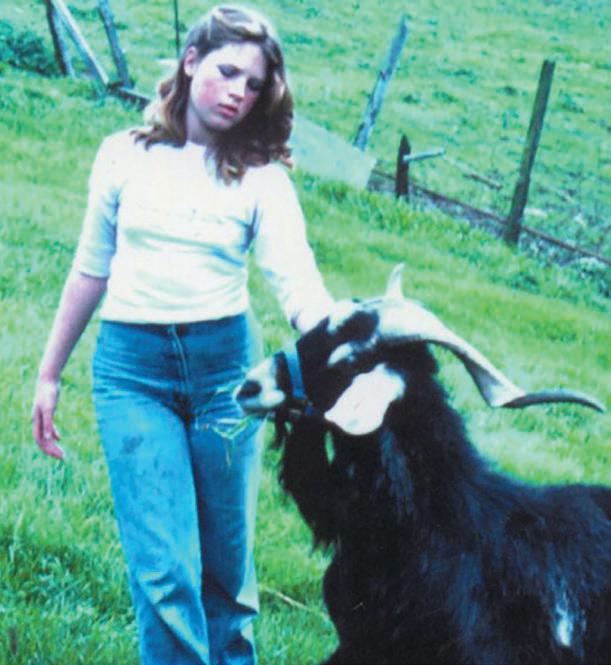

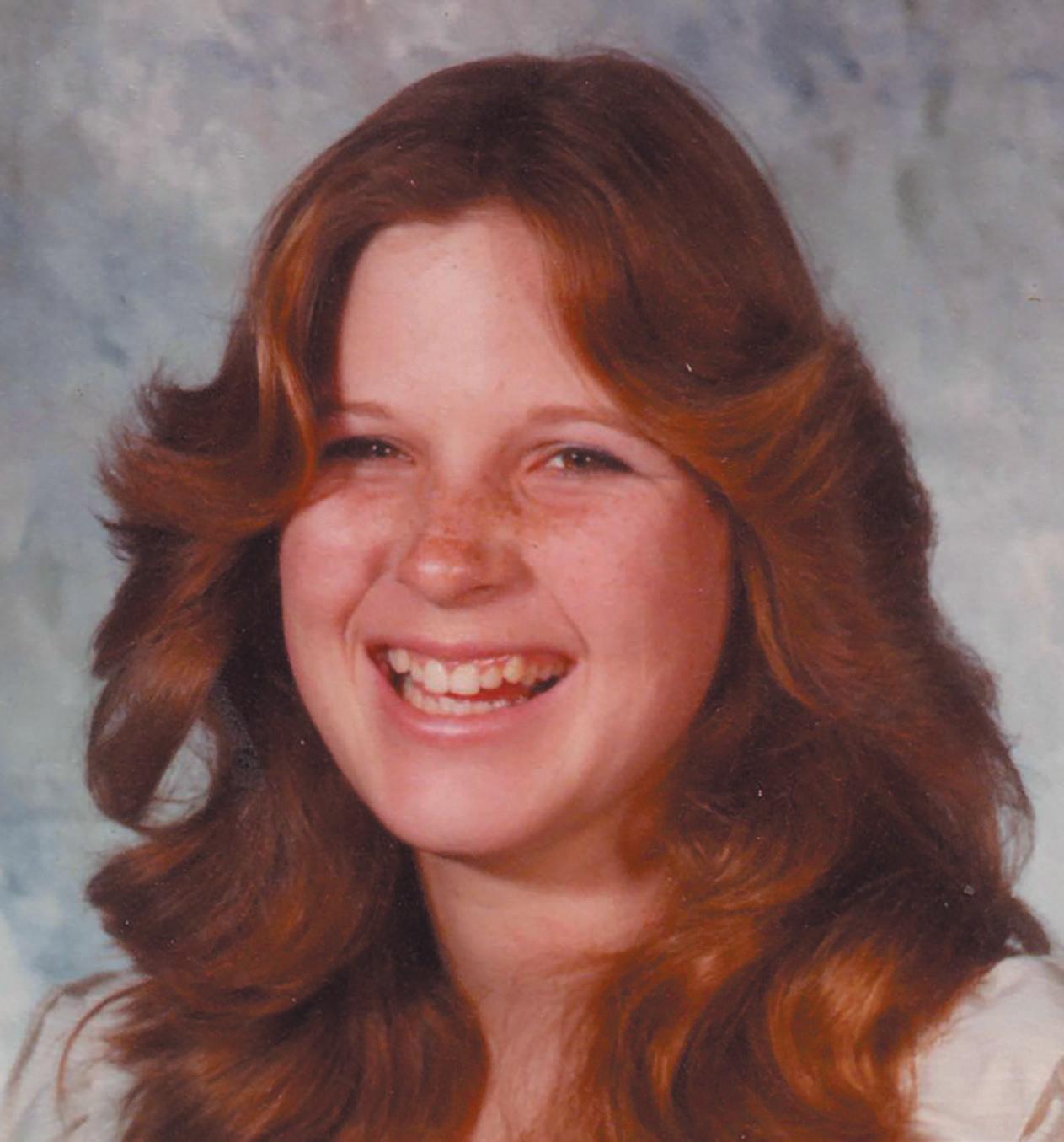
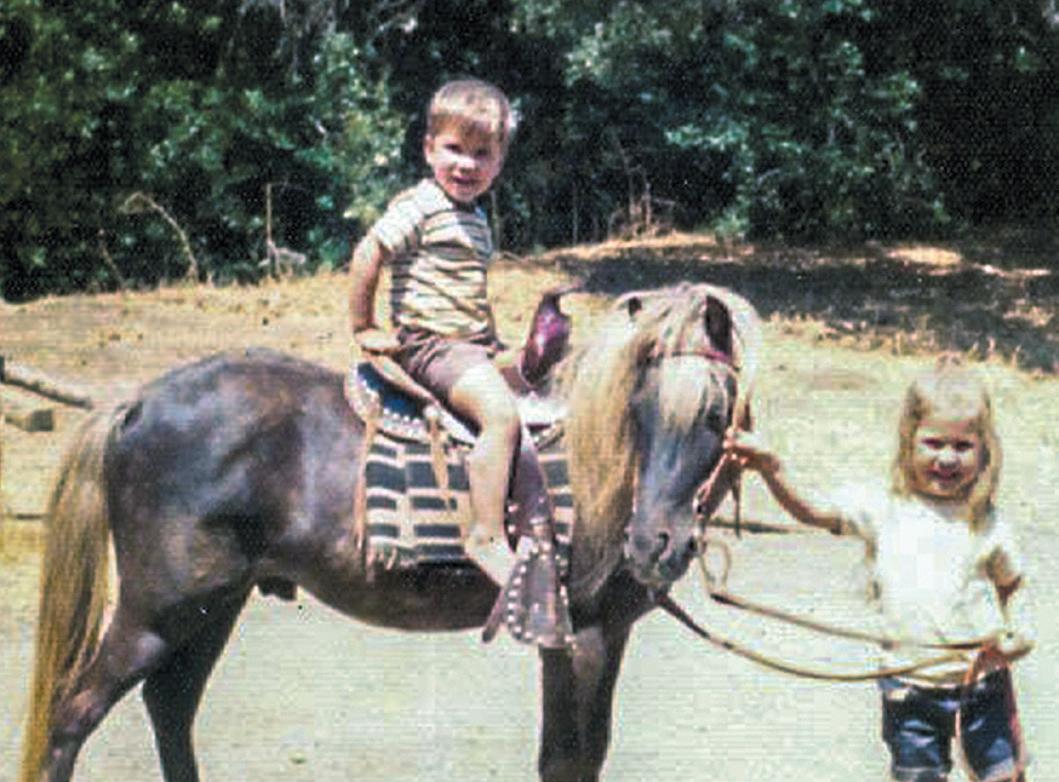
greaser. Not that she’s ashamed to get her hands and face black working on a job. It just wasn’t quite what she’d wanted or expected.
In the thick dark night, we’re both silent, and I wait for the rest of her story. I know it’s coming. Her voice catches, and she goes on, as if knowing I’m listening and not sleeping. She’s right.
“Driving trucks is where I met my second husband, Hawk, and it all came together. You see, Hawk didn’t want me to just learn how to haul freight. He wanted to teach me all he knew so I would have choices should anything ever happen to him. Over the past twenty-six years I have loaded and hauled cars on twelve-
car carriers and produce all over hell and a half acre, multi-million dollar show and racehorses....”
She takes a breath, and I do, too. This is super great information. Out of the darkness, her voice picks up where she left off. “...tankers full of oil, dump trucks full of aggregate or hot asphalt on road crews, frame-
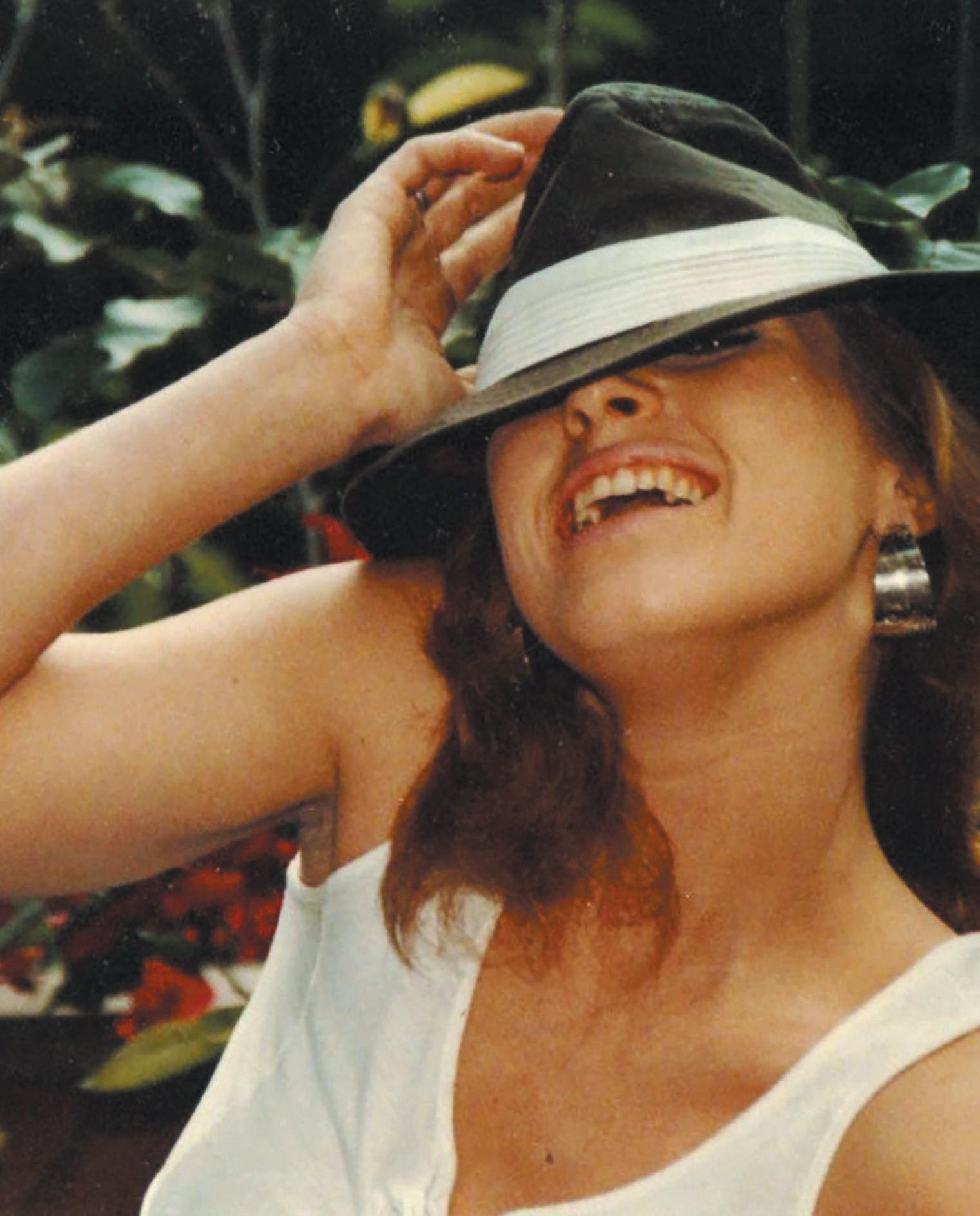
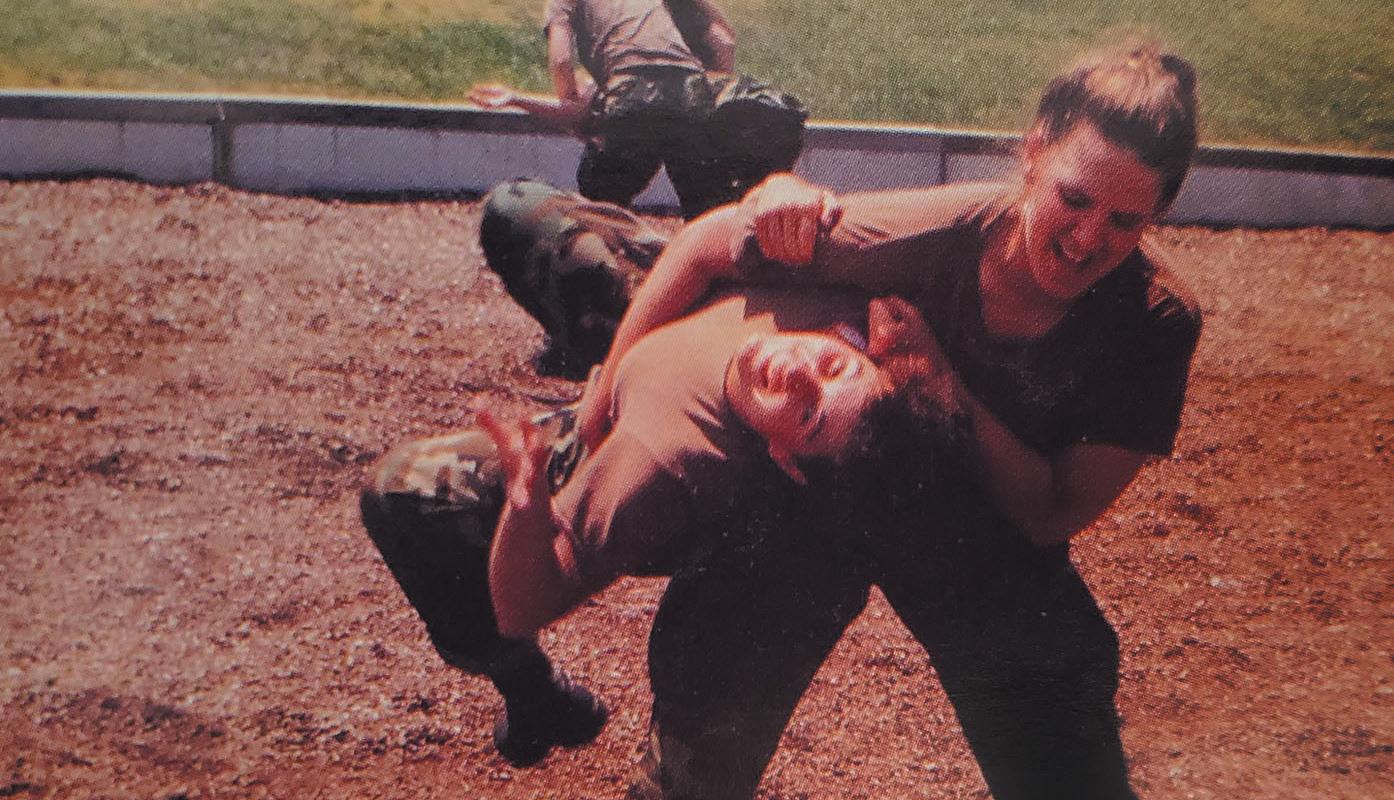
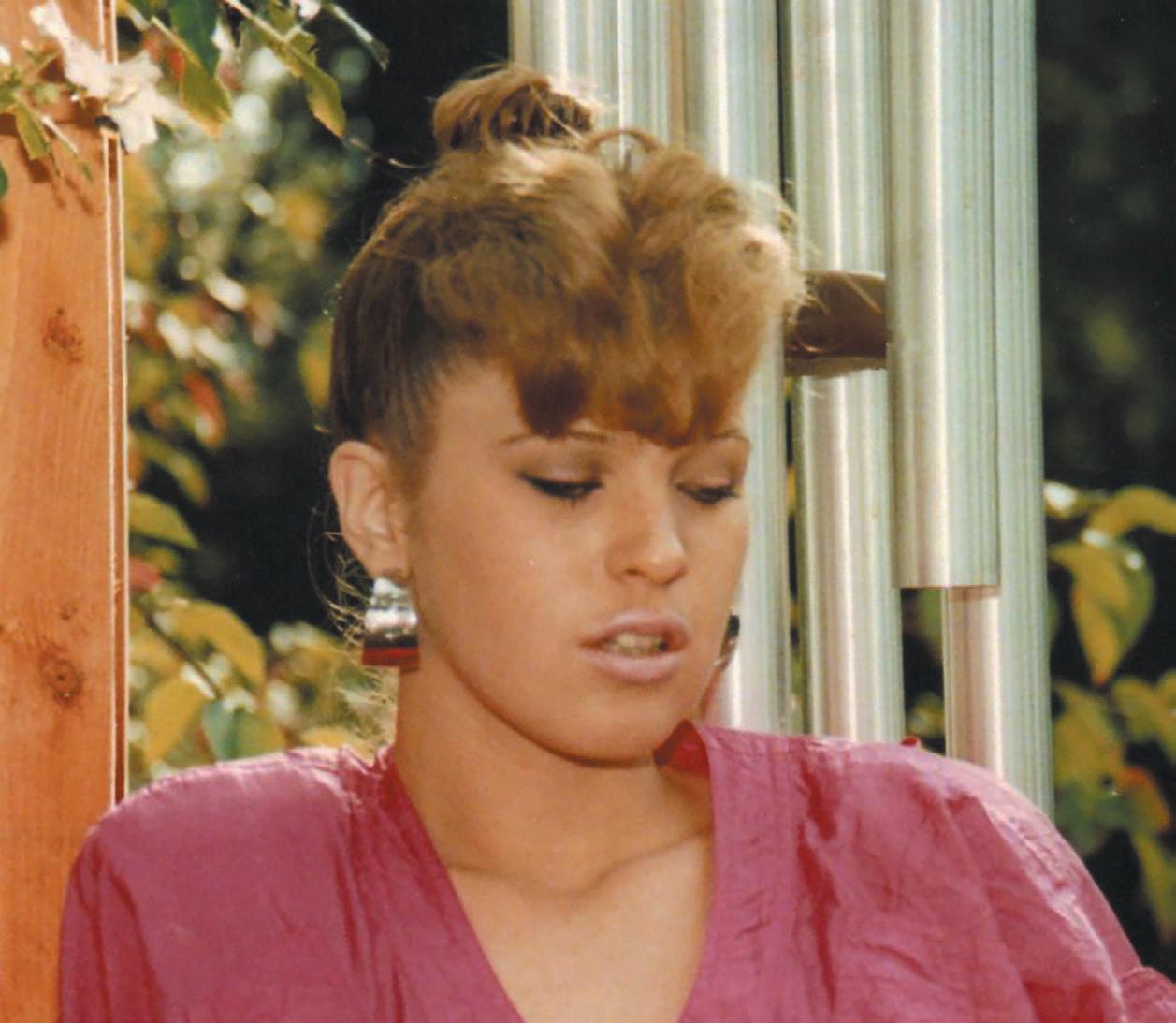
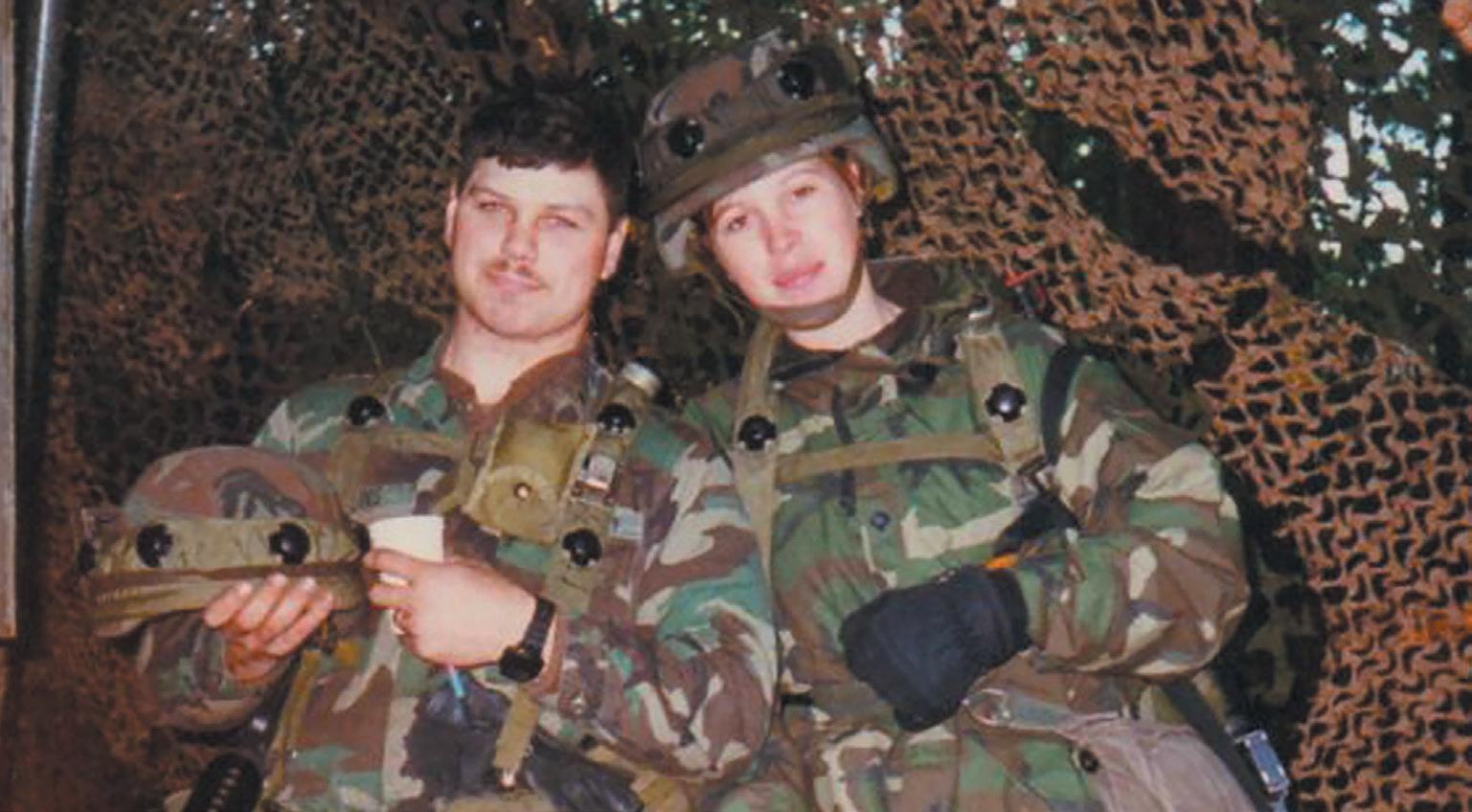
less end dumps full of scrap metal, a little flat-bedding, and now I haul grain in bottom-dump trailers. Each aspect of trucking has taken me places and allowed me the opportunity to briefly experience the people behind the construction cones, in the factories, fields, and warehouses.” Her voice lowers, and I think she’s finished, but she’s not.
“Since Hawk was not afraid of anything breathing, he took me on tours to see architecture in the ghettos where most people don’t go. He would feed a homeless person and ask about their story. He was neither intimidated nor repulsed by the disenfranchised which
WHEN YOU DON’T FIT IN ANYWHERE, IT’S LIKE RUNNING FROM THE DEVIL.”
added to my wonder at hidden and forgotten treasures many never experience or don’t observe. He showed me a beauty of humanity in everyone. I learned it goes beyond a simple aesthetic. It may be a contrasted backdrop of the architecture in an individual’s life or current circumstances. Often fleeting, at times tragic, but it is there. It is not Vogue—it is life.
“It is a prostitute’s sequins back-lit by a streetlamp, a

tear on the face of a drunk telling you about a lost love, the graffiti under a corpse in winter being stripped of his clothes by the equally cold, desperate living.”
I hold my breath listening to her beautiful words that tell her story better than I ever could. One thing she soon learned. There was so much beauty in the world she yearned for a camera to capture it.
She continues to describe some of those sights burned into her memory. “A large black man named Dennis holding my three-year-old daughter on a dock where we picked up watermelons in Georgia. The contrast of her little pink hands sticky with the watermelon he’d cut for her against his beautiful blue-black cheeks, the Georgia sun shining hot on their faces trying to out-smile one another. Faded laundry that appears bright hanging on the lines as you drive past weather-beaten homes on some obscure two-lane road in Texas. The pride of the ladies wearing huge hats on a sweltering day lined up to go into a church. The fresh haircuts of new recruits and the sweat pouring down men standing on asphalt that can radiate a temperature of 120 degrees as they build our road.
“I have been blessed to witness all of this and more but did not have a camera for the first sixteen years, leaving many of these snapshots only in my memory. When I did get a camera, I was working on a now-closed ranch in Missouri. I would drive dump trucks in the morning and check cattle in the evenings. It was heaven. I knew three things. I loved horses, I hated having a camera pointed at me and told to smile, and that we are all winners, even if it’s just for a moment.
“Herb Reed introduced me to chuckwagon racing, and I was amazed! There they were, all of the people I have grown to admire over the years of driving,
I LOVED HORSES, I HATED HAVING A CAMERA POINTED AT ME AND TOLD TO SMILE, AND WE’RE ALLWINNERS, EVEN IF IT’S JUST FOR A MOMENT.”
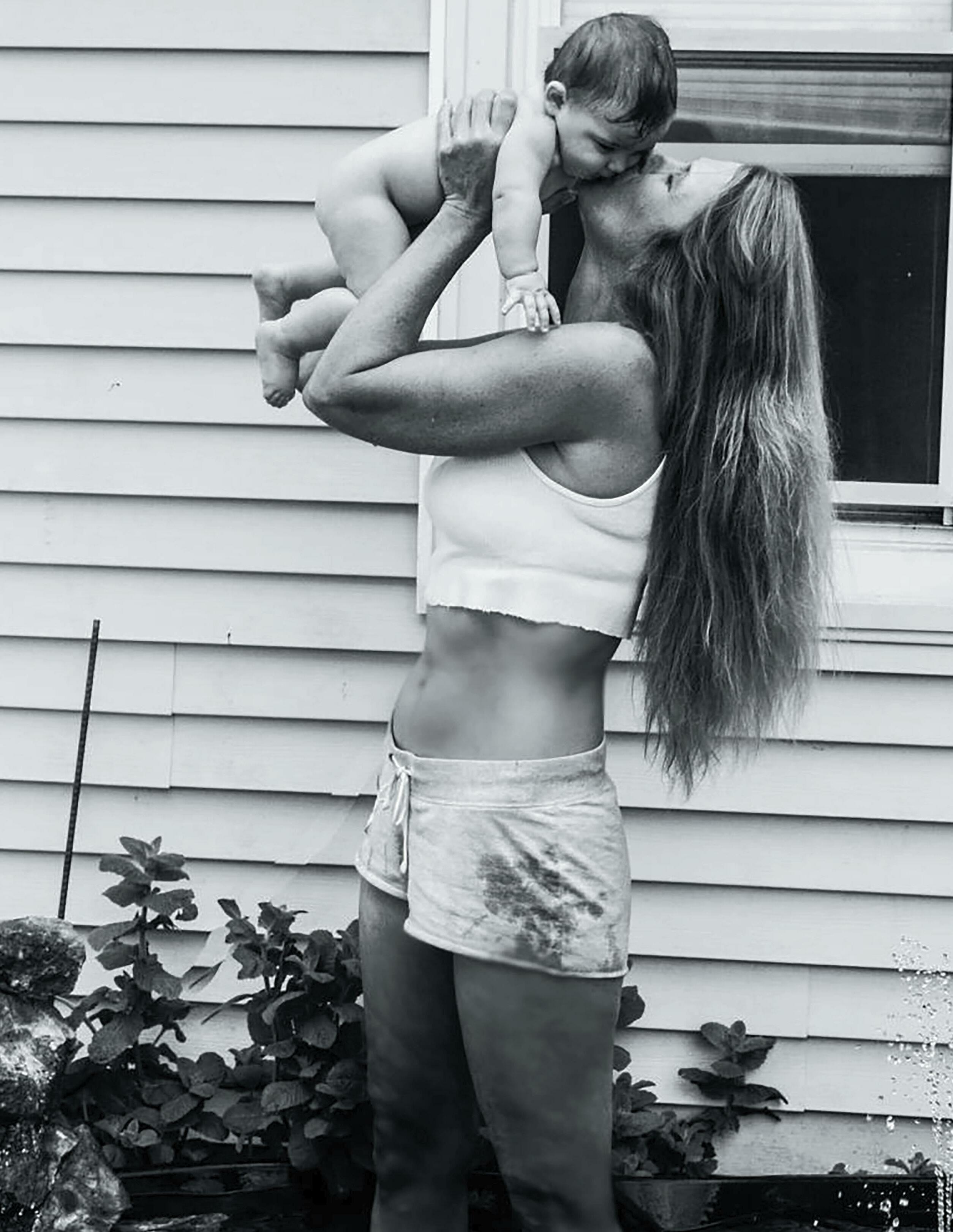
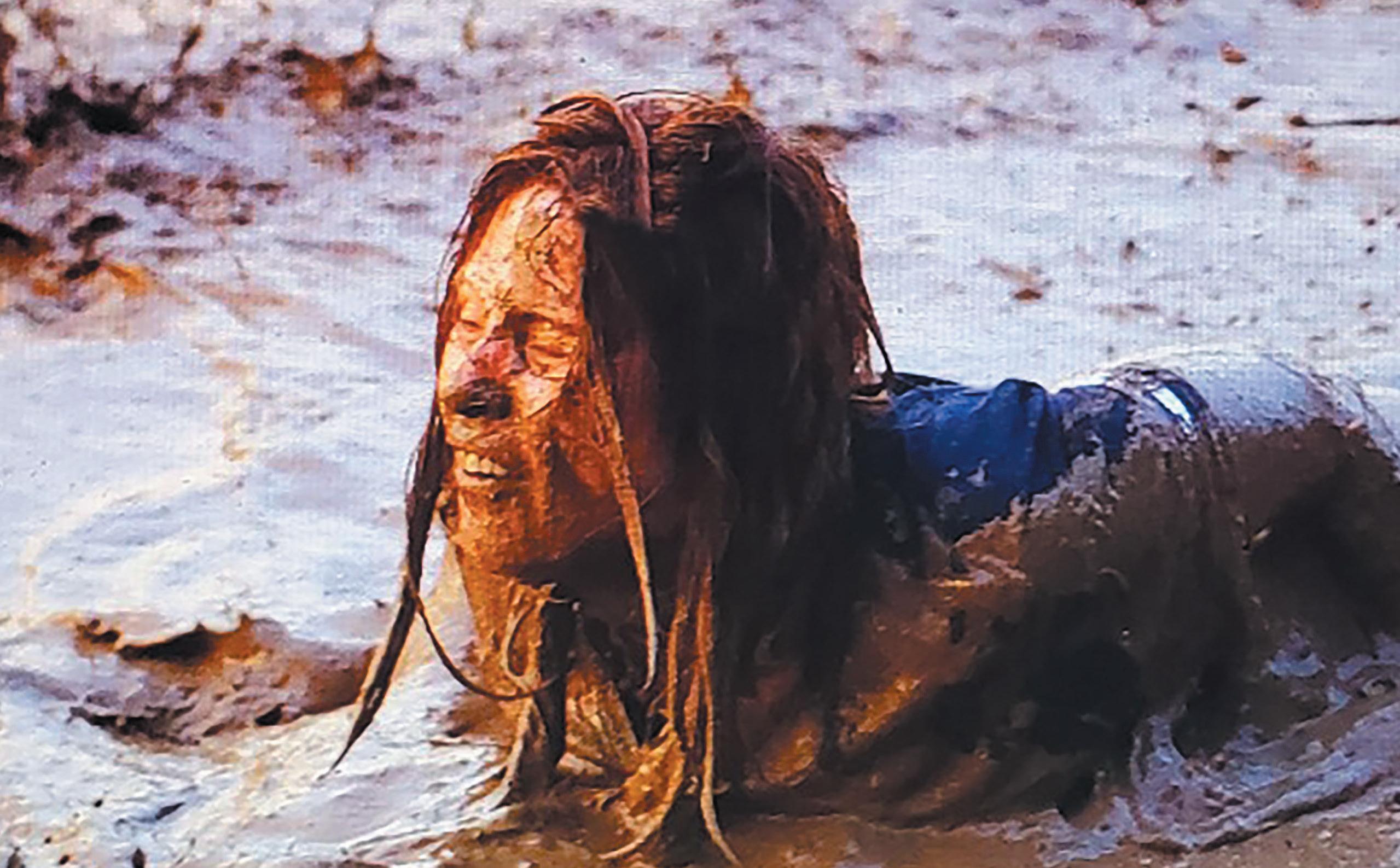
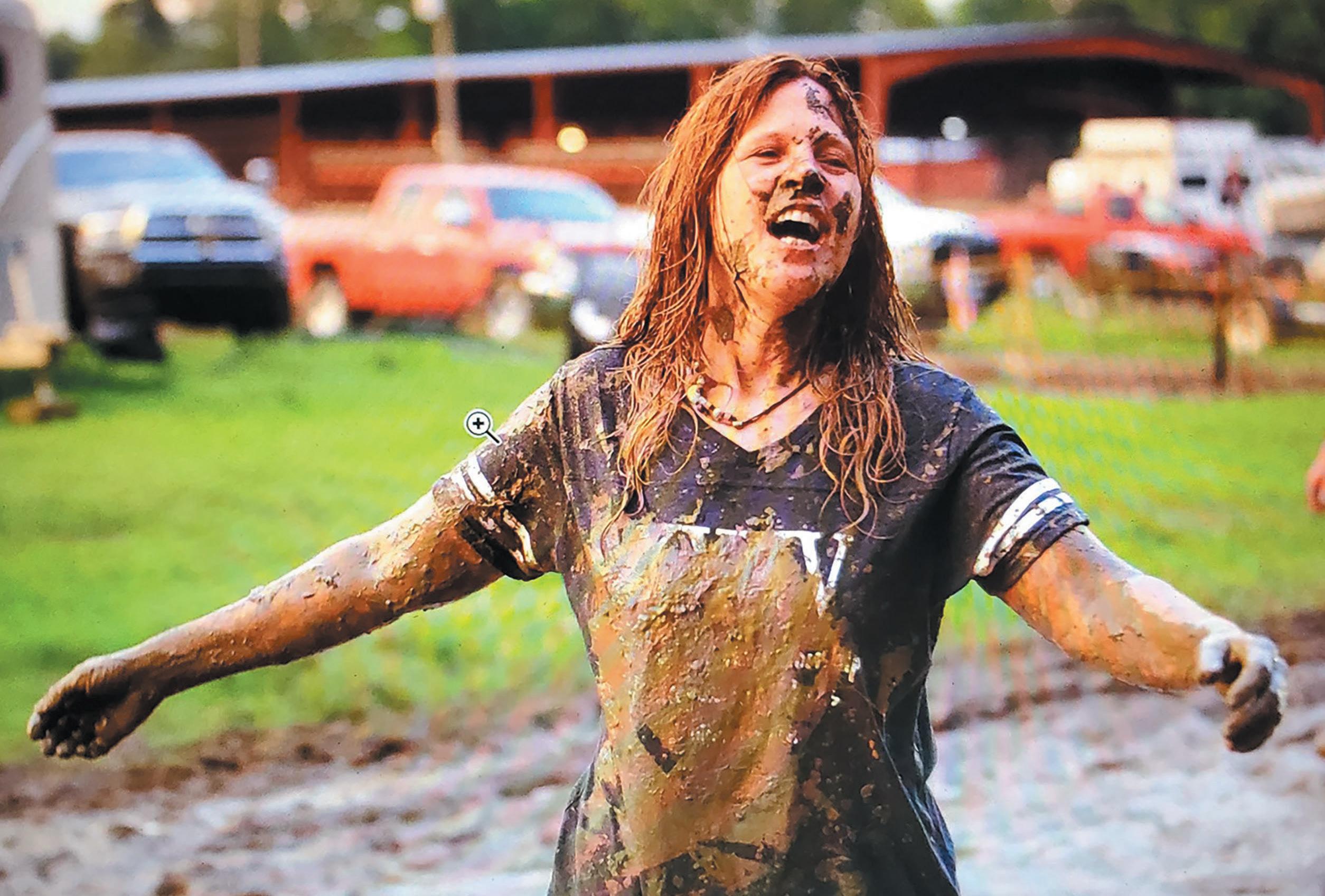
from the characters to the politicians, the animals that saved my sanity and gave me a sense of beauty and freedom, and people competing in events that they may not win the ribbon in, but they were winning at life by trying.
“The people who attend these events are not all cowboys. They are a cross-section of my experiences. I soon made it a point to always try and catch them living, not posing. A candid snapshot of two old friends may not seem like much until one of them passes. Or a father dancing with his toddler daughter; a mother thanking her small son for opening her door; horses thundering down the track willingly giving their heart for their two-legged teammates and the finish line.
She continued to pursue that dream of driving a big truck. It’s hard to be exactly sure how or precisely when she made it because in the dark of the nights we were together came stories between us of how important time is to our lives. She’s a dreamer and a realist, a fact gatherer and a believer in the spiritual soul
and in the wonder of lives. In spending time with her, I found a human being driven by compassion.
Yet she finally satisfied her dream to own and drive a Peterbilt semi truck. It could have something to do with her second husband, Hawk, but in all the storytelling I’m not sure. I know he taught her how to win at life by trying and to never be afraid of anything and that he has taken a celestial departure. And that’s all. For then she speaks of the father she loves who is a commercial fisherman. He is important to a life that has been jumbled and filled with unhappiness.
She is the mother of a daughter and two grandchildren she adores. She drops by their place once in a while to visit. Imagine their excitement when she does. After all, not every child’s grandma drives a Peterbilt.
Nowadays, after driving a seventy-hour week, she often has a photography session to work. “And it is daunting,” she admits. But in her words, she cannot give up “laying in the mud, so I can get the best shot or bent over, my butt in the air, one leg stretched
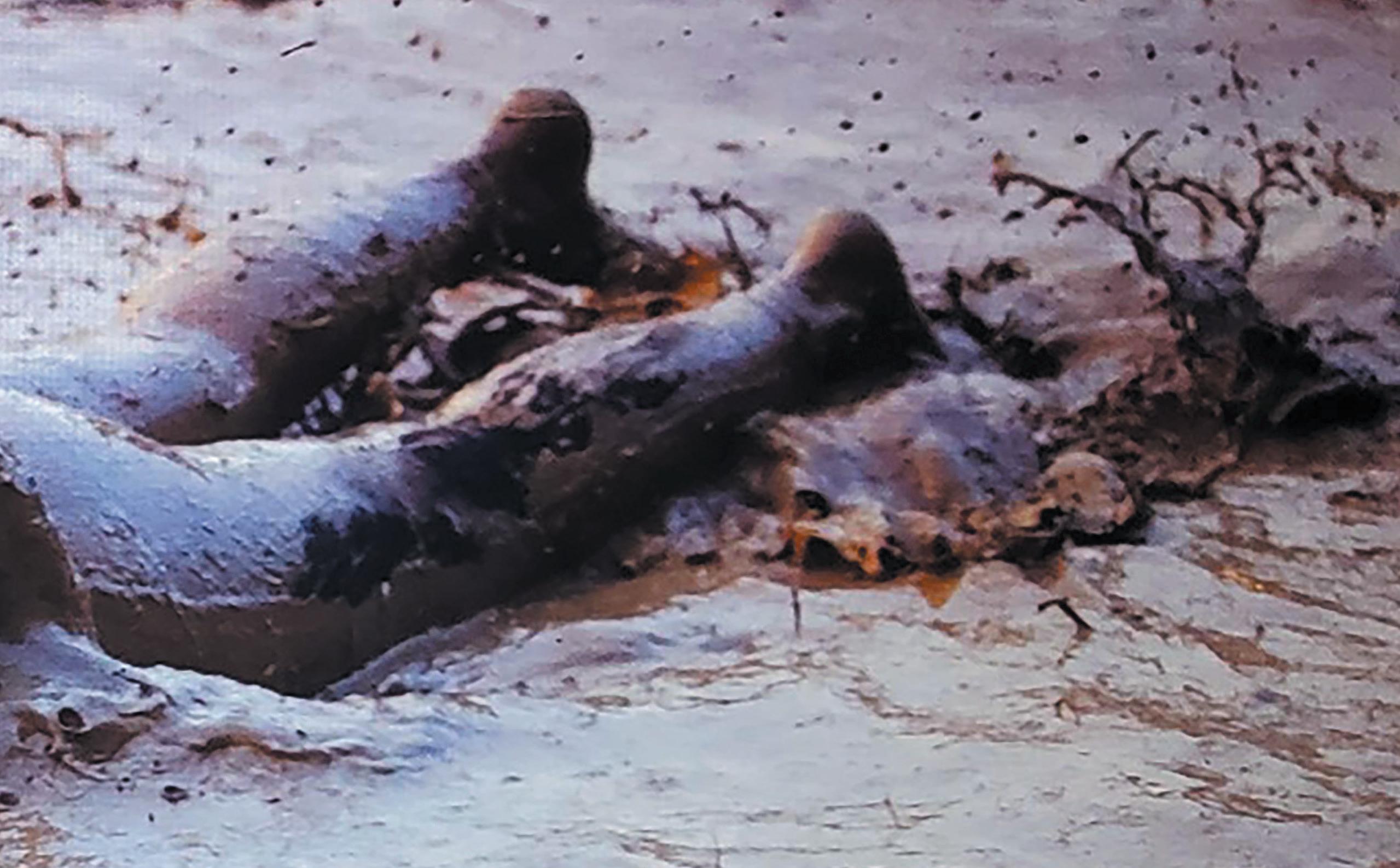
“I CAN GO PLACES NO ONE ELSE CAN. I SEE HOW PEOPLE LIVE AND THE BEAUTY OF THOSE LIVES. ”
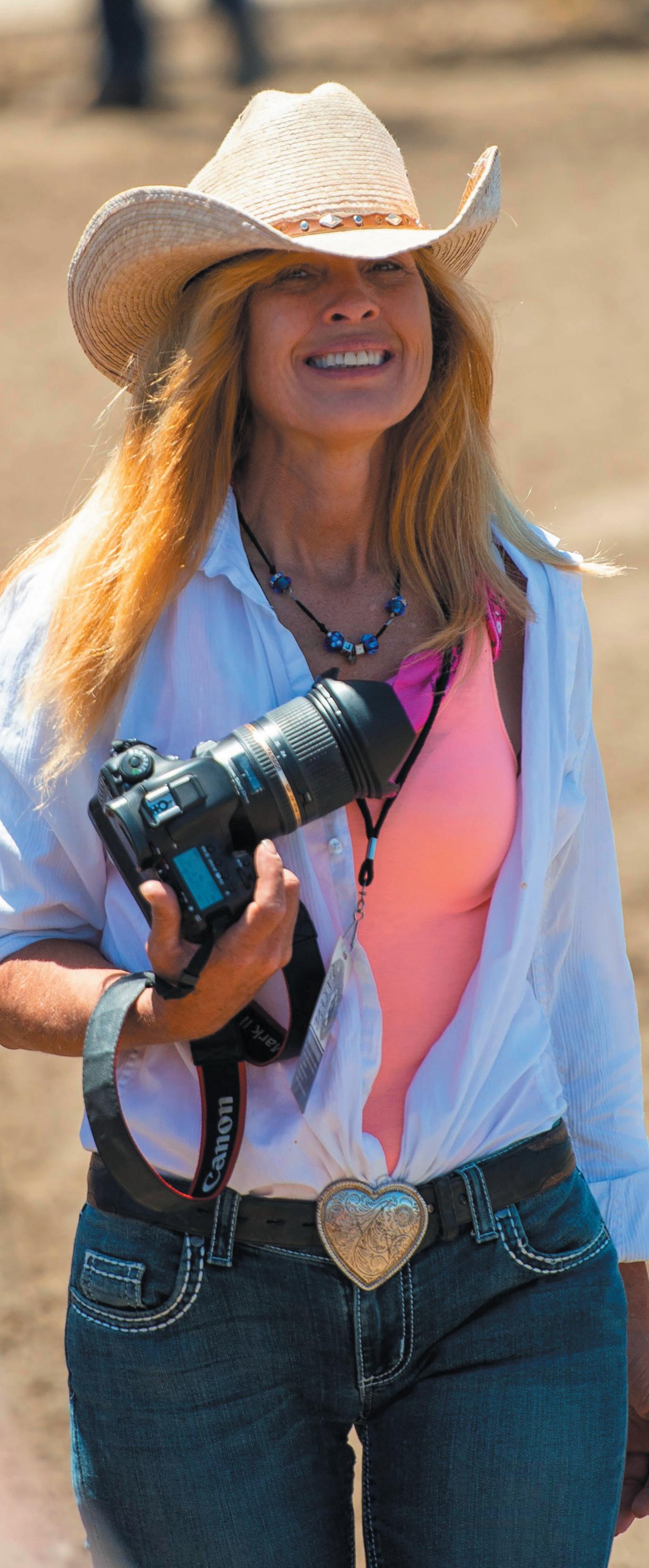
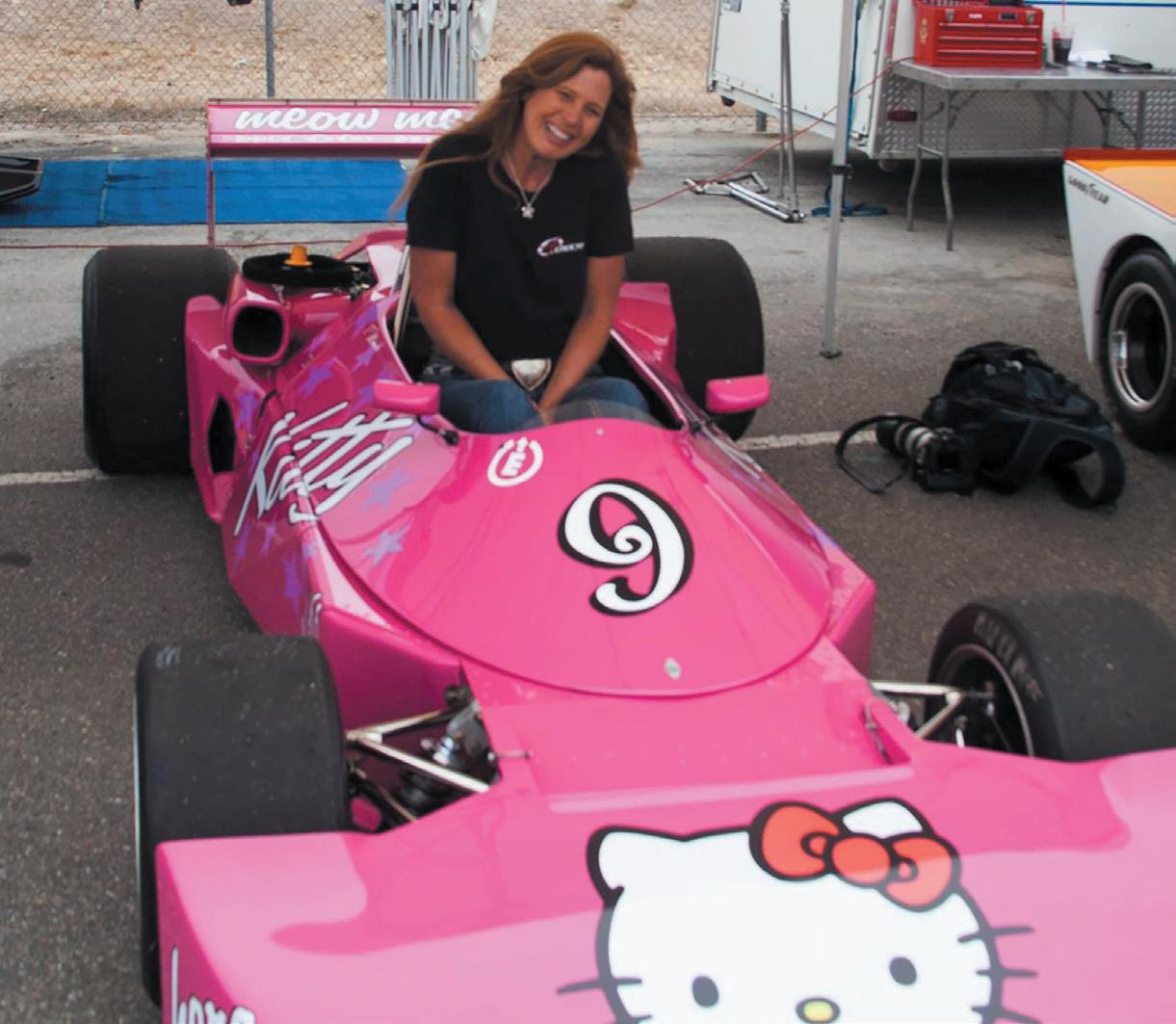


completely to the left, my right leg cocked at the knee ready to shoot me off the track and away from danger. I steady my breath, inhaling the event. The world goes quiet and click, I have stopped time, captured something that can never be repeated.”
But she admits, it’s not all joyous, this climbing in and out of one of those trucks. Once she fell from inside the cab during an ice storm— “cow shit on my boot from my last event”—knocking the back of her head on every step, then the concrete below. This injury haunts her to this day, causing physical reactions she has to fight. You’d never know it to be around her. All you see in this lovely woman is how she smiles in a particularly charming way or brushes back her long hair to get a better look at what she’s seeing through the camera lens. Or how she spends hours working on one photograph to please her subjects.
Today, Patty continues to drive that truck all over America, and she shares some of the sights she wishes we could all see through the lens of her camera. I ask her what it’s like to be a woman driving big rigs. “It’s pretty exciting, and men drivers are good to me.”
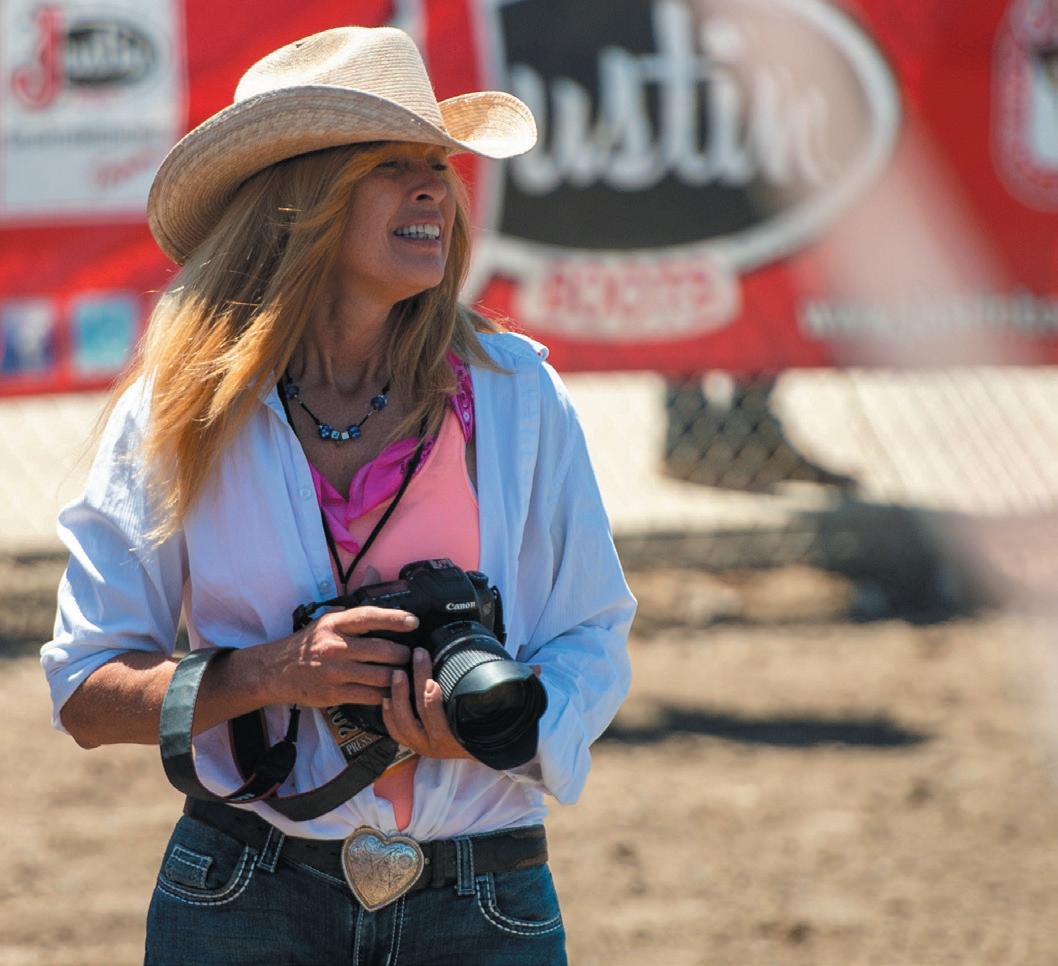
She grins into the joke, then turns serious. “I can go places no one else can. I see how people live and the beauty of those lives. They work in the fields and help feed all of us with what they do every day. They live in places other people should see but never get to. Their world is so beautiful, their lives so special.
Without them we would not eat like we do or have the kind of experiences we have.”
When she goes home, she sleeps in a camper because she’s rebuilding an old pole barn which will one day be her home. Around it stretches pastures, grazing acreage for her other love, her horses, which she misses riding today—but someday they will be a part of the time she can spend at home.
She sums up her life candidly. “Being an ugly duckling opened the eyes in my heart, trucking allowed me to use them, and by the grace of God, my stepdad’s generosity, my mother’s love of learning, and my father’s genetic predisposition of adventure, a camera has helped me find myself by finding the beauty in others by capturing their moments.
“I can’t afford to quit driving. The bills still need to be paid. Maybe someday I’ll be accomplished enough to take some time off to ride horses again. For now, they’re happy in the pasture. I’m getting ready to go on the road and looking forward to the next time I get to photograph one of your readers making memories. I am quite simply blessed.”
—VELDA BROTHERTON is an award-winning nonSaddle-
bag Dispatches Magazine. She lives on a mountainside in Winslow, Arkansas, where she writes every day and talks at length with her cat. Her next novel, Texas Lightning, penned with Dusty Richards, will be available in late 2022.


E AIN’T THE BEST lookin’ horse around,” Old Mike said. He gestured toward the sorrel gelding in the corral. “Hell, he ain’t even the second-best looking horse around. Tell you what, Jess, I’ll give you a deal. Thirty bucks and he’s yours. I’ll even throw in an old saddle I have, so you can ride out of here in style. If you can ride him. He’s got a fiery eye for a jughead, and he ain’t too shy to buck you from here to kingdom come. So, take it or leave it.”

It seemed like Old Mike was finished talking. He shifted a wad of tobacco in his cheek and peered at me out of the corner of his eye, then let loose with a stream of juice and cleared his throat.
I glanced over at the gelding.
Mike was right about the horse. His head was heavy and square, with no delicate features. Even his eyes looked windswept and tired. He had a drab sorrel coat, fringed by a mane that hung in wisps about his neck. A large white blaze began at his muzzle, then shot skyward like a lightning strike into his bony forehead. His tail was a beauty, though. It almost touched the ground and looked like flaxen swirls in the Sep-
tember breeze. The horse wore clods of dried dirt on his fetlocks and haunches. He hadn’t been curried in a long time. His hooves could use a good trim, too.
The sorrel’s back was straight, though, and there was a breadth to his chest that looked almost mighty, until he turned that massive head toward me and blew air through his nostrils. To say he was ugly would be a kindness.
“I’ll take him.” I heard myself say. Thirty dollars was a lot for a horse like this, but I figured he’d be a hard worker. If nothin’ else, he’d work out of gratitude, because I couldn’t imagine anybody else wanting him.
Mike nodded and ambled over to the barn. A few minutes later he came out with a saddle so worn I wondered if the cinch would last long enough for the ride home. I dug through my pocket and handed over thirty dollars, then took the saddle and set it over the fence railing. Hell, there wasn’t even a blanket to go under it. A frayed bridle draped over the horn. I picked it up and walked into the corral.
The gelding lowered his head and eyed me with suspicion. I couldn’t blame him. Here I was, just twen-
ty-two years old, trying to bust sod in the wilds of Nebraska. The horse probably figured I was not a man of substance, and he was right. Almost every penny I had went into buying a hundred acres in the middle of nowhere. It was my dream to work the land, live out here away from the cities where the air was clean, and eventually, attract a wife and start a family.
The horse stood patiently while I looped the bridle over his head. He took the bit without a head toss, his yellowed teeth fitting over the metal in a practiced manner.
I lifted the saddle over his back. Again, there was no roll of the eyes or swish of the tail. He allowed me to tighten the cinch and adjust the stirrups.
We walked out of the corral, and I tightened the cinch one more time. I put my foot in the stirrup, then swung my other leg over his back.
I barely hit the saddle, before I hit the ground. My leg bounced off a large rock and stung.
That old jughead bucked so hard the earth shook. Then he took off down the road like the Devil was after him, crow-hopping like a jubilant wind across the Nebraska plains.
Mike’s head worked its way around the barn door, then ducked back in. I swear I heard him chortle.
Afternoon was rolling in, and now, I had to spend the rest of the day searching for that damned horse. I started in the same direction Jughead flew a few minutes ago, my leg and my self-esteem bruised and angry.
I wasn’t too far down the road when I saw him grazing in an open meadow, tearing out sweet grass in energetic yanks and not paying attention to much else.
He was easy enough to capture. I was furious and walked right up to him in angry strides. I think somewhere in the back of his mind, he knew he’d gone too far. He turned his ponderous head toward me with disinterested eyes and let me grab the bridle under his jaw. I looped the reins over my arm, and we walked away. I wasn’t about to get back up on him yet. He was tricky, I figured, but once we got home and into my corral, I’d work with him and make it all right again. After that, he’d learn to pull the small plow I had in the barn. He might work best that way. Maybe someday I’d buy another horse for saddle ridin’, but for now he’d have to do.
It was a long walk home, and we wouldn’t get there until deep in darkness. The path across the plains was narrow. The breeze bent the prairie grass into undulating waves that danced in the mind’s eye.
Every once in a while, I stopped and let Jughead snatch at his dinner, his tail twitching in a rhythmic way as he ate. Tired, I longed to mount up and ride home, but I remembered how quickly he’d bucked me off and didn’t want to spend more time chasing him past the setting sun. There were about four hours of daylight left, and hopefully we’d make good time walking.
There was a movement out of the corner of my eye. I figured it was the wind again, but this seemed deeper, richer, as though it was an extra layer beneath the sky and horizon.
I stopped and peered out across the prairie to a solitary tree standing in a field in the distance. Then I saw movement again. This time, there was no mistaking it. Something was crawling through the grass, weaving in and out of the afternoon sunlight.
Squinting my eyes, I barely had enough time to figure out it was a person when three Indians popped up over a hill as though they had been hovering nearby like hummingbirds. There they were, bearing down at a fast pace.
I knew right away they were Lakota. There was nothing welcoming about them at all. They thundered toward us, raising their spears and whooping.
Jughead surveyed the scene with interest. He even raised his muzzle and nickered, as though he wanted to get acquainted.
There was no time to figure out what I needed to do. I just slapped myself in the saddle and drove my spurs deep into his sides. Jughead took off like a bat out of hell but straight toward the hostiles at a speed that belied the looks of him.
Then he came to a sliding halt as though he realized he’d made a mistake. He blew out heavy through his nostrils and heaved his chest, then pivoted so fast I almost lost my seat.
We took off in the opposite direction, but the Indians were closer now, shrieking like a coyote might when calling the moon in for the night. I hunched over Jughead’s neck, shoulders raised, bracing for an arrow
in my back. One flew by like an angry hornet, and Jughead put a bit more speed in his step. I hung on like a burr and prayed there were no prairie dog holes in the meadow because then there’d be no help for us at all.

Panicking, I felt for my old pistol digging into my belly, the holster rising with the bile in my throat as we galloped. I had some bullets but not enough to fend off the braves. They sensed victory, their cries more jubilant as they rode closer. Then, with the lackluster performance of a loser who gives up, Jughead slowed beneath me. I raked him again and again with my spurs, but he only snorted and shook his head, slowing to an easy lope.
We were headin’ straight toward a river. It looked like a thick brown snake cutting through the prairie, the steep bank a good twenty feet high. It might mean certain death to try to reach the river, but why not take a chance tumbling down the cliff instead of being scalped. Maybe we could make it, but it was doubtful. I tapped my spurs and leaned back to take my weight off his shoulders.
Jughead gathered his powerful haunches, but instead of scrambling down the bank, he simply decided to fly. For a second, it was like nothing I had ever felt before. Man and horse, poised in the air like some sort of god who came down from the stars, just to dance around a little with gravity.
Then we hit the water so hard my head snapped back, and I bit through my tongue. I kept my seat, even though the river covered all but Jughead’s neck, and polished the saddle until it was like riding a slick fish. Frantic, I grabbed the horn as the swirling eddies washed us downstream. Old Jughead tried to swim, his hooves touching a wayward boulder from time to time, then veering off and going back into the frothing current.
I dared to look behind. The Indians were picking their way down the steep incline, and I smirked. At least we hadn’t been as dainty as they were. Their ponies snorted and stumbled. A small avalanche of rocks and dirt tumbled into the water. The Lakota turned and rode back up to solid ground.
I breathed a sigh of relief. They gave up. I even let out a little war whoop myself. Only, at second glance, I saw they weren’t quitting yet. They raced along the
top of the cliff and loosed a hail of arrows at us like we were ducks in a pond. Jughead veered sideways and snorted. An arrow lodged itself in his side. Blood poured out in a thick stream. He tossed his head and swallowed some of the river.
Just then, the cinch broke. It slapped upwards and hit me in the cheek. The saddle slowly turned sideways, driving me halfway into the water. I had enough wits about me to free my feet from the stirrups just as it floated right out from under me and into our wake.
I slid off right behind it. The water was so cold I thought it might stop my heart. Grasping, I caught the end of Jughead’s tail and hung on for dear life. Now, arrows were flying all around us.
Jughead turned toward the opposite shore and swam out of the current. His mighty chest bellowed, and his legs pumped like pistons on an engine. His hooves touched the sandy bottom below, and he shot straight out of the water, dragging me like a bag of flour. Then he shook me off, climbed the bank and ran away, leaving me alone among the rocks and logs that littered the wet ground.
I hauled myself up the cliff, grasping at roots and shrubs, using my last bit of strength to scale the muddy bank and onto a ledge of grass. I crouched behind a bush and looked across the water.
The Indians stopped on the other side of the river, talking with each other. Then they nudged their ponies down the bank and plunged into the water.
Their horses had other ideas. Shocked by the coldness and the swirling eddies, they lost their footing and bobbed in the rushing current in no direction. But, just like Jughead, they found footing on a shallow bar, and turned toward me.
I had to run. My sodden boots were heavy as anvils. The wind blew through my soaked clothes, lifting my tattered shirt as though it wanted to fly. It wouldn’t be long before they’d catch up to me. I figured all I could do was try to find a little shelter and stand my ground.
Reaching down, my hand slid along an empty holster. The pistol had fallen out into the river. All I had now was a knife strapped around my thigh in a leather pouch. I knew if the Indians got close enough
for that type of combat, I’d lose my life in the space between ragged breaths.
Just then, old Jughead came galloping back, his square head bobbing up and down with each thundering hoof beat. His massive chest expanded as he let out a boisterous whinny–as though he wanted to make sure the Lakota knew exactly where we were.
Jughead halted in a cloud of dust and turned sideways between the Indians and me, heaving. The arrow was still poking out of his side. Blood dripped and pooled onto the ground.
He took another arrow, then another, into his hide, flinching and snorting as he stood there.
Gasping, I used the last of my energy to pull myself up on to his bare back. He took off like a shot. Jughead galloped low to the ground, his head level with his shoulders. There was little to hold on to but his mane, and I dug into his neck like a tick.
An arrow struck my rib. I have to tell you, I didn’t even feel the pain, I was so filled with fear.
Then, like a waking nightmare, Jughead pivoted and ran straight toward them again. We got close enough to see the paint on their faces, then he turned so fast I barely held on and ran parallel to the river.
I didn’t have time to say a prayer when he flew off the cliff and back into the water. This time when we landed, he let out a huff, then started swimming like demons were after him, and they were. We reached the opposite shore and Jughead lurched back up the bank. His labored breathing echoed in the wind like a prairie storm cutting across the fields.
The Indians shook their spears at us but didn’t bother to cross again.
I couldn’t breathe. There was no relief, I feared. We might run right into another pack of those Lakota, and then all this effort would be for nothing.
After a mile or two, Jughead found the trail, and we trotted down the path as slow as going to church. I looked over my shoulder, and there was nothing behind us but the wind.
He hung his massive head and breathed in great gulps. I peered around, then slid off. Three arrows pierced his hide. The one in his side was deeply embedded. It had likely stabbed his guts. I didn’t want to hurt him further, trying to dig it out. I plucked the
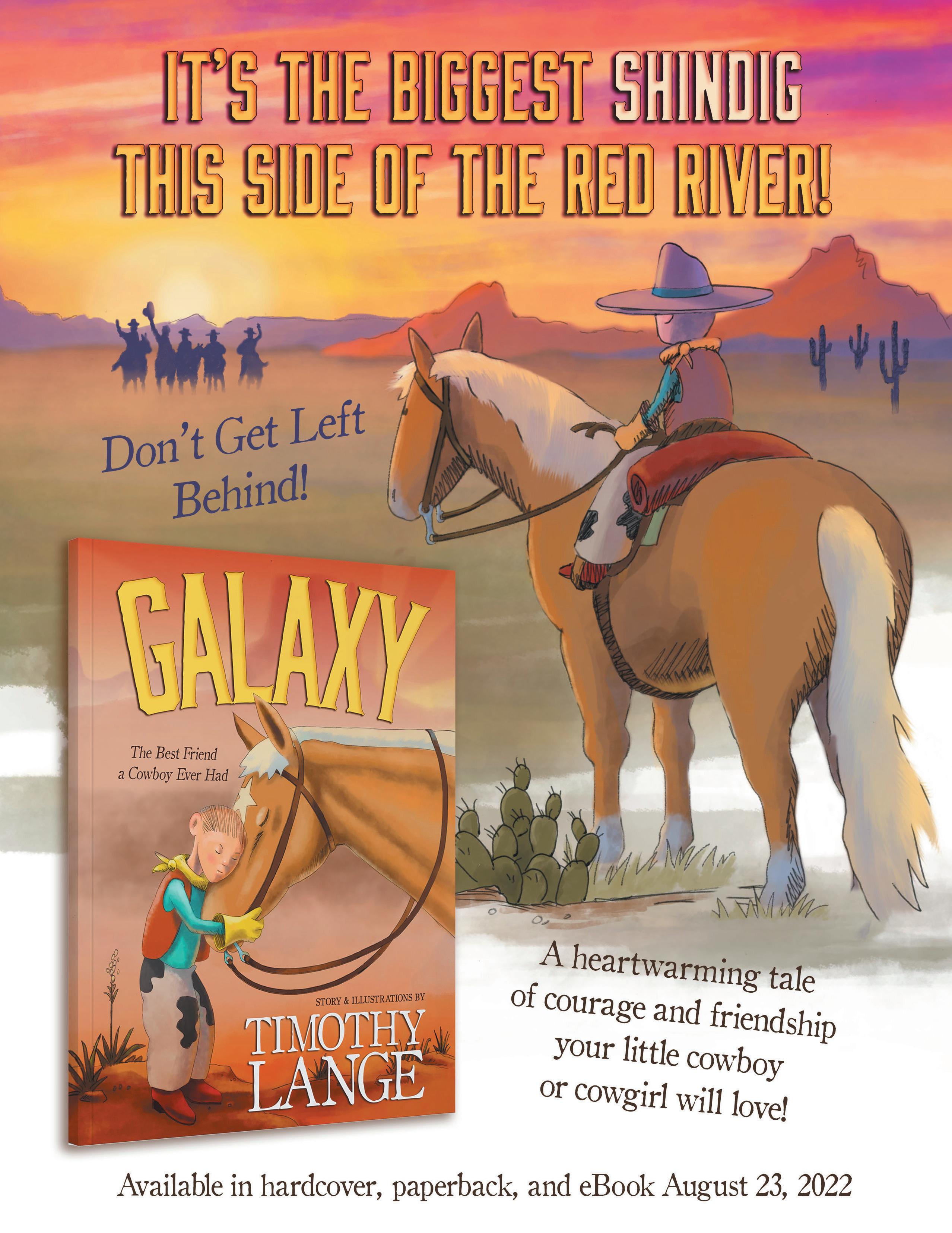
other two out of Jughead, then tried to reach the one in my rib. After a painful pull, it came out in my hand, and I tossed it on the ground. A moment later, I was bent over with searing pain as blood ran down my side and into my pants.
Jughead seemed to sense we were out of danger. He lowered his muzzle to my neck, and the warmth of his breath was oddly comforting.
Night fell, and still we plodded through the prairie, wondering if those damned Lakota were hiding behind each tree or knoll. But the only sounds I heard were a few coyotes on a plateau, calling for their mates. Stars lit the sky so bright I could see Jughead’s face clear as day.
Trembling, I reached out and rubbed his neck. The horse saved my life. Here I was, a young man who came out west from Ohio to carve out a life. So far, Nebraska hadn’t treated me the way I’d hoped. Guess I never figured the land might try to shake me off it. I missed my family back home. I missed the warmth
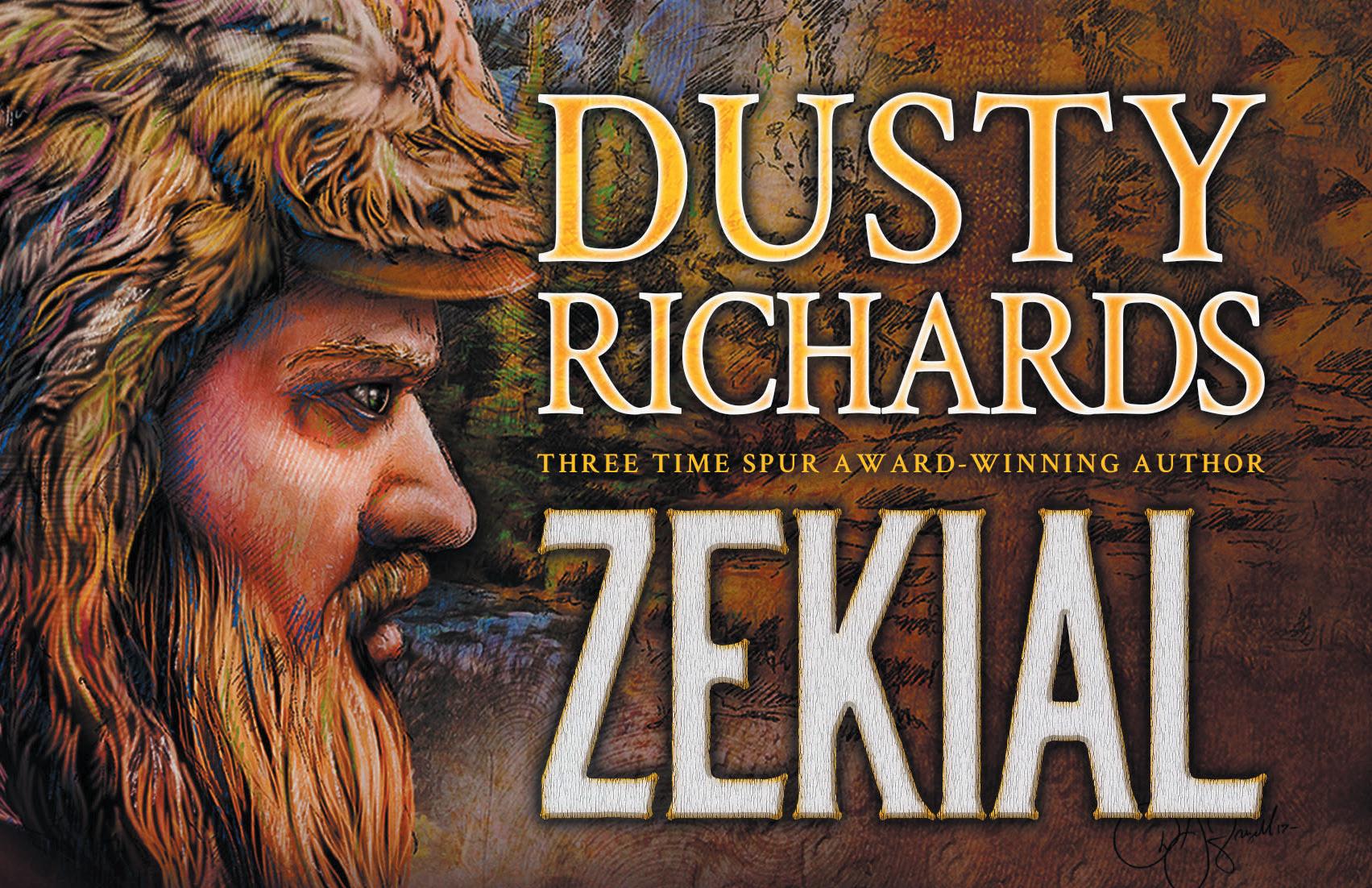
of friendship and the delicate touch of a woman. Out here on the prairie, a person could go mad listening to the sound of their own silence and the rustling in the grass. Sometimes the sky overhead looked so vast and the prairie so wide, I wondered if I might get swallowed up into the hungry ground itself and never be heard from again.
Ahead in the darkness was a deeper shadow. I knew it was a cottonwood tree on my property, steadfast in the night, to welcome us home from certain death.
Jughead faltered and snorted next to me. He turned his great, square face into mine, and I swear he looked right into my soul as he went down like thunder. Blood trickled out of his nose. He lay on his side, ribs heaving in pain, and let out a sigh.
I didn’t have my pistol. There were no bullets to put him out of his misery. Crying, I sat down in the middle of the dirt and put his heavy head on my lap and stroked his poor neck.
I would not, could not, leave him behind. I’d stay
here in the darkness and see him through. I guess the part of me that was still young and hopeful thought maybe he’d feel better, and we’d walk the rest of the way home at dawn.
Somehow, I fell asleep. I woke with my hands gripping his mane. The sun was cracking over the horizon, drifting across the fields, lighting up the plains, and peering through the leaves in a stand of trees.
I turned to Jughead.
He was gone.
Sitting in the dust with his body, still warm, I felt about as lonely as a man could feel.
There was nothing I could do but straighten up and leave him. The walk over the hill and down to my old sod shack didn’t take long.
Each step took me away from my dreams. I was grateful the Lakota didn’t get me that day. I owed it all to Jughead.
I rested up for a day or two, then packed my things and headed back down the path toward town. There was just enough money left to buy a train ticket home. Turning back, I saw that the harsh Nebraska wind had already nudged the door open to my hut, dust and prairie grass crossing the threshold like squatters.
I passed Jughead’s body. Two vultures circled the sky above him. That horse sacrificed everything for me. Now, he’d feed the birds and the coyotes, his parting gift on his way to eternity.
His wispy mane rustled in the breeze, like a living thing that hadn’t yet figured out it had died. I bent down and tugged the arrow out of his side, so he could enter heaven, or wherever horses go, in dignity, then broke it in two with my bare hands.
Taking out my knife, I cut a handful of hair from his tail, tucked it in my pocket, set my sights toward town, and started walking.
SHARON FRAME GAY lives in Washington State with her little dog, Henry Goodheart. She grew up a child of the highway, playing by the side of the road, and spent a lot of those years in Montana, Arizona, Nevada, North Dakota, and Oregon. Interested in everything Western, and in horses in particular, she bought her first horse when she was twelve.
Although she is a multi-genre author, she has a special fondness for writing Westerns. Her Westerns can be found on Fiction On The Web, Rope And Wire, Frontier Tales, Typehouse Magazine, and will soon be appearing with Five Star Publishing in an upcoming Western anthology. She is also published in many anthologies and literary magazines, including Chicken Soup For The Soul, Crannog Magazine, Lowestoft Chronicle, Thrice Fiction, Literally Stories, Literary Orphans, Adelaide, Scarlet Leaf Review, Indiana Voice Journal, and others. She has won awards at The Writing District, Owl Hollow Press, Women on Writing, and has been nominated twice for the Pushcart Prize.
aYou can find more of her work on Amazon, or as "Sharon Frame Gay-Writer" on Facebook, and Twitter @sharonframegay.

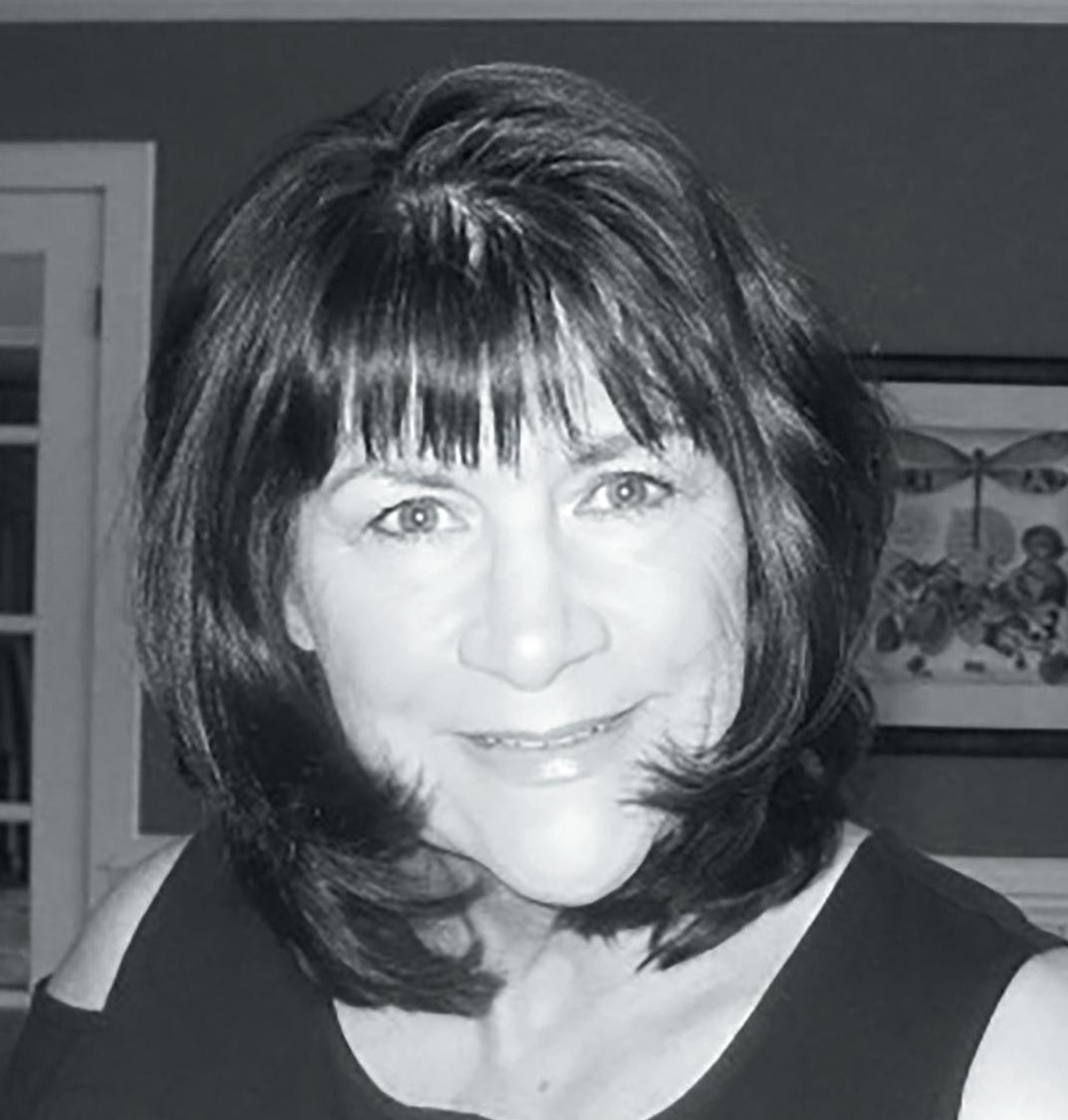

ONE EVENING IN THE Season of Large Leaves (July), I sat with my father, Geronimo, at the edge of his house’s breezeway in his village on the Fort Sill prisoner of war reservation. I worked on a piece of beadwork as we watched the sun disappear in a golden glow behind the gentle swings and sways of the prairie’s horizon. Father, a diyen (shaman) of great supernatural power, was quiet and still, studying everything from the mountains on the horizon to the horses and mules nipping at each other in the corral. We were content listening to the calls of the googés (whippoorwills) and the insects and peepers in the brush by Cache Creek. As I strung and sewed the beads in place, I thought about how and when I should tell Father that Fred Godeley had asked me to marry him and that I wanted this fine man. I knew Father would surely approve.
Boards creaked in the breezeway behind us. I looked over my shoulder and smiled to see Ramona, my uncle Daklugie’s wife, in the setting sun’s glow. More than an aunt, Ramona was my best friend and advisor.
My father said, “Ho, Ramona. I see you. Come sit with us and enjoy listening to the night.”
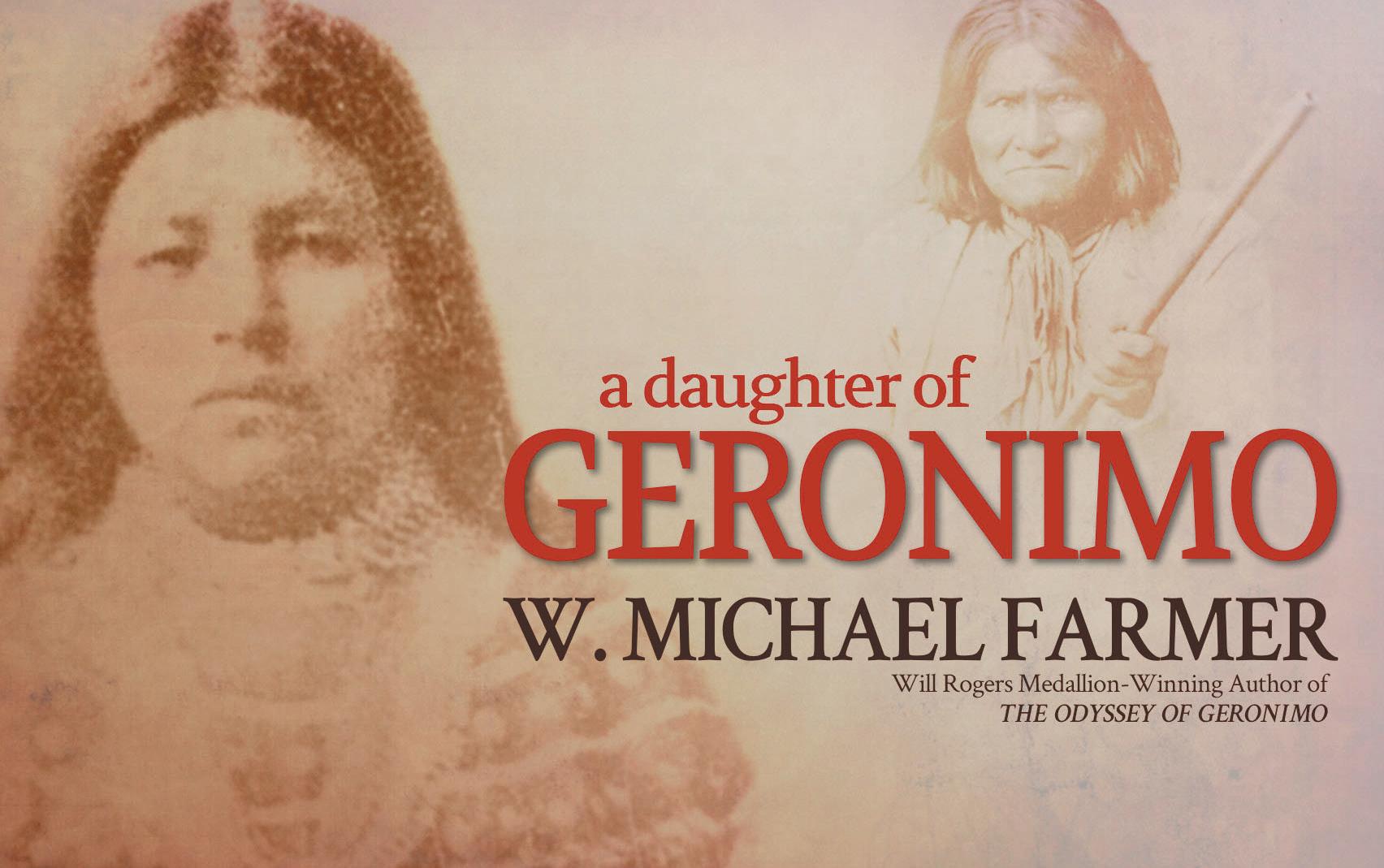
“Ho, Grandfather. I can’t stay long. Daklugie wants to sleep, and the children still play around the house. I have good news for you.”
“Hi yi! I always like good news. Tell me!”
“During your last trip, Eva’s womanhood came. Now, we must do her womanhood ceremony, and I’ve heard you say that you planned to have a big feast with much singing and dancing to celebrate it. Have my ears heard you correctly?”
He turned and looked at me as I sat watching the falling darkness unable to repress a hint of a smile. I saw the flicker of a frown cross his face before he laughed and said, “Yes, Ramona, you have good ears, and, Daughter, I’m very glad for you. At long last, you’re a woman. We’ll have a great feast with all our friends to dance and sing with us. Ramona, since her mother has left us for the Happy Land, will you serve as Eva’s attendant? How long before we can hold the womanhood ceremony? What do you need me to do? It must be one the People remember.”
Ramona laughed and held up her hands to stop his questions. “Yes, Grandfather, my sister Emily and I will be her attendants and guides. We’ve already talk-
ed about when we should hold the ceremony. Eva’s mother had started working on her ceremony gown before she left us, and we worked more on it while you were away at Great Father Roosevelt’s parade and the 101 Ranch. There’s much to prepare. I think, if you approve, the ceremony and festivities could begin on the second full moon from now.”
Father looked at me and smiled. I remembered our days at Mount Vernon in Alabama and how he used to pull me bouncing and giggling around the camp in a little red express wagon and let me buy anything I wanted in the trader’s store filled with delicious smells of cured meat, cheese, fresh bread, sweet candy canes and chocolates, red and black blankets, and tools of all kinds. No one could have been a better father. He blessed me often now for all the hard work I had done helping my mother, Zi-yeh, before she had ridden the ghost pony, and he told me every day what a help I was to him.
Father said, “We’ll have the best of socials and dances to celebrate this great time.” He spread his arms wide. “Invite all the Apache. We have much work to do. Buy what you need, and I’ll pay.”
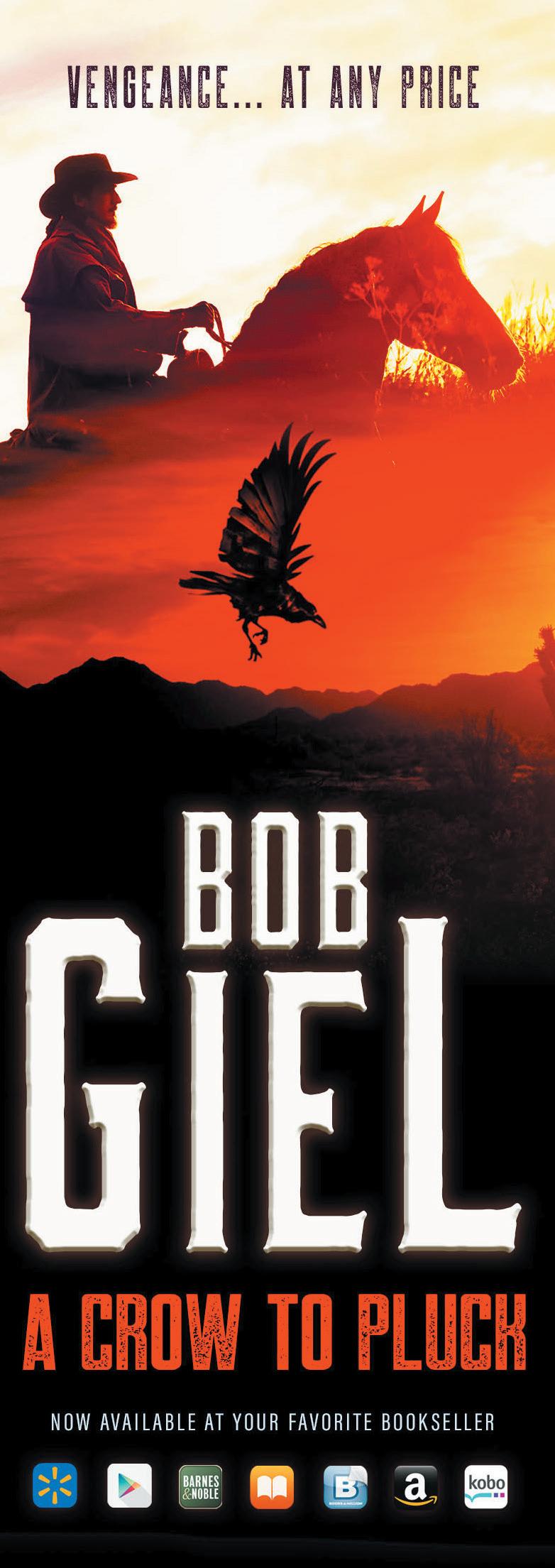
Smiling, I said, “Thank you, Father. You make me happy that I’m your daughter.”
Ramona said, “Enjuh! (Good!) This ceremony, feast, and social dancing will make a good time for all, Grandfather.”
THE NEXT DAY, FATHER spoke with Naiche, long time chief of the Chokonen Chiricahua, about the festivities. Near Naiche’s village, they picked out a level place on the south side of Medicine Bluff Creek where the grass could be cut close in a big circle. Naiche agreed to lead the singing. Father would lead the dancing with the di-yens who conducted the ceremony.
Planning and organizing picked up speed like a runaway wagon. Father told the other eleven village chiefs to tell their People they were invited. Soon, anticipation and excitement for the four days of ceremony, feasting, and dancing hummed through the village. Women from every Apache village planned to help with cooking for the feasts. The ceremony
would begin the night of the first full moon in the time the White Eyes called 13 September 1905. Father also invited his good friend, the great Comanche chief, Quanah Parker, and all our other Comanche and Kiowa friends. He even asked the White Eye, Barrett, who later that fall would write Father’s life story as he told it and my uncle Daklugie interpreted it in the White Eye tongue.
Ramona’s sister, Emily, was near my age and had married a few months before we began planning my social. Father decided to have family photographs made before the ceremony so we could all remember when his youngest daughter became a woman. George Wratten, our official interpreter, who ran the supply store for the Chiricahua, arranged for a photographer in Oklahoma City to come to Fort Sill. I was very happy with the thought that one day I could show my children a picture of their grandfather and me, taken before I’d married. The photograph Father wanted with Ramona, Emily, and me was not made because Ramona had a sick child and could not leave her. Father had the picture made as he sat in a chair with Emily and me standing beside him. We looked and felt like princesses standing beside a king on his throne.
I had a fine womanhood ceremony with Ramona and Emily guiding me in what I should do and how I should act during the celebration. Great signs of Power from Ussen, our Apache creator god, passed from me to the People. For four nights, the four masked Crown Dancers painted in green and yellow and two clowns in white paint danced in the blazing yellow and orange firelight before the People danced and had a fine feast. I was very happy.
On the fourth night, after the ceremony finished, I was considered a marriageable woman. As the moon rose, we all joined hands around a big fire in the center of the field and danced in a circle with the four masked dancers circling the fire. Then there were dances of a circle within a circle, and as the fire died down, the men made their circle into wheel spokes that ran out from the fire to the outer circle of women. Sometimes the spokes moved with the circle, sometimes against it, sometimes the same speed, sometimes slower, depending on the songs that were sung.
As the moon reached the top of its arc and began
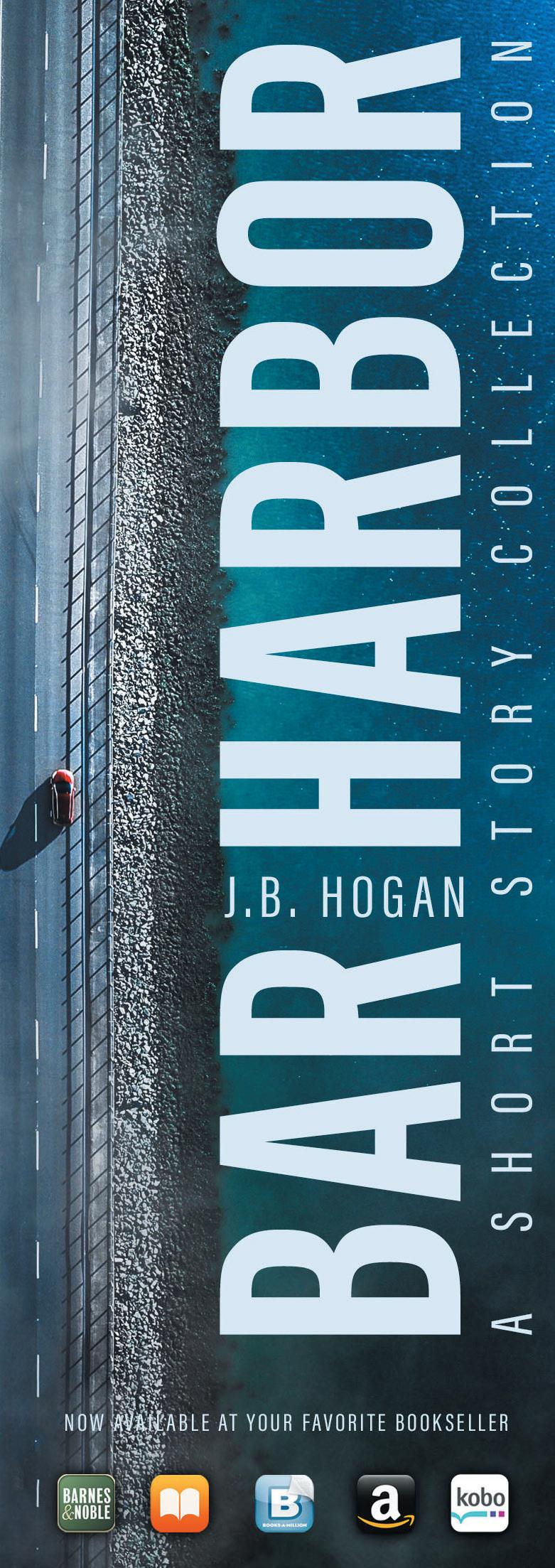
falling in the southwest, baskets of food were laid in a line out from the ceremonial place, and we all ate while the masked dancers completed their dances. When the dance began again, the old ones left the dance to the young people to begin the lovers’ dance. The drums stopped, and what the White Eyes called the music started. Apaches use no such word as It’s just a flute the young men learn to play to court their women. It has many voices and can be made to sound soft and slow or played very hard and fast. This night several were played together in good harmony, and there were also two Apache fiddles to add their voices. Our fiddle is made from a piece of dry yucca stalk. A string of horsetail hair is stretched over it and passed across a specially shaped sound hole. The instrument is played with a horsetail hair bow. As the fiddles and flutes played, they made a dreamy sound that caressed the hearts of us all as the young men made a circle around the fire and the girls made an outer circle. One after another, the girls danced to the inner circle and picked a young man to dance with as they formed the spokes of a wheel, doing two steps forward and one back while the couples held hands and looked at each other.
Since the dance was in honor of my new womanhood, I was the first to dance to the circle of young men waiting in the flickering orange and yellow light. With my heart pounding, I danced around their circle four times, as custom required, and then stopped at Fred and tapped him on his shoulder. When he turned to me, his smile was brighter than the morning sun on the high mountains. He was taller than most young men his age, and he had big hands and a strong face with high cheek bones. We had known each other since we were children, and as I watched him grow to manhood, so did my desire to be his woman. One day, we “happened” to be walking together to the mission school when he blurted out that he had often wanted to ride past our house in hopes of seeing me. He said he didn’t ride by my house because his family was poor and could not afford a good bride gift for my father. Hearing this, I felt joy I had never known. I told Fred not to act like the others who wanted to court me. They thought they might impress Father if they rode by our house in their church clothes and
craned their necks looking for me from their fine ponies to show off their families’ wealth. I knew Father would respect a man who wanted to work hard to support our family rather than a boy who looked for attention. Now, dancing with Fred, I was telling the People and Father who I wanted for my man.
As the sun rose, the dancing stopped, and there was a final meal as the young men gave presents to the girls they had danced with and a few announced they were ready to marry. I stood with Fred, my head bowed, smiling and knowing that soon he would ask Father for me and offer him the best bride gift he could. The gift he gave me for dancing with him was a blue shawl covered in woven white flowers. It was beautiful and warm, and I was very proud of it. I had no doubt that Fred Godeley would make the best of husbands.
Fred and I decided to wait two or three more years until we finished training school at Chilocco before marrying. Two seasons after my womanhood ceremony Father married again in the Season of the Ghost Face (January). I helped him and his new wife, Sousche, at his house after I finished my day at the mission school. Fred had not yet spoken with my father and was worried Father would want more for an appropriate bride gift than he and his family could afford. I told him my father knew he was a good man. The bride gift need not be grand.
In the Season of Little Eagles (March), I walked home from the mission school late one afternoon along burbling Medicine Creek. Meadow larks sounded their calls of joy in the deep prairie grass fast turning green, and the sun painted distant clouds in soul-filling colors. As I approached our village, I saw Father sitting on the edge of his house breezeway wrapped in his blanket, staring into the distant cloud colors over the land of his birth. I knew he must be wishing, as he had told me many times, that he had not stopped fighting the White Eyes. I also knew he wished he had some good White Eye whiskey to warm his insides.
I came to the breezeway and looked around but saw no sign of my stepmother or even lanterns lighted inside the house. This was strange.
“Father, where is Sousche?”
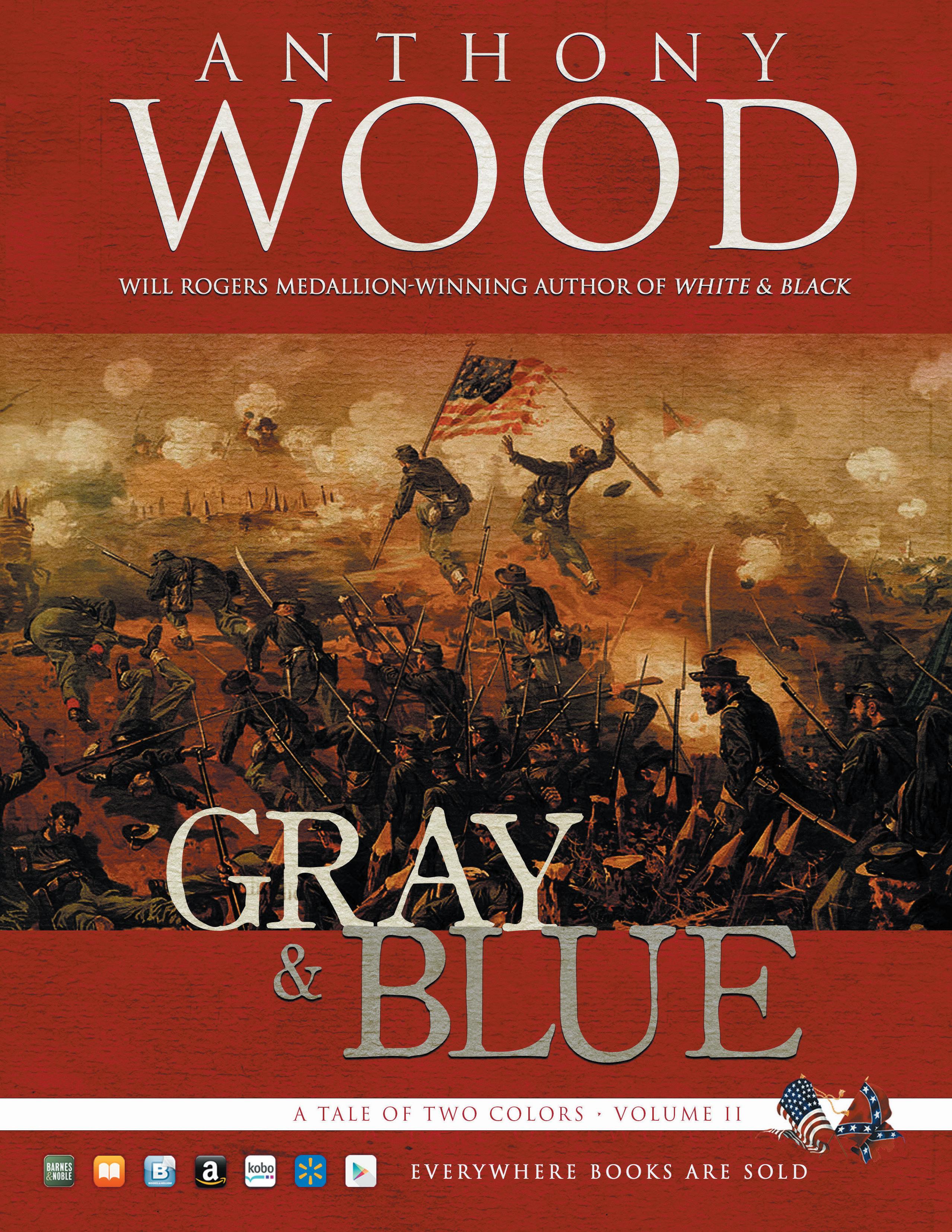
“Gone. I sent her home. She has no place with us anymore.”
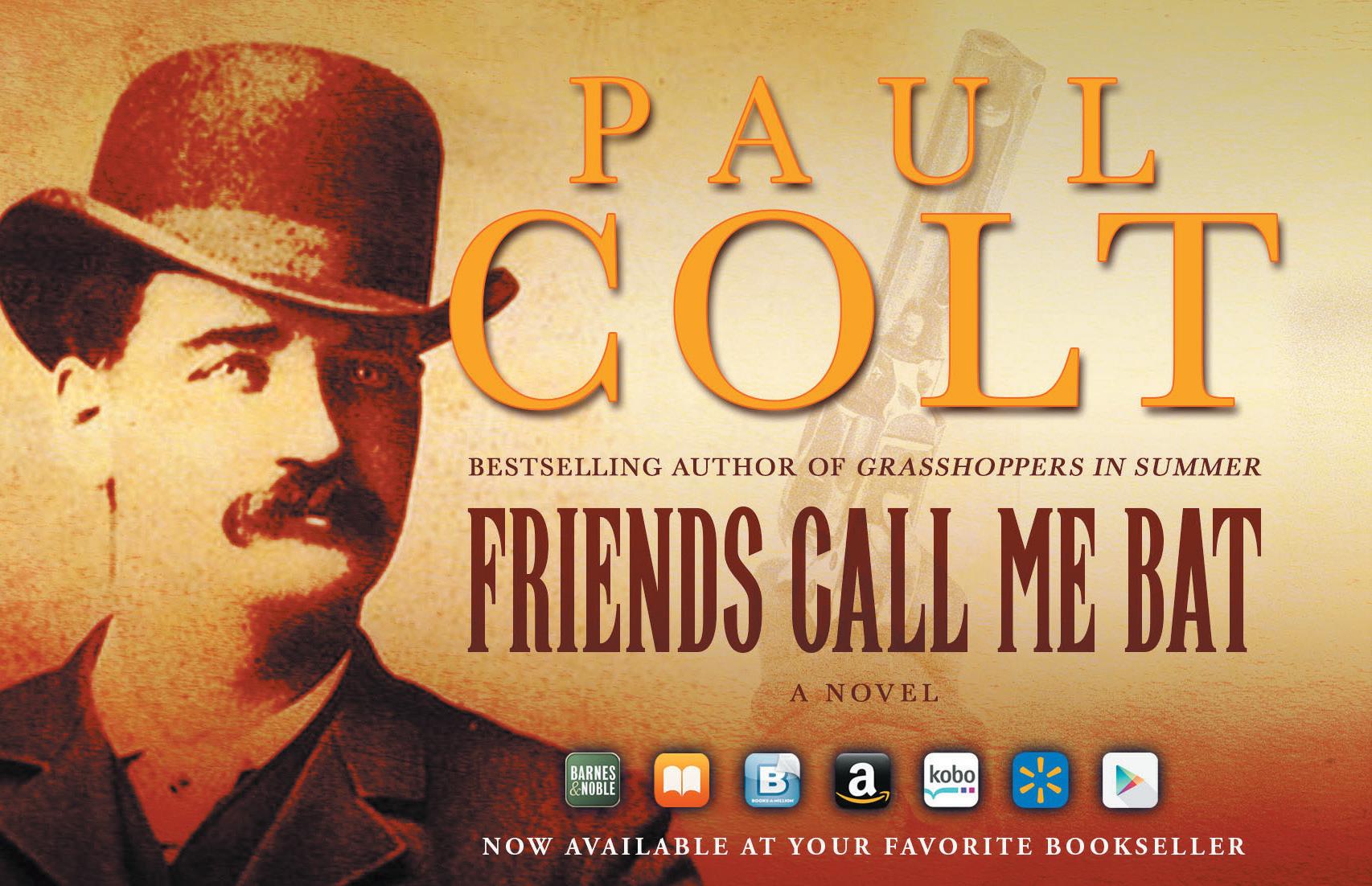
I felt my face make funny wrinkles, part frown, part smile, as I sat down beside Father to watch the colors fading and changing on the far horizon.
“Why did you send her away?”
“She was lazy. You did all the work. She wouldn’t even keep me warm when the nights were cold.”
“I didn’t mind doing all the work if Sousche satisfied you. She seemed to give you comfort, but I’m glad you sent her away. I’ll still do all the work, and I’m happy to look after you.”
In the dimming light, Father reached in his vest and pulled out his tobaho pouch. He made a cigarette, smoked to the four directions, and then handed it to me. It had been only three seasons past my womanhood ceremony. He surprised me. He had never smoked with me before. I was still very young to be smoking over serious business, but I took the cigarette, smoked to the four directions, and felt it burn my nose and throat, but I was
determined not to cough as I handed the tobaho back to him. He smoked the last bit of tobaho then crushed the dying coal with his strong, calloused fingers.
He said, “I think you chose your man at your womanhood dance. Most women do. We should have talked before then, but I’ve had many things pulling my mind in other directions.”
“I understand, Father. Yes, I know who I want, and he wants me. He’s a very good man. I’ve watched him since we were children. We’ll be happy together. Soon he comes to you with a bride gift offer. I want you to accept it.”
Stars came to the soft blackness above us, and in the low glow on the horizon, we could see the steam come from our mouths as we talked. He said nothing for a while as we listened to the night birds and rustle of mice in the grass. He looked everywhere into the dark—toward the prairie, into the night sky, toward Cache Creek—everywhere except toward me.
“Father?”
He made a face and then turned toward me.
“Your young man must not offer me a bride gift. I won’t accept it. You can’t marry.”
I breathed hard, trying to pull air into my body that for a moment lost its life rhythms. It felt as if my heart had stopped, and then my eyes filled with quiet tears. It took a while for me to regain my heart’s balance as I swallowed the big ball of thorns in my throat. I croaked, “But, why? Father, I don’t deserve to be treated like this. I’ve worked hard and helped you all I could. Why are you doing this?”
“I know you aren’t happy I do this, but it’s to save your life. Listen. I want to tell you a story. My sister Ishton married the great warrior, Juh, who went to the Happy Land five harvests before your time. Before Daklugie was born, Ishton strained four days to deliver him and could not. As a di-yen, I did all I could for her, but I thought she would die. I went up on a mountain and prayed for her. Ussen heard me and said she and the baby would live and that I would die a natural death.”
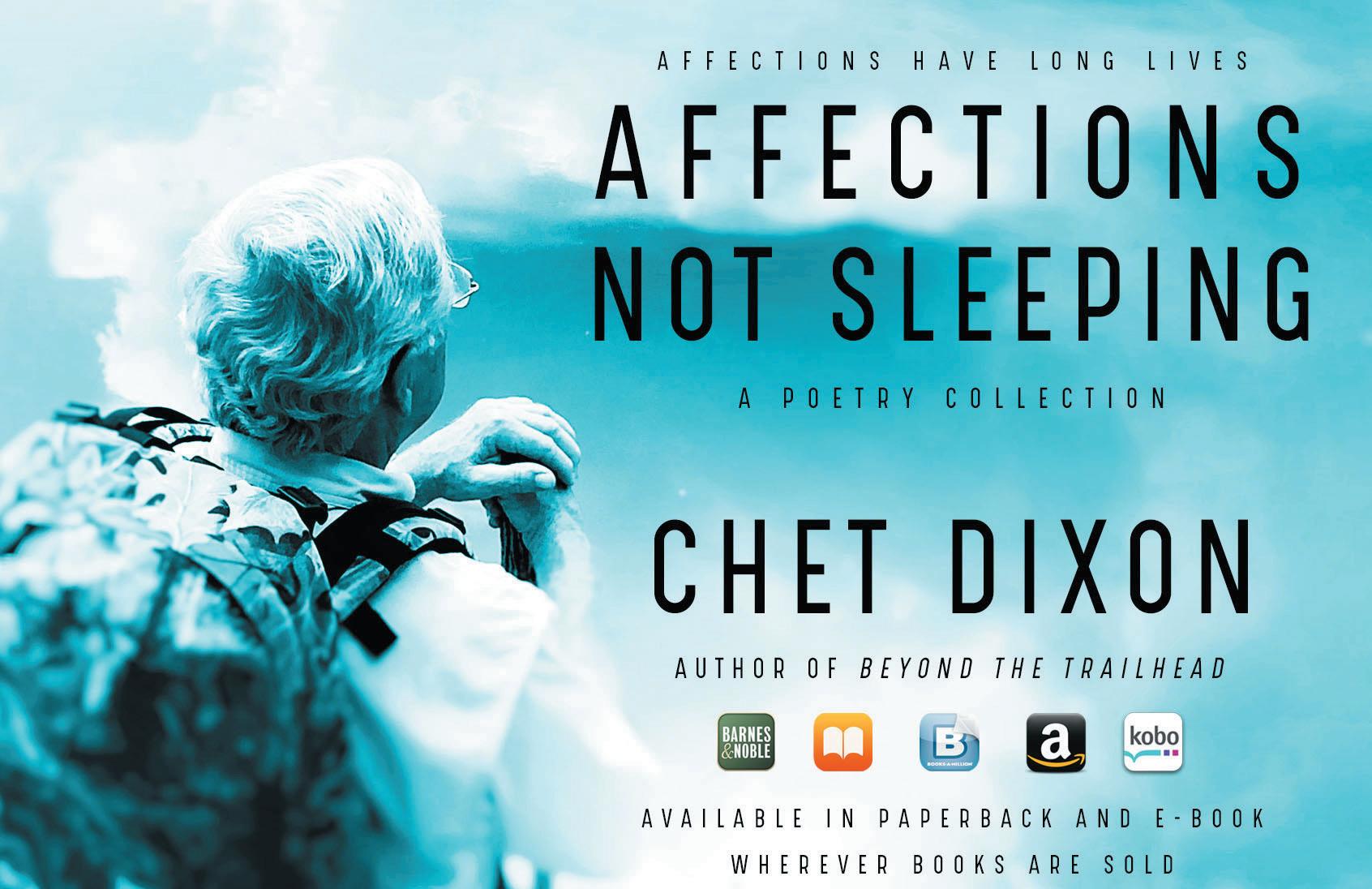
Dogs barked a few houses away, and we heard the clink of harness chains as men brought their teams from newly planted fields to the barn.
“Other women in our family have died or nearly died having children. Their suffering has been great. That is what happens to the women in our family. My Power from Ussen tells me that if you try to have a child, both you and the child will die. You must not take a husband. Hear me and obey me. Do you understand?”
I sat there a long time, stunned, saying nothing, thinking, I’ve had no visions, nothing to tell me anything like this. In the normal course of my life, I expect to marry and have children to carry on my father’s line. Now, his power says I can’t marry. How can he tell me this?
Brushing aside the water in my eyes and knowing I must always be respectful to my father, I said, “I hear you, Father. I’ll make us something to eat.” I pushed myself up on trembling legs and went into the house. Soon, with the clank and rattle of the iron doors on the cook

stove and grease popping under slices of meat with onions and potatoes, its good smell filling the place where I cooked, I swallowed down my tears and said to myself, One sun I will do as I please, Father!
Father insisted that I continue my schoolwork rather than stay at our house to serve him. “After all,” he said, “You must learn as many tricks from the White Eyes as you can.” He also knew that I wanted to tell Fred of his decision and that I wanted to do it in a good way.
A few days later, Fred and I went walking with other students our age on the mission grounds. We meandered across the mowed fields, quiet in each other’s company as the sun fell halfway on its arc into the prairie and while meadowlarks scrambled to their nests in the high grass. I couldn’t wait any longer to tell him what Father had said.
“Father has spoken with me about marriage. He saw us dancing at my womanhood celebration. He knows I want you for a husband. I even told him so.”
Fred nodded. “Enjuh. I’m ready to leave school now, but I know you want to learn more. What did your father say?”
I puffed my cheeks and blew a sigh from my lips. “Father said I could never marry, that women in our family have great trouble and suffering having babies, and if I had a child, we would both ride the ghost pony. He won’t let me go to the Happy Land that way.”
Fred’s face became a mask as if he had been struck dumb. He stared at me slowly shaking his head. “No! This can’t be. Does he really believe this?”
“Yes, it’s hard for him, but he won’t let me marry. He’s my father. I must obey him.”
“I won’t give you up. I won’t leave you.”
“Then you must wait for me. Remember the White Eye religion story that tells how the great shepherd, Jacob, worked seven years for the girl, Rachel, and then had to work seven more because her father deceived him? I don’t think you’ll have to wait that long for me. Father is very old. All his old friends and wives have ridden the ghost pony. Soon he will, too. Then I’ll make my own choices.”
“I don’t care if he lives another fifty years. I’ll wait until you’re free.”
“You’re a good man, Fred Godeley. I want no oth-
er.” I didn’t care who saw us. I hugged him and buried my face in his shirt.
In the following year, Father found another woman, a good one this time, who did well looking after him. As our custom says is proper, he moved in with her. I stayed in school so I could be near Fred and continue to learn all I could from the White Eyes.
My father was surprised to learn he had a son named Robert from his divorced Mescalero wife, Ih-tedda. Robert left Mescalero for the Indian Boarding School at Chilocco, met Father, who said he was definitely his son, and spent the summer at Fort Sill with him. Robert and I became good friends. And when he returned to Chilocco, Fred and I went with him.
One day near the end of the Season of the Ghost Face that year, Robert and I received a letter from Fort Sill that said our father was very sick and that we must come quickly to see him before he rode the ghost pony. We were on the next train, but we were too late. The funeral procession was already formed and waiting for us to arrive before the long ride to the Apache prisoner of war burial place. Robert and I wept bitter tears that we had not seen Father once more before he rode the ghost pony, but I couldn’t help thinking, Now I will marry who I please.
After the funeral, Ramona told me that Father’s dying wish was that Daklugie and she take me into their home. She said Daklugie had promised Father they would treat me as their own daughter. I was glad to have a home with Ramona and Daklugie and their young daughters. I returned to Chilocco, finished the term, and Fred and I made plans to marry soon after school was done.
After I returned to Fort Sill, I sat one evening with Ramona and Daklugie in their house breezeway watching their girls run and play tag. They asked about my school life and told me stories of their lives at the Carlisle school where, even though they had been promised to each other by their fathers from the time they were little children, they were always struggling to find a chance to even speak with each other, much less walk together with other students, as Fred and I often did.
After a pause, Ramona said, “When does the new term at Chilocco begin? We’re looking forward to you being with us a while.”
“I’m not going back to school. I’ve had enough of learning White Eye ways. Fred and I are getting married in two months.”

Daklugie and Ramona turned their heads to stare at me. Even the peepers and insects hushed their chorus. I was ready for hot words to fly, but without raising his voice, Daklugie said, “You know how your father felt about your marrying anyone. I told him I couldn’t stop you, but he said he had trained you to obey. I ask you not to do this. I know I can’t control you like my own daughter, not in this place and time. It’s your choice. You know what great power your father had. He could see the future. You take a great risk in marrying against his wishes.”
Ramona leaned over and took my hand in hers. “Listen to Daklugie. He speaks true. Even my father, Chihuahua, who rode with your father in the old days and sometimes disagreed with him, said he had great Power and was right about things he saw in the future.”
I squeezed Ramona’s hand and looked into the solemn face of Daklugie. “I know you say these things because you care about me. But I must live my life the way I want. I want to marry Fred Godeley and have his children. I’m strong. I’m built for having children, and I’ll do it. We’ll have a Christian wedding. Will you come?”
Ramona slowly nodded and so did Daklugie. Fred and I married. We were happy living in my father’s house, and soon we expected our first child.
Evaline was born in the month the White Eyes call June. It wasn’t an easy delivery, but it was nothing that would kill me. Evaline was a small baby but normal in every other way.
In less than a month, I could tell Evaline was sick. She cried often and wouldn’t take my breast. Ramona thought she might have a White Eye disease because she didn’t respond to the usual remedies my people used for sick babies. We went to the White Eye di-yen at the Apache hospital and asked that he help us. He listened
to her breathing with tubes in his ears and said her breathing wasn’t normal, but he didn’t understand why. He gave us bottles of medicine to try and told us when to use them. He recommended putting her in a bed near the stove where she could breathe steam with medicine in it. Neither Fred nor I slept much in those dark days.
A month later, I awoke early one morning after sleeping in a rocker near Evaline. She wasn’t fretting like she usually did most of the night. She was cold and unmoving in her cradle––gone to the Happy Place. I felt as if I had been shot in the heart with one of my father’s long, barbed-tipped arrows. I covered her and sat back in the rocker and prayed that Evaline’s journey to the Happy Place would be a fast one.
Fred awoke and came to us. He lifted the blanket and saw that she was gone. I stood trembling with grief, and we held each other for a long time.
He whispered, “We’ll have more children,” as he stroked my hair and rubbed by back.
I nodded. “Yes, we will.”
A year later a priest stood by a pine box ready to be lowered into a dark hole next to Geronimo’s grave. On the opposite side was the marker for Eva’s mother Zi-yeh. On the other side of Eva’s grave was Evaline’s, its fill not fully settled. Fred stood nearby, head bowed, shoulders slumped, as the priest began the eulogy. Daklugie stood with Ramona and stared at the mold-streaked wooden marker at the head of Geronimo’s grave. His thoughts fell through his mind like an eagle diving for a rabbit twisting and turning to get away. As usual, Uncle, you were right about the future. But don’t we have to live our lives by choice, not by the warnings or commands of others? You tried to warn and control Eva so she might live a long time. You also taught her to think for herself. This she did, and she died. It’s the paradox and price we all pay for life.
EPILOGUE: This story is based on true events and historical personalities at Fort Sill, Oklahoma, between 1905 and 1911.

WaMICHAEL FARMER combines fifteen-plus years of research into nineteenth-century Apache history and culture with Southwest-living experience to fill his stories with a genuine sense of time and place. A retired PhD physicist, his scientific research has included measurement of atmospheric aerosols with laser-based instruments. He has published a two-volume reference book on atmospheric effects on remote sensing as well as fiction in anthologies and award-winning essays. His novels have won numerous awards, including three Will Rogers Gold and five Silver Medallions, New Mexico-Arizona Book Awards for Literary, Adventure, Historical Fiction, a Non-Fiction New Mexico Book of the Year, and a Spur Finalist Award for Best First Novel. His book series includes The Life and Times of Yellow Boy, Mescalero Apache and Legends of the Desert. His nonfiction books include Apacheria, True Stories of Apache Culture 1860-1920 and Geronimo, Prisoner of Lies. His most recent novel is The Odyssey of Geronimo, which took home the Will Rogers Silver Medallion earlier this year in the ultra-competitive Western Fiction category.
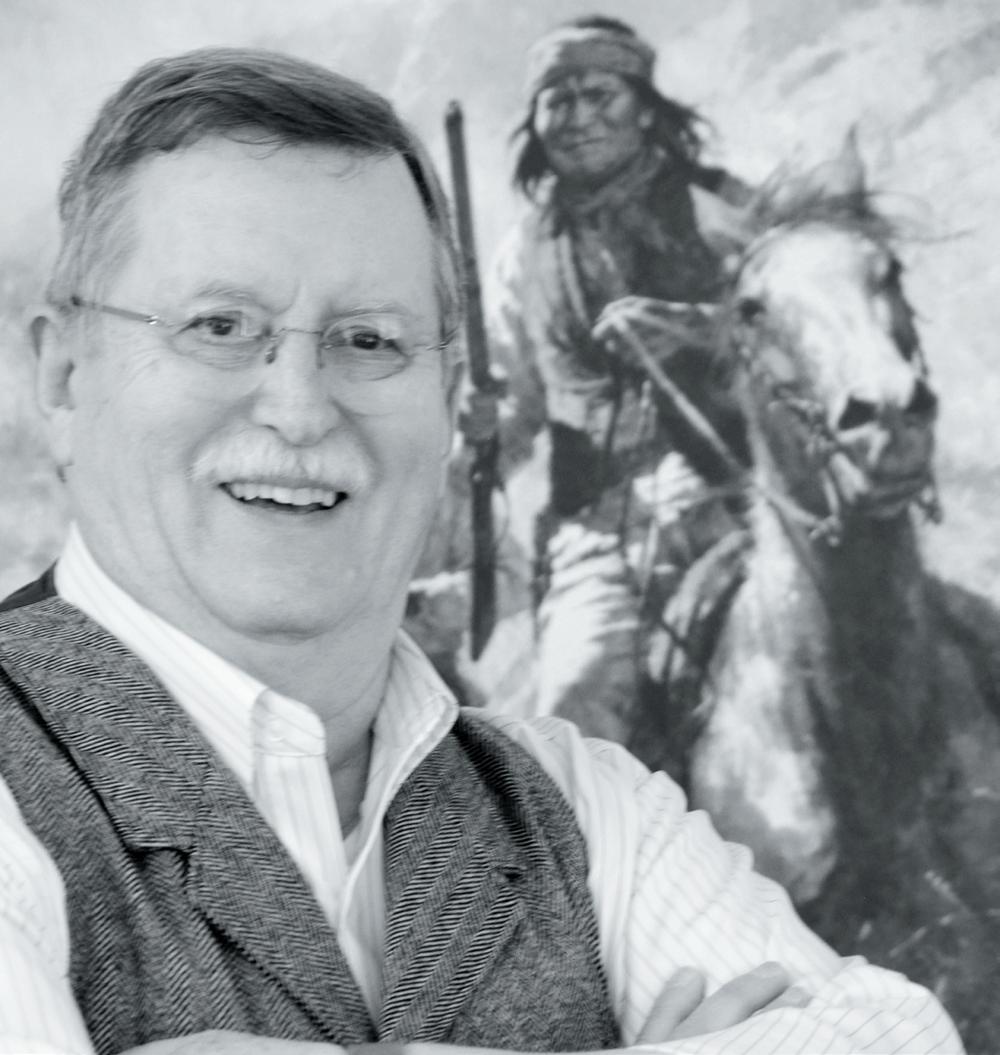
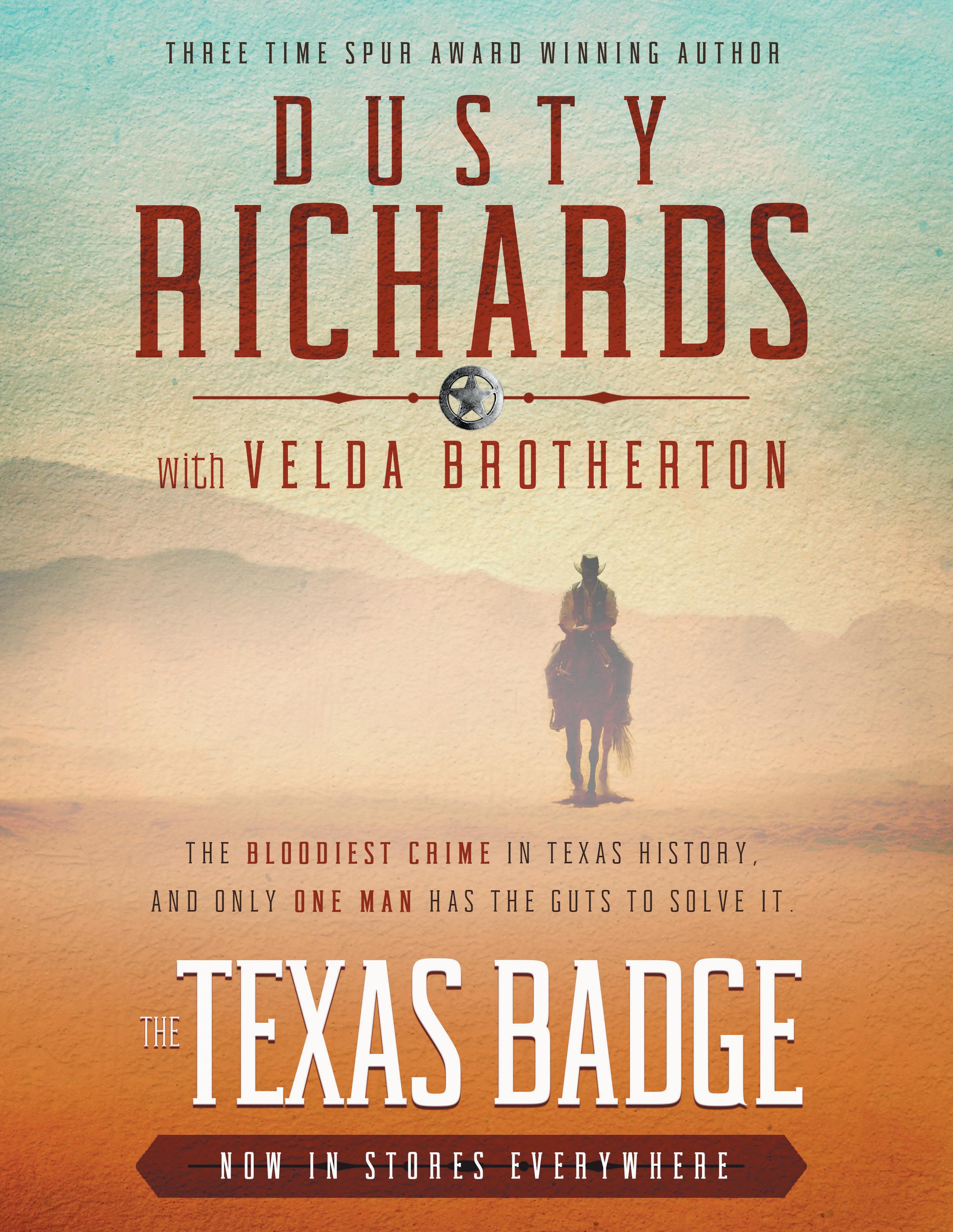
WITH THE ADDITION OF the gate, the newly constructed fence around the small plot of ground was complete. Tom Pickett stood in silence looking down on the three fresh mounds of dirt that occupied the enclosure. Throughout his life he had seen pain and death. But on this day, his heart had never been heavier. Completing the fence was an ending, the close of what had been the happiest time of his life. A breeze carried the scent of pine from the forest of piñon and juniper up the hillside.
Pickett turned, took a few steps, then passed through the gate and secured it behind him. He walked down the hillside and sat on the ground. Tears flowed freely down his face into an unkempt beard. Time passed, and he lifted his head to look out over what had been their valley. It wasn’t big, but it had been the place where their dreams had taken root.
In the distance, the southern New Mexico desert spread across the horizon. On their little ranch, a rocky canyon gave birth to a small creek that provided water for the household and stock. Three dozen
head of cattle grazed contentedly on good grass near the creek and a half dozen horses wandered among them. A corral and loafing shed constructed the year before provided shelter for three well-broke riding horses. He wanted to build another out in the pasture so cattle and the other horses could find some protection from cold winter winds. The animals were the result of hard work, detailed planning, and prudent purchases.
Rose, his wife, and he had worked side by side to build a comfortable ranch house. They had been blessed with two wonderful children—James and Emma. In his mind, he could see them as they ran and played, dancing around their beautiful, patient mother. Now, all three rested in the hillside behind him.
The date was unimportant, but he remembered the events of the day clearly. A large party of men, women, and a few children in wagons had stopped by two months earlier to inquire about the best route to Albuquerque. Most of the group were from Ohio and travelling to the New Mexico city as they had been told it was becoming famous as a mecca for health and rejuvenation. Pickett and Rose had given them water
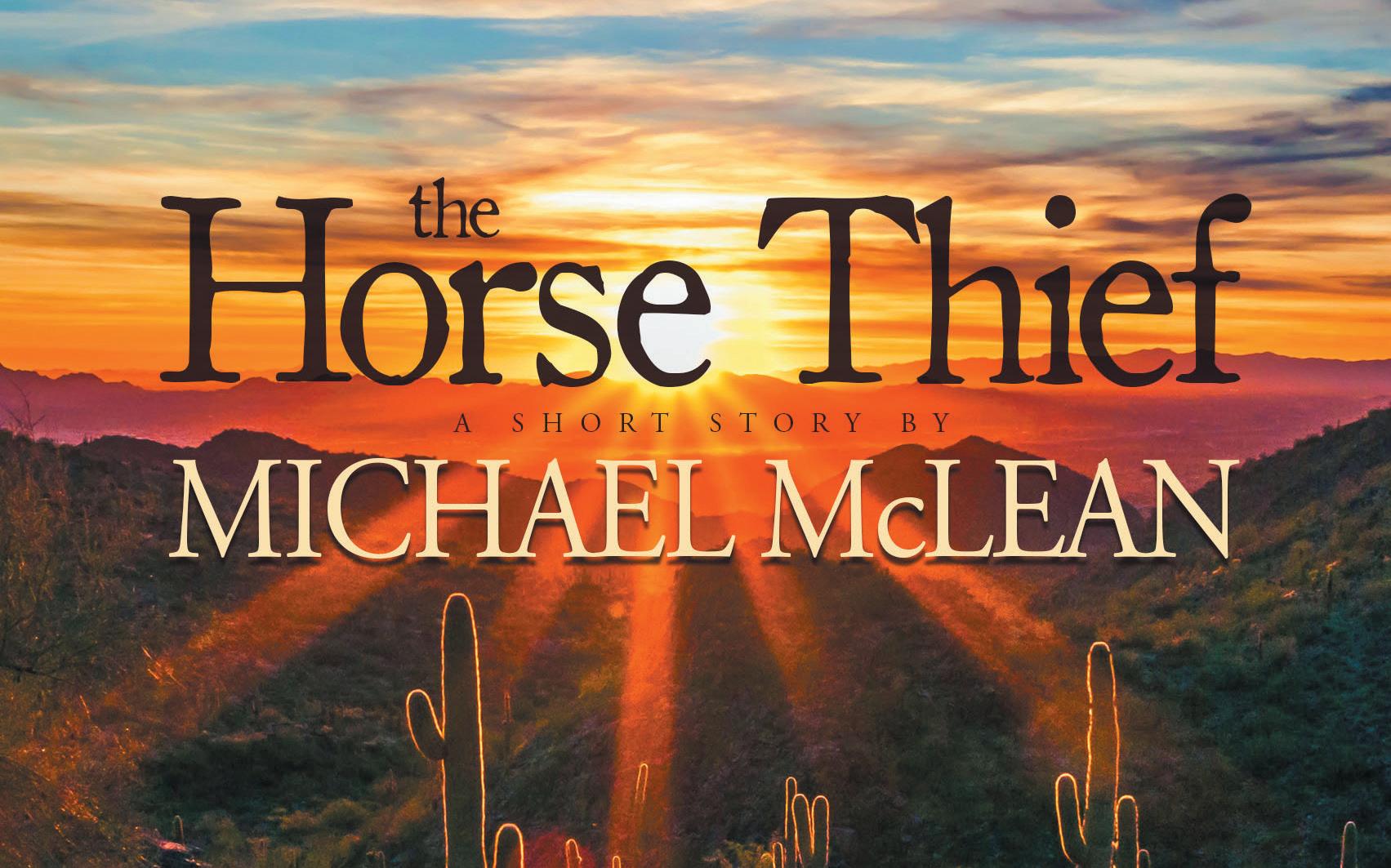
and visited while James and little Emma played with the children. After many thanks, the company departed, and their happy life continued.
A few weeks later, Rose and the children started to sneeze and cough. At the time, there was a lot of wind and dust that accompanied their discomfort. He and Rose attributed the coughing and sneezing to the dry weather conditions. Then Rose became unusually tired and listless. The children began having night sweats and didn’t want to play. All three lost their appetites and rapidly dropped weight. When James began coughing up blood, he immediately rode the many miles to the nearest town with a doctor.
ing a devastating effect on Indians, Black people, and those of Spanish heritage. But those folks coming here are usually more well to do, so there’s a lot of places making money by establishing sanitariums, or health resorts, for the wealthy—while the less fortunate suffer and die.”
Pickett closed his eyes, and a picture of the company of people that stopped at the ranch sprang immediately into his mind. The children had played, and Rose had visited with the women. He remembered there were individuals who had been coughing and sneezing, but nobody talked about being sick. It didn’t seem important at the time. No wonder they were headed toward a place that was touting health. He tried to push his bitterness aside. It was as if his family’s happiness had been targeted.
DR. MILTON BREWER LISTENED attentively as Pickett described the symptoms. The doctor’s demeanor was grim, but his verdict was chilling. “Everything you have described indicates your loved ones have consumption… or tuberculosis. Some folks call it the White Plague. Several years ago, in 1868, a Frenchman discovered that it is a very contagious disease. Unfortunately, a lot of people still refuse to believe that. I’m very sorry, but there is no cure. A person either gets over it in time… or dies.”
Dr. Brewer observed that Pickett reacted like a man physically struck by a powerful blow. The younger man explained he had no symptoms like his family—how could that be? As a response, the doctor just shrugged. “I don’t know. Maybe it’s something in your constitution that resists it.”
“You said it was contagious. What’s that mean?” There was desperation in Pickett’s voice.
“A sneeze or cough from someone who is infected can cause it to spread. People are flocking to New Mexico Territory in droves because it is arid here compared to back East—it’s being called the climate cure. And, whether it’s true or not, many believe that the disease can’t exist above 5,000 feet in elevation. Territorial officials are actively promoting the idea, so both sick and healthy folks are coming here,” Dr. Brewer said with an expression of distaste.
“The migration of people to our territory is hav-
There was nothing to do but head back to the ranch. Pickett thanked Dr. Brewer who refused any kind of payment. At the general store he stopped briefly and purchased candy for the children and canned peaches for Rose. Rocked by fear and grief he rode without stopping. Maybe the doctor was wrong. They had to get better.
Arriving at the ranch house, he found it dark and uninviting. With no wasted motion, he unsaddled and turned out the horse. Stepping onto the porch, he opened the door with the sack of treats in hand only to find Rose feverish and sobbing on the floor in a corner. James was lying in his bed with a thin blanket over his form. In Pickett’s brief absence, he had passed. He held Rose in a tight embrace and cried with her.
Over the next two weeks, little Emma followed her older brother. Devastated, Pickett dug two graves on the hillside just below the tree line above the house and took them there. After a struggle to get Rose on a horse, he led her to the small graves. She watched in agony as he read scriptures from the Bible over them.
Three days later, he read scriptures over his one and only true love. His life was shattered, his family taken by an unseen enemy. Each day he put all his effort into constructing the fence around their resting places, leaving ample room for a spot he planned one day to occupy. The gate was the final touch. His soul was adrift, and he was utterly lost.
shrubs on the hillside as the sun arced across the sky. No place to be, no place to go. The passing of time was meaningless, so he sat and stared across their valley.
The sound was an intrusion on his sorrow. Immediately Pickett tensed but remained perfectly still. The Colt .44 Single Action Army revolver was securely in its holster around his waist with the leather hammer thong ensuring safety.
The sound of a rifle being cocked was unmistakable. It was good that he left extra space in his family’s little cemetery. “Well, if you’re going to shoot—shoot.”
All was silent as a minute passed. The breeze was picking up slightly. All in all, it was a very pleasant afternoon to die.
Suddenly, a form moved around him on his left side. Looking up, he saw the threat was an Indian boy who looked to be in his early teens. The boy carried

an old Winchester Model 1873 short rifle with an octagon barrel in what might be a .32 caliber. It had seen a lot of use. The boy pointed it in his direction—sort of. “You got the drop on me, son. I give up.”
The young man studied him, moving nothing but his eyes. “You are alone?” came the question.
“More than you will ever know,” answered Pickett. “I have been watching you. You are acting strange.”
“Guess so. You speak good English,” Pickett said, eyes locked with the young man’s.
“There was a priest who taught us about the world and to speak and read the white man’s language. He was Spanish but knew many tongues. At first, he was avoided by the people. He did not give up, and everyone came to like him, but he died badly.”
“You have a name?” Pickett asked, deciding not to pursue how the priest died. “Mine is Tom.”
“The priest named me Peter. My Apache name is Kuruk—it means bear.”
“They are both good names. Which do you like?”
“My family named me Kuruk. I like that,” he said as he lowered the rifle even more.
“So, you’re not going to shoot me?”
“No.” The boy looked to the ground. “I have never killed a person. The priest said it was evil. I killed two deer with it for food—I thanked their spirits.”
Pickett nodded his head. “Any particular reason you pointed that rifle at me?”
“I thought it would scare you.” Kuruk frowned.
“It got my attention, but I’m not feeling much scared,” Pickett said.
“I am not very good at being an Indian. An Apache is supposed to be brave and strong.”
“For what it’s worth, you seem both brave and strong. Why don’t you take a load off and sit down? Maybe we can parley.”
“What is parley?
“That would be to talk. Discuss things, like why you are here,” he said and watched a confused expression cross the boy’s face.
“I came here to steal a horse.”
Everything considered, Pickett didn’t think it was possible, but he chuckled at the reply. “Well, there’s some good ones down there for sure.” He gestured toward the corral below. “Why do you want to steal a horse?”
Kuruk looked at him like it was a foolish question and perhaps insulting. “I am tired of walking.”
“Now that is an honest answer if I ever heard one. That’s something a man needs in addition to being strong and brave. Honesty counts for a whole lot with people. Where do you live?”
Kuruk thought about his answer. “I lived in a village up in the mountains with my family and others of our people. The priest came to help and teach us, so we helped him build a church.”
Pickett nodded in understanding. “Seems like a good place. You don’t live there anymore? Did you run away?”
“Yes... no,” he said, then faltered. “I left—did not run away. Must find a new place to live, can never go back.”
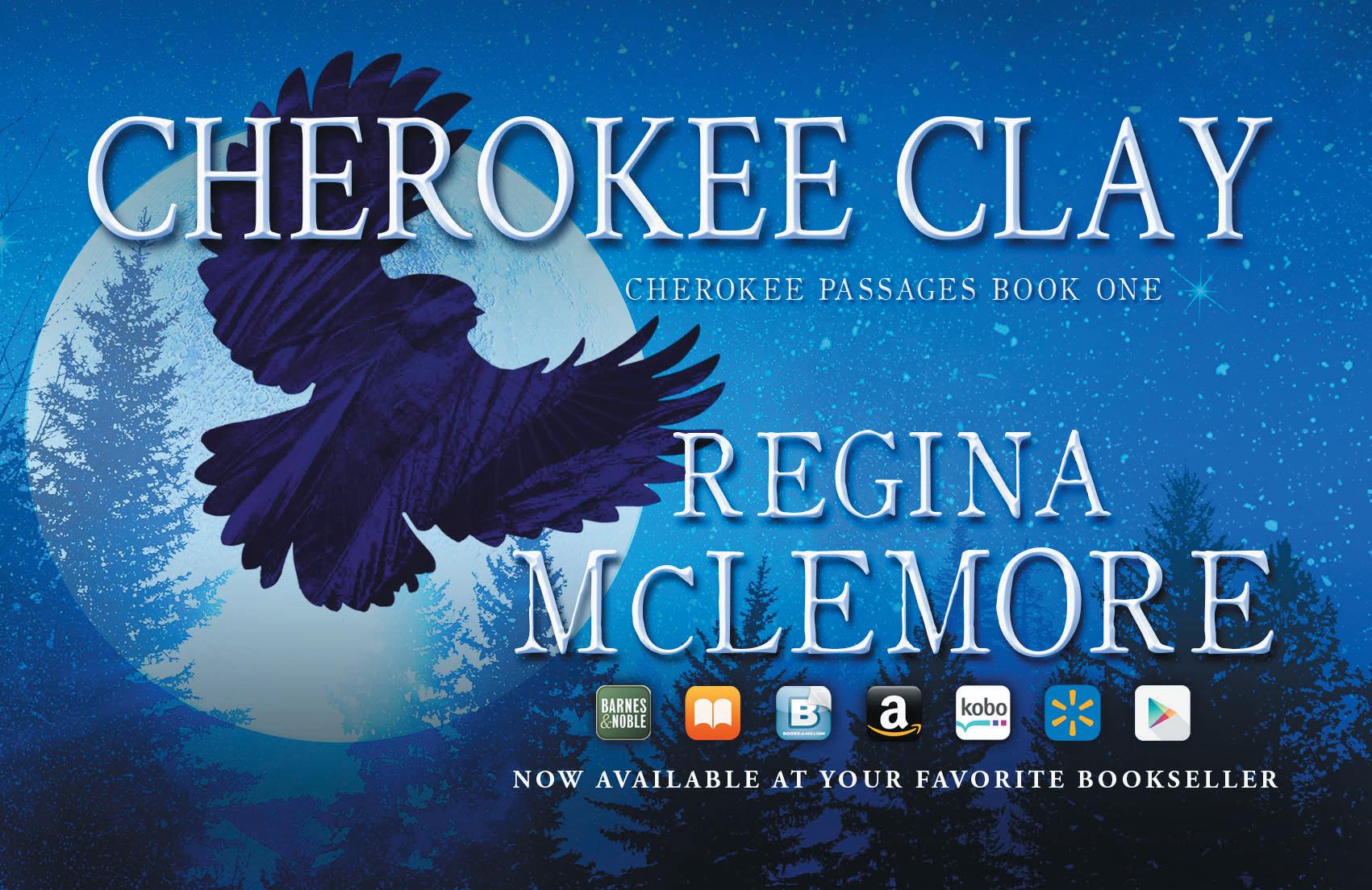
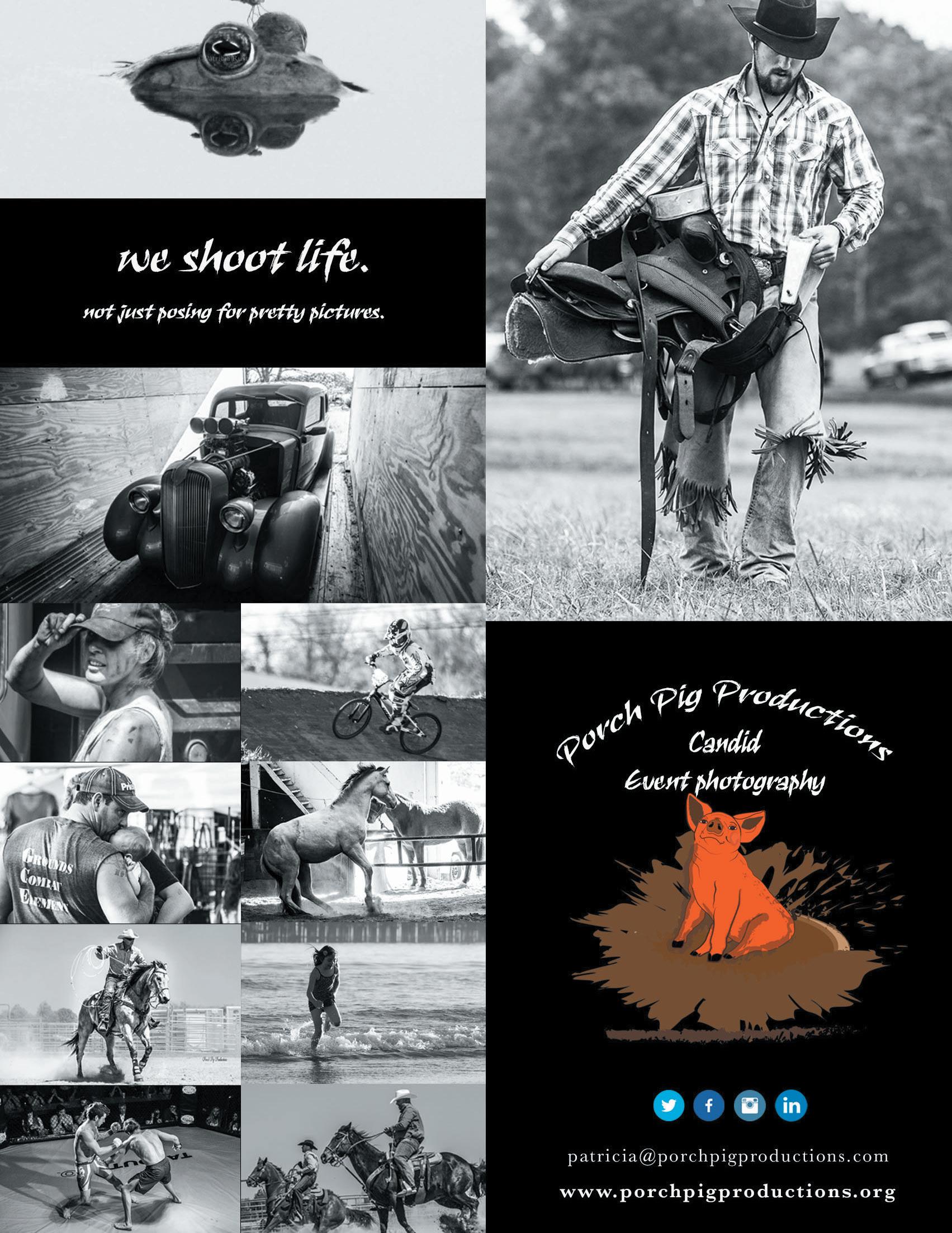
Pickett was curious, something didn’t seem right. “Why is that?”
The boy’s features instantly clouded. “Dead. All family is dead, most others dead too—even priest. He try to help, but his prayers not answered. A trader came to the village two full moons ago and stayed for two days then left. People began to cough and sneeze after he left. There was sickness everywhere. Then people started to cough up blood. Then they died. My two sisters died first, then Mother and Father. Grandmother was the strongest but still died. Others went to different places. All were afraid and left—to flee sickness,” Kuruk explained, then just sat in silence looking at the ground.
The words of Dr. Brewer echoed in Pickett’s mind—tuberculosis was very contagious… having a devastating effect on Indians. Here, sitting with him, was a victim like himself, from another culture, who survived but whose life was forever changed. “I am sorry, Kuruk. Those are terrible things to see.”
“Do you know of such sickness?” Kuruk asked, looking up at Pickett.
“That I do. Did you notice the little fenced area on the hill behind us?”
“Yes, I walked by it when I tried to sneak up on you sitting here.” Kuruk cocked his head slightly anticipating that there was more to be said.
Pickett pursed his lips and sat in silence for a minute or more. “That is where my family is. My wife and two children are buried there. They had the same sickness you have described. I think a group of people passed the sickness to them when they stopped at our home on their way to Albuquerque.”
“Then we are alike—no family,” Kuruk said. “What you going to do?”
“Keep going on. There are cattle and horses to care for. Need to sell cattle to buy food and supplies. I guess there’s plenty to do until it’s time to rest with my family. How about you? What are you going to do?”
“I do not know. Village full of death. People do not trust the Apache, so we not wanted in towns.”
A long pause ensued between the pair as Pickett looked once more off toward the valley, and Kuruk studied an ant working its way across the ground between them.

At last Pickett spoke. “You speak English and can read. Those are good things. My wife loved books and had several. I didn’t cotton much to them, spent most of my time working on the ranch. Maybe you would like to read her books.” The boy’s expression transformed into one of intense curiosity.

“If you’re interested—and since you don’t seem to have any place to go just now—I could sure use some help with the place. Wouldn’t be anything special, but we would eat regular. We could probably learn a lot from each other, too… that is, if you’re interested.”
“You would trust me? I would live with you?” Kuruk asked with a hint of suspicion.
“Yes, and yes. You have shown me you are brave, strong—and honest.”
Time passed as the offer was considered. “I will do this,” Kuruk stated simply, his eyes locked with Pickett’s.
Pickett studied the serious young person in front of him then stood up, as did Kuruk. “Good. It’s settled then. Grab your rifle and come on. I’ll help you pick out a good horse to steal.”
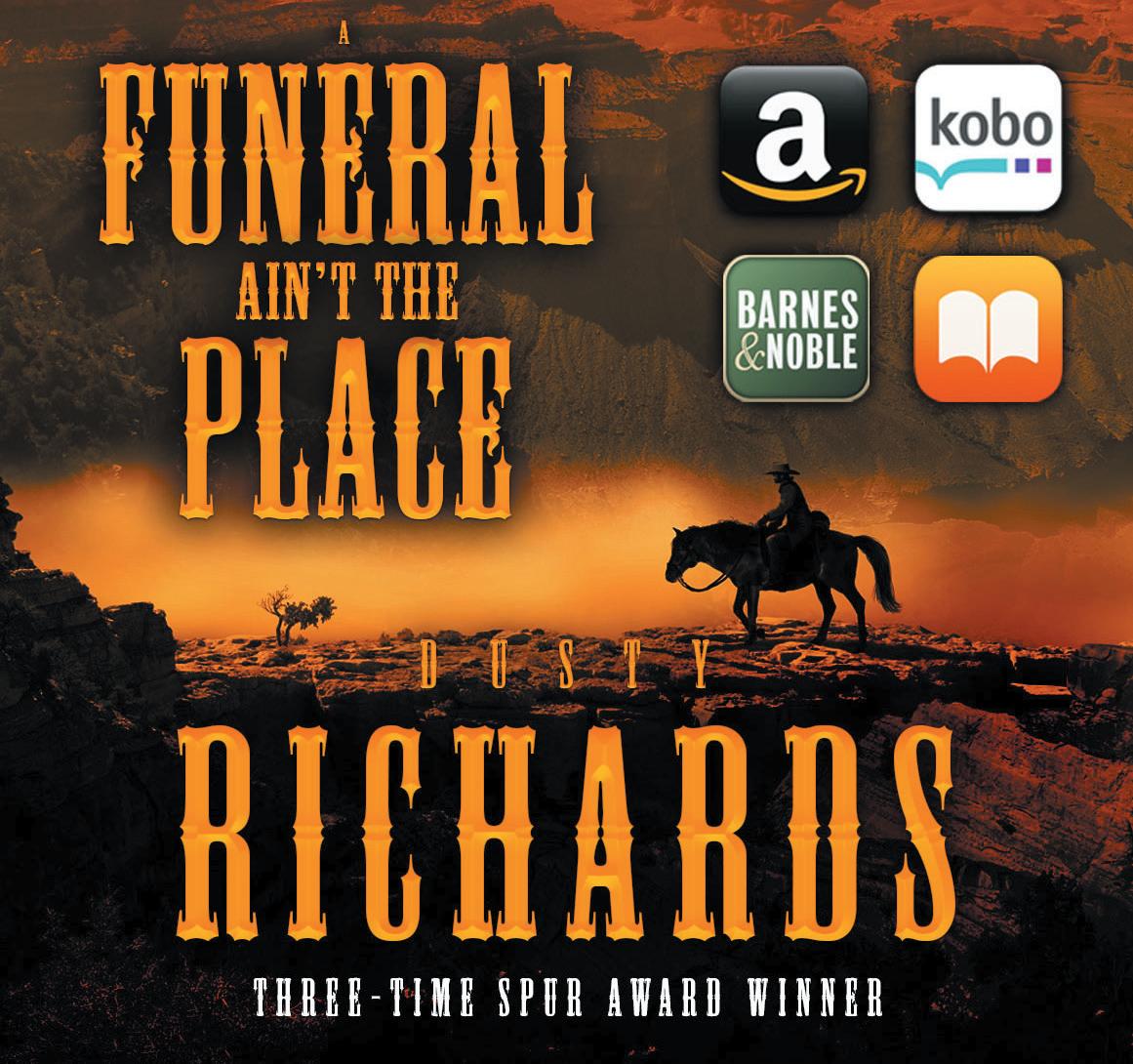
Aanative of western Colorado's high country, MICHAEL MCLEAN has packed on horseback in Montana's high country wilderness, mined gold and silver thousands of feet below the earth's surface, fly-fished Yellowstone Park's blue-ribbon waters, and explored the deserts of the West. Through personal and professional experiences he has collected a wealth of information to develop story settings, plots, and characters. His work has been published in New Mexico Magazine, Rope and Wire, and The Penmen Review. His story “Backroads” was the winner of the 2012 Tony Hillerman Mystery Short Story Contest.
McLean believes the less travelled and often lonely back roads of the West offer intimate access to the land, its people, and their stories.
A mining engineer by profession, McLean also has technical publications to his credit. He now works in New Mexico's oil and potash-rich Permian Basin and lives in Carlsbad, New Mexico, with his wife, Sandie. McLean is a regular conributor to Saddlebag Dispatches, and “Horse Thief” is his sixth short story to be published within its pages. He also won Honorable Mention in 2021’s inaugural Mustang Award for Flash Fiction.


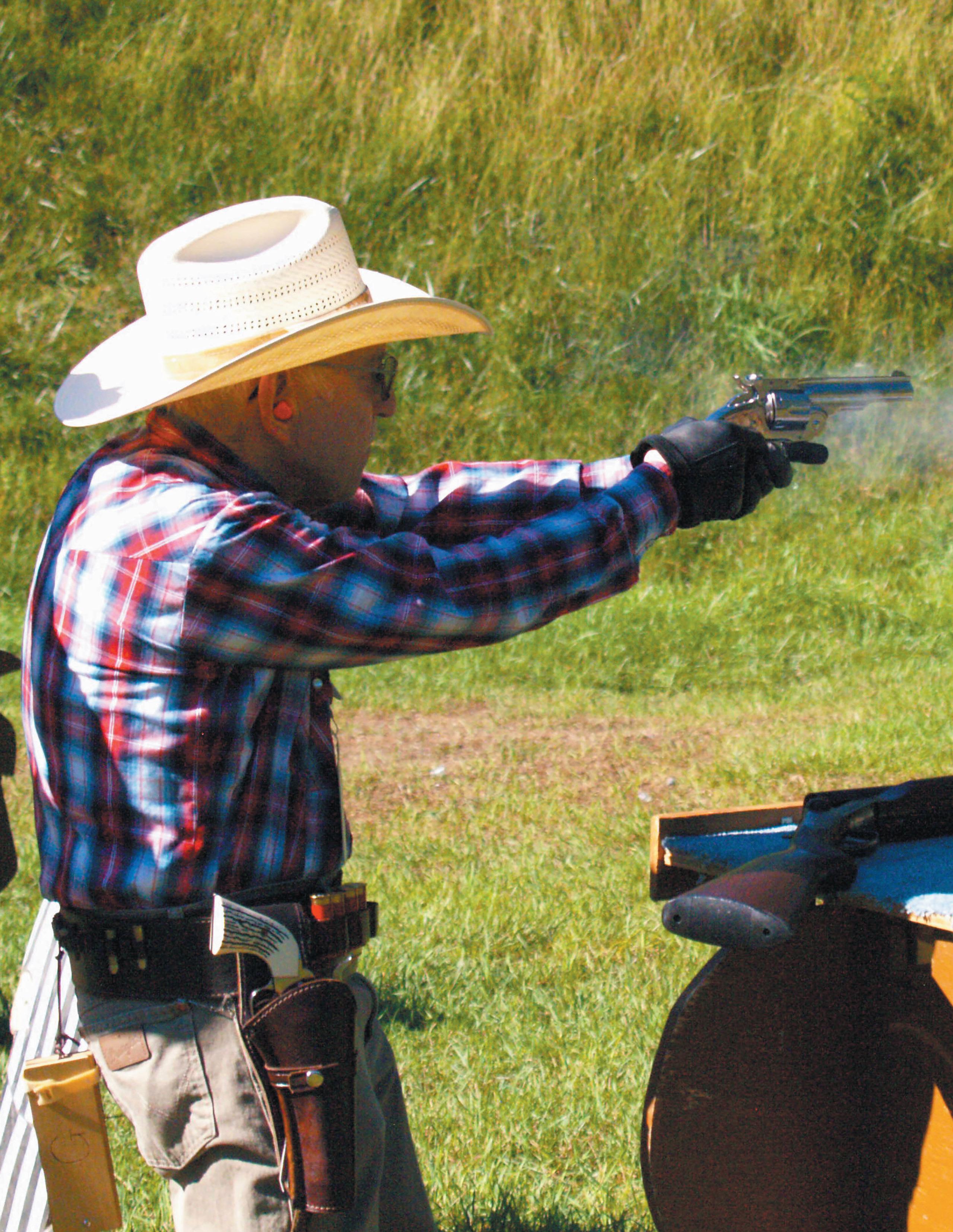
“LET’S PLAY COWBOYS!” Those three words drove my childhood. As a kid growing up in Queens, NY, I lived and breathed everything Cowboy. From going to the local movie house, which we lovingly, and laughingly, called “The Dumps,” on Saturday afternoons to see the latest B-Western, to chasing each other around the local park acting as our favorite Western stars, we were as much cowboys as was possible in our circumstances and in our neck of the woods.

Then I grew up, and, sadly, that all got stuffed into the background. Jobs, military service, more jobs, a career and a family all took precedence. Fast forward through life to when I moved from Illinois to New Jersey to live with my daughter, son-in-law, and granddaughter. Over those years, I’d still kept up my interest in The West and in period guns and shooting but never had the time to do anything but daydream about them. Imagine my delight when, now in retirement, I found out there is a gun range about thirty miles from home and that they host a group known as the Wiley Coyotes, a Cowboy Action shooting ensemble.
Naturally, I joined both.
But you might wonder what Cowboy Action shooting actually is. Well, it’s probably the most fun a shooter who loves the Old West can have. Take a group of like-minded guys and gals, dress them in Old West costumes, up to and including authentic outfits and period guns and leather, and put them in front of steel targets. Then explain a scenario and shooting sequence and sound a buzzer in their ears. What follows is a kid’s fancy, as well as the dream of a kid-at-heart like me.
If that interests you, come along with us to a match as we shoot our way through five different action stages, while my daughter follows us with a camera. I doubt you’ll be disappointed.
The Single Action Shooting Society (SASS), the organization which supervises Cowboy Action matches world-wide, puts forth rules that govern each shoot. Failure to adhere to these edicts will result in a shooter being penalized by anywhere from loss of score points to ejection from the shoot, depending on the severity of the offense. They don’t mess around. Safety is primary, secondary, and all encompassing and is strictly enforced by trained and SASS certified Range Safety Officers.



ten a.m., but there is a fair amount of setup involved. Our personal gear, guns, and ammo need to be unloaded from our vehicles. The host range, besides providing space for the shoot, also gives us storage space for all our props, and there are quite a few of them. We have revolver targets, rifle targets, and shotgun targets, all steel, each a different shape and color. Then there are prop horses (made of wood) to hold our weapons; wagon wheels, doors to kick in, and bushes to hide behind, just like in the movies. All this has to be taken out and set up for each shoot. Afterward, they must be broken down and stored, as if we were never there.
For safety’s sake, there is a loading table, the only spot where the weapons can be loaded in preparation for each stage. No one carries a loaded weapon on this range, except for the walk between the loading table
and the firing line. An RSO oversees the loading and checks to make sure each revolver hammer is resting on an empty chamber to prevent accidental discharge. This was a standard practice in the Old West, making every six-shooter a five-shot weapon that would not go off unintentionally if it was accidentally dropped.

After the stage is completed, and all live ammunition has been expended, the shooter returns to a nearby unloading table to eject empty cartridge casings from his/her revolvers. This is supervised as well by an RSO. The shooter leaves the unloading table only when cleared to do so after the RSO has assured that revolvers, lever guns, and shotguns are empty.

Once the stages are set up, we fill in the sign-up sheet with our aliases—mine is The Old Gunfighter Bob—and we pay our entry fees. We have all manner of Old West aliases, from the ridiculous to the sublime. Names like Colt Paterson, Kalmar Kid, and Cactus Red, mingle with Bad Shot, Buffalo Bad Bob, and Victoria Barkley, rounded out by Dead Eye Deb. Deb has been at this for only two years and is determined to shoot every stage in under a minute. She’s well on her way to accomplishing that goal. We talk among ourselves about nothing in particular while the sign-up progresses as if it hasn’t been at
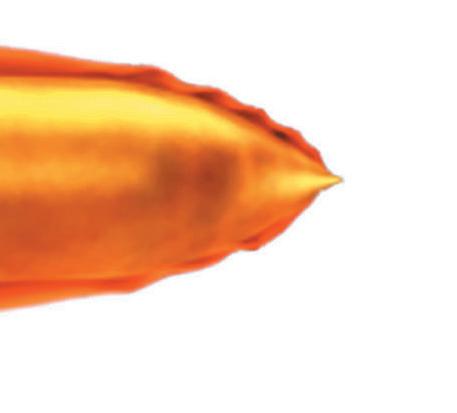
least a month since we last saw each other. There is a standard orientation, during which the boss of the outfit—this month it’s Grumpy Gramps—cautions safety and the consequences of ignoring it. Then we turn our attention to the flag flying over the range. Old Glory beckons. We snap to attention and recite the pledge. By then it’s time to start the shoot.
The events are timed by the RSO/timer using a standard shot timer. Each stage has a scenario and sequence to which the shooter must conform. It might
who is concerned with his speed, who strives to be the winner at each shoot. What I love about Cowboy Action is, there is room for both types at these firing lines. Everyone is welcome.
It’s cool this late September morning, but clear, with no hint of rain and a promise of warmth but not the oppressive heat to come later in the day. When I and my daughter, who has kindly agreed to photograph the shoot, arrive, the range is already set up. Targets are out, loading and unloading tables are set up, and the sign-up stand is in the center of the end of the rifle range where we conduct every match. Beyond that is a berm, high enough to catch any stray lead. A section in front of the firing line contains the individual shooting carts which carry members’ equipment. Besides the ammunition to go with them, it includes single action revolvers, lever action rifles, and double barrel or pump action shotguns, all period correct. Whether they are replicas or actual historic pieces, which is rare—if the original wasn’t made before 1900—it’s representation here is not allowed.
be revolvers first in a prescribed pattern between several targets, then switch to the rifle and another pattern on those targets, and then the shotgun. Or there might be a switch-up to keep the shooter’s head in the game. The trick is remembering each sequence while keeping an eye on safety.
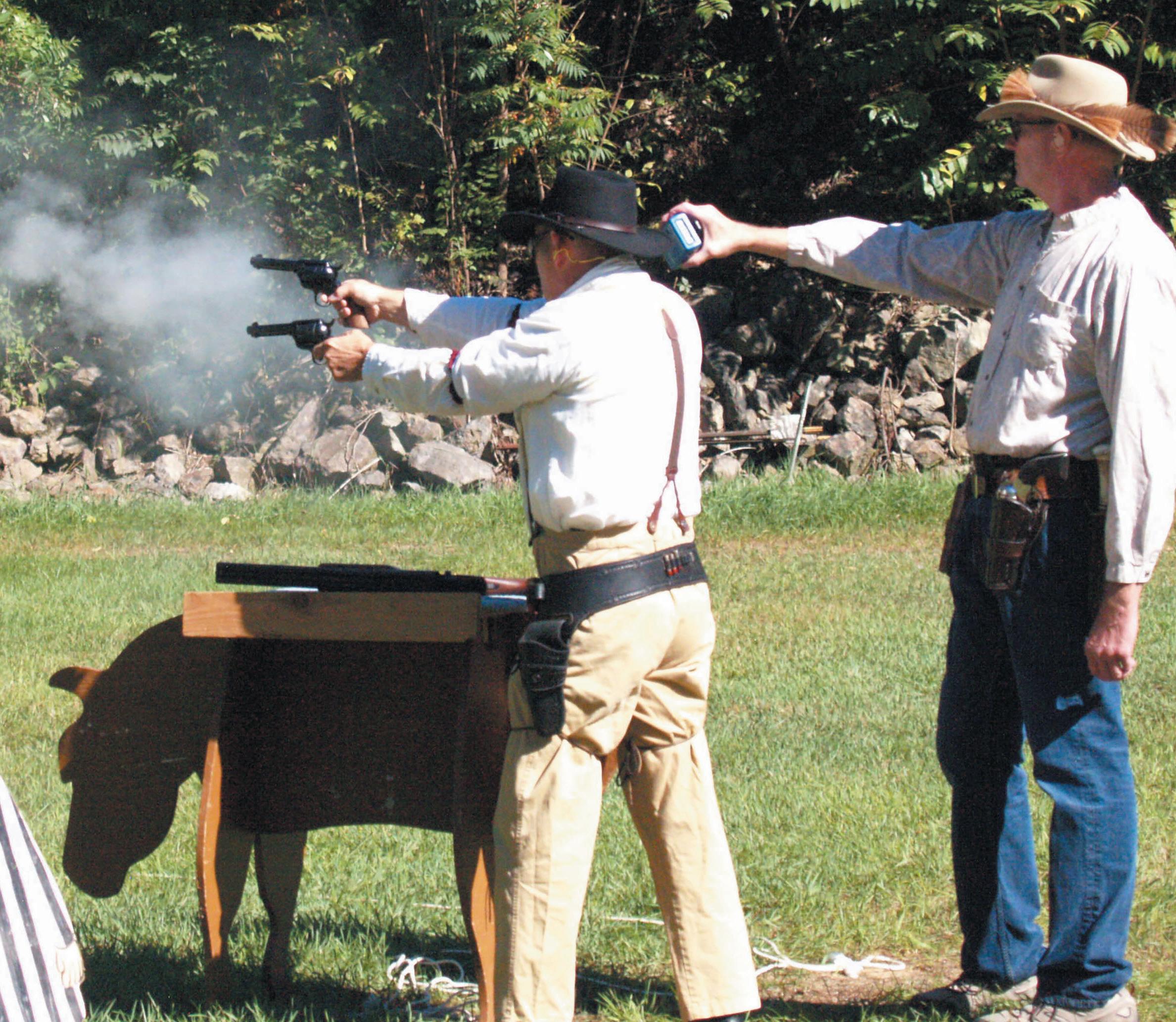
Now, there are two types of shooters involved in this game. There are guys like me, who are in it just to have the fun of shooting, caring naught for how fast they are, reliving Old West history, and hearkening back to our childhood. Then there is the competitor,
Grumpy Gramps tells us he expects about ten shooters. That’s a light turn-out for our group, the average being between fifteen and twenty members per match, but there is a competition shoot in South Jersey today which has drawn most of our competitive shooters. It actually works out better for the photographer because it will be easier to keep track of the participants. We set up our equipment and chairs as others arrive to do the same.
Because of the fewer number of participants, movement of targets between stages has been kept to a minimum. There’ll be less hands
WANTED—DEAD OR ALIVE. GRUMPY GRAMPS AND OLD GUNFIGHTER BOB STAND FOR PHOTOS DURING A BREAK IN THE ACTION.
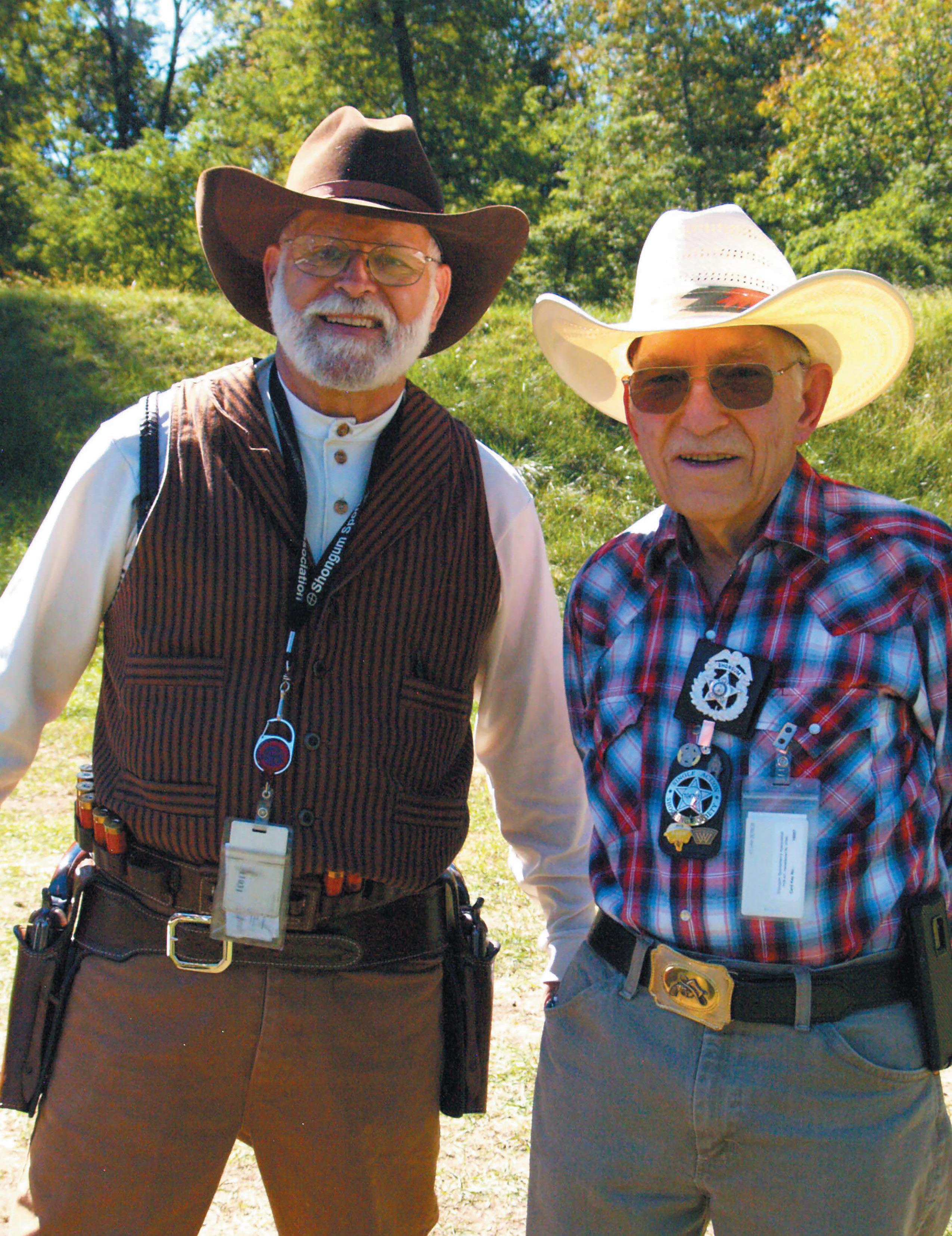
MIDDLE: BUFFALO BAD BOB AND THE PUMP SHOTGUN. BOTTOM: KALMAR KID MOWS ‘EM DOWN.
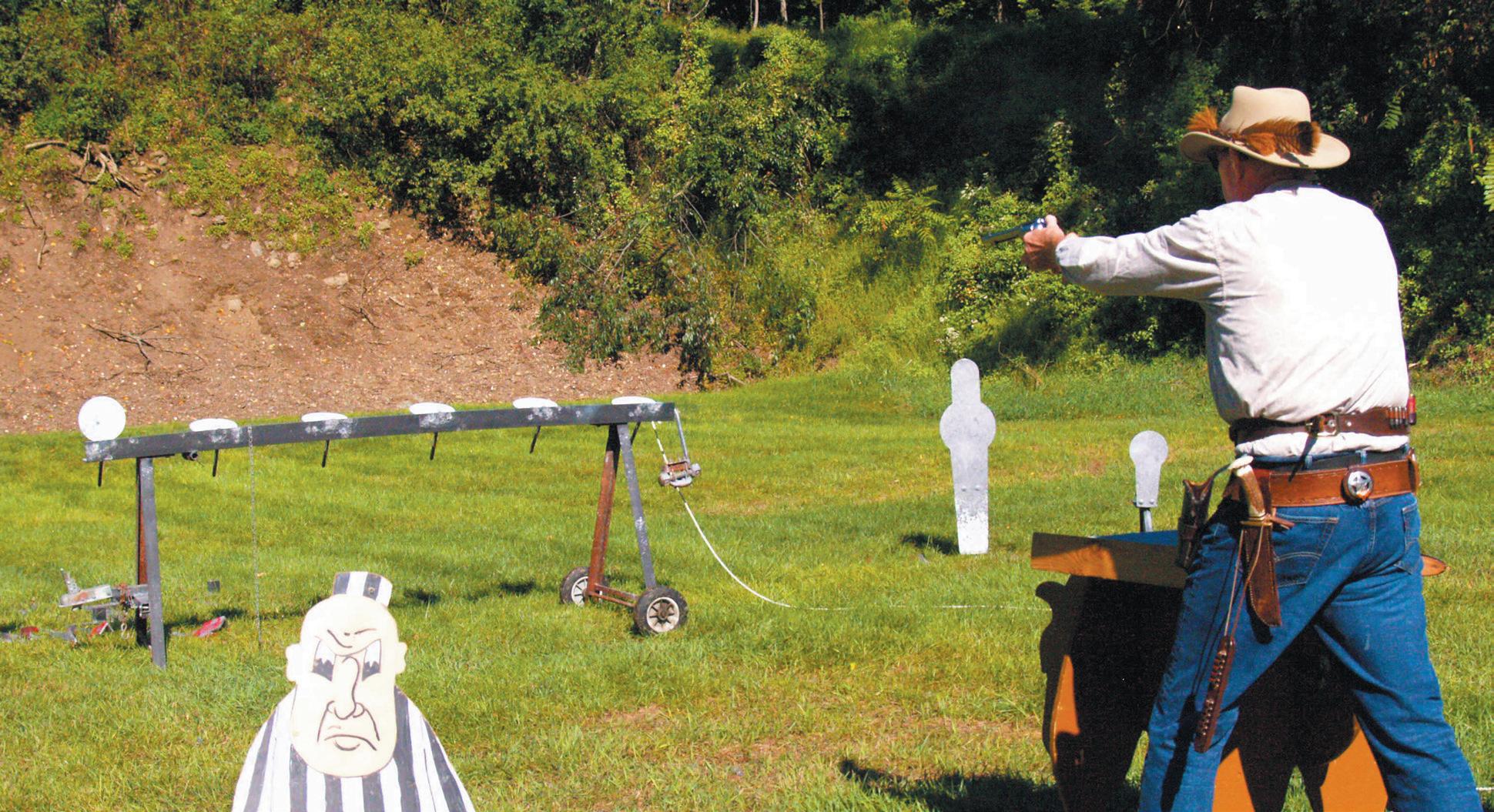


to accomplish the many tasks required, so we’ll keep it simple. For the first stage, a plate rack pistol target sits at about seven yards from the firing line. Behind that and off to the left are three rifle targets resting at about ten yards. Off to each side of the revolver and rifle targets, four shotgun targets, two on each side, complete the array.
Grumpy Gramps reads off the scenario for the first stage. The shotgun is first. Two rounds on two of the four SG targets. Then the plate rack. The object is to knock over each plate with a revolver round, then empty the revolvers on the dump target to the rack’s immediate left. Pick up the rifle and fire a prescribed pattern until empty and finish up with the shotgun, one round on each of the remaining targets. Any misses on the plate rack can be made up on the final SG targets. It sounds simple enough, until you get up there and the adrenaline starts pumping, and you start to forget what you just committed to memory. That happens more often than you’d think. You step up to the firing line, shout off the tag line that starts your time—in this case, it’s, “Are you just going to stand there?”—and listen for the buzzer through your ear plugs. Then you’re either as clear as a bell on the procedure, or it’s, “What do I do first?” Somehow, we get through it, either well or just barely, but safely, always safely.
I move to the loading table wearing my Ruger Vaquero and my Italian-cloned Schofield breaktop—both safely holstered—and carrying my Henry rifle and Stoeger double barrel 12-gauge shotgun, both with actions open, muzzles pointed up. Sound like overkill? Safety never is. I place the long guns on the table and proceed to load the revolvers with five rounds each, under the watchful eye of the RSO. He checks to see daylight through the portion of the cylinder where the rim of the round should be visible, assuring the hammer is resting on an empty chamber. Then I load the Henry to its ten-round capacity. The shotgun remains empty at this point. I wait to be called to the firing line, watching the previous shooter to
reinforce the sequence of the stage in my head.
“Next shooter.” I pick up the long guns and stride to the firing line, depositing them on the appropriate horse-table according to the previously read instructions. I move to the ready position and give my holster belt a final adjustment. So full of confidence, I suddenly realize I’ve forgotten the tag line, so I ask Moss, the RSO/timer. He feeds me the line, I repeat it, the buzzer goes off, and the game is on. Shotgun first. I cradle it in my left hand, balanced at the break, shove two shells in the breech, snap it shut, shoulder it, lean in to stabilize myself, and pull the triggers. Two perfect hits. Off to a good start. Now, the revolvers…. Plate rack targets are smaller than the standard revolver targets, lighter in weight. They’re designed to fall over when hit by a lead bullet, provided they’re hit slightly above center and the slug has been driven by a sufficient powder charge. Most Cowboy Action shooters reload their own ammo for two reasons: they can load light powder charges to reduce recoil, and reloading is cheaper than buying new rounds. However, lighter loads might not be enough to knock the plates over, even if the shooter is accurate enough to make the hits. These are my two problems. As I roll through the ten rounds in my revolvers, it becomes evident to me that I need much more practice at hitting smaller targets. After ten shots, two plates are still standing.
Oh, well….
The rifle is next. What was that sequence? Oh, yeah, double tap sweep. Right. In layman’s language that means two rounds on the first target, two on the second, two on the third, then back to the first for
two more, and on to the second for the last two. My Henry is super accurate and easy to aim. I ace this and move on to the shotgun again.
I can still pull this out because I can make up the plate rack misses on the shotgun targets. I have four rounds left in the belt—all I need. I load up, shoot,

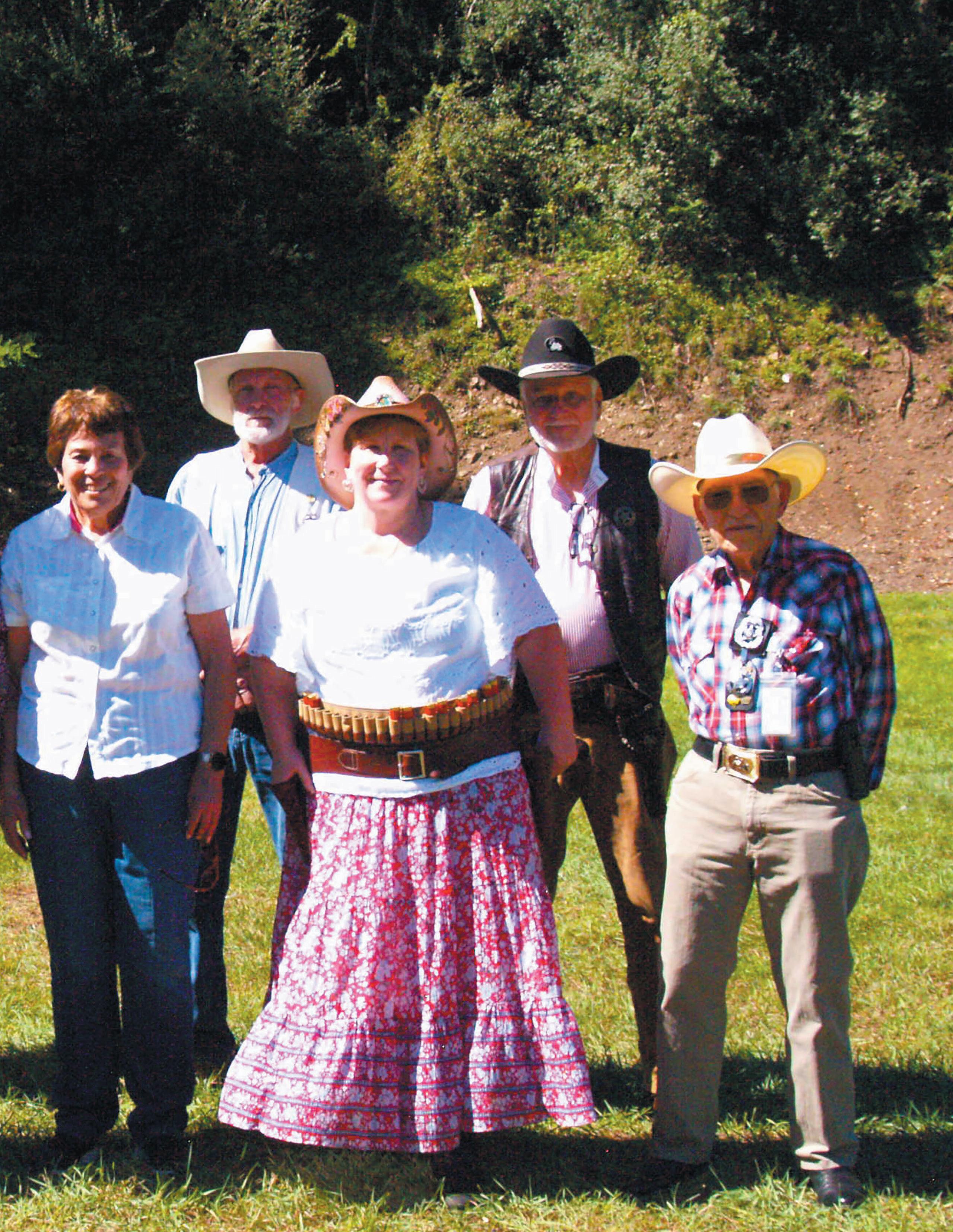
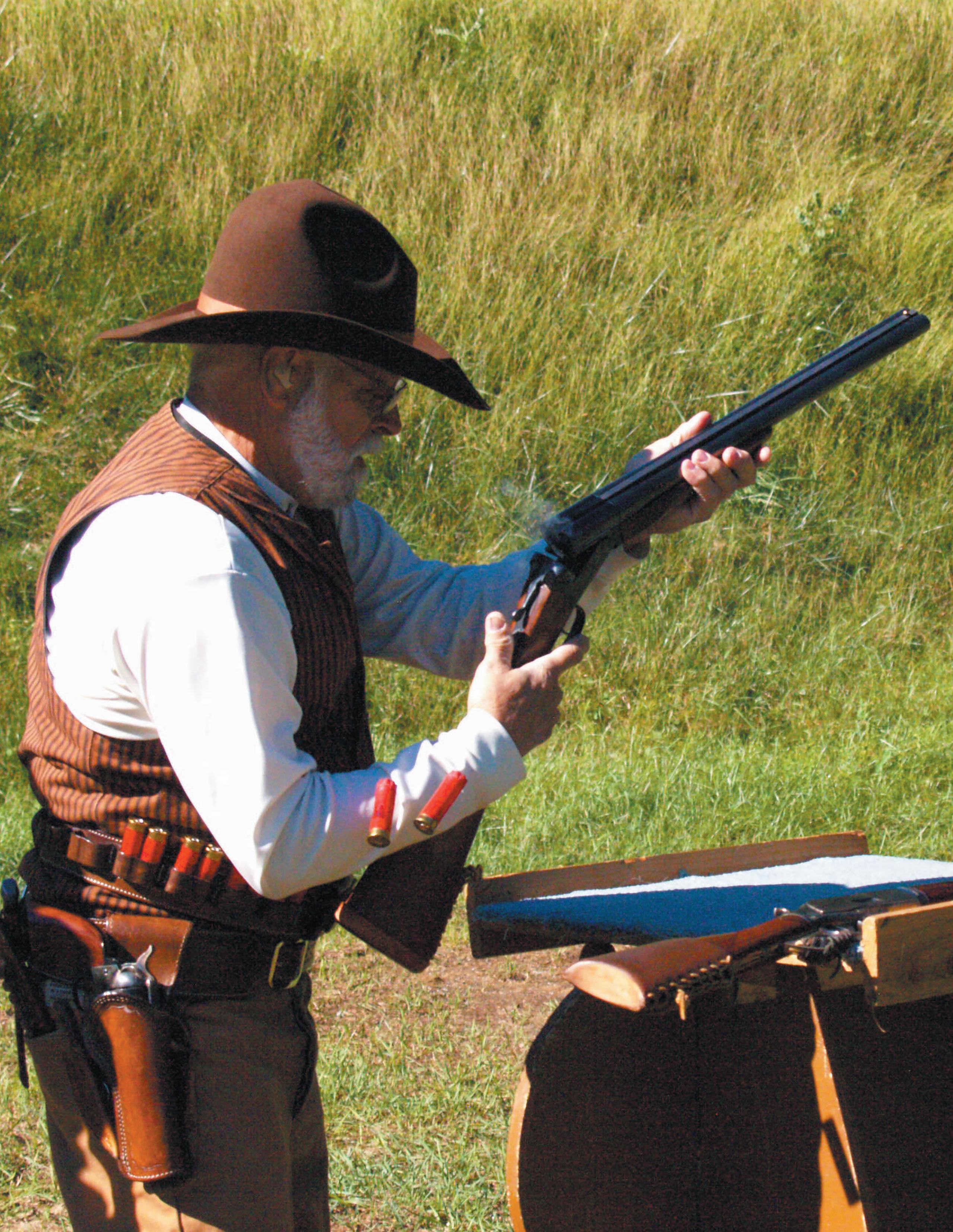
kick out the empties, reload, and hit both target again squarely. Done. Was I accurate? Not really. I need way more practice. Was I fast? No way. Never intended to be. Was I lucky? You bet I was.
Remember I mentioned there are two types of shooters in Cowboy Action? Here’s the difference in a nutshell. I just described how I made my way through the first stage. My time was 116.48 seconds. Moss, one of our top shooters, and a competitor in his own right, shot the stage much more accurately and in 39.17 seconds. Now, did we both have fun doing it? We sure did, and that’s the whole point of the exercise. We both got out of it what we were looking for. Each to his own.
The progression of the next four stages goes about the same as the first. Different scenarios present different problems, but no major dif ficulties are encountered. There are no penalties rendered, and no equipment malfunctions are experienced. In ev ery case, we have the fun we sought as we bounce lead off steel targets and hear that unmistakable ping. There’s nothing like it. Nothing can take its place.
While all this goes on, Jessica quietly snaps photo after photo, recording the action as well as the periphery occurrences. She blends in so well, she is there, but not so you’d notice, never disrupting, never distracting. The result is a well documented but uninterrupted course of events topped off with a group shot, sort of a rogue’s gallery of Cowboy Action.
Well, I said at the beginning of this piece I doubted you’d be disappointed. I hope I was right. I tried to show you through my personal experience at the
match just how enjoyable it can be. And that doesn’t even include the laughing and scratching we do between stages. It’s like meeting old friends you haven’t seen in a while. You pick right up where you left off last time. These are a great bunch of people, the kind you want to be with.
If you’re interested in looking into Cowboy Action, check out the Single Action Shooting Society’s website, sassnet. com, for the location of the affiliated club nearest you. Find out when they shoot and show up with ear and eye protection. Talk to them. They’ll be happy to give you chapter and verse on what you’ll need in order to join. And, most likely, if you ask, somebody will loan you a rig and some weapons and ammo, and you can try it out. I guarantee you’ll find it an absolute hoot, and you’ll be hooked. And, as I mentioned in the beginning of this article, if it takes you back to your childhood as it does me, and I find precious little to do that these days, that’s all the more reason you’ll want to pursue Cowboy Action Shooting.
—BOB GIEL was born in New York City and now lives in New Jersey. He has been in love with the Western genre since he was a kid, and absorbed so much of the period through books, movies, and television that he feels as though he could easily have been there himself. The grit and the determination of the people who carved a way of life out of the frontier have helped shape the way Bob lives his life. Because of that era, he keeps true friend. Bob is Saddlebag Dispatches’ Senior Editor, as well as a published novelist. His latest novel, Shawnee, was released in June.

NATIVE AMERICAN FOOD, originating in the new world, accounts for 60% of the food the world eats. It’s an astounding accomplishment. Originating in Meso-America, beans, corn, tomatoes, okra, spicy and sweet peppers, squash, potatoes, citrus, sweet potatoes, amaranth, and countless varieties of foods are the mainstay diet of the

There are bush varieties and climbing beans, needing support as they grow up a wall or some type of trellis. String beans have indigestible strings which develop as the pod matures. These can be removed by hand before cooking in the young bean stage. Stringless varieties are more tender without the strings, until reaching the dry stage. Young green beans can be enjoyed raw or
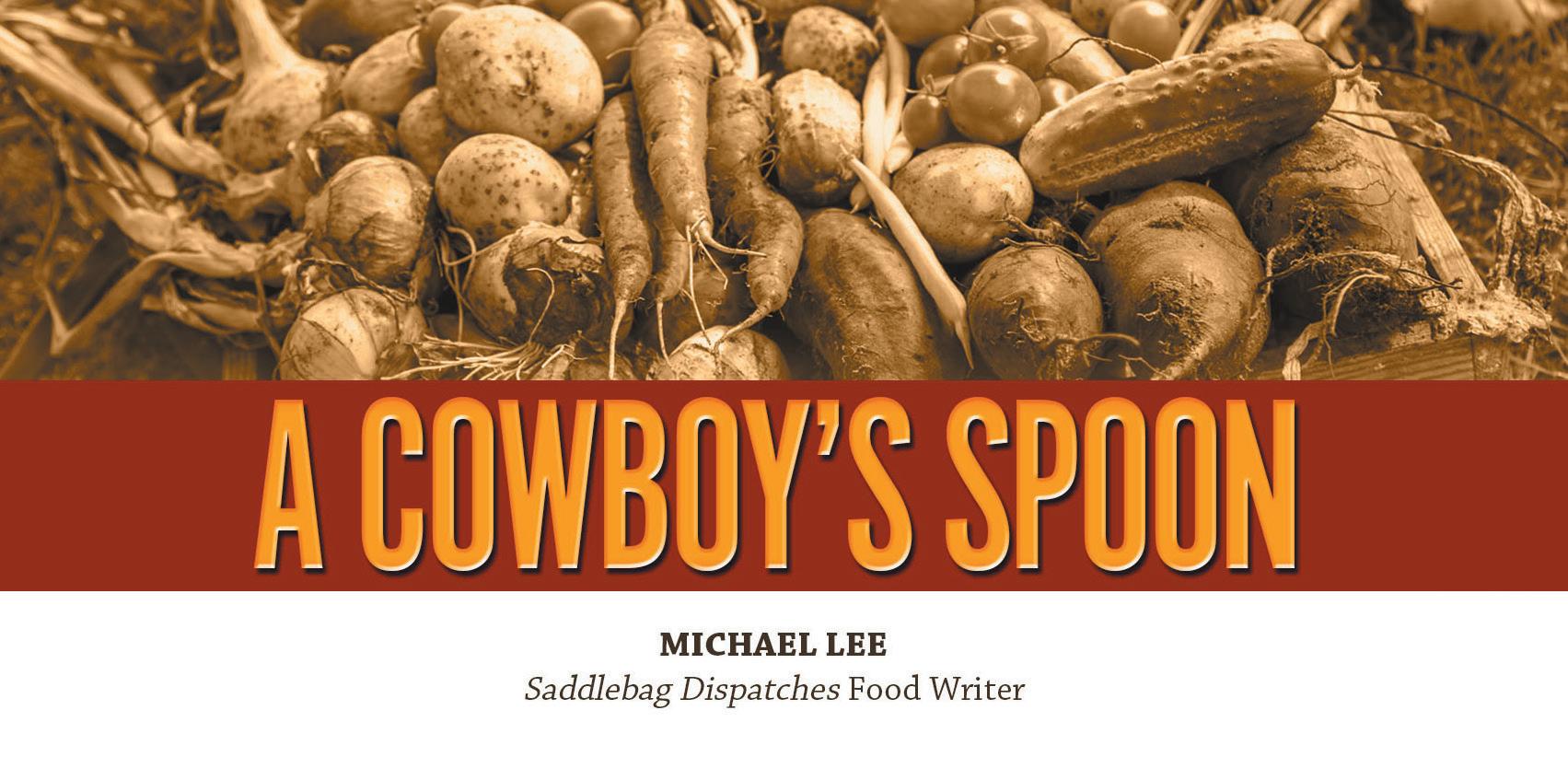
Appaloosa, or Jacob’s Cattle beans, were from the pueblos of the southwest and are purported to have been found in an old clay jar discovered in the cliff dwellings of the Anasazi. Beans, reported to be 1500 years old, sprouted and bore fruit! They have been propagated over the years and are abundant enough to be available to gardeners.
I have dedicated some areas of my garden to native bean varieties. The idea of growing something ancient moves me in ways I can’t express. That connection to our past is very real, deeply felt, as I realize I have a place in time and history. It grounds me to the earth and sky and spirit.
My native crop choice were the Anasazi beans (red and white splotched beans) and Red Mandan (magenta red) beans brought back by Lewis and Clark, now propagated and sold to the public through Thomas Jefferson’s Monticello farm in Virginia. My attempt was, at best, feeble. I grew these varieties in pots, as I wanted to protect them and nourish them like delicate fragile nymphs of the forest and field. I barely harvested enough to replant. I forgot these beans are tough and
cover, before cooking. You can pour boiling water over the dry beans to speed up the soaking process. It also helps to discard and refresh the cooking liquid at least once to help remove gas producing compounds. Lectins in beans are a glucose binder, excellent for longer insulin digestion, avoiding blood sugar spikes. Most lectins are beneficial, except the ones in kidney beans. These are toxic and need long term soaking and cooking. If not cooked properly, they may be toxic and anti-nutrient to the consumer. When it comes to hard dry beans, the longer you cook them, the better their nutritional absorption.
Before the Spanish invasion, diabetes, heart disease, arthritis, and inflammatory conditions were unknown to native culture. According to Dr. Josh Axe, co-founder of Ancient Nutrition, Anasazi beans have been shown to fight cancer and diabetes (Axe).
Their lectins are anti-tumor, immunomodulators (aids immune responses), anti-fungal, and antibacterial. Dr. Axe has also found that Leukemia patients given Anasazi protein lectin extracts had results showing these extracts killed the leukemia cells.

three months of only eating pre-Spanish contact, native foods, including beans. Besides arthritis, volunteers suffered diabetes, high cholesterol, and high blood pressure, not improved with modern medical methods. Blood tests were documented to show any differences at the end of the experiment. After three months of testing, all participant’s blood work showed improvement. Diabetes normalized, inflammatory conditions reduced, and blood cholesterol levels improved. Their biggest problem was finding the types of native based foods allowed. They came up with a picture chart of the native foods, as names of food may have changed by modern times, or they shared from communal native gardens.
Roxanne Swentzell and Patricia Perea wrote a cookbook based on the native diet, ThePuebloFood Experience:WholeFoodsofourAncestors. She stresses food native to her area. She feels food should be eaten that are native to the area lived in. Shrimp is not native to the southwest as an example. Cactus is not native to New England.
I continue to be amazed at the knowledge of the Native American cultures.
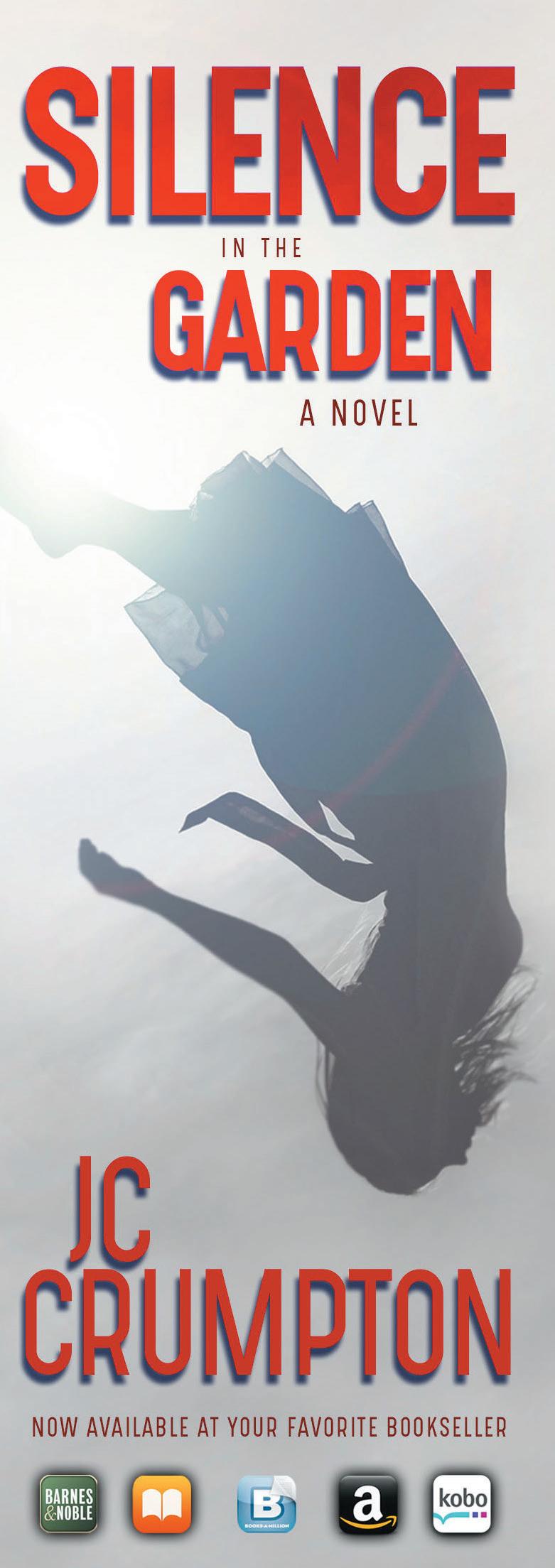
Trade flourished from coast to coast and from the Caribbean to the Canadian forests. Beans and corn seed grown in the southwest were traded into the northern areas, adapted to the climate and soil by the locals—primarily women—and developed into varieties that would only grow in that area of the country. It is an amazing story of cultures, that had few written languages, no wheel, no early ferrous metallurgy, and still, their rich culture matched anything in the European world at the same times in history.
Next time you enjoy a bowl of beans or sit down to a fancy dinner with green beans almondine or a lemony hollandaise, you are a part of the history of the generations of people who came before you.
Want to be healthy? Eat real food, like the common bean.
DR. MICHAEL LEE is a contributing correspondent for Western Writers of America’s Roundup Magazine, as well as Saddlebag Dispatches full-time food writer. He lives Del Rio, is now available in bookstores everywhere.

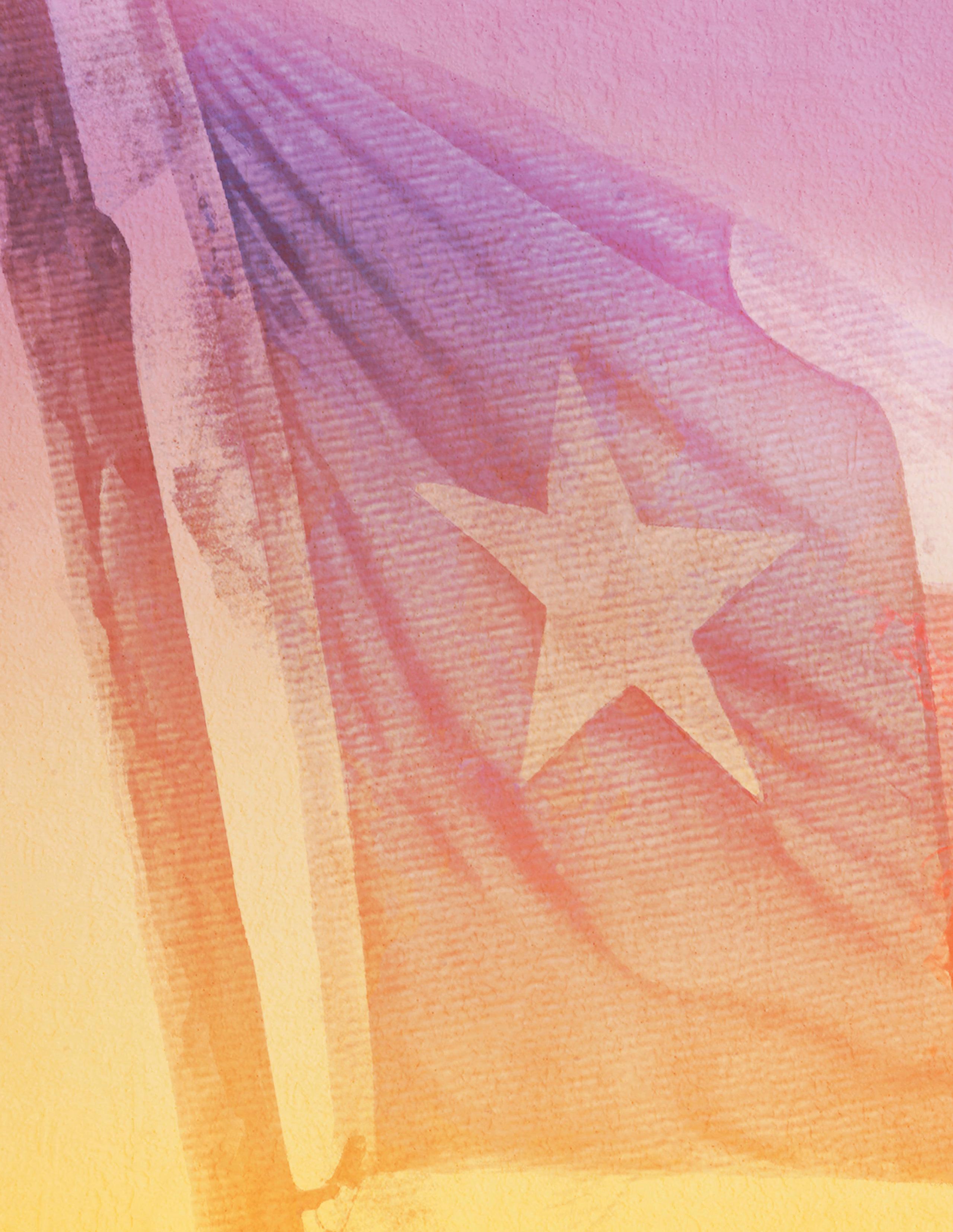
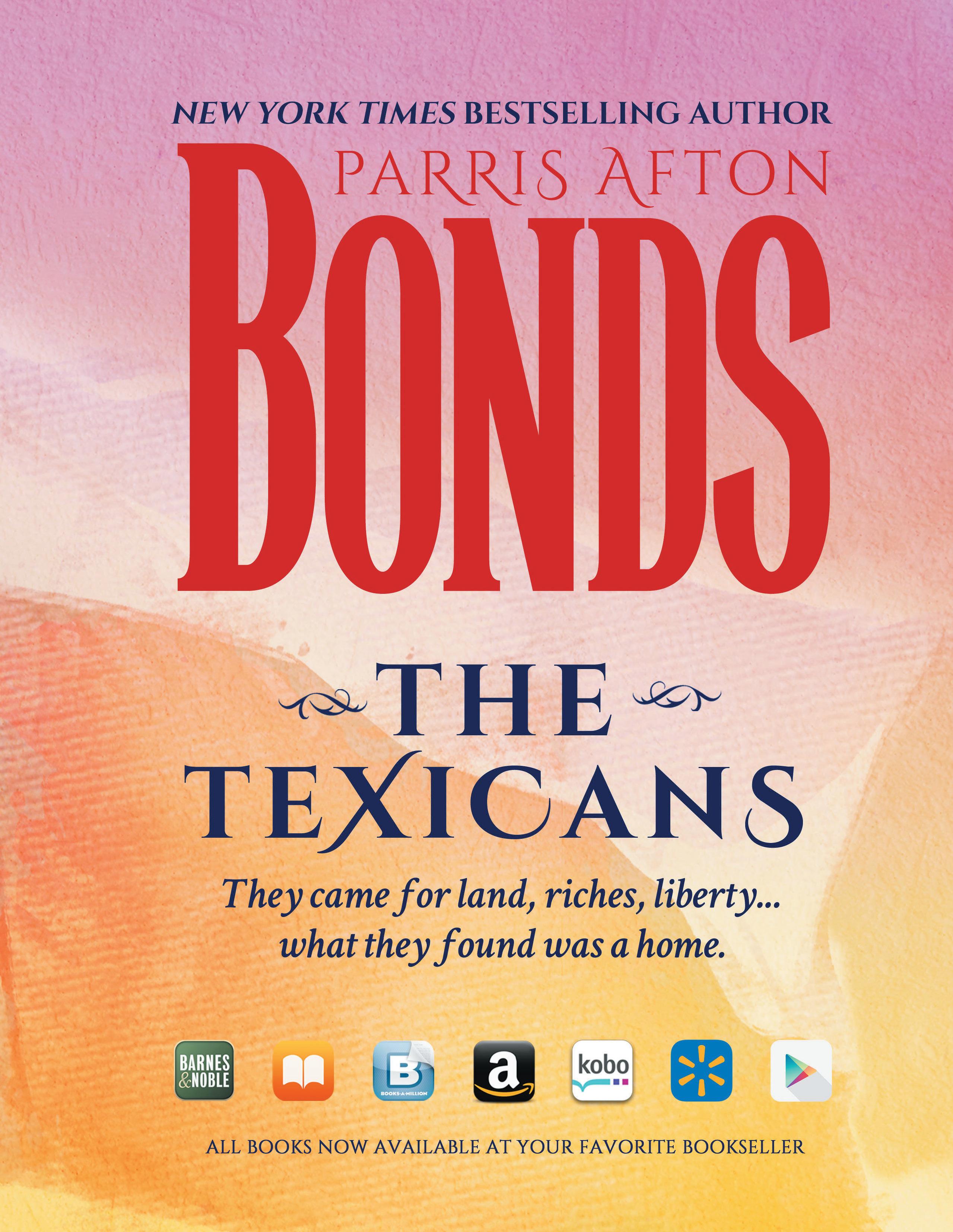
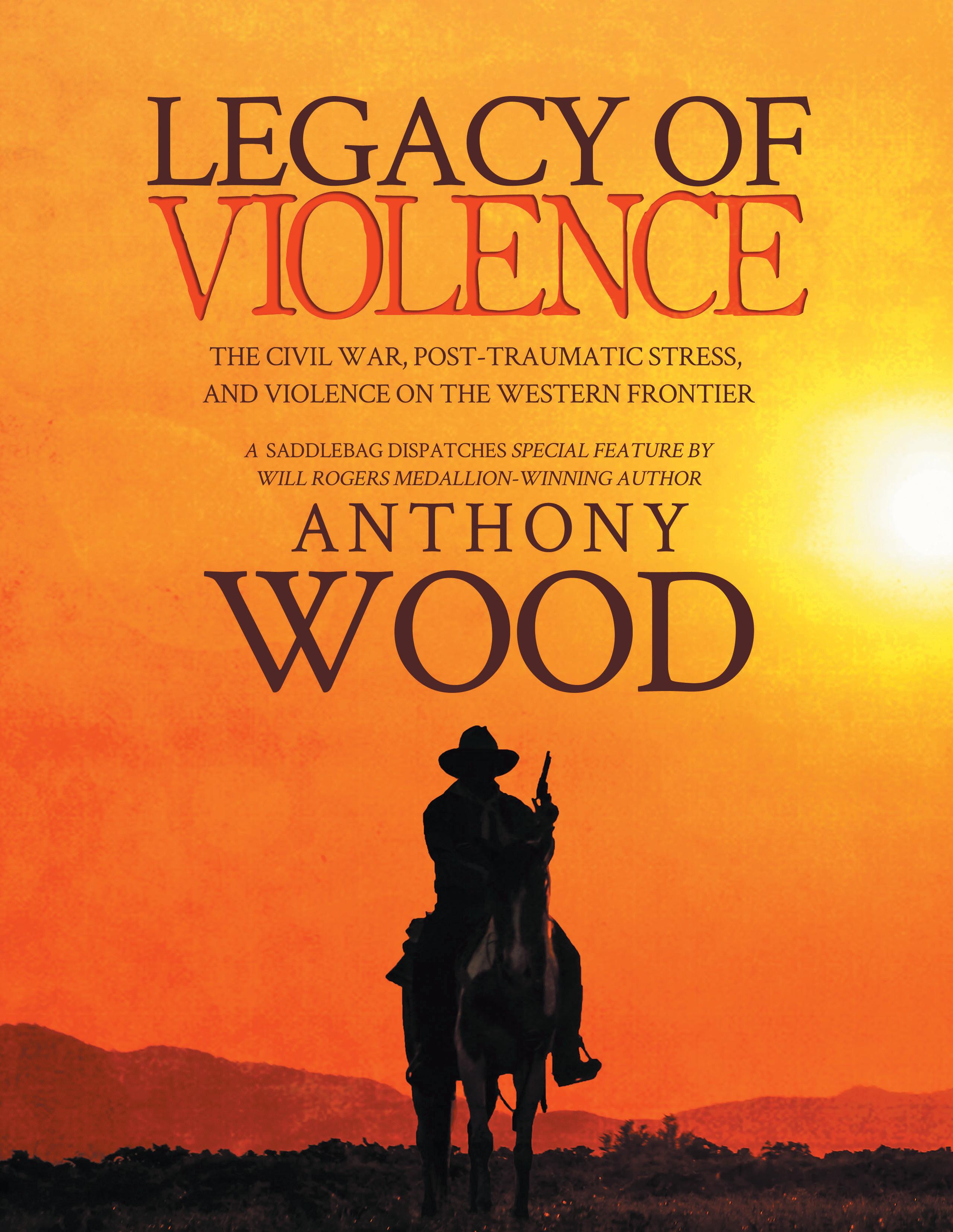
THE LURE OF THE American West brought pioneers and settlers from nations around the world. “Go west, young man,” had been a call to the American spirit since the early 17th century and ended as recently as the admission of the states of Arizona and New Mexico in 1912 and Alaska in 1959. Moving west has been embedded in the American psyche from the days when Americans migrated from the Atlantic coast into Tennessee, Kentucky, and the Northwest and Mississippi Territories. There, the boundary of the west once was the Father of Waters.
The massive move to what we now call the Old West began with President Thomas Jefferson’s purchase of the Louisiana Territory from Napoleonic France. An expansionist attitude, coupled with a “Promised Land” theology and economy, called Manifest Destiny, soon emerged. It fostered the belief that Americans possessed a God-given right to conquer the continent and broaden the nation’s borders to include the great expanse
of the west. Americans believed the land was theirs for the taking like the Israelites of old, by force or other means, despite the rights of indigenous peoples and residents from other nations who had lived there for centuries.
This expansionist attitude was so embedded into the American psyche that as the Civil War began, a 20-by-30-foot mural, Westward the Course of Empire Takes It’s Way, was painted by Emmanuel Gottlieb Leutze behind the western staircase of the House of Representatives chamber in the U.S. Capitol Building. His idealized impression of settlers carving out lives in the wilderness and prospering served as propaganda to Americans seeking new beginnings and better lives. An extreme, individualistic frontier spirit armed with the desire to escape the confines of the State was etched into the minds of westward moving Americans. Conquering and possessing land and property owned by another was fomented by the government, blessed by God, and even expected, if a person called himself an American.
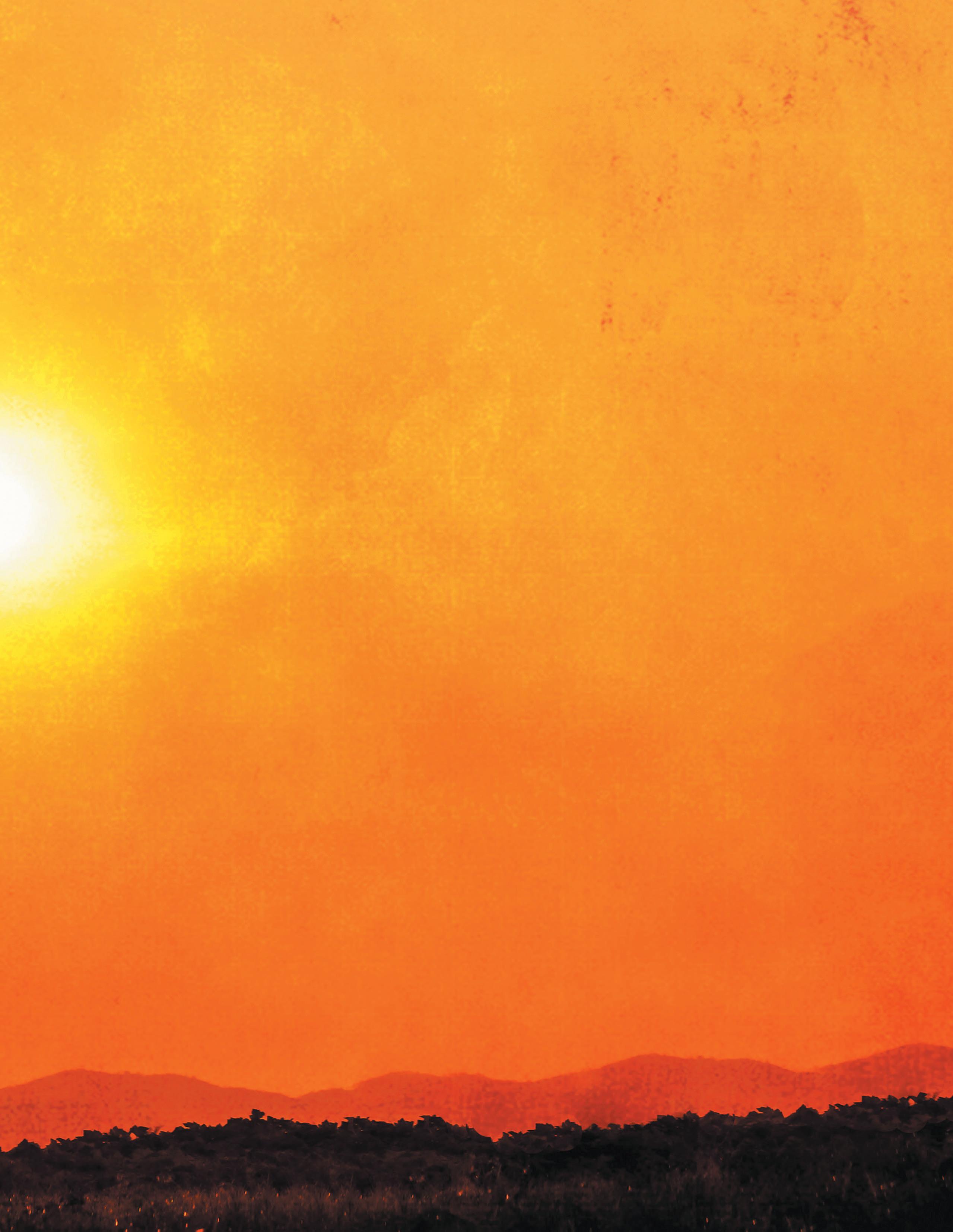
THE DEEPEST
OF WAR CANNOT BE SEEN, BUT THE GREATEST MANIFESTATIONS OF THEM CAN.
WESTWARD THE COURSE OF EMPIRE TAKES IT’S WAY, A MURAL BY ARTIST EMMANUEL GOTTLIEB LEUTZE, PAINTED BEHIND THE WESTERN STAIRCASE OF THE HOUSE CHAMBER IN THE US CAPITOL BUILDING. IT IS PERHAPS THE CLEAREST REPRESENTATION OF THE GOVERNMENT-SPONSORED CONCEPT OF MANIFEST DESTINY IN THE UNITED STATES FOLLOWING THE CIVIL WAR.

As Frederick Turner postulated, “American democracy was born… of the American forest, and it gained new strength each time it touched a new frontier.” What caused it to succeed was an egalitarian attitude, little care for high culture, and willingness to be exposed to, and even participate in, extreme conditions and brutal violence.
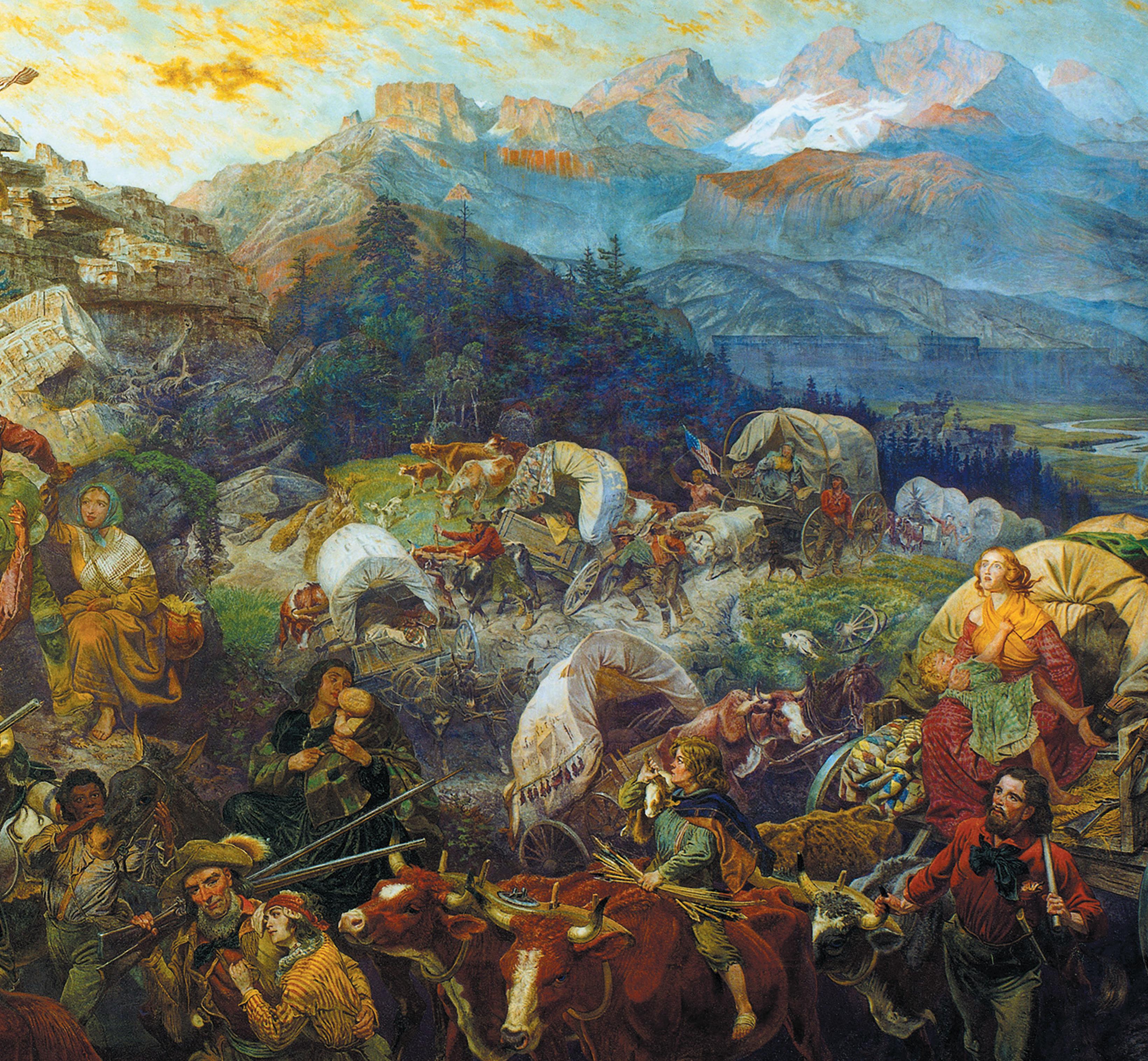
By the end of the Civil War, many war-weary Americans were looking for just that—better lives and freedom from restriction. They took to the frontier on foot, in covered wagons and steamboats, and later, trains to begin another great migration to
what we now call the Old West. And though the guns of the Civil War became silent and rebuilding the nation became central, the damaging effects of war ran deeper than wrecked cities, ruined economies, freeing slaves, and massive human losses suffered because of the war.
A farmer breaks ground for spring planting in the back forty. His chest swells in pride as his eightyear-old son guides the mule. The boy’s mother calls to wash up for supper. Father wipes his brow and says he’ll be along in a moment—a moment too
late. Thundering hooves, men shouting, guns blazing, smoke rising, loved ones screaming…. His only reward for racing to the scene is a home going up in flames, a murdered family, a saber wound to the face, and being left for dead. He awakes to bury the remains of the family he always wanted. He sifts through ashes of a good life now gone having seen things he never should have—things that couldn’t be, shouldn’t be. But he did witness the horror. It was real, and he will never be the same. With a soul empty as a dry well, he knows not where to go or what to do. He finally musters the courage to dig through the smoldering remains of his ruined home to find his old pistol and begin an inconsolable blood vengeance against his attackers. A guerilla force appears, offering no comfort or consolation but an opportunity to find inner peace in the violence of revenge, even reckoning.
Civil War and Western movie enthusiasts know this story all too well—TheOutlawJoseyWales, starring Clint Eastwood. While the movie contains minor inaccuracies, it portrays the effects of wartime violence that took its toll on men who survived the war and went west. In the film, Josey Wales experienced

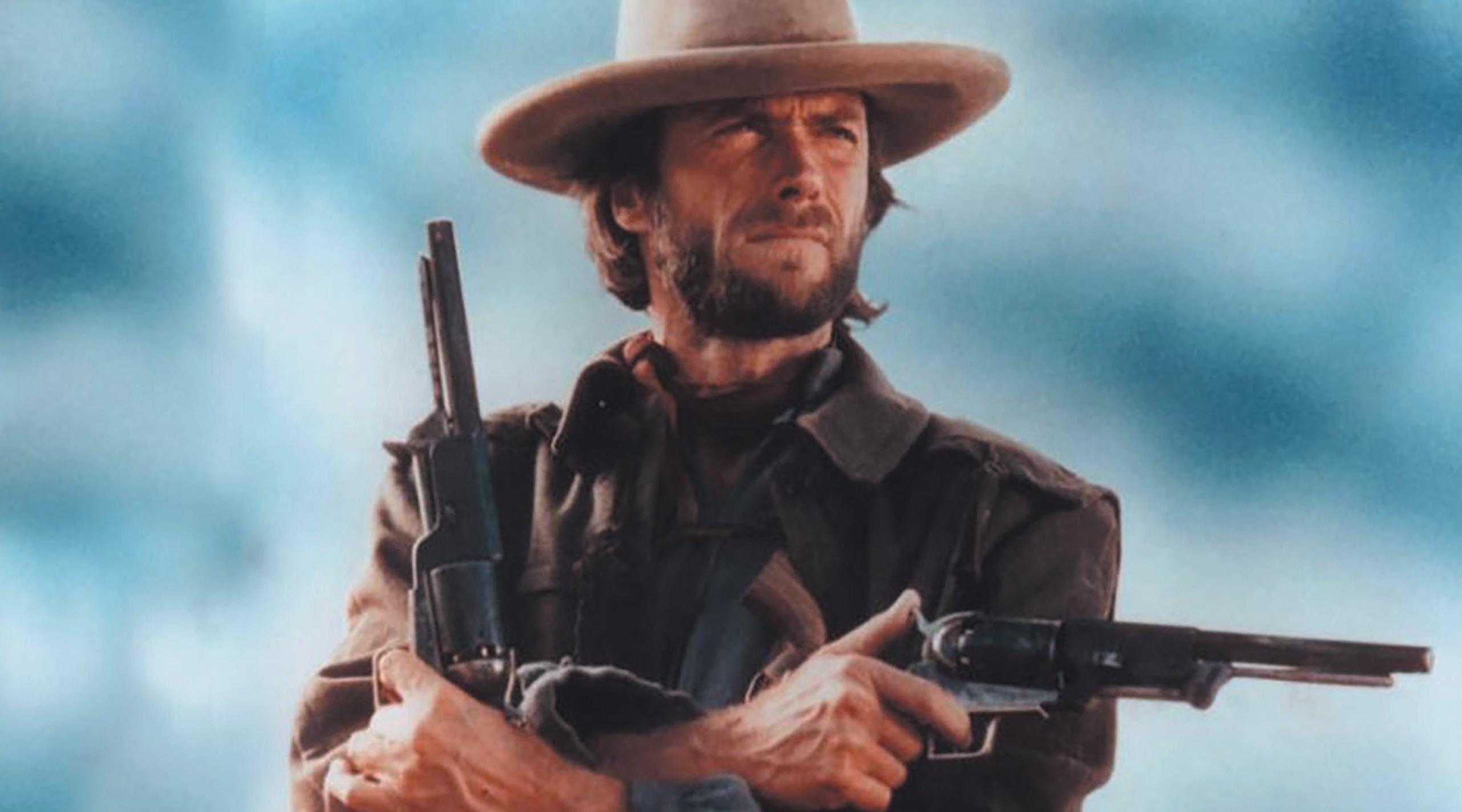
regular flashbacks, the desire to be alone, inability to socialize well and exhibited a controlled and determinate rage that allowed him to mercilessly kill without so much as a twitch of feeling or remorse—all symptoms of a deeper issue within.
Those deep issues, and others, we now classify as one who has been diagnosed with Post-traumatic Stress Disorder or PTSD. The consequences, and hence the behavior of traumatic stress, lingers long after the event. For Josey Wales, and thousands of other former Civil War soldiers, the guns may have fallen silent, but the war would never end.
A PTSD RESPONSE IS triggered by experiencing or witnessing a life-threatening traumatic incident to his/her person or persons dear to them, as in wartime combat, terrorism, natural disaster, sexual assault, or serious physical and emotional injury and family abuse. This most often happens to those whose minds and emotions are unprepared to receive such unexpected horrors. Traumatic events happen outside the normality of what the person has experienced as ra-
tional and real, thus having a damaging effect upon the victim’s core value and emotional system. Even so, the event becomes real in the victim’s mind and thus has no place to go in the normality of their cognitive or emotional understanding. This type of trauma can shatter a person’s view of how the world should work as they have experienced it.
Persons with PTSD suffer increased arousal and reactive symptoms, such as a startling easy, inability to concentrate, sleep loss, easily angered or irritated, and engaging in reckless and self-destructive behavior. People, places, and things that once were safe, now associated with the traumatic event(s), become threats, making life difficult to manage. This can render the victim of PTSD dangerous, incalculable, unhealthily self-protecting, and unpredictable in relationships, familiar and not. Research shows that most people diagnosed with PTSD are not violent, but those whose traumatic experience included extreme violence against their person or loved one, are more likely to exhibit violence in relationships, especially family.
Depictions of PTSD go back as far as the Epicof Gilgamesh, who suffered the torment of “recurrent and intrusive recollections and nightmares” related to his friend’s death. Herodotus, Hippocrates, the Gisli Sursson Saga, and the poem Ramayana all describe soldiers who experienced PTSD. Dr. Johannes Hofer coined the term “nostalgia” to characterize Swiss soldiers who suffered despair, homesickness but also anxiety and sleep loss due to wartime trauma. In the mid-1700s, Josef Leopold in his Inventum Novum, described traumatized soldiers as listless and desiring solitude, reporting all efforts did little to help them. The term “nostalgia” became a common medical diagnosis for PTSD, though some attributed soldier’s symptoms to weakness that affected men with “feeble will.” “Gross Stress Reaction” (1952), PTSD, or even “shell shock” (first used in 1915), were designations neither used nor understood during the Civil War.
THOUGH THE TERM PTSD was not entered into the lexicon of psychological diagnoses until 1980, the effects were abundantly clear during and after the Civil War. Not much was known of Post Traumatic Stress during the Civil War, but reports indicate soldiers who experienced wartime horrors exhibited all the classic signs of the body’s physical and emotional reaction to extreme stress. Veterans with “invisible wounds” suffered equally alongside those with physical wounds.
Symptoms of soldiers whose mental capacities had been diminished because of war were often misidentified, dismissed, or given oversimplified diagnoses, such as acute mania, soldier’s heart, nervous shock, railway brain or spine, melancholy, nostalgia, dementia, hysteria, feeble will, sunstroke, moral turpitude, cowardice, or more simply, “the War.” Having never witnessed war, death, and destruction on a scale seen in the Civil War, Americans were unprepared for the psychological damage done to veterans afflicted with PTSD. Suicides and divorces spiked soon after the end of the war. Hospitals and asylums were overwhelmed, and often, the treatment led to widespread addiction to opium and morphine.
Thousands of soldiers applied for assistance after the Civil War—blue directly from the federal government, gray from state governments in which they resided—and physical injury was compensated. Little to no money was allotted to ease the suffering for mentally traumatized veterans. It fell to the families to care for their damaged loved ones, a financial and emotional strain at the very least. Family accounts offer stories of traumatized veterans sleeping with weapons for protection against enemy attack.
Witnessing brothers and friends die in battles like Gettysburg with over 50,000 killed or perishing from starvation, disease, bullets, and cannon shrapnel in a 47-day siege such as Vicksburg, experiencing the horrors of a prison camp Union or Confederate, or
suffering under the knife and saw in primitive medical facilities filled with screaming patients, men who survived couldn’t help but have been psychologically damaged by the daily threat of death—not to mention the constant emotional toll of worrying for families and friends back home.
One such case was that of Owen Flaherty who joined the 125th Illinois Infantry. Following the brutal four-day Battle of Stones River, he became sullen, ill-tempered, experienced sleep loss, and sunk into what one soldier termed, a “deep study all the time.” He experienced recurring night terrors and fell into deep despair until he encountered an earth-thundering cannon contest near Resaca, GA. After that battle, he would wander aimlessly at all hours, ate and slept in solitude, and was short-tempered. He once barged into camp from picket duty screaming that the Rebels were attacking. No sign of gray soldiers could be found. After the war, he fared far worse. He lost his job and drove away his son in anger. His irritability and violent outbursts forced the police to his home several times. His unpredictable and uncontrollable anger flared at any mention of the war. Soon, he found himself homeless and living on the street. Finally, he was taken to the Indianapolis Hospital for the Insane where he was diagnosed with “acute mania.” Not long after, he was taken to the poorhouse where the medical examining board took note of his irrational anger, violent tendencies, and his hallucinogenic fear of imaginary persons who intended to kill him. Doctors concluded his state of mind was due to mental shock mostly likely suffered in military service. As Ron Soodalter put it in his article, “The Shock of War,” “Today, Flaherty would most certainly be diagnosed with post-traumatic stress disorder.”
It was not uncommon for psychologically damaged soldiers unable to cope with life after the Civil War to experience what we now call PTSD. Reports indicate that up to one fourth of all residents in soldier’s homes suffered mental anguish. And though not all cases of mental illness in soldier’s homes could be attributed to
the horrors of combat, some were unmistakable.
One New Jersey boy admitted to a Washington military hospital, suffered physically with only a minor knee wound. But, as volunteer nurse Louisa May Alcott recorded, “He lay cheering his comrades on, then counting them as they fell around him, often clutching my arm, to drag me from the vicinity of a bursting shell, or covering up his head to screen himself from a shower of shot; while an incessant stream of defiant shouts, whispered warnings, and broken laments poured from his lips”—all symptoms of what we now call PTSD.
Confederate veteran William James, from Alabama, was captured and held in a northern prison camp. When released, he departed physically ill and his thinking “much disordered.” Returning home to his life of farming, he was unsuccessful in managing his uncontrollable violent nature, even threatening to murder his father and ending his own life by hurling himself down a well.
A matron serving in the Illinois Soldier’s and Sailor’s Home reported one such case. As she made her rounds one evening, Emily Lippincott witnessed “an
HEAT OF BATTLE. THIS DEPICTION OF THE BATTLE OF STONES RIVER NEAR MURFREESBORO, TENNESSEE OVER NEW YEARS’ 1862-1863 SHOWS ONLY THE BAREST INKLING OF THE FEROCITY OF THE BATTLE.
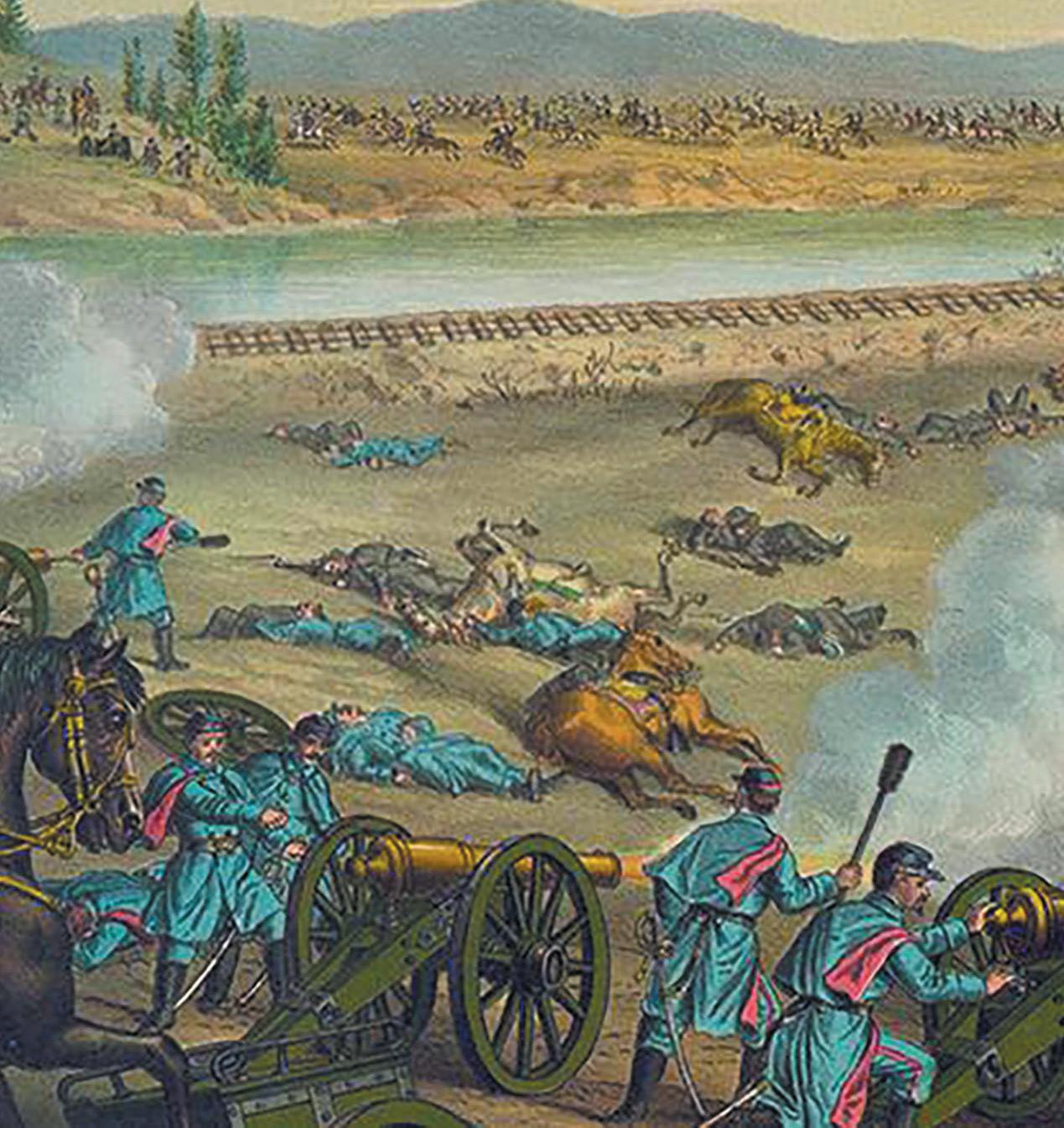
insane man” who was fighting “his battles over again.” She reported that he “fought the rebels all day… tearing his bed and clothes until exhausted.”
One aging Shiloh veteran, resident Joseph Lapp, was reported as experiencing recurring delusions of persecution. He finally convinced the home managers to allow him to reside outdoors in a tent to be alone. On occasion, in fits of rage, Lapp would destroy flower beds and even shredded and burned the tattered remains of his blue uniform.
In the 2016 PBS Original Series, Mercy Street, a physically unwounded Confederate soldier, Tom Fairfax, exhibits all the classic symptoms of the invisible wounds of war. He experiences extreme hallucinations and whose Doctor, Foster, finds his only and best cure for Tom is opium. With his inability to understand his own situation, he declares that the doctors “don’t understand what’s wrong with me.” And, they don’t, which reminds the audience that even today, PTSD is still misunderstood. Cowardice and other stigmatizations were often leveled against those who tried to interpret the effects of wartime trauma on soldiers.
Post-war asylum records reveal numerous cases of veterans exhibiting uncontrollable rage and threat to family members. Take the case of one young man who had enlisted in the 46th Georgia Infantry.
Neal Story returned home after the war to start life again but found himself “wanting in his former energy and activity.” He became increasingly violent, even threatening to kill his family and reduce the house in flames. The family constructed a special small cabin in which to confine him. When that didn’t succeed, he was institutionalized and further declined.
Many former soldiers suffering such symptoms eventually had to be committed to state or county mental facilities, or as in the case of the author’s own second grand uncle, Columbus “Lummy” Nathan Tullos, diagnosed with acute mania. He fought in the lunette next to the Stockade Redan with the 27th Louisiana Volunteer Infantry during some of the most vicious Union assaults and suffered the horrific siege of Vicksburg. He then joined the 1st Mississippi Mounted Rifles (Union) a year and a half after Vicksburg surrendered and participated in Grierson’s Winter Raid on the Mobile and Ohio Railroad of 1864-65. Acute mania was often given as a cause of death for veterans who had been institutionalized or hospitalized for mental illness due to wartime trauma. In other words, it was a convenient catch-all phrase for what they did not understand at the time. Lummy passed away in the Leavenworth Soldiers Home in Kansas, June of 1904 at age 69 and is buried in the National Cemetery there.

The saddest story to be told is the number of cases of suicide that spiked after the war. Eric T. Dean, in his ShookOverHell, reports that over half of the residents of an Indiana Civil War veteran’s home were either suicidal, attempted suicide, or were successful. The toll of the war on some was simply too great, and these men could only put the war behind them by taking their own lives.
These few instances serve as examples of damaged soldiers trying to cope with PTSD. There were undoubtedly hundreds, even thousands more, and little was known by doctors as to how to help them. For many, the war only ended when they were finally laid in the grave. As one former soldier wrote, “That sickly sentiment which would have us believe that the soldiers on either side can ever forget the privations they have endured, the painful marches, the dreadful battlefields, their suffering in field, camp, and prison… is more than foolish.”
SOON AFTER THE CIVIL War, U.S. doctor Jacob Mendez Da Costa attributed particular physical symptoms unrelated to combat wounds to be the result of the heart being overstimulated. The condition soon was labeled “soldier’s heart,” “irritable heart,” or “Da Costa’s Syndrome,” for veterans who experienced PTSD-like symptoms—missing home, feeling sad, trouble sleeping, and anxiety. “Soldier’s Heart” was used to describe changes noticed in veterans returning from combat, many of which were not good. It referred to the physiological model based on heart and circulatory system being altered. “Nostalgia,” in kind, referred to psychological disturbances experienced by war weary veterans. Both have been determined to be PTSD. And though the condition was being studied, little was known as to how to help soldiers experiencing PTSD. The Civil War finally ended but not its traumatic effects.
As the nation tried to leave the horrors of the war behind and replace them with positive spins, it ensured veterans would not be cared for as they should be. There is no way to know how many Civil War veterans suffered from PTSD. Many, haunted by their war experiences, learned to cope with the long-lasting effects while others were unable to deal with the ongoing painful memories. Not all soldiers suffering were destined to be alcoholics, commit suicide, or end up in a soldier’s home. Some went west to start new lives.
free land if settlers would improve the property and stay five years. Men and their families traveled west for opportunity to prosper, but so did those with intentions not so pure. Some went with the attitude that what’s yours can be mine if I take from you, by force if necessary. Coming out of the violence of the Civil War, many had the willingness, ability, and skills to do just that. As men and their families went west, they found a vast wilderness with virtually no law except the justice a man could muster up for himself. That meant a man with a fearless ability to use a gun and little else to live for could become quite prosperous.
THE COUNTRY’S CALL FOR Manifest Destiny also captured the hopes of men who’d lived through horribly traumatic wartime experiences. Men who experienced wartime violence didn’t just go back home to their farms and businesses, they also went west and took their damaged souls with them. Many, with nothing left to return home to, found hope and opportunity, as Americans had always seemed to, and went west. The rugged, independent, individualistic, conquering mindset etched into the spirit of Americans moving west served these men and women well.
The Homestead Act of 1862 offered 160 acres of
Some continued their military careers and carried their wartime trauma with them, as in the case of Ranald S. Mackenzie. Graduating first in his 1862 West Point class, Mackenzie quickly rose in rank fighting in battles from Second Bull Run to Five Forks. An officer who led from the front, he suffered six wounds, indicative of the intensity of his combat experience. His PTSD symptoms showed up several years after the war while serving as an Indian fighter and was wounded a seventh time—a Comanche arrow in his thigh in 1871. In 1881, Mackenzie suffered a mental break down yet continued intense frontier service. A subordinate reported that Mackenzie became “irritable, irascible, exacting, sometimes erratic, and frequently explosive.” His superiors finally had to take charge of Mackenzie, whose behavior had become erratic with episodes of high/lows, unprovoked violent outbursts, estrangement from others, and feelings of persecution—all symptoms of a person suffering from PTSD. Mackenzie was taken to the Bloomingdale Asylum for the Insane in New York City in December 1883. He was medically retired from the Army and died not long after his 48th birthday in 1889.
In “Distant Drummer,” an episode of Gunsmoke, retired U.S. Cavalry Sergeant Dan Shay (Victor French) portrays a similar story. He is forced to face his past after meeting a young Indian boy whose father was killed in a massacre. Shay participated in the murderous attack and experienced regular flashbacks and other symptoms that clearly would be diagnosed as PTSD today.
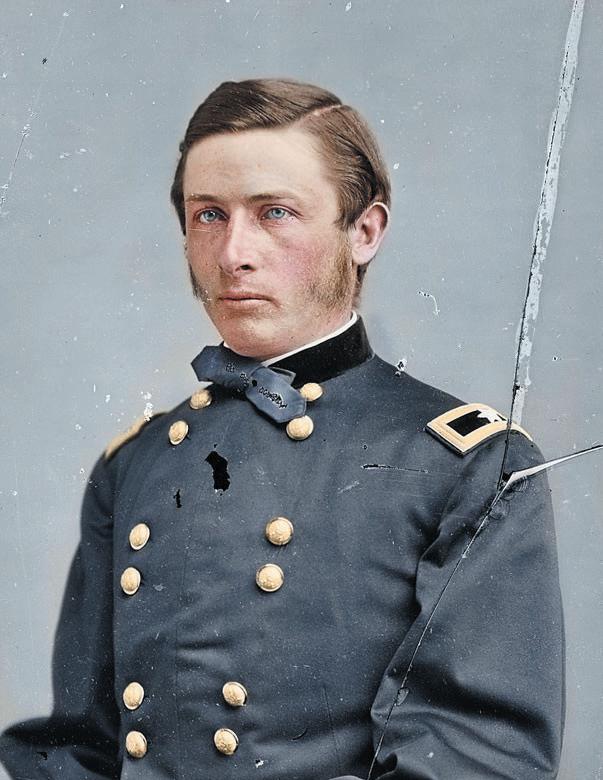
SOME OF THE MOST famous outlaws of the American West started their careers as bushwhackers, guerillas, and raiders, particularly connected with pro-Rebel secessionists who harassed the Union Army relentlessly. Georgia, Alabama, Arkansas, Kentucky, the two Virginias, and even California felt the devastating effects of bushwhacker violence, with the most intense in Missouri and Kansas. Pro-Union guerilla fighters, sometimes called Jayhawkers, from Kansas carried on cross-border raids for the Union. And though Partisan Rangers were sanctioned by the Confederate Army, some self-organized Missouri bushwhackers carried out their destruction outside the chain of command in both Missouri and Kansas. There was a fine line between whether bushwhacker attacks were authorized military actions or simply the work of terrorists bent on criminality. Whether a man served with Jayhawkers or Partisan Rangers,
both brought unspeakable horrors down on soldier and civilian alike.
Bank robbers Frank and Jesse James and Cole Younger developed their taste for violence riding with guerilla leaders like pro-Confederate William Quantrill. Quantrill was a schoolteacher and career outlaw who suffered a tempestuous childhood. He joined a gang of bandits who rode down escaped slaves in the Missouri/Kansas countryside. When the war broke out, Quantrill readily joined the Southern Cause to begin a series of brutal raids as a Partisan Ranger wreaking havoc on pro-Union sympathizers.
At the height of his Rebel guerrilla career, Quantrill destroyed the city of Lawrence, Kansas, a known anti-slavery stronghold. Some suggest Quantrill inflicted so much death and damage on the town in retaliation for the death of four women who had given aid to his Raiders, one of whom was the sister of his notorious and close ally, Bloody Bill Anderson. Quantrill, with as many as 450 raiders, murdered around 150 men and

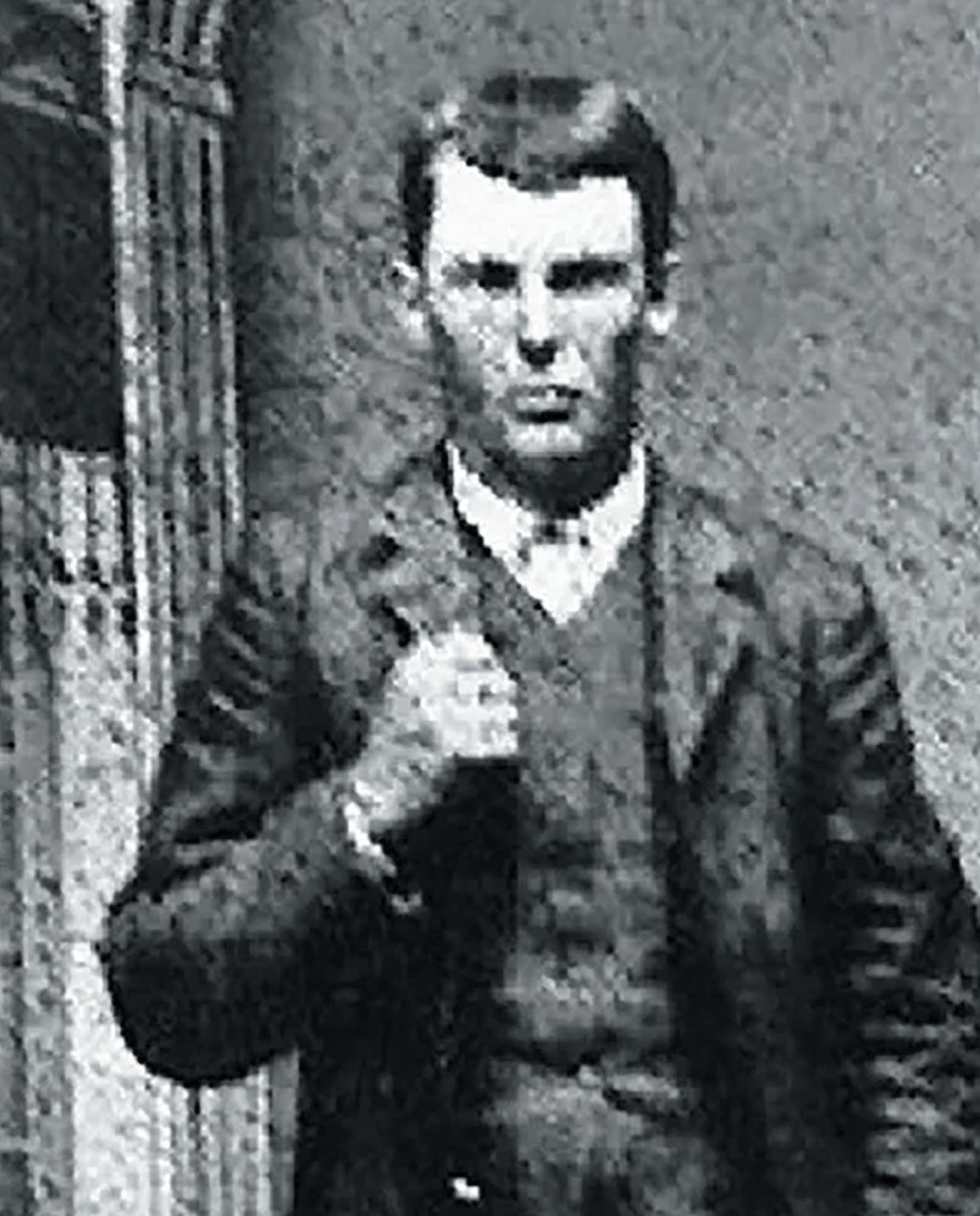
boys old enough to carry a rifle. All but two businesses in the town were burned.
In retaliation, General Ewing forced thousands of Missourians to abandon their homes while Union troops marched in behind them enacting such trauma and devastating destruction that the three and a half county area along the Kansas border became known as the “Burnt District.” Wintering in Texas afterwards, the sentiment in favor of Quantrill and his raiders was so strong that his sympathizers lynched Collin County Sheriff, Captain James L. Read, for shooting two of Quantrill’s men who had recently killed a farmer. Americans had become too familiar and comfortable with wartime violence. The traumatizing events experienced by soldiers, raiders, and civilians created and contributed to the lawless violence that soon would encompass the West.
After a disagreement among his men, Quantrill’s raiders splintered into several groups, sending their outlaw destructiveness in every direction. Quantrill’s strategies and merciless tactics are quite often noted
as having influenced many ruffians, bandits, outlaws, and hired guns as Americans sought new lives in the West. Quantrill was wounded in combat in Kentucky and died shortly after in June 1865. His absence was filled by young men like Frank and Jesse James who willingly carried on the cause. The skills these men acquired in war would prove invaluable to launching their lawless careers.
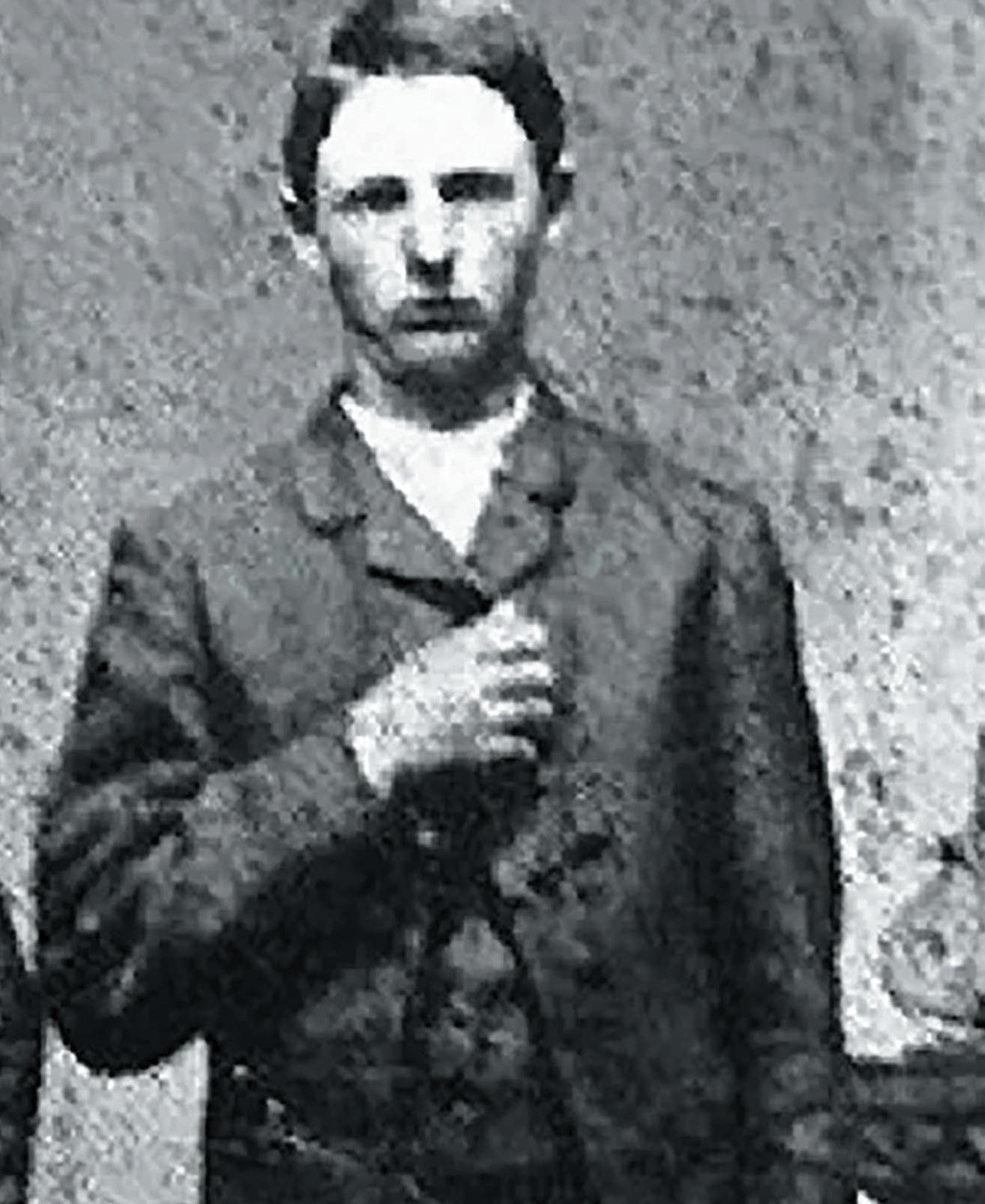
The 2016 remake of The Magnificent Seven characterizes such men. Goodnight Robicheaux (Ethan Hawke) is one of seven men enlisted by Sam Lincoln (Denzel Washington) to protect the small village of Rose Creek. In the story, he is nicknamed the “Angel of Death,” having 23 confirmed kills during the Civil War Battle of Antietam. He’s an excellent marksman, hard drinker, and obviously suffers from PTSD. Although he suffers from Civil War battlefield trauma and fails in his mission at times in the story, Goodnight certainly proves his worth as a hero when the need arises. His fighting talents and troubled state of mind are attributed to his experience in the Civil War.

Soldiers, guerillas, and bushwhackers weren’t the only ones who experienced extreme and devastating trauma. Families and children often took the brunt of wartime horror with little in the way of help as to how to process events that stressfully overload the mind. Federal soldiers too often tortured and executed suspects without trial. They burned the homes of families suspected of giving aid to or hiding bushwhackers. The atrocities were equally devastating, gray and blue, on the psyche of terrorized families, especially the young men.
Robert Ewing Younger, born thirteenth of fourteen children in Missouri in 1853 to Henry and Bersheba Younger, is a prime example. Eight-yearold Bob watched as Union soldiers murdered his fa-
ther, a Union sympathizer, and burned their home to the ground. This event certainly must’ve traumatized young Bob. Still just a boy himself, Bob’s older brother Cole joined pro-Confederate Quantrill’s Raiders to get revenge as a “bushwhacker.” In fact, Bob’s older brothers and Frank James were categorized by Broadwater in his, Boy Soldier and Soldier Boys, as just that, boy soldiers. Senior in the gang was Frank at 18 when the war began. Cole was 17, Jim 13, and John just 10 years of age. It should be expected that young men will experience severe trauma having witnessed and participated in such violent atrocities.
By 1868, the Younger brothers were in full outlaw mode and formed a gang with Frank and Jesse James.
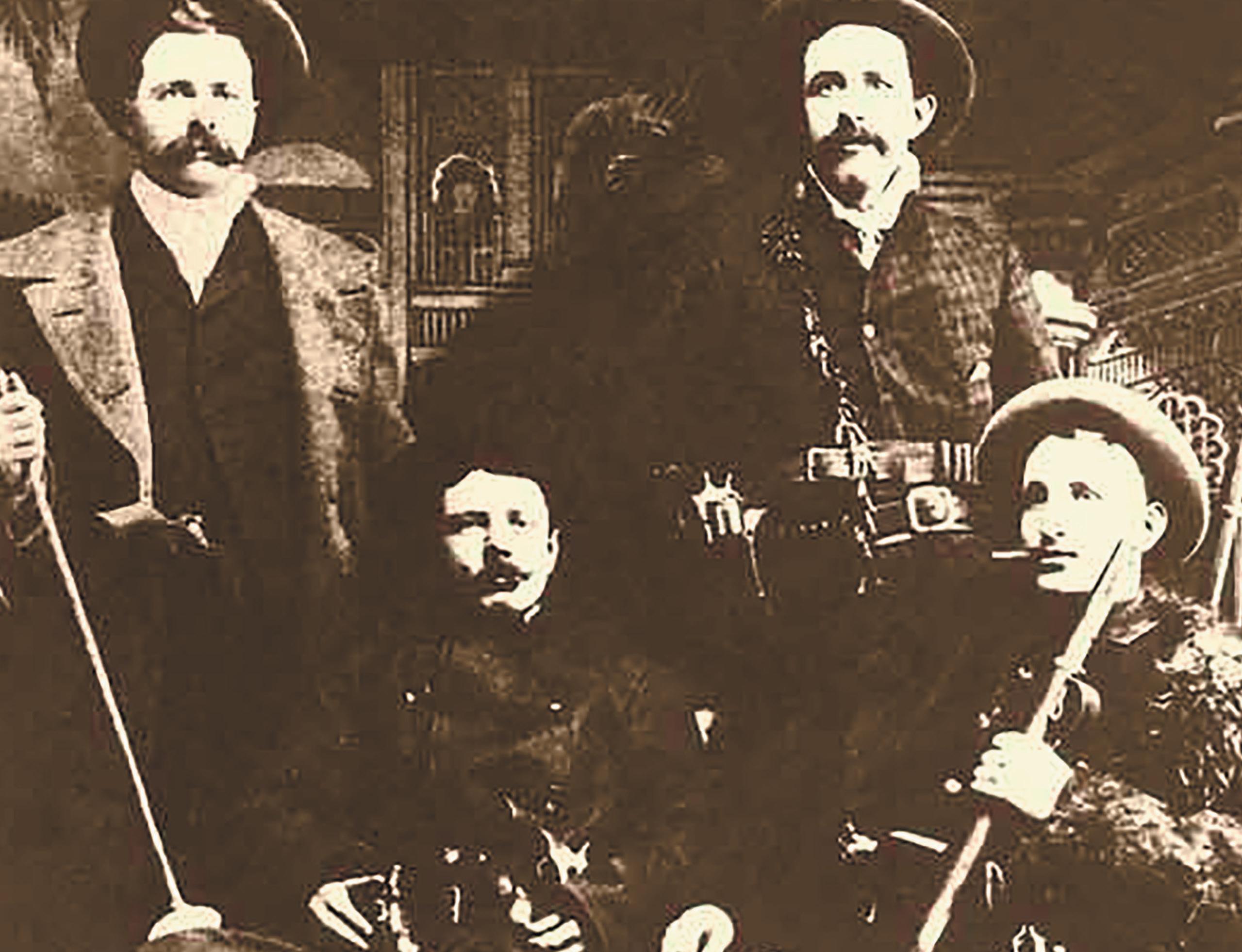

Young Bob is credited with being the first to join the newly formed James-Younger Gang that eventually met its demise in 1876. They spent nearly a decade terrorizing and murdering Unionists as well as robbing banks, trains, and stagecoaches across Kansas, Missouri, and neighboring states. The trauma experienced by young Bob certainly must have factored into his life of outlawry. His brothers and the Jameses simply provided the opportunity through which his childhood traumatization could be played out. Bob and his two brothers were wounded trying to rob a bank in Northfield, Minnesota.
Twenty-year-old Clay Allison enlisted in the Confederate Army as an artillerist in 1861 but was medically discharged due to an old head injury rendering him incapable of service. Less than a year later, Allison rejoined the war under General Nathan
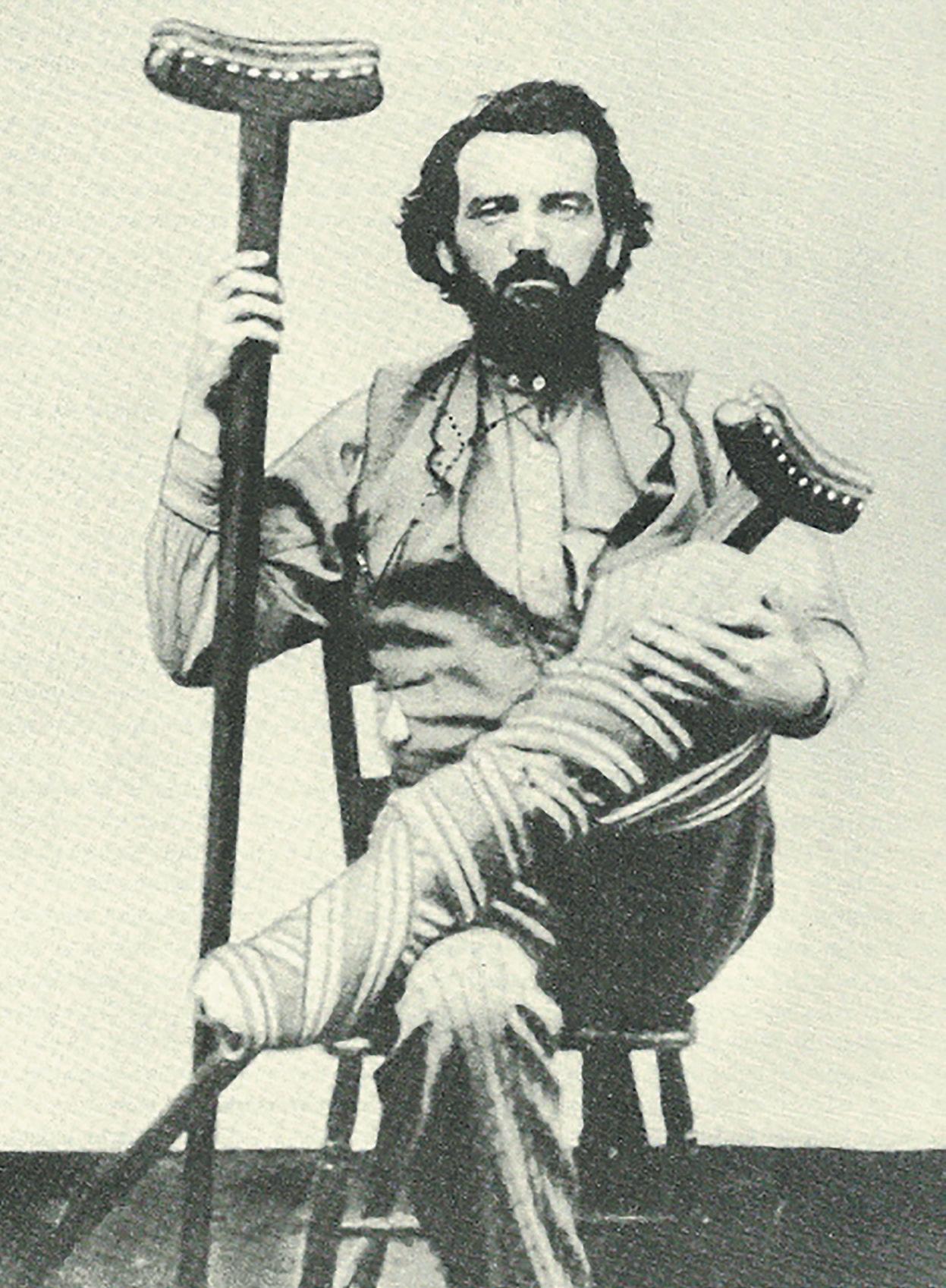
Bedford Forrest. The head injury coupled with the wartime horrors Allison witnessed at such a young age serving with the “Wizard of the Saddle” certainly made Allison a likely candidate for PTSD and may have contributed to his brutal outlawry.
Probably the most famous outlaw who surely must’ve experienced the effects of PTSD was Jesse James. During the war, young Jesse witnessed his mother and sister being arrested, his stepfather beaten and tortured, and his family exiled from their homes in Missouri by state militia. Joining the Rebel guerrillas in 1864 at age sixteen, it was a pretty easy leap for a growing young man to become an outlaw riding alongside men like Archie Clements, one of Bloody Bill Anderson’s lieutenants. Clements is credited with turning his guerilla comrades into outlaws after the Civil War, often targeting banks owned by Union supporters.
Robert Redford’ s The American West (2016), chronicles Jesse James’s transformation from Confederate bushwhacker to outlaw. Forced to “swallow the dog,” another way of saying “taking the oath to the Union” near the end of the war, Jesse begins a spree of bank robberies that soon will target trains. Former Confederate Major John Newman Edwards, who served with General Joe Shelby and escaped to Mexico rather than surrender, returned in 1867 to publish newspaper stories about the James brothers fighting back against Union corruption. His stories elevated Jesse to near Robin Hood status and deified former Rebel bushwhackers Quantrill, Anderson, and the James brothers alongside famed Lost Cause icons Robert E. Lee, J.E.B. Stuart, and P. T. Beauregard. His writings glorified outlawry that had its beginnings in the Civil War. Among other topics, the 8-episode series follows famed outlaw Billy the Kid, the Earp family, and concludes with Jesse’s death by the hand of Robert Ford . All of these outlaws had their beginnings due in part as a result of Civil War horror.
AFTER THE CIVIL WAR, some men were bolstered into continuing the war but in a different way and for different reasons. Men possessing little fear of death and having become accustomed to violence had little choice but to turn to the wrong side of the law to prosper, most often just to survive. With the devastating experiences these men and their families suffered during the Civil War, why would we not believe the depth of the traumas they suffered would not affect their thinking and influence their behaviors resulting in robbery, murder, rape, and other outlawry?
Several factors contributed to the violence and lawlessness of the Old West, and no doubt there are others, but these three certainly should be considered. The concept of Manifest Destiny provided the philosophical and theological foundation that encouraged Americans to believe that it was their God-given right to take lands and possessions not theirs. Secondly, the rugged frontier spirit already embedded in the hearts and souls of the American psyche that preceded the westward migration to some extent had prepared men and women for the violence they might encounter and be prepared to face. Lastly, the traumatic effects of the Civil War on men and their families certainly enflamed and contributed to the violence and outlawry in the rapidly expanding West.
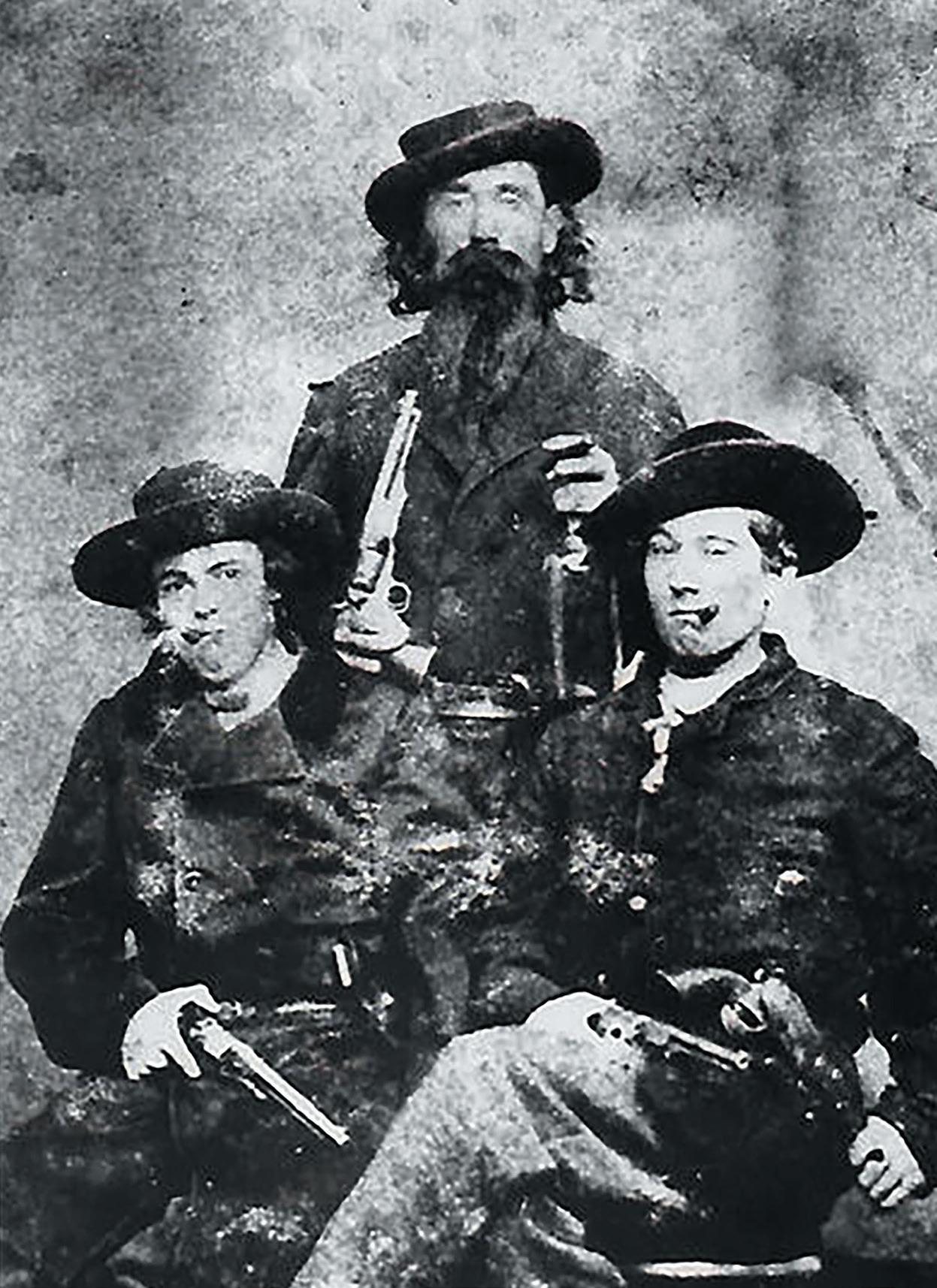
Not enough is known of Old West outlaw’s personal lives to make a concrete connection between wartime trauma and their lawless activities, and even if so, too little was known at the time about the effects of PTSD. Though no definitive evidence proves that outlaws in the Old West carried out violent behaviors as a result of PTSD experienced in the Civil War, the symptoms they exhibited and results of their lives reveal a close association if not a direct connection. At the very least, we can reasonably ask the question of those victims traumatized by war horrors who became notorious outlaws, “How could they not have been affected?”
—ANTHONY WOOD grew up in historic Natchez, Mississippi, fueling a life-long love of history. His ministry in the inner city of Memphis, Tennessee inspired him to co-author Up Close and Personal: Embracing the Poor. He is also the author of A Tale of Two Colors, a series of Civil War Historical novels based on the real-life wartime journey of his ancestor, Columbus Nathan “Lummy” Tullos. His writing has won a number of awards, including a Will Rogers Copper Medallion for his Western short story “Not So Long in the Tooth,” published in the Winter 2020 issue of Saddlebag Dispatches. When not writing, Anthony enjoys researching and roaming historical sites, camping and kayaking on the Mississippi River, and being with family. Anthony and his wife, Lisa, live in North Little Rock, Arkansas.
MASTERMIND. FROM LEFT: ARCH CLEMENTS, DAVE POOL, AND BILL HENDRICKS. ONE OF BLOODY BILL ANDERSON’S TOP LIEUTENANTS, CLEMENTS IS CREDITED WITH HAVING TURNED HIS GUERILLA COMRADES INTO OUTLAWS AFTER THE WAR.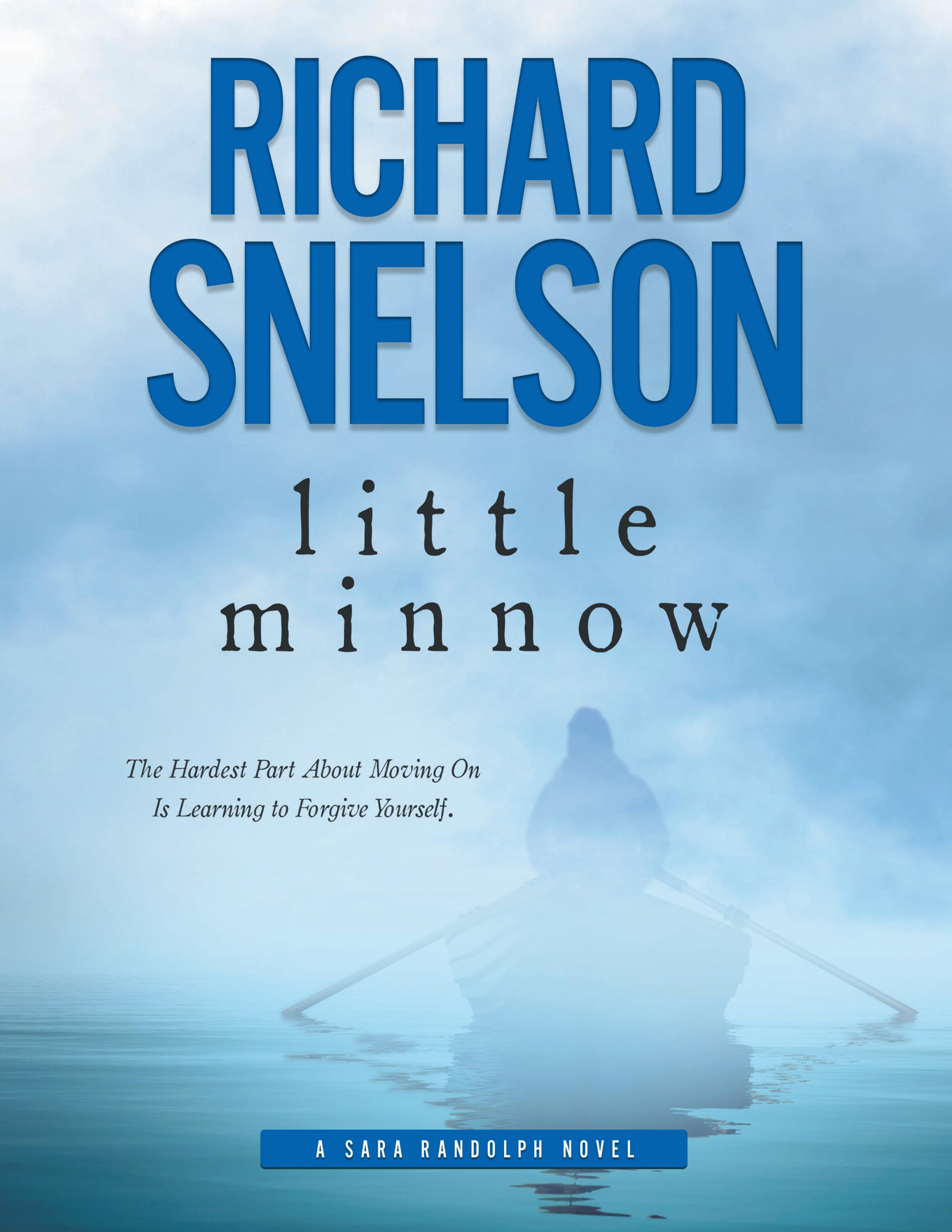
THE SUN LOWERED BEHIND the ranges as he finished his words at the weather-beaten cross atop the ridge. He reached out and touched the name etched into the plaque where the timbers met and covered it with a rough and pebbled hand. As the gold-red ball disappeared behind the distant high peaks he replaced his hat, went over to Napoleon, and heaved himself up into the saddle with a grunt. Astride the bay horse he went down the slow grade of the ridge to the house below, casting a thin shadow on the desert brush. To the east he saw the car coming down the winding road.
“Ah, hell,” Henry Grady said. “Here we go, boy.”
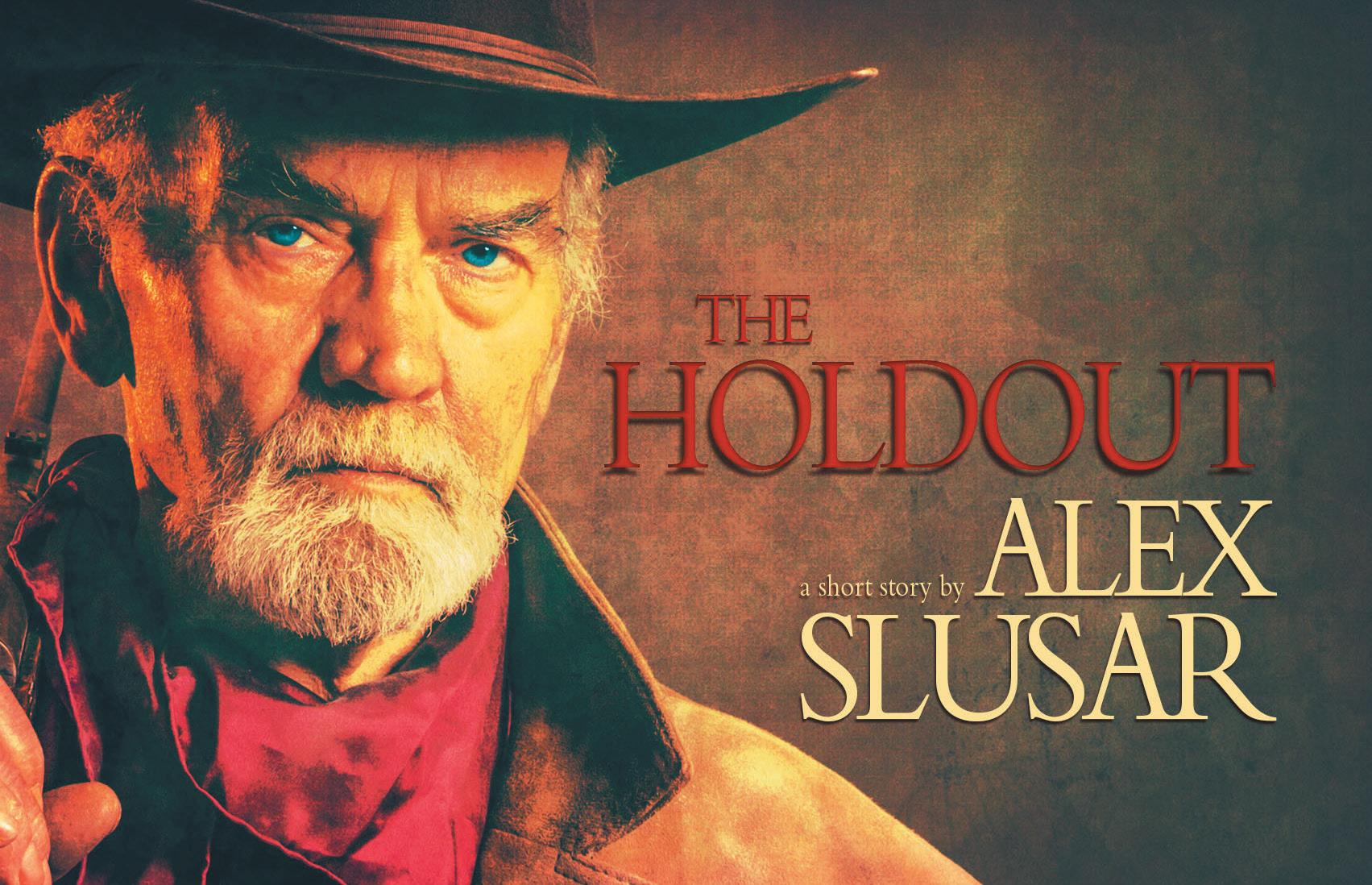
It was a black Ford Model 48 with whitewalls and a thin red band around the hubcaps. The same car that had visited twice before. It stopped in front of the house. The driver’s door opened, and the lawyer got out with the car still running.
Grady cantered Napoleon over and dismounted. He hitched the horse to the post outside the house, patted its neck, brushed his hands off against his work pants, and sauntered over to the lawyer. The same lawyer that had visited twice before. The same
rumpled grey three-piece suit and hair slicked back under his grey hat and pinched, fleshy face with his nose dead-center twitching like a rabbit’s, holding a burgundy leather briefcase by his side. The same lawyer who knew Grady purchased the twenty-acre spread in 1907 when it was a patch of desert with a ridge and a view of the high ranges. The one who knew Grady had built the little low house and barn himself at the base of the ridge and kept cattle until some bad seasons and high demand from the nearby city of Las Vegas left him with none. The same lawyer who knew just about everything.
“It’s been another week, Mister Grady.” The lawyer nodded at the house. “Have you made a decision?”
“I have.”
“And?”
“No sale.”
The lawyer seemed to sway a little and gripped the briefcase tighter in his hand. “Are you certain? It’s a handsome offer. It’s never been more handsome.”
“I’m certain,” Grady said.
The lawyer rattled the briefcase. “Mister Grady, I have the documents here. In a few minutes, with
your pen to paper, we can ensure there won’t be any further trouble. You’ll live out your days in luxury. All you have to do is sign.”
Grady held a moment. “Time was I’d jump at a score like your client’s,” he said. “Those were some good days. Long gone now, though. So you go on back, and tell your man I appreciate his interest, but I ain’t interested myself.”
The lawyer stiffened. His hand trembled as he reached for the door of the Ford.
“Very well, Mister Grady. I’ll tell him.” The lawyer opened the sedan’s door and put the briefcase inside. “You won’t see me again, so I wish you luck in what happens next.”
Grady nodded.
“I don’t know when they’ll come for you. I would leave by morning if you can. That’s free counsel, Mister Grady.”
“I don’t expect to light out.”
“I thought not. Goodbye.”
The lawyer got in the car and closed the door. Grady went up to the window, and the lawyer rolled it down.
“Will he come with ’em?” Grady asked.
“I couldn’t tell you.”
“Man wants my spread bad enough, he ought to come himself.”
“Maybe that’s so. I honestly couldn’t tell you.”
The 48 pulled out of the lot, skittered onto the road, and kicked up eddies of dust which swirled in the taillight glow. Grady stabled Napoleon and went to the bottle of rye in the house pantry. Drinking a glass at the table he looked up at the weathered boltaction Krag rifle with the brass scope hanging over the kitchen.
CARLO RINALDI SAID HIS vision of the West came to him in a dream. He was standing in the
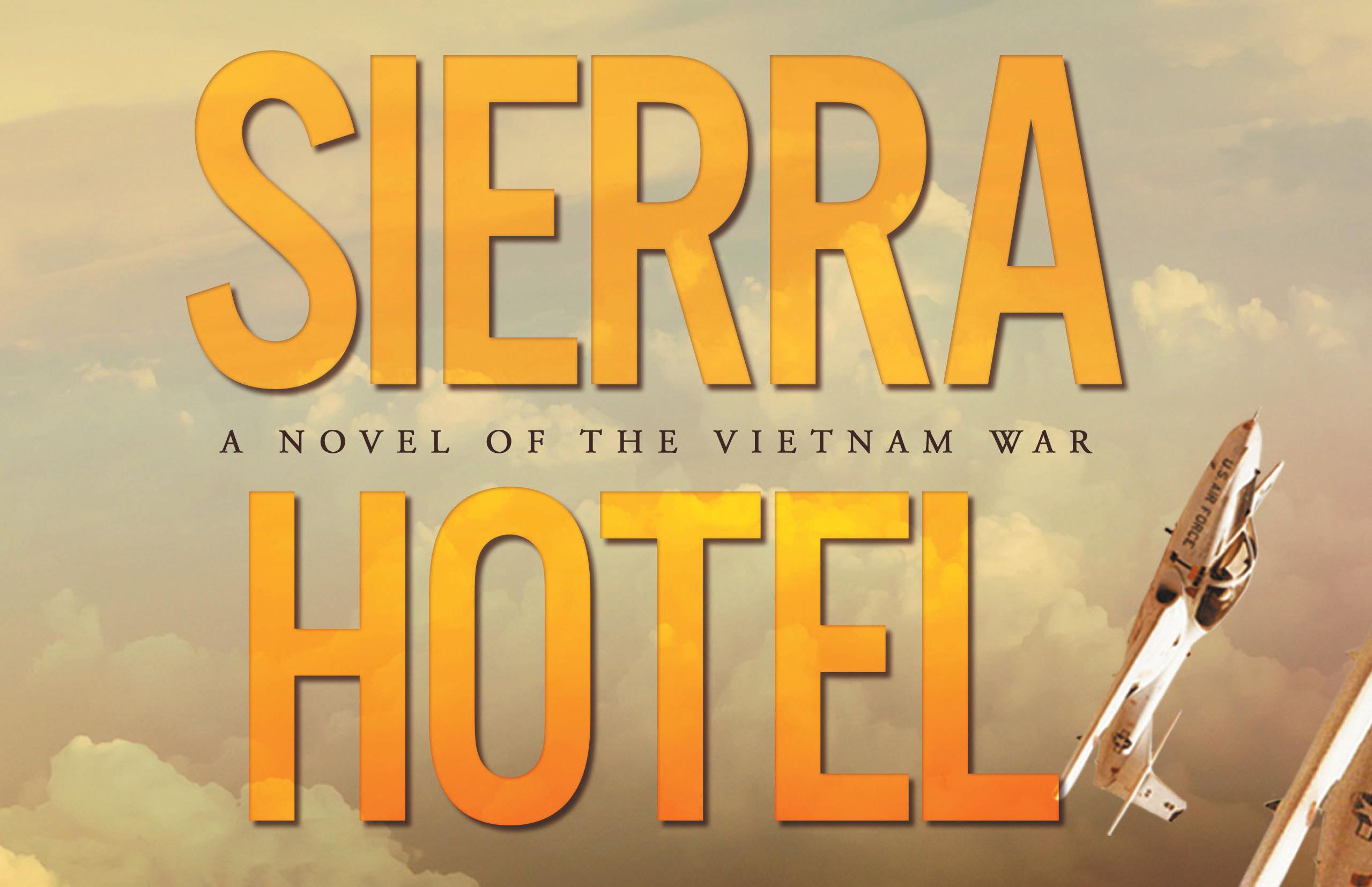
desert, and he saw a white stallion standing in the desert which reared and burst into light. From the light emerged a brilliant white city of pillars. When he woke, he knew his destiny was to build the Oasis in the Nevada desert— Your Refuge In The Mojave!

The truth was that when construction on the Dam began in 1931, someone had to keep the workers on a steady diet of liquor and gambling. Rinaldi’s organization came in, and the profits rolled back to New York, but since the feds got Capone on taxes, there was talk of more scrutiny to come. So, in 1933 he renovated the Continental in the south of Las Vegas and moved his operation westward, including a retainer of fifty enforcers. As more people rolled into Vegas by the month, he envisioned a metropolis of houses and hotels and tables where their money would turn into his money. He invented the dream, and he liked the white stallion because he liked watching Tom Mix ride one on the screen.
Rinaldi was a big man. He liked nice suits and
fine hats shipped from Alessandria. His black hair had touches of grey, and he liked to slick pomade in until it held a mirror sheen and work wax into his trimmed black moustache, so it highlighted his wide shark-grin smile. Though his hands were plump, soft, and manicured they were shared with unusual vigor at many social functions.
Rinaldi liked saying that everybody in the world is a friend you haven’t made yet. Coming from New York he was also a nut for baseball, so he liked to run things by a three-strike rule. He’d try to be friends once, and anyone who didn’t want to be friends got a strike. He would come nicer, friendlier, a second time, and if you said no, that was strike two. He’d come a third time, nicest of all. If you said no after all he’d done to try and be friends, that was strike three, and you were out.
A Bowery delicatessen owner was the last one to get three strikes, and the police had to chisel him out of four separate concrete lumps pulled out of the
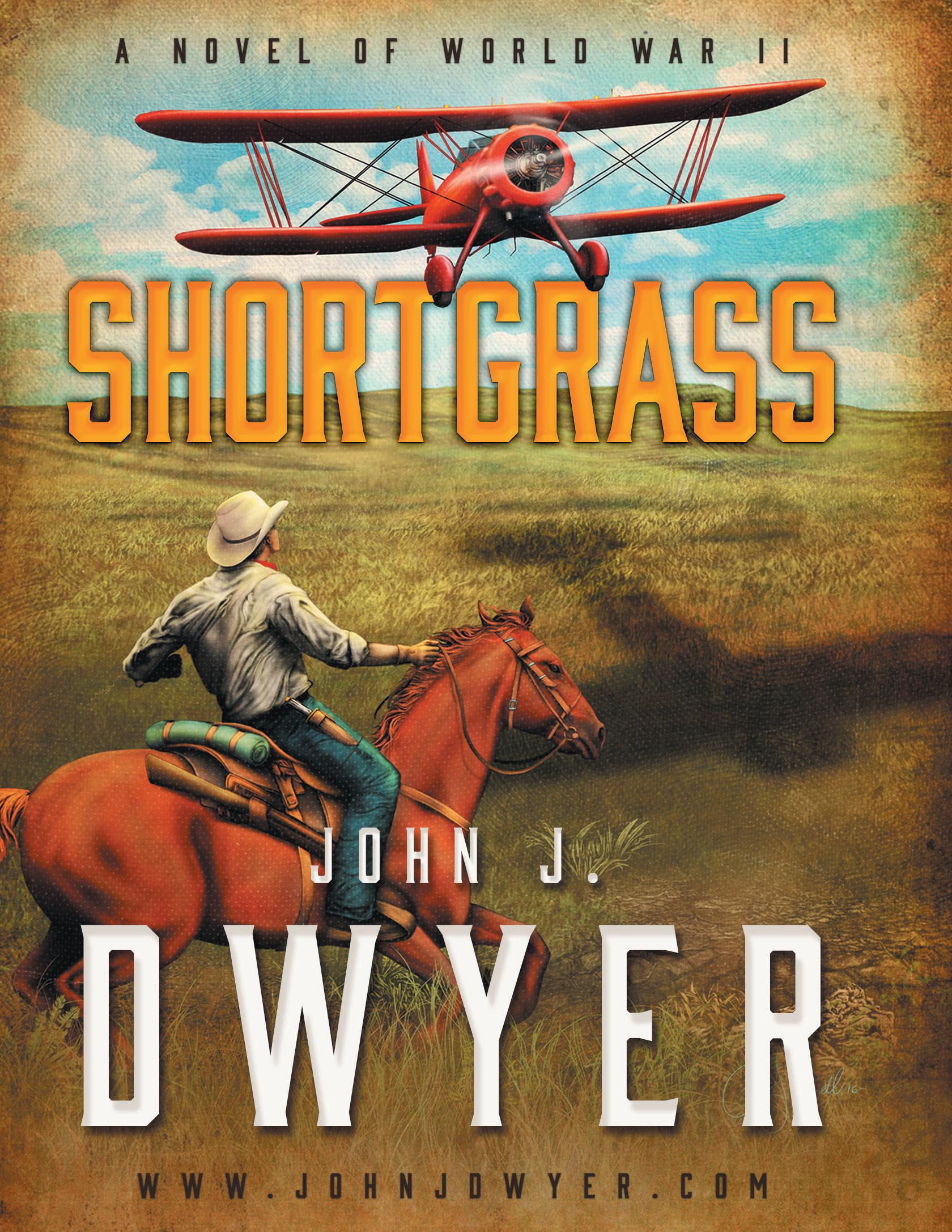
Hudson. The note his wife received said there were twelve in the river, but four was all they ever found.
NOBODY SHOWED BY DAWN. Grady woke with the sunrise. He strapped his gun belt and holster with the .45 Schofield revolver to his waist and made sure there were six in the chamber and another twelve studding the belt. In the morning light he saddled Napoleon and rode toward the city outskirts.
At the Desert Rose Diner, with Napoleon hitched to the water trough outside, he ordered ham, eggs, bacon, and two hot strong cups of coffee. He caught a few eyes holding their gaze on the Schofield while he ate, and he smiled and nodded at them. When he finished, he added two nickels to the bill and went across the street to Granger’s Supply, where Lloyd Granger was at the counter reading the paper.
“Mornin’, Lloyd,” Grady said.
Granger looked up from the paper, and his eyes lit up behind his polished round spectacles. “Morning, Henry! Mighty fine to see you. What can I help you with?”
“Fixin’ a few things.” Grady moved around the barrels and stacked pallets. “I need three bags of nails and a can of kerosene.”
Granger weighed the nails in paper bags and tied them off in canvas wrapping. He hauled up a tin gallon of kerosene from behind the counter. As he tabulated the cost, Grady looked out the window and saw a black Ford 48 coming down the street which slowed to a crawl and stopped in front of the diner.
“Lloyd, you ever see that sedan around here before?” Grady asked. “The one parked outside the diner.”
Granger peered out the window. “Hard to say, seems there’s more of them around here every day.”
“One just like it been coming ’round my place.”
“Is that developer still on you to sell?” Granger asked. “You know, Chester Davis was in yesterday. He’s selling the Bar T.”
“That a fact.”
“Yep. That makes close to the full amount of land so they can build that glitzy-big development. If I had to guess, I think it’d just be you and Marsh and Peterson remaining.”
“Both of them sold last week. It was me and Davis left.”
“Oh.” Granger cleared his throat. “Well, you know, Chester seemed pleased enough with what they gave him. Suppose if you’re the last one to sell, they’ll set you right. Maybe you’ll get one of those nice new homes they’ll build.”
“I gave ’em my last no last night.”
“Oh. Well, I figure you know what you’re doin’, then.”
Grady looked out at the street. The sedan was still, but he made out shapes moving behind the windshield.
“Lloyd, you still keep a shotgun under the counter?”
“Well yeah, ’course I do, Henry,” Granger said.
“I’m gonna go have a word with who’s in that car, and if it gets out of hand, I’d ’preciate you keepin’ a bead on me.”
Granger’s eyes went wide. “You think they mean trouble?”
“I aim to find out.”
“I mean, I keep it back here in case, Henry, but I didn’t ever figure on having to use it.”
“I didn’t say you had to, just that you might. You stay here and watch by the door. If it looks bad, lay down fire. Don’t worry about me, just let fly until you can’t anymore, then light out and call the law. Simple as that.”
“Well, hell, wouldn’t that be something. It’d be just like the old stories.”
“Just like ’em.”
Grady paid Granger and took the package under his left arm. He walked across the street, watching the sedan, and strapped the package to Napoleon’s hindquarters. He looked back and saw Granger standing in the doorway of the supply store with one hand behind his back. Then he turned and walked over to the sedan and stopped at the driver’s side door.
Two men sat inside. One was portly in a plumcolored suit and matching hat, his toadlike face sporting small dark eyes and a pencil moustache. The other was thin, wearing a dark green suit and a black hat perched on top of reedy straw-colored hair and a long face. Grady noticed the bulges in their suits just under their left arms.
“You boys been sittin’ here a while,” Grady said. “Trouble decidin’ maybe. I don’t know what you eat in New York, but the diner does a fine sandwich, and the coffee ain’t bad.”
The man in the plum suit laughed. “Well, thanks for the tip, grandpa. Maybe we’ll stop in after all. Hey, I gotta know, does that old cowboy piece on your hip still work?”
“Ain’t let me down yet.”
“That’s something. We heard some old cowboys like to come out to this diner. One in particular named Grady. That’d be you, right?”
Grady nodded. “As I say, the coffee ain’t bad.”
“Well, that’s swell.”
Grady tipped his hat. “I don’t care for anyone lookin’ for me. You tell your boss if he wants me, he’ll know where to find me.”
He turned and mounted Napoleon and waved at Granger. He half expected a burst of fire from behind, but nothing came as he rode out down the road.
He was halfway back with the sun cresting its highest point when a low automotive rattle rolled up behind him. He turned as the brown Ford came into view. He eased onto the shoulder, and the Ford passed him wide left then pulled hard to the right and stopped, blocking the road.
The two men got out. The bulges in their suits were gone, and they both held gleaming automatics down at their sides. They closed their doors and stood between him and the Ford.
“Well, howdy, Mister Grady!” the man in the plum suit said. “We wanted to have another word.”
“I ain’t interested.”
“Sure. We are, though. See, Denny and me, we had a chat with your friend that owns the hardware store.”
Grady said, “You better not’ve laid a hand on Lloyd.”
The man in green named Denny said “‘Laid a hand’? Mister, we’re civilized. We had a chat, like Pete said.”
“He couldn’t shut his yap, frankly,” the plum-suited man called Pete said. “He told us you ain’t actually
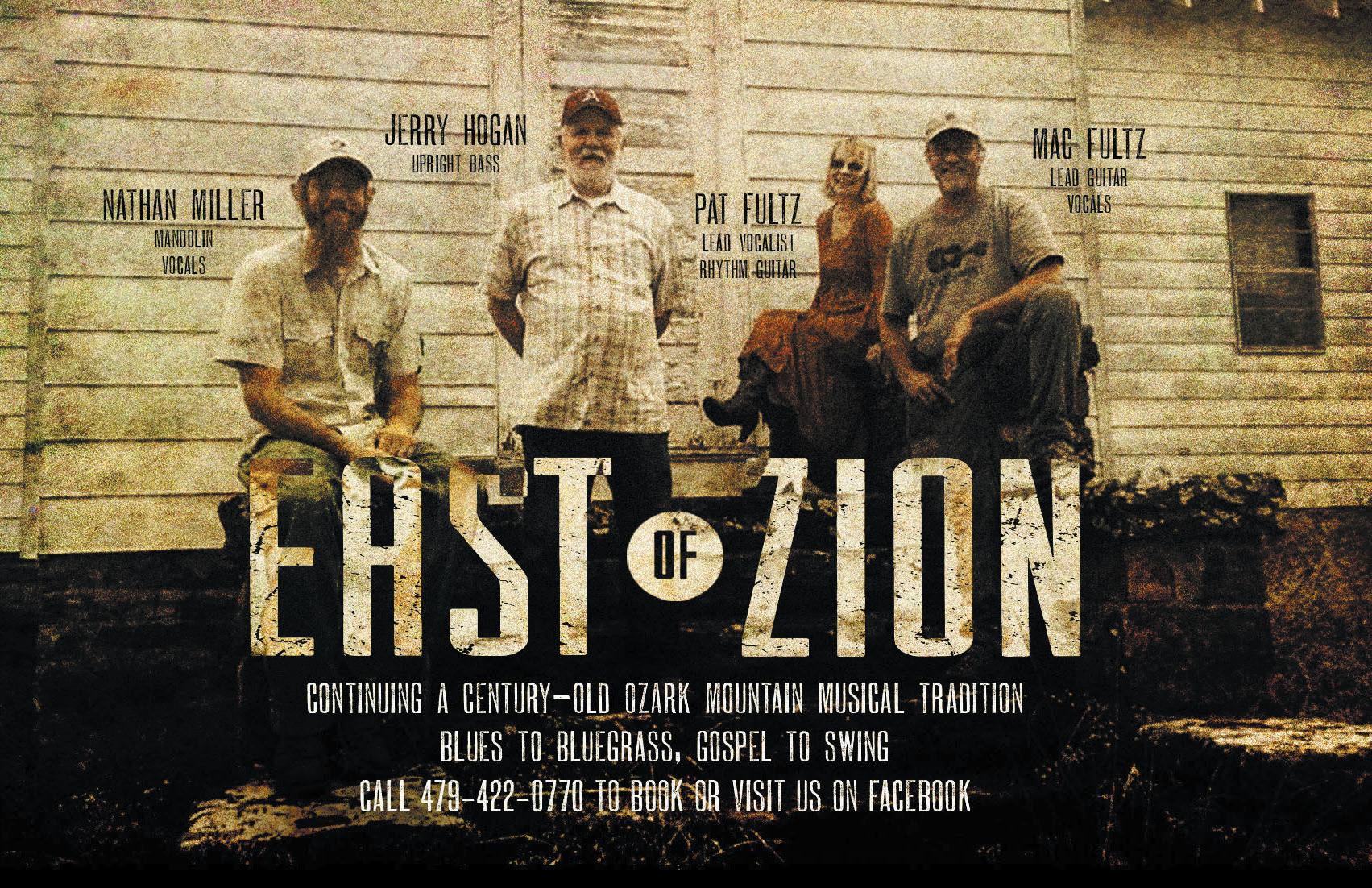
Henry Grady, you’re Tom Halliday from Montana, and you used to run with some outlaw crew back when everything was cowboys and Indians. Raised all kinds of hell and robbed banks, he said.”
“He said you dynamited and stole from the railways, like Butch Cassidy,” Denny said.
“He said your crew took out a train in Arizona, killed women and children, and you turned on your gang, linked up with the Arizona Rangers and hunted ’em down to the last man.”
“Said you got some kinda pardon and a new name.”
“Said you took up with those guys in the SpanishAmerican War after. Remember the Maine?”
Grady eyed them both. “So, you heard all that from Lloyd. That don’t explain why you’re in my way.”
“Had to find out for ourselves. Didn’t we, Denny?”
“Sure did, Pete.”
Grady felt his hands knot up, the old tension coming back into the worn fibers, a sharp liveliness creeping into the worn muscles of the arms and wrists.
He said, “And what d’you reckon?”
Pete shrugged. “I think it’s a lot of bunk myself. Your buddy thought maybe he’d scare us away from you. But Denny’s less sure. I think he’d like to see if you are what they say you are, stack up against one of the last outlaws. Ain’t that right, Denny?”
Denny smiled. “Sure is, Pete.”
“Well,” Grady said, “Seein’s got a hell of a price.”
His right hand went to the holster at the same time their hands came up in silver flashes. The air snapped and popped around him as the Schofield came out. Napoleon reared and whinnied and fell, and he went down with him, hitting the ground hard but hitting right. He bit his tongue and tasted copper but knew to roll and rolled down in the choking dust while the horse kicked the air in agony and ugly perforations glistened in his fine hide. He cocked the hammer back and came up squinting with his arm thrown over the big heavy warm body and the saddle supporting him at the elbow.
They were outlines in the dust, but they were there. In his hand there was thunder and thunder again.
RINALDI WAS CHOOSING CARPET colors for the grand foyer of the Oasis. He’d settled on oriental red when they came in and told him Denny Rostrovich and Pietro Bianchi went out to shadow the old cowboy like he’d asked, and they found them out on the road out of town.
Denny had two .45 slugs explode his chest out. Pete had one plug him in the gut, and he’d crawled a little way, which left a trail in the dust like his plum suit sprung a leak, but now, he was on his back with half his head gone. On the road was a dead bay horse with nine rounds in its body and one in its head. Their car and their guns were gone.
Rinaldi was quiet for a minute. When he finally spoke, he had some instructions.
THE FORD TOOK SOME figuring out, but Grady had it moving down the road to the spread. One of his bullets had passed through Denny and took out the passenger window, and the air whistled through the car as he drove.
Everything hurt when he got up, but he had got up. Denny was still, but Pete was hollering and scrabbling away in the dust, trying to get back into the car. He’d shared a word—What d’you reckon now—and gave him something to make him stop moving.
He’d stroked Napoleon’s mane, heard heavy withering breaths as blood bubbled up out of the wounds, told him how good he’d been, and saw him free of pain. He’d wiped his eyes, unpacked and unsaddled the body, and put his gear in the backseat along with their pistols and spare rounds.
On returning, Grady hid the car in the barn and went into the house with the package and poured a heavy belt of amber-brown rye and drank it where it mixed with dust and blood in his throat and dropped into his stomach like a warm stone. Grady shook and coughed. When the shaking eased, he reloaded the Schofield. He brought the Krag rifle down from its mounting, wiped it down, and filled it with cartridges, then charged a faded bison-leather bandolier with the leftover shells. He reloaded the two automatic pistols—their boxy slides and magazines were strange
edges in his hands. He laid all the armaments out on the table, doctored them with oil where they needed, and knew they wouldn’t be enough anyway.
Grady pried up the closet floorboards and raised up a crate of black powder and a swath of fuse. From the pantry he found six spare canning jars. Each one took half powder and half nails and a sprinkling of kerosene. He screwed tin lids on and punched a nail through each one. He cut twelve five-second lengths from the fuse and fed each one down the holes into the powder, so they stuck out of each jar lid like wild black hairs.
Grady packed his canvas army pack from the closet full of tinned peaches, a matchbox, and his field glasses. With everything collected he went to a rock cluster above the base of the ridge, which formed natural cover and afforded a clear view of the house and barn. He laid out the armaments and the jars and brought his saddle to the cluster and laid his bedroll out. Then he went back to the house, set the powder box inside the front door with the kerosene can beside it, rigged the remaining fuse, and ran it out the door and along the ground to the rocks. He calculated the length—it gave him maybe a shy minute.
He went up the ridge. The low sun blanketed the desert in a deep amber-red, and he heard the cry of a hawk somewhere high. His legs burned with each step. He panted, and his eyes watered and stung. At the summit he reached the cross, wiped his eyes, and stared out at the distant maroon peaks which pierced the far horizon like teeth in the fossilized jawbone of some massive ancient creature.
“I done a damn fool thing, Jessie,” Grady said. “The sort of thing you kept me out of all those years. Good news is it’s prob’ly the last one. I done a lot of achin’ this last while, kept wonderin’ why I couldn’t just let it all go and be happy. I guess when everything goes away, you hold onto what you can. This way you get to keep the view you liked so much. And I’ll be seein’ you soon, more’n likely.”
He came down from the cross. When it was dark, he took a frayed rope from the pack and laid it out in a circle around his bedroll to keep away snakes as their soft bellies were repelled by wild rough fibers. He lay there and thought he heard the twang of a guitar from
somewhere in the plain and voices around a campfire with sparks reaching up into that diamond-twinkling void with the translucent ribbon weaved across it. He thought he heard a spate of laughter echo against the rocks. He sat up and looked out, but there was no sign on the purple plateau of sand. With his head cupped softly on the saddle leather, he looked up at the sparkling desert stars and slept.
THE MEN ATE BREAKFAST at the Continental. When they were done, they came out to the garage and dispersed into three black Ford 48s. Each man carried a Thompson submachine gun with a 50-round drum magazine, a full spare drum, and his own automatic pistol. With the Fords running, a white Avions Voisin C25 Aerodyne pulled up with two men in the front and Mister Rinaldi in the back. He waved them forward, and the cars moved out in a convoy ahead of the Voisin, the ensemble snaking through the streets of Las Vegas in the early morning light. When they escaped the waking city and slid into the open desert, Mister Rinaldi lit a cigar. He said he hoped the boys ate all right and asked his driver whether he thought he’d look good in a cowboy’s hat.
GRADY WOKE TO A touch of cool wind. A small fire for the percolator provided coffee, and he drank and ate tinned peaches. In the shade of the rock, he waited until he heard a low rumble from the east and saw black shapes moving in with a cloud of dust trailing behind.
They pulled up in front of the house—three black Fords, like the others, and one sleek elongated white vehicle. Men emerged from the cars, and through his field glasses Grady counted ten of them, all various shapes and sizes, all clad in fine wool suits in hues of grey and white, each carrying a gun with a sleek wiry barrel and a round protruding undercarriage. That was new, he thought. From out of the gilded vehicle came a big man in a long grey coat and a wide black fedora hat.
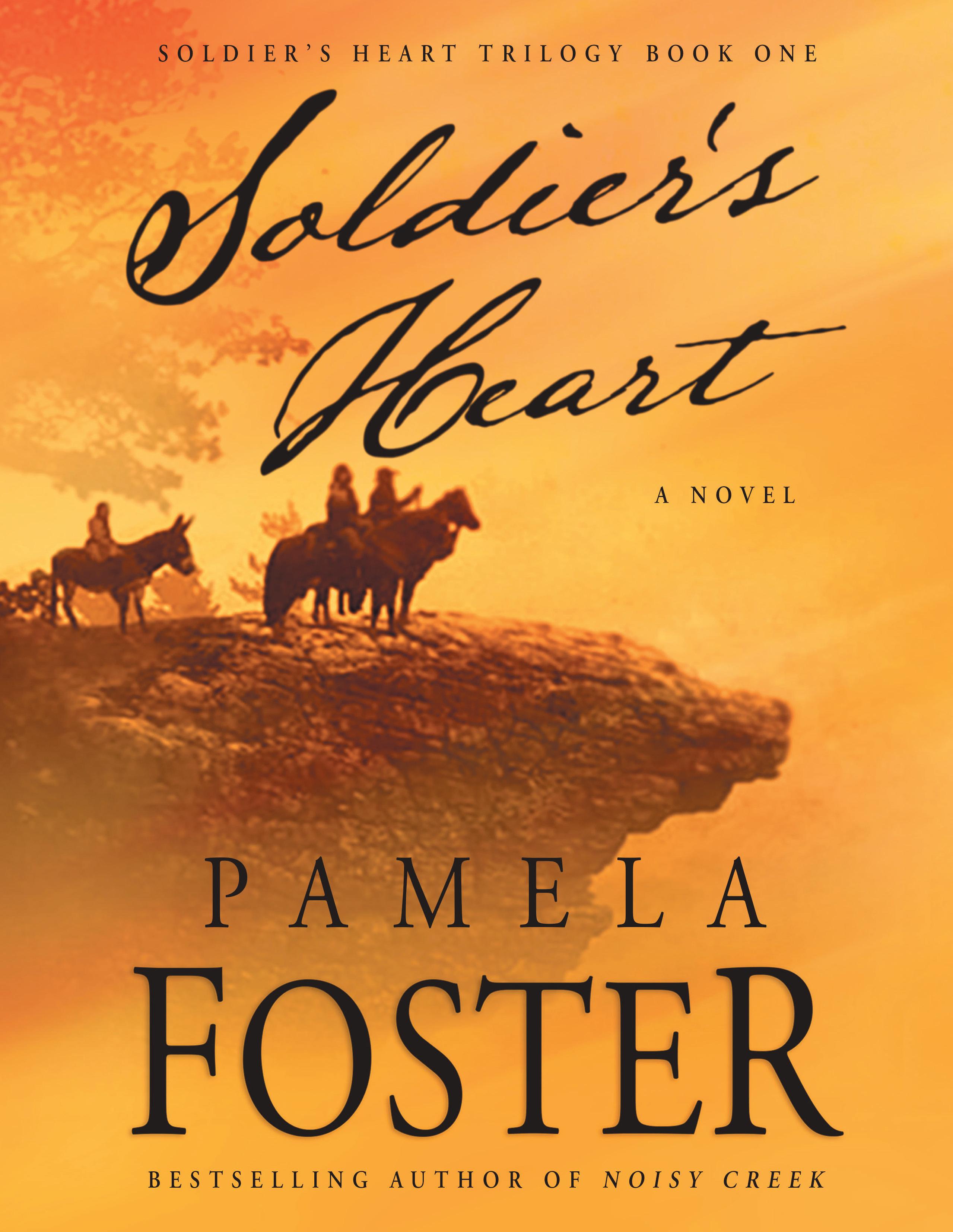
“I’ll be damned,” Grady said.
Grady reached down for the free end of the long fuse and the matchbox. He struck a match and watched the fuse spark and hiss and fall away from him, a pinprick of smoking light moving in the low desert scrub, winding toward the house. He hoped it wouldn’t be noticed too quickly and went back to the glasses.
The men gathered in a firing squad. The big man had a cigar in his mouth, and he pointed at the house. The guns ratcheted, and Grady heard a fusillade out of thirty gone years as the weapons spat lead in a uniform carronade which splintered the house and shattered the windows. When they were done, the men dropped the round magazines and loaded fresh ones.
Rinaldi gestured to the house. Four of the men walked over with their guns at their hips, and before the door they stopped as the smoking little spark along the fuse line arrived, coursing along the front of the house before disappearing through the crack of the door. They froze, and the house went up in a peal of thunder and grey-black smoke with a heart of flame. The wooden front of the house splintered and burst his hand-built walls into shrapnel. The ignited kerosene spread, and flaming chunks fell everywhere, and the yawning open mouth of the house held a blanket of fire.
Through the glasses Grady saw the four men closest to the blast lying still in the dust. The others were hunkered down by the Fords, which sported cracked windshields. The men rose up slowly, and Rinaldi stood and pointed and shouted.
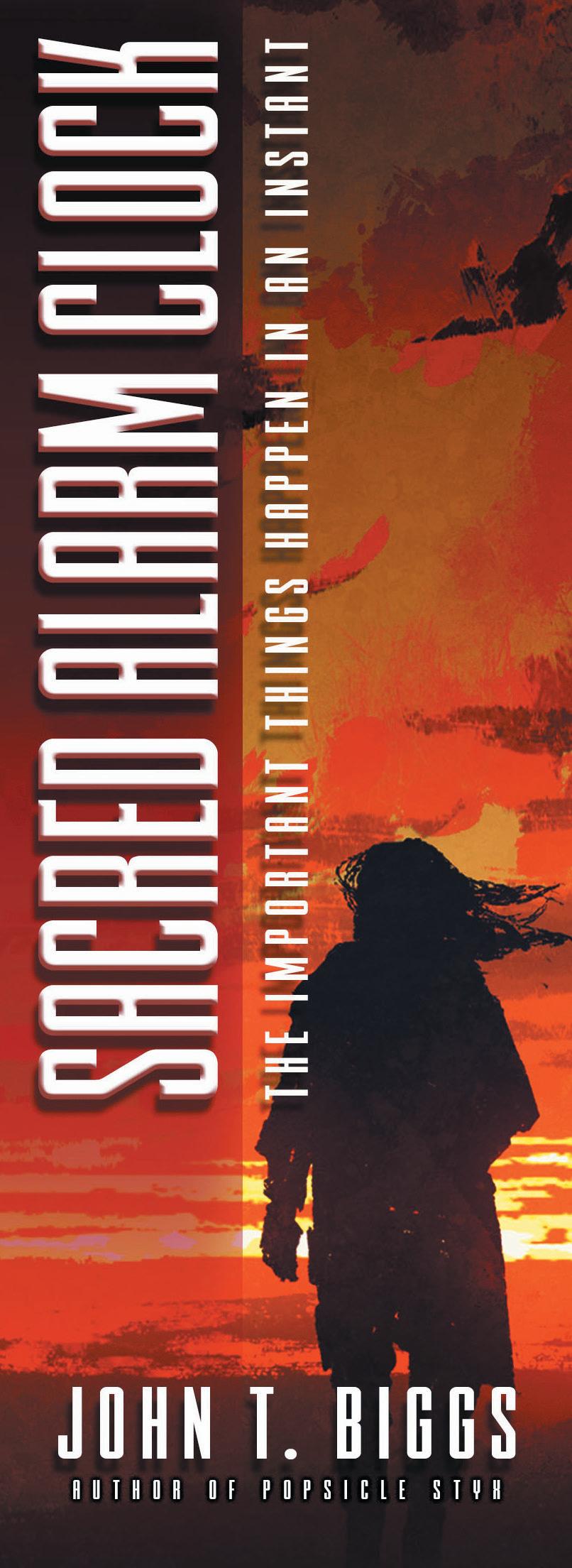
Grady brought up the Krag, cycled the bolt, peered through the scope, and drew a bead on Rinaldi. The big man’s cigar flapped in his mouth. Grady’s bullet took him in the left shoulder, and the cigar fell, and Rinaldi dropped down beside the beautiful car.
Grady cycled the bolt again and saw one gunman pointing at his hiding place. He put the crosshairs on him and fired and saw a red streak out the man’s back. A reply came, a heavy spatter of lead which splintered the stone around him. Grady dropped, cycled, came up, and fired. His heart pulsated against the walls of his chest as a leaden sonata rattled against the rocks.
When it seemed to dim, he brought the Krag up and spied a man crouched down by the barn, working
the jammed action of his weapon. Grady fired. The barn wall took the spray, and the malfunctioning weapon dropped with its owner following it into the dirt. The air snapped, and the scope of the Krag shattered as a round passed through it. Grady felt the hot sting of steel and glass on his face and went down, bringing the Krag clattering to the ground.
He crawled over to the jars and lit a match as bullets whanged off the rocks. He touched match to fuse and pitched a jar down the ridge. It blew with a sharp tinkling against the cars, and he heard a yowl of pain. Grady lit and threw another jar toward the house as one of the gunmen ran out from behind one of the Fords. The jar burst high in a flash, and the gunman went limp mid-run and pitched forward dead with his front studded with shining shards and steel bits.
There was a shot, and Grady clawed at the Schofield. A gunman came up the hill with a weapon belching fire, and Grady put the narrow blade of the sight on him and shot. The man’s head snapped back at the same time Grady took a round hard above the right hip. The sky spun. He fell with his face down in the rock and sand and tasted blood. His side was splitting, and he rolled onto his back to see another gunman bearing down on him. Grady pulled one of the automatics from his belt, and the pistol screamed all its fire at the man. Four rounds spread dark holes in the wool suit, and the man fell in the brush.
Grady reloaded the Schofield. Blood coursed down his right side, and he went to the jars and lit and lobbed one after the other until they were gone. His side burned with each throw, but the explosions cascaded, and he thought of cannons in Santiago de Cuba and laughed.
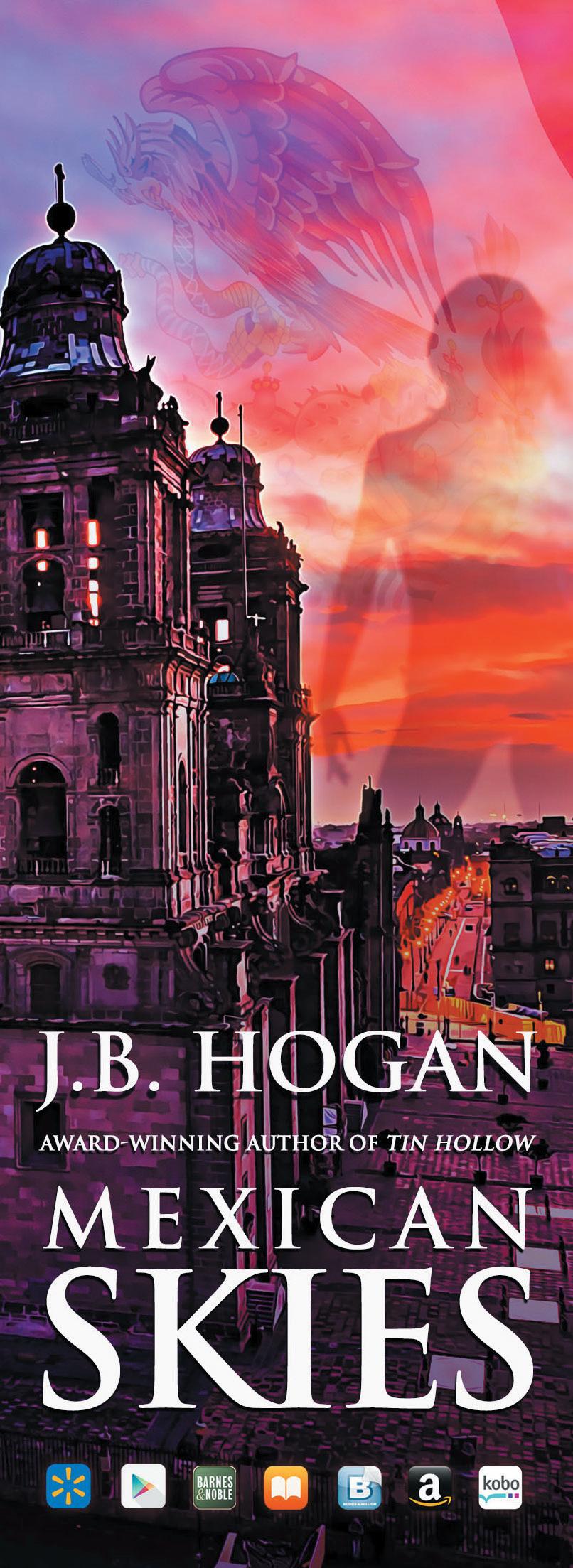
He came out from behind the rock. A wall of flame licked up the side of the barn, and the Fords were burning. A fuel tank burst loudly, throwing a column of smoke and flame into the air. Grady ran down the ridge toward the house.
Rounds spattered at his feet. He fired at a man crouched by the fancy vehicle. Fire burned in his left shoulder, and he yelled and fell. The gunman emerged from behind the car with a pistol centered on him, and Grady drew the second automatic from
his belt and emptied it. The gunman went down with his body draped over the car’s perforated cowling.
He got up slow. His left arm was numb, and the hand wouldn’t work. With the Schofield in his right, he limped to the big car and turned to where he’d seen Rinaldi go down.
The big man was holding himself up against the fender with an automatic pistol wedged in his big meaty hand and a streak of blood from the Krag running down his coat. Grady fired and hit Rinaldi in the chest. The automatic dropped, and Rinaldi fell against the fender.
“Jesus Christ,” Rinaldi said as Grady shuffled up to him. “My boys. How?”
Grady held the pistol out, shaking. “I been outnumbered a fair bit but never outgunned.”
Rinaldi coughed. “I know just what you mean.”
There was a crack and a hot numbing punch just under Grady’s ribs on the left side. A sudden warmth started out of the new wound. Rinaldi took something
out of the coat pocket he’d fired through and dropped it in the dirt—a holdout gun, a silver single-shot derringer pistol.

“I seen whores use those,” Grady said. His legs buckled, and he dropped to the ground.
Rinaldi slid down the fender onto his back, wheezing. Grady came up on his elbow and pulled himself over in the dust until he was beside Rinaldi. He grunted and felt more spill out and leaned back against the car.
“You got any other tricks?” he asked.
Rinaldi coughed. “No,” he said.
“Ain’t neither.”
Rinaldi looked at the Schofield in Grady’s lap and coughed flecks of red spittle. “You could make things easier for both of us,” he said.
Grady chuckled. “What’ve you seen makes you think I’ve any interest in that?”
They sat quiet for a moment. Rinaldi exhaled.
“I was gonna build something out here.”
“Yeah. I know.”
The pain became a shard of tingling ice in Grady’s chest. His vision started to swim, but he could see dark shapes moving, coming out of the desert.

“My friends are here,” Grady said.
“There’s nobody here but us,” Rinaldi whispered.
“You mustn’t got any friends, then.”
Rinaldi coughed again. Grady looked up as they came into view. There were eight of them, seated on dusky stallions. Some wore dusters and serapes with various patterns, and some wore old Army uniforms. Their faces were familiar but younger. They smiled and helped him up saying they just saddled one for him, and he saw the big bay horse behind them. He looked down at Rinaldi who stopped moving and stared up at the blue morning sky with glassy eyes.
They said she was waiting for him at the fire, and he said nothing but went with them while the burning house and barn and cars sent one dark cloying column upward where the ashes danced in the air. The wind blew the ashes over the cross on the ridge where they floated down and settled on the silent desert plain.
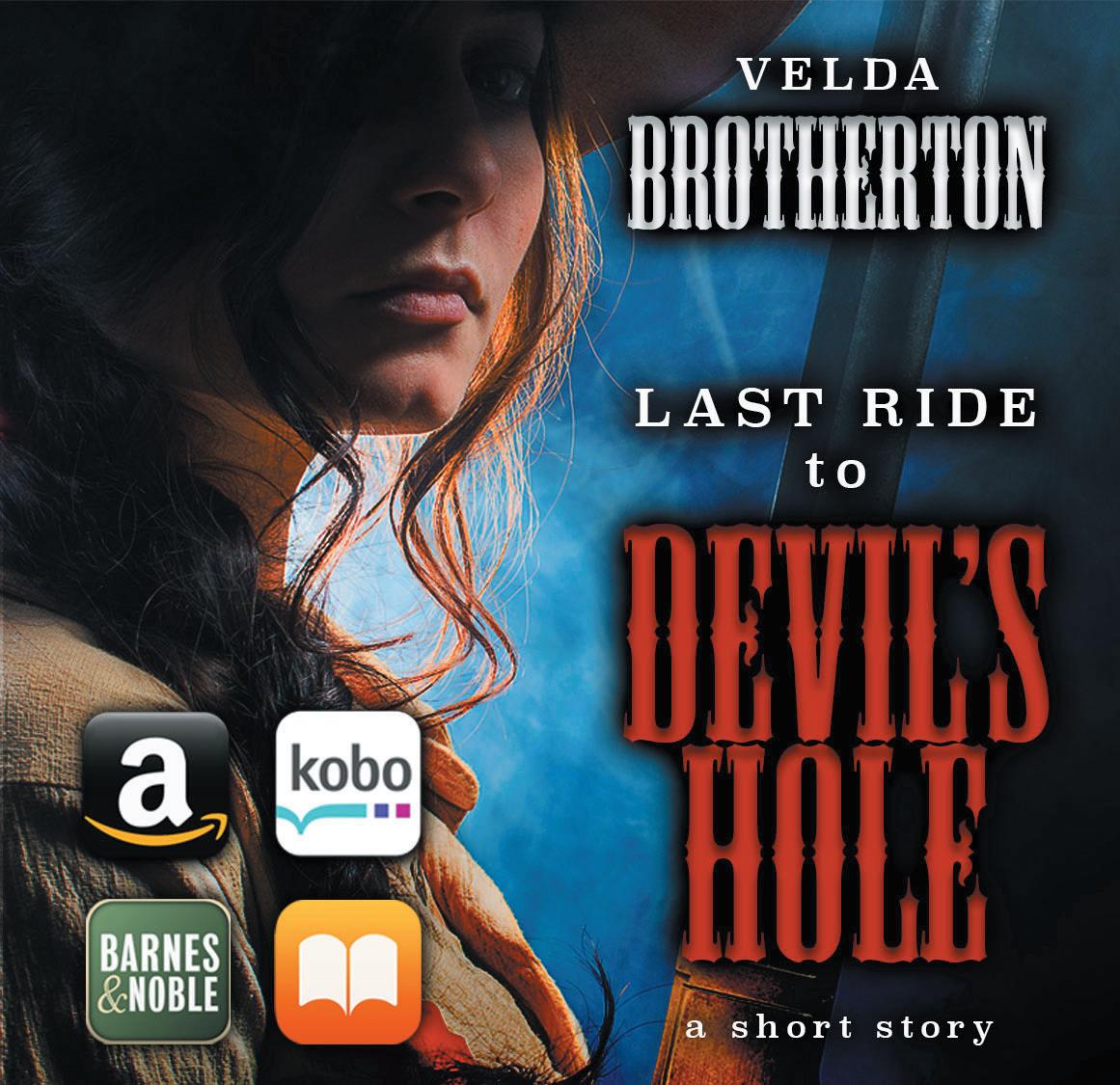
AaLEX SLUSAR was born and raised in Saskatchewan, Canada. His writing explores crime, horror, living with nature, and life in the West (in both historic and modern contexts). After obtaining his Master’s degree in political science, Alex worked in a suite of capacities as a political consultant, operative and organizer, and also enlisted with the Royal Canadian Navy. He continues to work in both national political affairs and military defense matters. In 2022 Alex was selected as an apprentice for the Saskatchewan Writer’s Guild Mentorship Program, which assists developing writers in refining their craft, and is developing a collection of neo-Western short stories. Alex divides his time between the provinces of Saskatchewan, Ontario and Quebec, and can often be found traveling, kayaking on the St. Lawrence River, trekking deep in the wilderness of northern Canada or hiking the Sonoran Desert. He tweets intermittently @axslusar and celebrates adventure through photography on Instagram @alex.slusar.
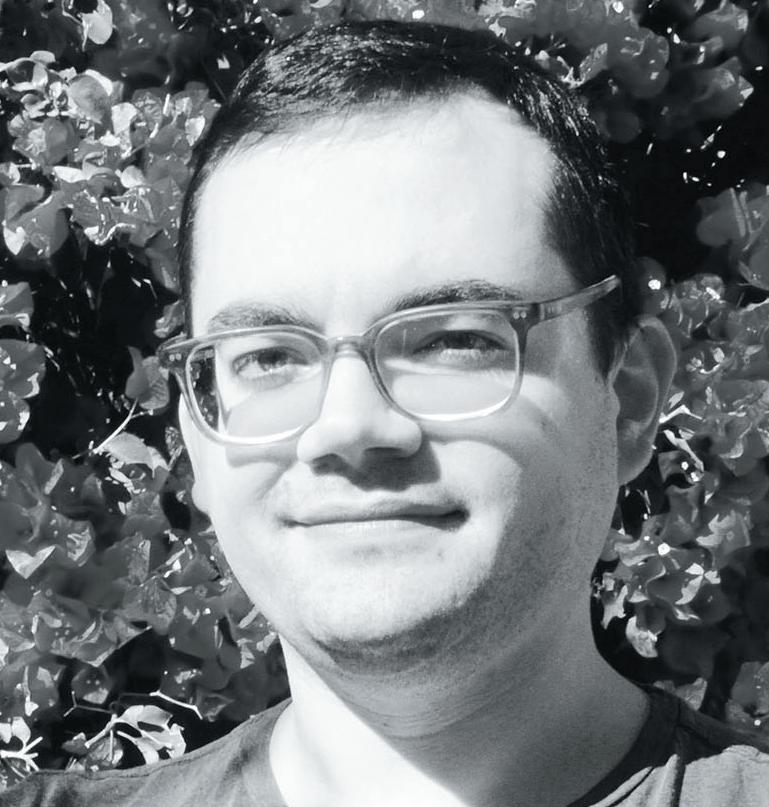
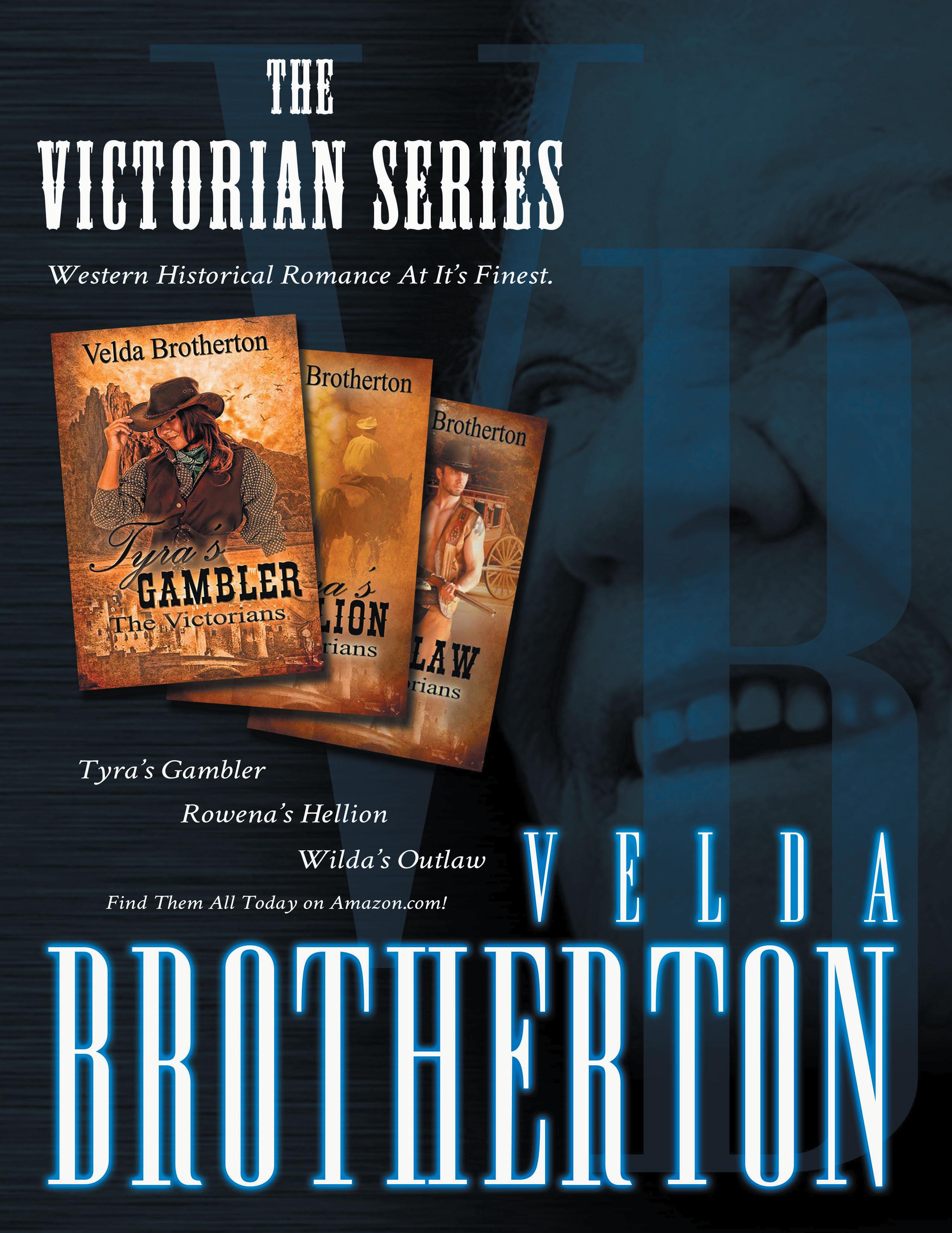
DEPUTY U.S. MARSHAL JAKE Packer sat as easy in the saddle as his aching back would allow. After ten straight days in the saddle, often riding from dawn to dusk, it was a wonder to him that it was only his back that ached. He halted his buckskin on a slight rise in the oft-used trail to get his bearings. His boss, Marshal Ruel Oldfield, had sent him into the Texas hinterlands to round up a convicted murderer named Simon Kessler. Kessler had somehow managed to escape from his two guards while he was being transported to the Huntsville prison.
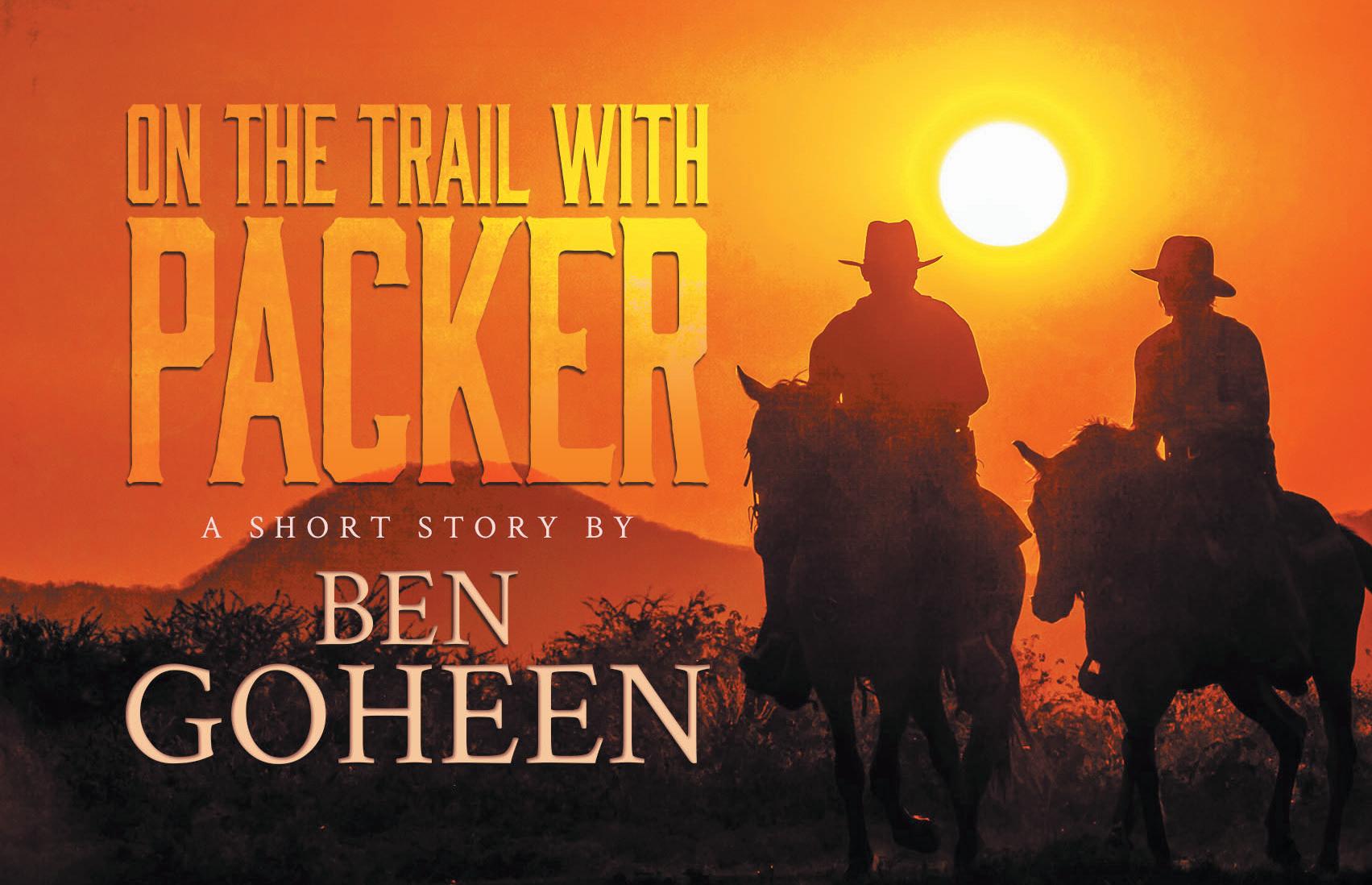
On his sixth day out of San Antonio, Jake found the murderer in a beer joint on the outskirts of a small hamlet called Flat Gap. Kessler was dead drunk at the time, which made his capture a cakewalk. Jake lodged the fugitive with the local authorities and thought his days on the trail were behind him for a spell.
Not so. On his way back to San Antonio, Sheriff Bob Nettles sidetracked him with a plea for help. The Augsburg bank had been relieved of $8,000 at gunpoint, and Nettles needed someone to round up
a known crook named Lester Skiles who had been identified as one of the hold-up men. Nettles and his posse were going after Skiles’s two cohorts who had split away from Skiles after the holdup.
So, just like that, he was on the trail of an outlaw again.
Jake stood in the stirrups, shaded his eyes, and glanced at the sun. He guessed it was close to noon. His weary body told him it was time to find a place to loosen up his aching bones with a pot of hot coffee. That usually worked to raise his spirits. If he could find a stream, he might even take the time to scrape off a week’s worth of Texas sweat and grime.
Sometimes he wondered why he had put up with this kind of unpredictable life for as long as he had. Here he was, a forty-two-year-old deputy marshal, in reasonably good health, with a dependable horse and little else to show for twenty years of wearing a badge. He had once heard a fellow lawman call him a lone wolf. Maddie, a lady friend he had come close to marrying not too long ago, referred to him as plain anti-social. He suspected there was some truth in both of their sentiments. But they failed to notice that, of
late, he had begun to yearn for a change in his life. The manner of change, he had yet to decide.
While he sat on the buckskin and pondered the whys and wherefores of his life, Jake caught an unmistakable whiff of wood smoke. He lifted his head, sniffed a couple of times, and caught another trace of the smoke. He nudged the buckskin forward, then halted minutes later when he spotted a farm wagon parked in a makeshift camp around three hundred yards below. A pole hung in the forks of two trees with a canvas tarpaulin draped over it to provide a temporary shelter. Five hobbled horses grazed near a narrow, shallow stream.
Jake leaned over and patted the buckskin on the neck as he whispered, “Well, well, pal, what do we have here? I’ll be hanged from a rotten apple tree if that’s not a wagon I see down there.”
From Augsburg, he had followed the tracks of a horse that Sheriff Nettles said belonged to Lester Skiles. He lost the tracks late in the afternoon of that first day, then found them again the following day. But here was what made Jake scratch his head. He had found the tracks of a heavily loaded wagon alongside Skiles’s horse tracks. At first, he thought it might have been a coincidence. Hours later, he became convinced they were traveling together.
Why would a man who had held up a bank hook up with a slow-moving wagon?
Maybe the answer lies down there, he thought.
Jake dismounted and moved into the trees to get a better view of the camp. Below him he could make out a woman who hovered over a black cooking pot that hung above the firepit. A stocky man stood behind her with a rifle in the crook of his arm. Jake had begun to inch backward to his horse when he saw another man walk toward the firepit.
If it was the same wagon, it was possible that Lester Skiles wasn’t too far away. Jake didn’t know Skiles by sight, but he knew of Skiles’s reputation. Skiles wasn’t known to be a gunman or a violent man, he simply liked to steal. Even so, he had never heard of Skiles going as far as robbing a bank.
Jake squatted next to his horse while he mulled over his options. He realized he had to be sure of what—and who—he was dealing with before he made
any rash judgements. The people at the camp could simply be travelers passing through or folks searching for a place to build a future. He needed to figure out a way to get a closer look at them without giving himself away.
A few minutes later, a smile creased his lips when a foolish idea came to mind. Foolish—and dangerous to be sure. He stood and slapped his hat at his dusty jeans. The dirty, shabby clothes he wore, plus his less than pleasant odorous condition would easily fool anyone into believing that he was a common out-of-work drifter. That is, if he could pull it off without getting shot.
“YO, THE CAMP,” JAKE shouted from the ridge near the camp. “Friendly visitor coming in.”
He clicked his tongue and walked the buckskin slowly toward the campfire. As he approached, he got a better look at the woman and the two men at the fire. The woman was tall and reed-thin, around fifty years of age, give or take, with brown hair pulled back in a tight bun. She wore a blue gingham dress that was dotted with an array of different colored petunias.
The stocky, muscular man with the Winchester was younger than the woman by several years, with a face that had seen its share of brawls. It was hard for Jake not to notice that the barrel of the Winchester was tilted upwards slightly and aimed directly at his mid-section. The second man was the shorter of the two men, but they had similar builds and a close facial resemblance. Both wore clothes not much different from his own grungy outfit.
Jake rode up to the firepit, leaned over with his hands crossed on the pommel, and said, “Ma’am, that coffee smell shore does set my mouth to watering. I’ve been in the saddle since daylight stopping only to answer nature’s calls.”
“I reckon we’ve got enough coffee and beef stew to share,” she said. “Climb down, and I’ll fix you a plate.”
The second man took a step toward the firepit and said, “He ain’t got time to—”
“Shut up, Clyde,” the Winchester man said. “Go ahead, mister, eat your fill, then be on your way.
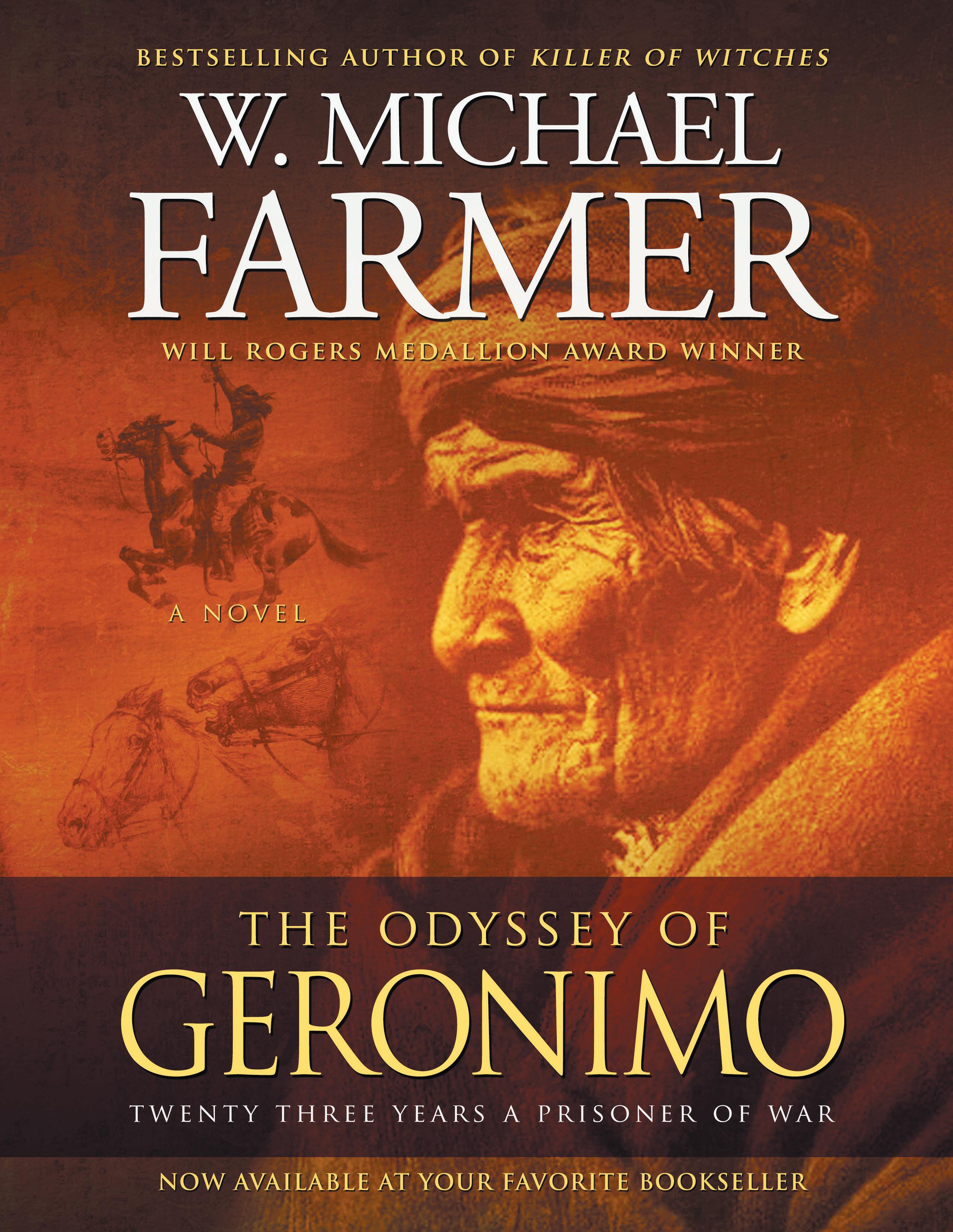
We’ve got plenty of chores to take care of before dark, and we don’t need any distractions.”
Out of the corner of his eye, Jake noticed the woman glance up at the man with a frown on her face. There was a bushel of questions he wanted to ask, but now was not the time to push it, not with the woman caught in the middle.
Jake dismounted and took the cup and plate from the woman’s hands. “Thank you, ma’am,” he said as he dropped down on a log and forked a chunk of beef into his mouth.
“I’m Alma,” she said.
The Winchester man nodded at the second man and said, “He’s Clyde. I’m Ross.”
“We’re brothers,” Clyde said. “He’s older than me. And he’s smarter, too. Ain’t that right, Ross?”
“Clyde, that log over there is smarter than you.”
Clyde had a wide grin on his face when he said, “Ain’t Ross funny?”
Ross nodded at Alma. “Alma here is our momma.”
Alma jerked her head around and glared at Ross as she said, “I’m not—”
Jake saw Alma wince as Ross quickly reached out and squeezed her shoulder before she could finish her sentence. She pulled away from his grip and gave him a hard look but didn’t say anything else. Jake pretended not to notice, but he knew there was something amiss here.
“What’s your name, mister, and where are you headed?” Ross asked in a not too friendly way. “Don’t see many drifters out this way.”
“My friends call me Leroy,” Jake said. “I’m headed to Salyersville where I’ve got a job waiting. My cousin Willie runs a freight outfit there and sent for me. I’ve had enough of cow-punching to last me a lifetime. This past winter was a bad’n and pert near did me in.”
“Yeah, me and Ross ain’t much for cowpunching either,” Clyde said. He broke out in a loud laugh, pointed a finger at his brother, and added, “We done found a better way to make a dollar, ain’t that right, Ross?”
“I told you once to shut up, Clyde. I don’t aim to tell you twice. Now, get over there and see to the horses.”
Clyde lowered his head, spun around, and skulked back to the wagon like a scolded pup.
Jake was certain that neither of these two yahhoos was Lester Stiles. Ross looked to be in his early to mid-thirties and Clyde three or four years behind him. Both were too young to be Skiles who was said to be in his fifties. Jake figured Ross to be the chief honcho of the two, with Clyde following along behind like a lap dog, ready to do whatever his big brother ordered.
Even though he didn’t find Skiles in the camp like he had expected, Jake was more than a little satisfied that he had stumbled on Skiles’s two cohorts. But all he had to go on were his gut feelings. He needed more than that before he could make a move at them.
He finished off his meal and set the tin cup and plate aside. “I shore do thank you for your hospitality, ma’am. That was the best camp meal I ever tasted. I would love to stay and chat a bit, but I’m in kind of a hurry.”
“Don’t you want another cup of coffee?” Alma asked.
“Leroy said he needs to go,” Ross said. “We don’t want to hinder him.”
Jake took a professional interest in the walnut-gripped Colt that rested in a well-worn holster strapped around Ross’s waist. Whatever else he might be, Jake figured that Ross was no greenhorn—and it was also patently clear that Ross wanted him gone from the camp.
Rather than create a situation that might get out of hand, Jake said, “No, thanks, ma’am, I gotta get going.” He took the reins and led the buckskin toward the trail. All the while he made sure to keep the horse between him and Ross. When he reached the trail, he mounted up and rode away without a backward glance.
JAKE RODE A MILE from the camp before he stopped. Once he was sure he had not been followed, he turned the buckskin into the trees and circled back toward the camp. What he was going to do once he got there, he had not yet decided. All he could do would be to watch and wait for an opportunity to present itself. But he realized that patience was not among his greatest virtues. More than once, his im-

petuous nature had taken charge and nearly put him six feet under.
When he got within a couple hundred yards of the camp, he tied the horse to a tree branch and crept forward on foot. He found a clump of bushes that would conceal him, as well as provide him with a full view of the campsite. He settled down to wait and watch.
After an hour, little had changed. Alma knelt at the edge of the stream while washing the cooking utensils. Clyde leaned back against a chunk of wood close to the hobbled horses. Probably dozing, Jake thought. Ross leaned lazily over the side of the farm wagon with cigarette smoke spiraling above him and his ever-present Winchester propped next to him.

But there was still no sign of anyone who could be Lester Skiles.
Jake realized the odds were against him if he tried to sneak into the camp in broad daylight, but he had to get the proof he needed somehow—and keep Alma
out of harm’s way in the doing. As he watched the camp, he saw Alma leave the stream and duck under the tarpaulin. He sat up quickly. This might be his best chance to get closer without being spotted. Or was that his impetuous nature talking?
Jake moved slowly toward the hobbled horses. He skirted the stream where he mingled with the horses, which thankfully were intent on their grazing. As he moved closer to the edge of the clearing, he noticed two saddles and a pair of saddlebags lying in the grass above where the horses were held. The confirmation he needed could very well be in one of those bags. It would be a dangerous gamble to take, but he knew he had to get his hands inside those bags.
Neither of the brothers had moved from where he had earlier seen them. If he kept low to the ground, he would be blocked from Ross’s view by the farm wagon, and Clyde had his back to him, with two massive cottonwood trees standing between them. Jake took a deep breath, then dropped on his stomach and snaked
his way toward the bags. As he got closer, he could see that one of the leather bags had a huge bulge that threatened to pop open at the seams. He unbuckled the leather strap, reached in, and pulled out a heavy sack. He rolled over on his back and glanced at the stenciled print on the sack. Augsburg Bank. That was all he needed to know.
Clyde still had his back to him, snoring lightly, when Jake crept up behind him. Jake hesitated briefly to make sure he had not been seen, then moved quickly toward the younger brother. He hated to do it, but Jake smacked the butt of his Colt hard against Clyde’s head. He tossed the outlaw’s revolver and rifle into the brush. After he had secured Clyde’s hands with the outlaw’s leather belt, Jake moved toward the wagon to deal with Ross.
Jake had crept to within thirty feet of the wagon when Ross walked around the front of the wagon. Jake momentarily froze, but Ross did likewise. The outlaw recovered quickly and jerked up the Winchester and fired a quick shot that went wide, as Jake had quickly thrown himself behind a cottonwood tree.
He sat up quickly and got himself ready to return fire should Ross charge at him. But Ross disappeared after the sudden, unexpected encounter. Where was he? He couldn’t have gone far—there were few places for him to hide. Jake had to draw him out somehow.
He cupped his hands around his mouth and shouted, “Ross, give yourself up. Throw out your guns.”
“Well, if it ain’t the cowpuncher come back for a second helping,” Ross shouted from behind the rear of the wagon.
“Jake Packer is the name, and I’m a U.S. Marshal. In case you are interested, your brother is temporarily incapacitated and can’t help you.”
“I won’t be as easy to take as that idiot brother of mine. If you think you’re up to it, come on and take your chances. But I’ll tell you this. I ain’t going back to prison.”
At that moment, Ross let loose with a volley of fire. Jake dropped low and buried his face in a pile of moss as the bullets struck the tree above him and rattled through the leaves. During a brief lull that followed, Jake jumped up, zig-zagged through the trees, then dove headfirst into an open area near the wagon.
There, he caught a glimpse of a surprised Ross and fired a shot at him, then rolled to his left and fired a second time.
Ross got off a wild shot as he slumped against the wagon, then fell to the ground. Jake hurried over to him, his gun still in his hand. The bank robber lay on his back with blank eyes staring at the blue Texas sky while a red blotch formed on his shirt pocket.
Jake holstered his six-shooter and backed away, relieved that his gamble had paid off. But he knew it was not over yet. Where was the third man? Where was Lester Skiles?
When he turned away from the fallen outlaw, he found himself staring into the business end of a double-barreled twelve-gauge shotgun.
“Stand real still, marshal,” said the man.
Alma, with her hands pressed hard to her mouth, stood a step behind him. “Do as he says,” she said. “Please. There has been enough shooting.”
“I wouldn’t want to pull the trigger on this shotgun for no good reason,” the man said. “Put your hands out where I can see them.”
Alma circled behind Jake and removed the Colt from his holster.
“I guess you would be Lester Skiles,” Jake said. The man nodded. “I’m Lester. I knew that you had been tracking me, and I kept hoping that you would give up the chase and turn back. I guess I shoulda knowed better. I had always heard there was no give up in Jake Packer when you’re on the hunt. Then those two Welker hooligans showed up and complicated things for me and Alma.”
Skiles was a thin, wiry man around Alma’s age. Jake thought Skiles was dressed more like an ordinary homesteader in his bib overalls than a man accused of holding up a bank. But then, during his twenty years of corralling lawbreakers he had seen all types.
Skiles pointed the shotgun toward the firepit. “Over there, Marshal. We’ve got some business to take care of.”
Jake sat on a log while Lester and Alma sat on another log across from him. He stared at the two of them and waited for whatever came next.
Finally, Alma poked Lester in the side and said, “Go on Lester, get it over with.”
Lester Skiles lowered the shotgun and placed it on the ground near his feet. He held out his empty hands for Jake to see. “I’ve been accused of doing a lotta bad things in this life, Marshal, and I ain’t denying I did most of them. But robbing the bank back in Augsburg weren’t one of those bad things. I know the folks in Augsburg think it was me who helped rob that bank, but it weren’t.”
“Sheriff Nettles said that you were seen by half a dozen people as you whipped up the dust hightailing it out of town. Those were people who knew you by sight. Not a one of them had a doubt that it was you they saw running away after the bank was held up.”
“I ain’t saying I weren’t in Augsburg. And I ain’t saying I didn’t hightail it outta town like you say. What I’m telling you is, I didn’t have anything to do with the bank robbery.” He turned to Alma.“Tell him.”
Jake heard a touch of sincerity in Skiles’s voice. They were far out in the Texas back country where Skiles could have put a bullet in him had he so desired,
and no one would ever have known. Instead, he chose to talk of his innocence.
Alma twisted at a ragged dish cloth in her lap as she said, “Me and Lester are headed to a small place in Oklahoma where my folks walked away from a few years back. When me and Lester got married, we decided to go back there and try to make something out of it. It’ll take some doing, but we’re going to make it work.”
She hesitated as she glanced at Lester with obvious affection. “I’ll swear that Lester here didn’t have anything to do with the bank robbery in Augsburg, Marshal. We had stopped to get supplies at the general store when we heard the shouting and shooting. Lester was waiting in the wagon while I was in the store. His horse was tied behind the wagon for traveling.
“When I heard all the hoo-rah, I ran out of the store to see what was going on. Two men came racing by us. We didn’t know it at the time, but it was them two Welker boys we saw, Ross and Clyde. We

saw people running out into the street with rifles and revolvers. One of the men in the street spotted Lester and started yelling and pointing at him. I reckon he knew Lester and assumed he was guilty. Lester panicked and jumped on his horse and lit out.”
Lester nodded. “Yeah, Alma’s right. I got plum panicky.”
“I waited around for a while,” Alma said. “Then I took off in the wagon after him. Lester stayed off the trail and outta sight, but he was always close by. We thought we were in the clear until Lester caught sight of you. After a while, we decided to set up a camp and let you catch up to us and… well… do what we are doing now. Lay it out plain for you.”
Lester broke in. “Before we could do that, them ornery Welker brothers showed up hungry and all wore out from dodging the sheriff. They tied me up in the shelter to keep me outta the way.” He took Alma’s hand as he continued. “When we got hitched about six months ago, I promised her my old life of raising hell was behind me. I meant it then, and I still do. So, Marshal, you heard the straight of it. It’s up to you now.”
Jake sat silent for a minute, then he got to his feet. “It’s a long haul back to San Antonio. I’ll gather up the Welker boys and leave you two to your business. I’ll return the bank’s money and set things straight with Sheriff Nettles, so you won’t have that worry hanging over your head.”
Alma jumped up and planted a kiss on Jake’s cheek. “Lester said you were tough as a hickory knot but a fair man. I see what he meant now. I’ll see to it Lester keeps on the straight and narrow path.”
“I believe you will, Alma.” He pointed a finger at Lester and said, “You’d better take care of her, or I’ll come after you.” He hesitated a second, then added, “I hope you two make a go of it in Oklahoma.”

When Jake rode away from the camp, he found himself envious of Lester Skiles. That old ex-outlaw had found a good woman to spend his life with and a place to grow deep family roots.
Jake decided he’d call on Maddie as soon as he got back to San Antonio.
Ben Goheen is a former secondary-school teacher and human resources manager in the chemical industry. He is a graduate of Murray State University and currently lives in Western Kentucky, near Kentucky and Barkley Lakes. Ben’s novels of the Old West are Echoes of Massacre Canyon, which won the 2016 Peacemaker Award as Best First Western, and his follow-up novel, Mabry’s Challenge. A third western novel entitled The Cowboy and the Scallywag is came out last year. Several of his short stories have made it into print, as well, including several within the pages of Saddlebag Dispatches.
aBen took particular pleasure in writing his nonfiction book, With Shirttails Flying. It is a true-tolife, exciting Hoosiers-like story of the Kentucky high school state championship basketball team of which the author was a member. When not writing, Ben spends much of his time whacking a golf ball around the picturesque courses of Western Kentucky with his buddies and spending time with his son and four granddaughters.
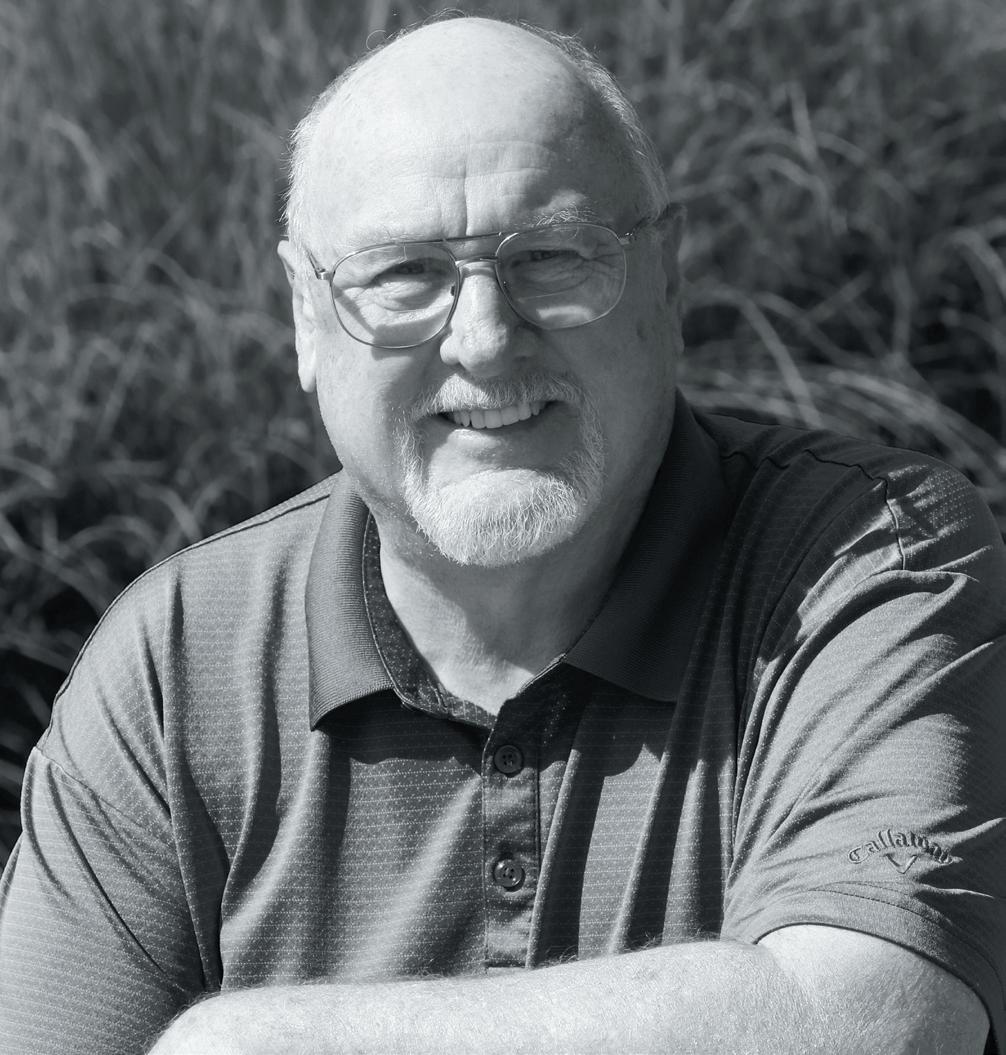
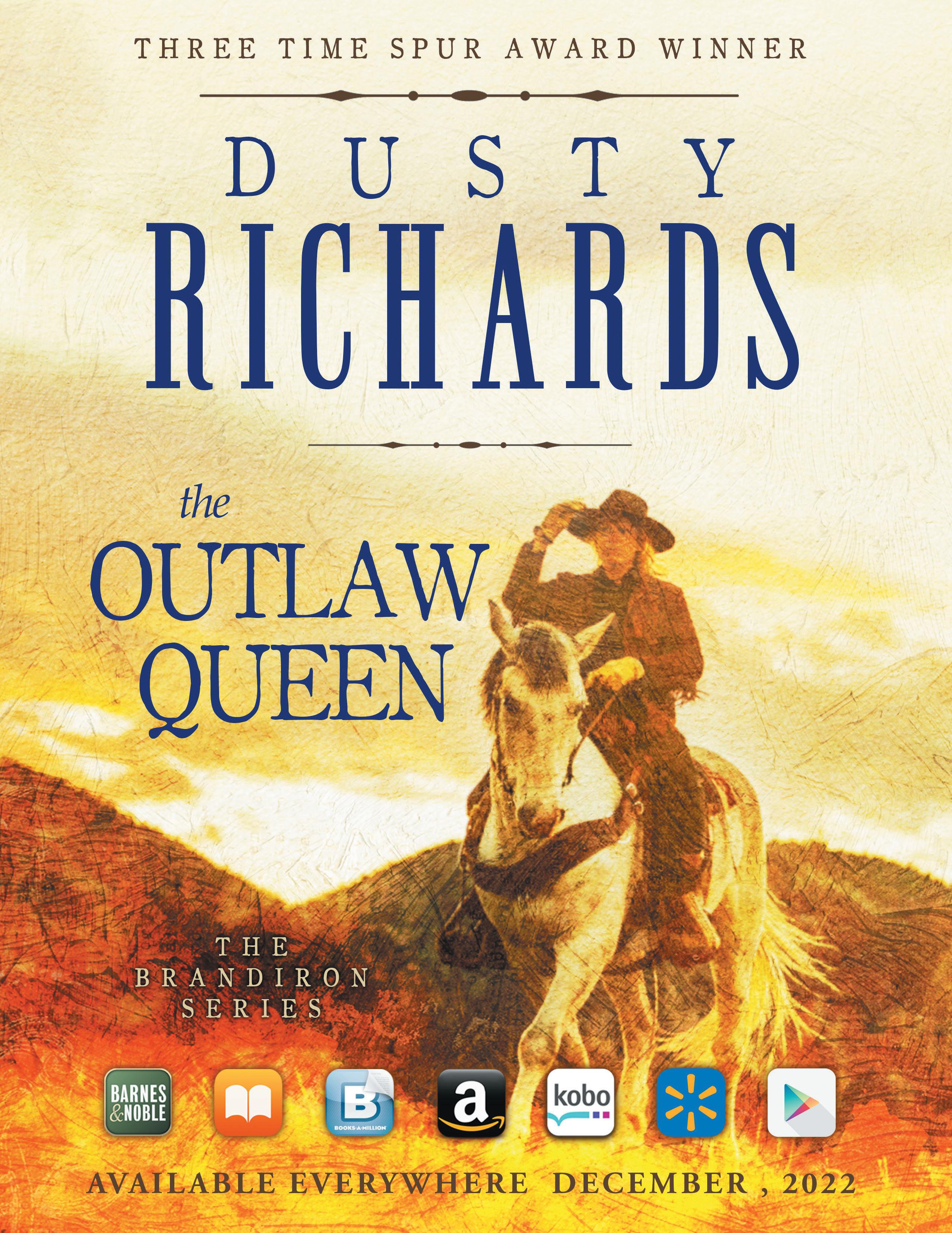
FROM THE SHADE OF a massive rock formation, Conor Doyle nudged the old roan into the blistering Arizona sun, cautiously tracking a northeasterly direction. He had cleared the secluded waterhole shortly after daybreak and had been constantly checking his back trail. He knew that every Apache within two hundred miles would know about the waterhole as well.
Doyle was three days out of Fort Huachuca where he had resigned his position as a civilian scout. He had spent almost seven years hunting Apache for the U.S. 9th Cavalry, and it was enough. Time to turn the page and move on. While he felt no love for the Apache, he respected them for their courage and skill on the battlefield. They were fighting for their homeland and way of life against adversaries who had them outgunned and outnumbered.
Doyle was cautious by nature, but travel through Apache country required extra vigilance. He preferred seldom-used game trails and never highlighted himself against the skyline by riding ridge tops.

He also scouted water holes carefully and never stayed longer than it took to water his horse and refill his canteens.
At midday the unrelenting hot sun lay directly overhead. A strong, hot wind blew out of the Sonoran Desert, and the temperature was pushing 110 degrees. The relentless wind blew often and angry across the desert southwest, something Doyle hated. The wind and heat torched the soul and cooked the skin, tossing small grains of sand, rock, and alkali dust into his eyes, forcing him to view the world through a teary, perpetual squint that left him feeling drowsy, a bad idea in Apache country.
The roan was starting to labor, and Doyle knew he needed to find a shady spot soon to wait out the worst of the day’s heat. “Hang on old girl. We’re gonna stop soon.” He moved slowly among winding hills, through scattered stands of mesquite, prickly pear, greasewood, and towering saguaro cactus, looking for a spot that offered shade and the chance to surveil the distant plain below. He found that spot when he crossed over a saddle with irregularly shaped boulders on one side.
Doyle led the horse through a narrow opening next to the boulders and came out on a flat terrace with an outcropping of large, overhanging rocks. From his elevated perch, he had an unobstructed view of the desert below and just enough shade for the horse and himself. He loosened the cinch on the McClellan saddle, watered, and gave the tired girl a rubdown. He removed his hat and bandana, soaked the bandana with water from one of the canteens, and wiped his face, neck, and the inside of his hat band.
He removed a pair of field glasses from his saddlebags and scrambled over several rocks settling on a boulder top with a clear view into the parched valley. The intense heat sent shimmering waves from the sky to the ground, making it difficult to see anything and forcing Doyle to adjust the focus. A small speck appeared on the desert floor—too far away to tell who or what it was, if anything at all.
Doyle had learned from Apache scouts that if you planned on surviving in Apache country, you’d better learn patience. He waited for almost an hour, sipping water and eating dried venison and a can of peaches, until a second look confirmed what he suspected, that two riders were moving in his direction. What he hadn’t noticed was that one of the approaching riders was an Apache woman, heavy with child, and riding a burro. The Apache warrior beside her rode a large, sorrel stallion, and was doing everything possible to hurry the burro along. Doyle guessed the pregnant woman was his woman.
What Doyle hadn’t seen before was a second group of riders, moving quickly, and raising a large dust cloud they seemed uninterested in trying to hide. They could be Indians, bandits, or perhaps a U.S. cavalry patrol.
As the second group came into focus, Doyle realized these men were not U.S. cavalry nor a rival band of Indians. They were a mobile, fast-moving group of bandits who made their living as scalp hunters and slavers. Since the mid-1830s, the Mexican government had paid a bounty for Apache scalps.
He could see two outriders flanking the main group, reading trail sign, and maintaining pressure on the fleeing couple. Through the towering dust cloud, it was difficult to get an accurate count of the group’s
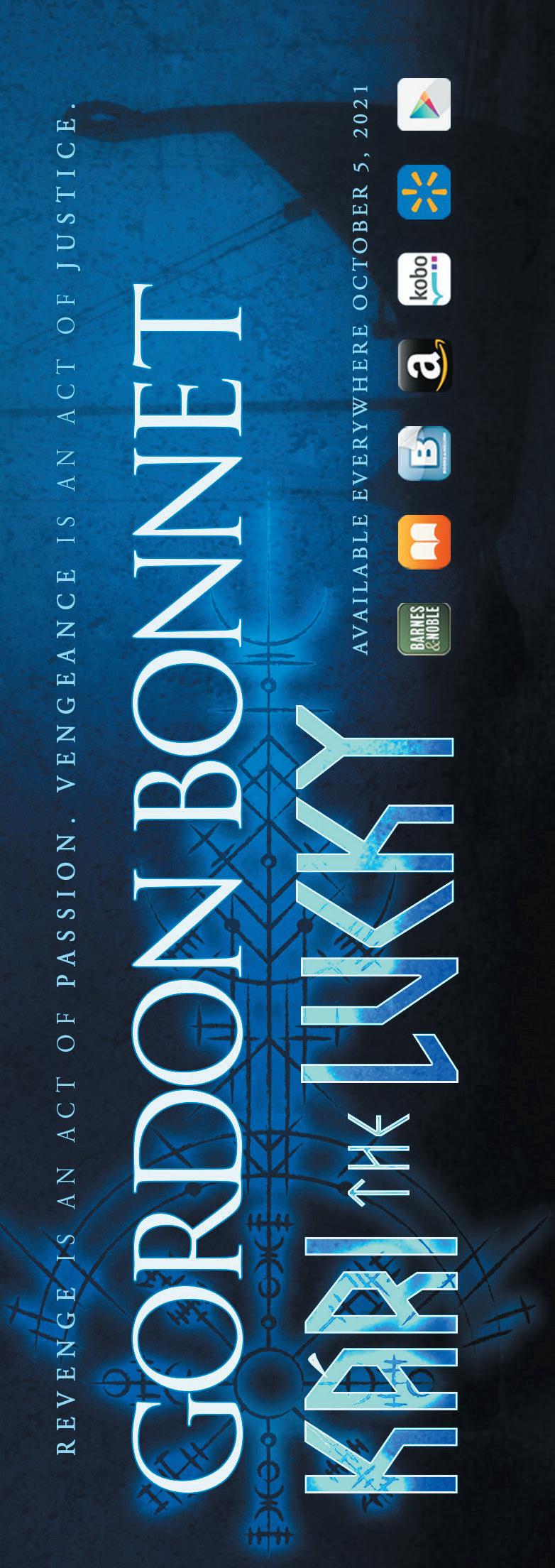
size, though it seemed the party had at least a dozen riders. They appeared well-mounted and well-armed. Doyle guessed that the Apache couple would likely be overtaken before nightfall.
DOYLE BELIEVED WITH ABSOLUTE certainty that the unfolding drama was none of his business. People on both sides lived and died in this unforgiving desert, and he had no intention of sticking his nose where it wasn’t wanted. His thoughts drifted to the deed packed away in his saddlebags for 160 acres of prime ranch land in southeast New Mexico Territory, high in the mountains near the small village of Ruidoso. He’d scouted the area several times with the U.S. cavalry and recognized the land’s potential. None of it would have been possible without his father’s death in Ohio that left him the small family farm. With proceeds from the farm’s sale, he had enough cash to buy the land, build a house, and begin purchasing livestock.
The Doyle family had immigrated from Cork, Ireland, in 1846, at the height of the Irish Potato Famine. They settled in rural Ohio on a small farm. Over time the farm prospered with the help of two growing sons, Conor and his older brother, Dennis.
All that changed in 1861 with the Civil War when Dennis enlisted in the Union army. He was killed two years later during the Battle of Gettysburg.
For Conor, life was never the same after his brother’s death. The thought of spending the rest of his days toiling on a rural farm felt overwhelming. So, in the spring of 1864, after a tearful parting with his parents, Doyle hired on as a hunter for a westbound wagon train of settlers heading to Texas in search of free land to farm. While passing through Santa Fe, he learned that famed frontier scout Kit Carson was seeking volunteers to join the 1st New Mexico Cavalry, a state militia charged with driving out any pockets of Confederate forces trying to hold on in New Mexico. Finding little Confederate resistance, the group focused on fighting Indians, a path that eventually led Doyle to his service as a civilian scout for the army.
The Apache couple had stopped less than a quarter mile below Doyle’s current position. The woman
waited while the warrior backtracked a short distance to surveil the position of the pursuing scalp hunters. He quickly returned to the woman, and after a brief exchange, they hurried on. Soon they left the main trail and rode into a shallow box canyon that dead-ended at the base of a steep rock face that rose several hundred feet. The canyon path climbed gently through clumps of sage and scattered rocks until the Indians came to several boulders at the base of the cliff. The rock formation ensured adequate shelter and provided an open field of fire to the valley below.
If this was where they intended to make a stand, it was a good place, thought Doyle. They held the high ground, and there were few places for the pursuing bandits to find cover. The scalp hunters would ultimately prevail, but victory might come at a steep price.
The Apache warrior appeared on foot from behind the rock formation and hurried down the narrow path to where the woman was struggling with the burro. She had dismounted, released the burro, and was lumbering slowly up the trail carrying food, water, and other supplies. As Doyle focused closely on the man, something wasn’t right. He adjusted the focus again and muttered, “Well, I’ll be damned.” Closer examination revealed the warrior was, in fact, a woman. The facial features were a dead giveaway—softer and clearly more feminine. He could also see the faint outline of breasts under the petite woman’s cotton shirt. What the hell were they doing out here? And where were their men?
For Doyle, this changed nothing. Women or not, he had no intention of riding into this fight. There was nothing to be gained and plenty to lose—like his hair, his life, and his future. If he tried to intervene, it was just as likely he would be killed by the Apache woman as the bandits. And she was no ordinary Apache woman—nothing domestic-looking about her. No, it was time to saddle up and ride.
Frustration plagued Doyle in the short mile he rode. He struggled with his decision to desert the women but couldn’t escape the fact that he was deserting two women, one pregnant, to face certain death. He pulled the roan to a stop. “Damn,” he muttered. “Sorry, old girl, but we’re goin’ back.”
He returned to the overlook but tied his horse outside the narrow shelf in case he had to skedaddle in a
hurry. From his scabbard he removed a .50 caliber, single-shot Sharp’s buffalo gun—particularly useful at long range. He returned to his perch high above the scene playing out below. The scouts had found the Apache women and now awaited the arrival of the main party.
The sun was fading quickly, and it would soon be dark. What Doyle didn’t know was whether the scalp hunters would strike after dark or wait for daylight. Apache were a superstitious people who rarely fought at night. If he struck now, he would create confusion among the bandits, and if the big Sharps reduced their numbers sufficiently, he might succeed in driving them off. If he did nothing, and they attacked in darkness, there would be little he could do to help the women. Doyle decided he could ill afford to waste what little daylight remained, so he loaded a .50 caliber cartridge, adjusted the front site, and waited.
his chest turned into a bloody shade of crimson. Doyle ran to a new position, reloading as he moved. This time as he raised to fire, he was met with a barrage of rifle fire from below, causing his own shot to miss. One of the bandit’s shots ricocheted off a boulder in front of Doyle, blasting sand and rock fragments into his face. One of the fragments struck his cheek and immediately drew blood. Doyle wiped the blood on the sleeve of his cotton shirt as he retreated. It was time to move.
With at least two wounded and two dead, the scalp hunters withdrew. It wouldn’t take the leaders long to dispatch several men to hunt for the interloper, and while Doyle had no intention of sticking around for that, he did have a plan that might force the bandits to reconsider whether this fight was worth the cost.
AFTER THE MAIN GROUP of bandits arrived, Doyle noticed two men off to one side, probably plotting tactics. Their horses had been driven to the rear with one man standing guard. The others stood around laughing, talking loudly, sharing what Doyle guessed was a bottle of mescal and thinking the fight they were about to start was going to be easy.
The bandits soon formed a rough skirmish line across the front of the U-shaped bowl and sent one man up each side to flank the Apache women. The sides of the small box canyon presented the greatest challenge because it provided better cover for the attackers. When the ragtag lot opened fire, the Apache woman returned fire with deadly accuracy. One of the men on the skirmish line yelped and went down, holding his bloody and useless left arm. Moments later, another followed. This one looked to be gut shot.
Doyle eased into a comfortable firing position, sighted the buffalo gun on one of the flankers closest to him, and fired. The big gun roared, and the bandit’s head exploded like a soft melon, pitching him several feet backward. Doyle ducked out of sight, reloaded, and came up again, this time focusing on a fighter on the skirmish line. The big gun roared again, and the man’s body was lifted off the ground and blown backward,
Doyle rode as quickly as the impending nightfall allowed. He followed a circuitous route around the outlaw’s camp, traveling northeast through rolling hills dotted with stands of barrel and organ pipe cactus, ocotillo, and sage. He dropped into a shallow arroyo, maneuvering between boulders before climbing out the other side. In darkness, Doyle dismounted and walked the roan. When he had traveled far enough north of the scalp hunter’s camp, Doyle turned south, planning to approach the bandits closest to where their horses were picketed. About a quarter mile out, he tied his horse in a small alcove and advanced cautiously on foot. When he was close enough to smell wood smoke from the dying campfire, he dropped to the ground and crawled forward until he spotted their horses in a makeshift corral that backed into a 10-foot-high rock formation fronted by bushes and sage.
One man had been left on watch, a sleepy-looking Mexican seated against a rock next to the corral. His head bobbed up and down as he struggled to stay awake. Doyle crawled forward on his belly, stopping every few feet. His heart pounded so hard he was sure the guard would hear it. If he was discovered now, his chances of getting out alive were slim. Doyle unholstered the Colt Peacemaker figuring that a blow to the guard’s head gave him the best chance of keeping him quiet. Doyle moved close and rose quickly. He brought the barrel of the Colt down on the back of the Mexican’s head. The guard gave a shallow grunt and toppled over. Fortunately, the camp remained quiet.
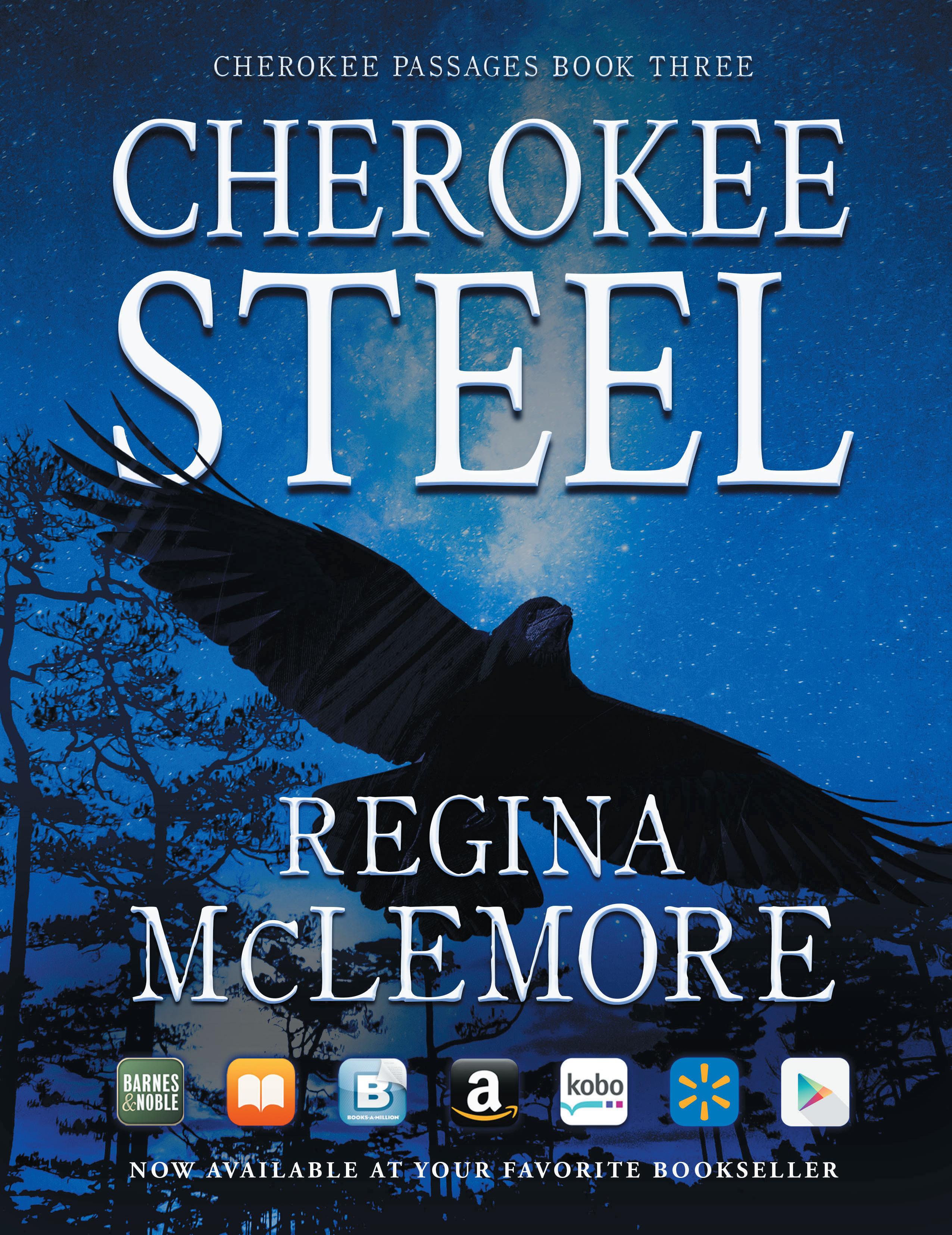
Doyle scurried back to his horse, mounted, and readied himself for the charge. He checked his ammunition, canteens, and the pouch of dried venison— things he would need if he made it to the Apache alive. He carried the Spencer carbine and started the roan forward at a trot.
When the corral came into view, he kicked the horse into a full gallop. In seconds he opened the makeshift corral and drove the horses directly into the outlaw’s camp. Doyle fired a round into the air as he yipped and howled, pushing the frightened animals through the camp. The horses scattered in every direction as disoriented and half-drunken bandits reached for their guns and struggled to get out of their blankets. By the time most of them realized what had happened, Doyle was through the camp and closing fast to where the Apache women were holed up.
Doyle figured the odds were pretty good that if one of the bandits didn’t shoot him, the confused Apache woman probably would. Sudden shots rang out from all sides, and he felt the heat of a bullet clip the sleeve of his shirt, burning his skin. Seconds later, he saw a muzzle flash off his left side and felt the roan shudder as her front legs collapsed. Doyle was tossed headlong over the horse landing hard on his shoulder in a clump of prickly pear cactus. The wind knocked out of him, he managed to ignore the pain as he scrambled along the ground trying to recover his rifle. As he reached for the Spencer, he heard the unmistakable sound of a gun being cocked. He looked up and saw a grinning, sombrero-clad Mexican, sighting down on him with an old Hawken gun. He closed his eyes and waited for the end that never came. A shot sent the Mexican backward, his throat becoming a fountain of blood. Doyle grabbed the carbine and scrambled for cover in the rocks. He’d barely caught his breath when he found himself staring down the barrel of a Sharps carbine carried by a fierce-looking Apache warrior with a streak of white paint running from under one eye, over the bridge of her nose, and under the other eye. If ever he’d seen a look of pure hatred on the face of another, it was staring at him now. She wore the clothing of a male warrior, a yellow headband, a breechclout, a simple cotton tunic shirt, and deerskin moccasins that rose to just under the knee.
In near panic, Doyle managed to mumble in mixed Spanish and English, “Woman, I am not your enemy.” For what seemed like an eternity, the warrior woman stared back without so much as a flinch. Slowly she lowered the carbine. Turning away, she replied in the same broken English, “All white-eye, enemy.”
Doyle climbed high into a rock formation where he could see the pandemonium playing out below. The scalp hunters were busily trying to recover their horses without making themselves easy targets. The Apache woman occasionally snapped off a shot, but things soon became quiet.
Doyle figured the bandits would lick their wounds and decide what to do next. In the meantime, he had some wounds to attend to. The gun shot only grazed his arm, leaving a superficial wound. The painful injury was the prickly-pear thorns, several of which were embedded in his upper back. Doyle knew the thorns needed to come out, but several were out of reach.
He built a small fire, made coffee, and heated his Bowie knife, hoping he could avoid having to cauterize the wound. He took off his shirt and gently removed the thorns he could reach. Then, mysteriously as she had appeared before, the Apache woman stood several feet away, bathed in shadow, her rifle lying in the crook of her arm.
He pulled the knife from the fire and held it above the imbedded thorns in his shoulder. She stepped forward, shook her head warning him, “Don’t use the knife on that wound.” She moved closer and examined the damage before removing a large, Arkansas Toothpick from a sheath at her side. Doyle remained impassive but hoped the woman was planning to use the knife on the thorns and not his throat. Using her fingers and the tip of the razor-sharp blade, she removed five thorns from his back.
“Agua?” she said. Doyle handed her his canteen and watched as she cleansed the wound. She opened a small buffalo gut bag and removed a pasty concoction that stunk something awful but once applied, immediately soothed the wound. When she’d finished, Doyle said, “Gracias.” She nodded once, then turned to leave. Doyle patted himself on the chest and said, “Mi nombre, Doyle.”
She stared at him for a moment and replied, “Doy al.”
He nodded. “Si.”
Pointing at her, Doyle asked, “Usted nombre?”
She hesitated, then replied, “Lozen.”
Using a clumsy combination of Spanish and English, he learned that Lozen was escorting the frightened pregnant squaw back to her home on the Mescalero reservation in southeastern New Mexico. They had traveled for days from somewhere in the Mexican State of Sonora. Doyle was amazed the women had made it this far, dodging ranchers, miners, bandits, the Mexican army, and the U.S. cavalry.
Lozen asked what a white man was doing traveling alone in Apache country. Doyle explained that he owned a ranch near Ruidoso where he intended to raise livestock. Lozen pointed at the pants he was wearing, blue with a gold stripe running down the side, “Pony soldier pants,” she said. Pointing to himself, Doyle said, “Scout.”
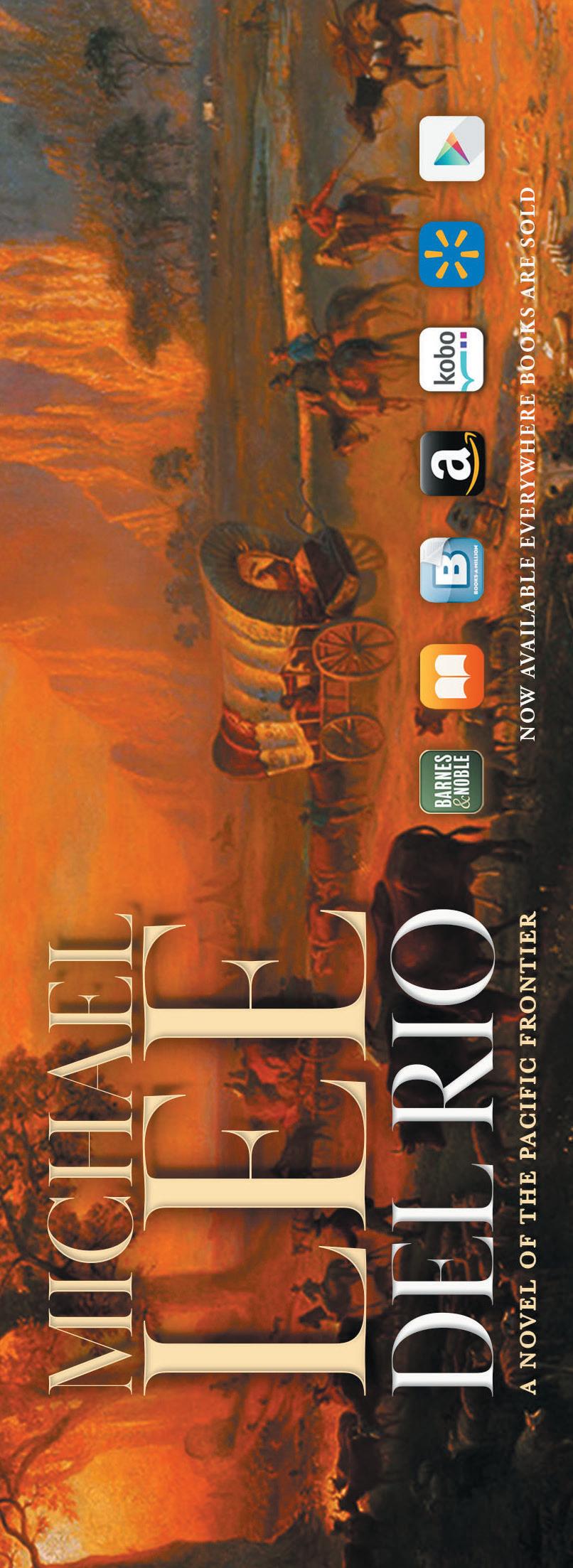
The short conversation ended abruptly when they heard movement from below and scrambled into defensive positions along the rocky shelf about thirty feet apart. Daylight was still a couple hours off and so began a nerve-wracking wait-and-see what the Comancheros would try next. Doyle doubted the bandits were simply going to ride away. If he was right, they would attack soon with everything they had left.
IN
, the slightest sound was amplified as though it came through an echo chamber. Doyle could hear the movement, the sound of a boot settling in sandy soil or an article of clothing brushing against sage. And if he could hear it, he had no doubt the Apache woman could as well. The sky overhead was clear, and stars of every size bathed the night sky.
Doyle figured the scalp hunters would use the available moonlight to close in. They had about a dozen fighters remaining, and if they succeeded in getting inside their rocky defensive enclosure, numbers alone would dictate the outcome. Perhaps Lozen agreed because the next time he glanced her way, she had disappeared. She’d left her rifle against a rock where she had stood watch, but she was now nowhere in sight. That did not bode well for the bandits.

Moments later, a loud scream announced the presence of Lozen among the scalp hunters, and then Doyle heard a dull thud, followed by a bandit cursing in Spanish while screaming for help. He went down with an arrow protruding from his thigh and immediately began crawling away in a desperate attempt to flee the impending fight.
If the scalp hunters were angry before, they were furious now. After a brief pause, they opened fire in unison and surged forward in a ragged skirmish line, seeking cover wherever they could. Lead flew in every direction. Doyle shot a fighter who had nearly breached their position. Lozen had returned and rained fire on the bandits with deadly accuracy. Doyle concentrated his fire on the line’s scattered center from which the largest number of remaining bandits were bunched.
Despite their best efforts, one of the outlaws had flanked their position and gotten behind him. Doyle dropped his rifle and grabbed his pistol as the rifle-toting bandit stepped into the open and fired a wild shot that barely missed his head. Doyle dove off the rock just as the bandit raised the carbine to fire again. The rifle discharged at their feet as the men struggled for control of the weapon. They rolled over and over until the muscular Indian had Doyle pinned on his back and was using the barrel of the rifle to crush his throat. A shadow appeared above the man and Doyle watched as the pregnant woman raised both arms above her head and plunged a ten-inch blade into the Indian’s back several times. He screamed once, agony and shock etched on his face, and then rolled to his side, dead.
As the volume of gunfire began to diminish, Doyle returned to his position in the rocks. The surviving bandits had begun pulling back. In the waning darkness, they gathered their horses, broke camp, and disappeared. Neither he nor Lozen moved from their perch, unsure whether the departure was permanent or merely a ruse.
At dawn, Doyle cautiously left their rocky fortress to reconnoiter the immediate area for signs of the surviving bandits. A thin trail of smoke rose from their campfire. Doyle counted three bodies, including the one killed by the Apache woman, scattered over a couple of hundred yards. Unlike Apache, who removed their dead whenever possible, scalp hunters had no such predilection. The bodies of the dead were
left where they fell for the benefit of scavengers who would soon have the bones picked clean.
By midmorning, he had returned from his scout having found no signs of the hostiles. He had also recovered his saddle and gear from the dead roan. He would miss the old girl. They had been partners for more than a decade, and she had helped him through more than one tough spot.
Lozen had somehow managed to capture two of the bandits’ horses during the chaotic standoff. She gave one to Doyle without saying a word. Doyle offered to share his remaining food and water with the women. During the remainder of the day, they cared for the horses, kept watch, and rested.
By nightfall, things remained quiet, and Doyle took a moment to thank the Almighty for allowing him to help save the Apache women while surviving the ordeal himself. He also focused on his own good fortune at having the chance to begin a new life high in the New Mexico mountains. With those pleasant thoughts, Doyle drifted off to sleep. He awoke with a start several hours later, just before sunrise. It was deathly quiet. Rifle in hand, he knelt on one knee for several minutes, listening to the sounds of night. As he moved cautiously through their defensive enclosure, Doyle realized that he was alone. Lozen and the squaw were gone.
Doyle arrived in the village of Ruidoso four days later. He hoped the Apache women arrived safely at the Mescalero reservation, though he had no way of knowing. What he knew for certain was that he’d been in the presence of an extraordinary woman, a fighter, a healer, a defender of her people and way of life.
IN THE YEARS AFTER the encounter with Lozen, my ranch outside Ruidoso prospered. I’d built a home and watched as my horse and cattle herds grew. Although I hadn’t seen Lozen since, she was never far from my thoughts. I followed the Apache campaign by reading whatever accounts I could find or by word of mouth from friends or strangers passing through.
Early one morning in the fall of 1884, I stepped
outside to haul water from the well. The aspens were shouting out in bright colors of yellow, gold, and orange. I don’t know what prompted me to glance up, maybe that nagging feeling that something was amiss. Seated astride a pinto some two hundred yards away, sat an Apache warrior, watching. I glanced at the rifle leaned against the wall of my front porch stoop. The warrior’s back was to the rising sun, and I had to shade my eyes with my hands to see him clearly. I muttered, “Well, I’ll be damned.” The rider was Lozen, I was sure of it. I raised my hand high above my head, palm extended outward in a gesture of friendship. After a short pause, she extended her right arm above her head returning the gesture. She sat for a full minute before turning the horse and disappearing into the thick aspens. It was the last time I ever saw her.
It wasn’t until after the final surrender of Geronimo two years later, in 1886, that I happened upon an El Paso newspaper account that mentioned Lozen was among a small group of Chiricahua fighters who had fought alongside Geronimo until fatigue, starvation, and death finally forced their surrender. The Apache were subsequently loaded into box cars and banished to Florida. The days of the free Apache were over.
The article described Lozen as a respected shaman and healer among her people, a fierce warrior who had killed many enemies in battle, and that she was the younger sister and right hand of the famous Chiricahua Chief, Victorio. How well I remembered him. We’d chased Victorio all over the southwest, getting only close enough to catch sight of his dust trail. Lozen was not with him at the time of his death when he and most of his warriors were ambushed by the Mexican army at the Battle of Tres Castillos in northeastern Mexico. She had chosen, instead, to guide a vulnerable, pregnant Apache woman through northern Mexico to the Mescalero reservation in southeast New Mexico Territory, only then to learn about the death of her brother.
Like most of my neighbors, I’d lost a few head of cattle over the years to predators. That was to be expected. Unlike my neighbors I had not suffered the loss of a single head of cattle to Apache raids, something that made some of those neighbors suspicious and a couple of them downright hostile. It was almost, as one old friend told me, like I had a guardian angel.
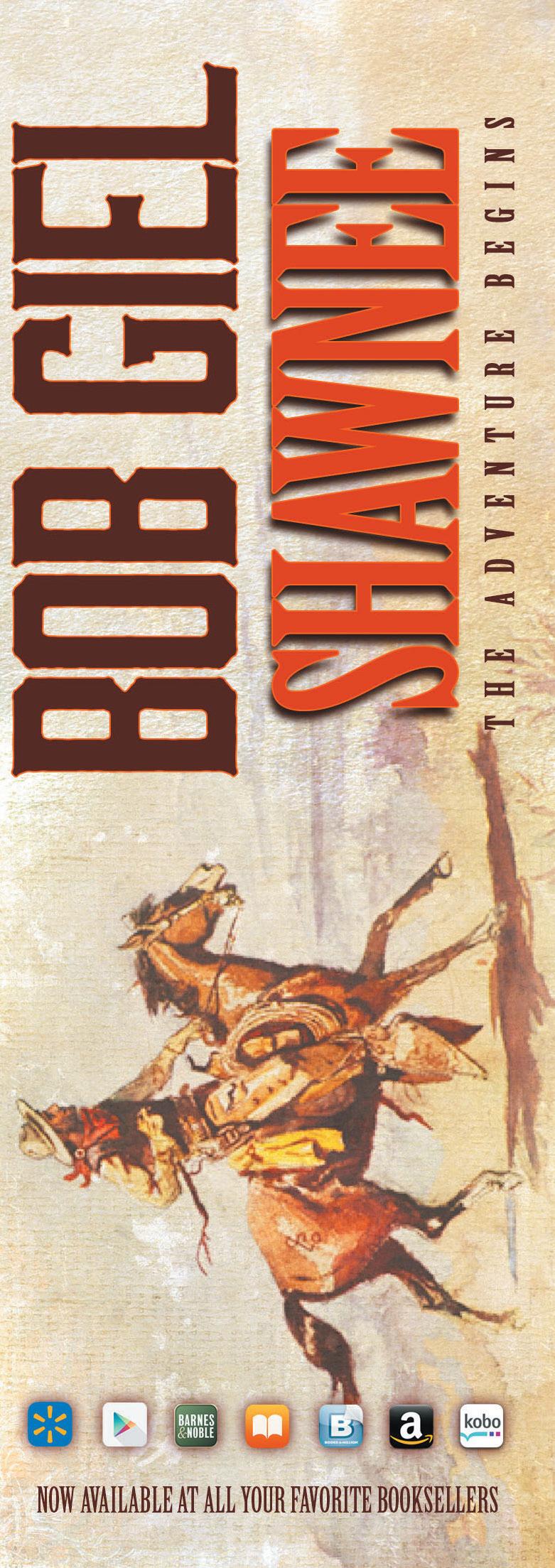
I would just smile.

author’s imagination because often, many facts are either unknown or in dispute. One thing not in dispute in this story: Lozen, in 1880, embarked on a dangerous journey to return a frightened and vulnerable Mescalero Apache squaw to her home in southeastern New Mexico. During Lozen’s separation from her brother, Chief Victorio, he and most of his men were ambushed and killed by the Mexican army.
What is also known is that Lozen joined Geronimo’sda for what they were promised would be a two-year stay. The government ignored that promise, and the Apache remained prisoners of war for twenty-seven years, until their repatriation to their beloved New Mexico in 1913. As for Lozen, she would not live to see her homeland again. She died of tuberculosis in 1889 and was buried in an unmarked grave at Mount Vernon Barracks, Alabama.
The character and storyline of former U.S. Army scout,thor’s imagination.
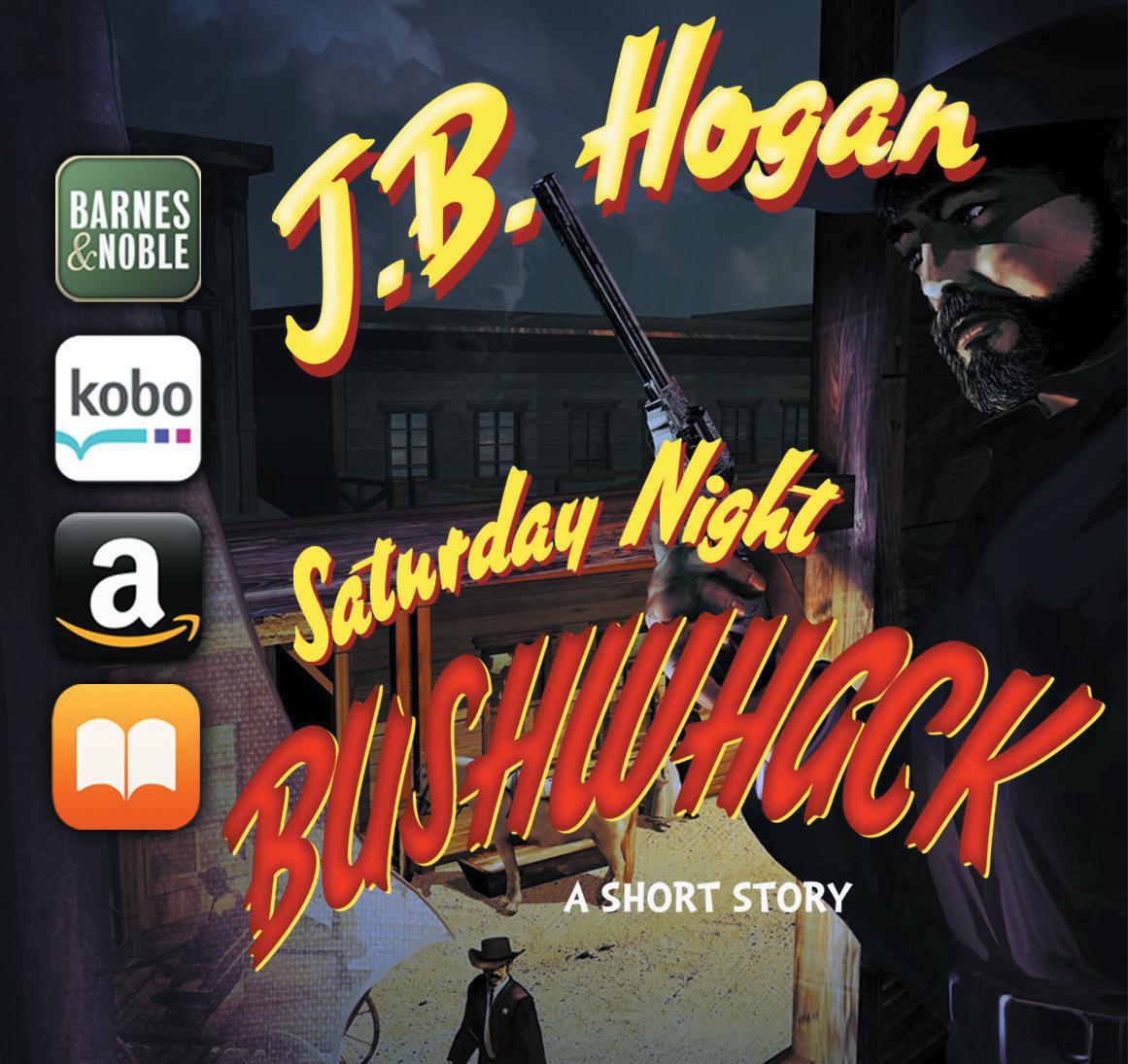
MaICHAEL NORMAN is a published mystery author with five books in print (and a 6th currently in the oven). These books include: The Commission (Named by Publisher’s Weekly as one of their 100 Best Books of 2007), Silent Witness, On Deadly Ground, Skeleton Picnic, and Slow Burn. The Poisoned Pen Press published four of the above titles. Norman is a long-time member of the Mystery Writers of America, and more recently, he joined the Western Writers of America. Lozen’s War is Norman’s first western short story, and the first to appear in the pages of Saddlebag Dispatches. He is currently working on a second 19th century western, undecided about whether to leave it as a short story or expand it to novel length.
With doctoral degree in hand, Norman spent 25 years in academia, serving in the Criminal Justice departments at both Illinois State University and Weber State University.
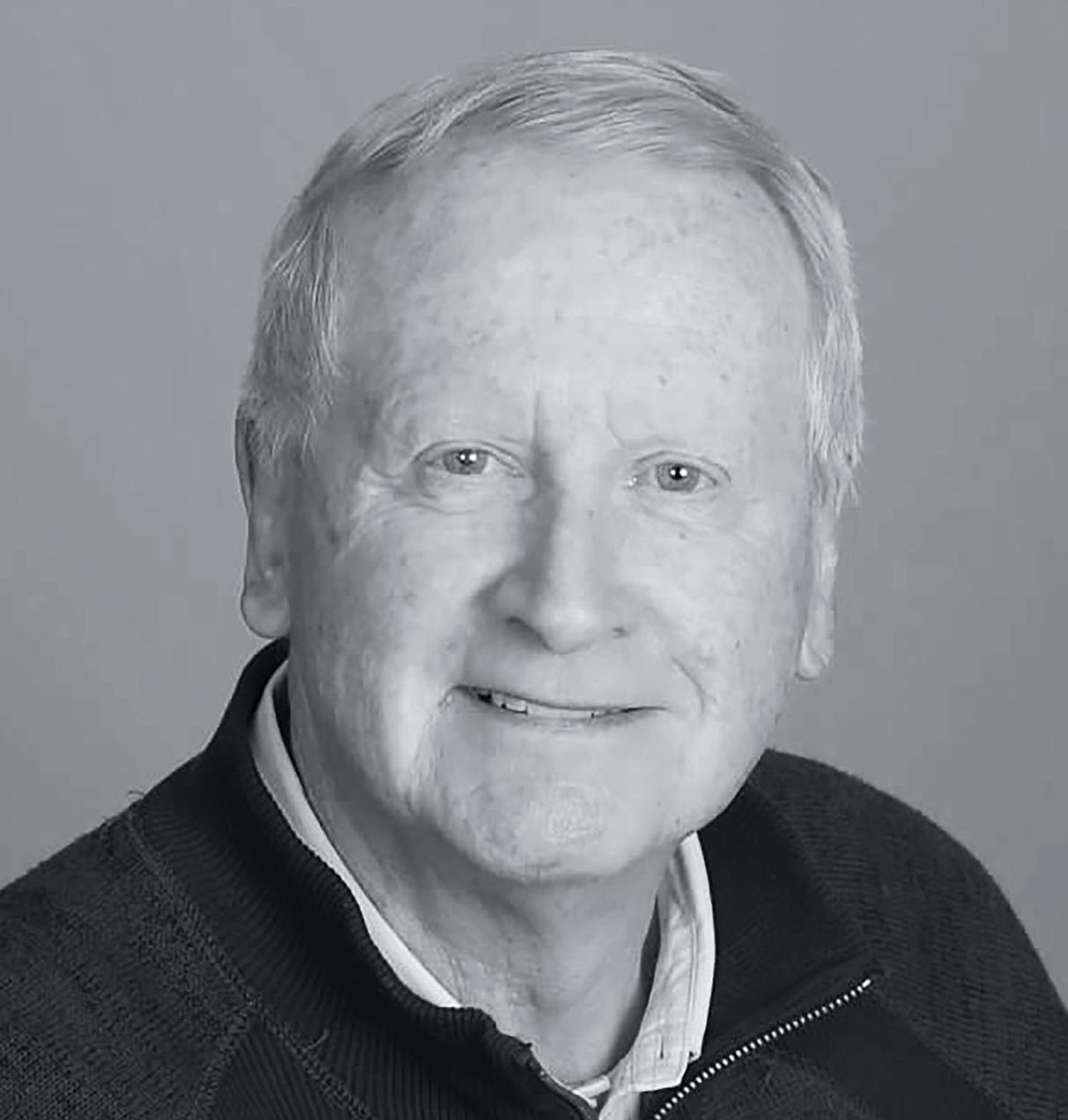
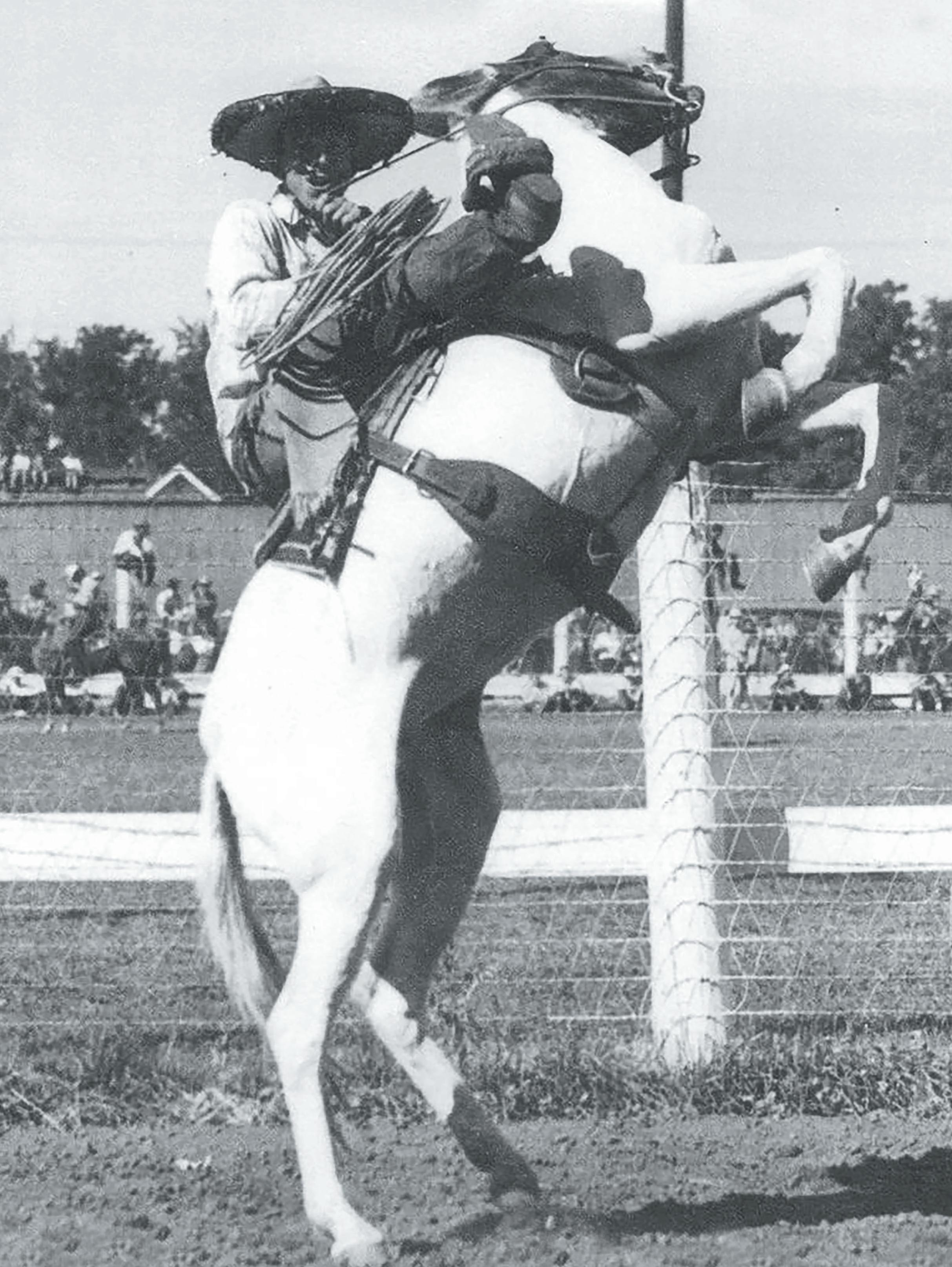
LOCATED AT THE BASE of the Cascade Mountain range, where the fertile soil of the Columbia Basin begins, sits Kittitas County, Washington. Practically in the geographic middle of the state, it was then fitting for the county seat of Ellensburg to become the destination spot for entertainment and excitement every September when folks from around the state and beyond would gather for the annual Ellensburg Rodeo.
Shortly after World War I, the windswept region surrounding Ellensburg was thriving with cattle ranches and hay farms. After becoming a state in 1889, the legislature chose it to become the home for the State Normal School for Educators (now known as Central Washington University). It had railway connections and was on the route for the proposed highway through the Snoqualmie Pass to Seattle and the Pacific coast.
The sleepy little town was becoming a thriving community with a population of over 3,800 and several thousand more throughout the county. The
town fathers were a progressive lot who recognized the need to infuse money into the community other than from the local ranchers, cowboys, and college students. It was Leonard Davis, the county extension agent, who took notice of end of summer events being held on weekends at the local ranches. As many as 300 spectators would head out to places like the Ferguson Ranch for a make-shift rodeo to earn prize money collected from entry fees thrown into a hat.
Davis felt a county fair experience could be held in conjunction with this amateur rodeo and even managed to organize a few events on the private property. Local veterinarian, Dr. H.E. Pfenning, wanted to take it a step further by offering a Wild West Show because they were so popular in the East and in Europe. In the winter of 1922-1923, with the support of the Chamber of Commerce, discussion began with the Kittitas County Commissioners to purchase land within the city limits of Ellensburg to act as an event center, which would allow for the hosting of a county fair and a rodeo. The idea was enthusiastically supported by the
local ranchers who saw it not as competition for their events but an opportunity to attract a greater audience and additional competitors from around the region.
Legislation from the State of Washington allowed for the County Commissioners to spend $10,000 for the purchase of land and production of an annual county fair event. What else was to be held during the fair was left up to the county to decide. The donation of several acres on the north end of town helped to dissuade the cost of land chosen for purchase. Donations from Ellensburg Parks and Recreation, Ellensburg Public Schools, and the State Normal School, added to the growing fund (with the agreement of off-season use of the facilities for their sports events).
Ellensburg was growing out of its small-town image to that of a thriving community with the formation of Rotary and Kiwanis clubs. These organizations supported the fair/rodeo project with either funds or in-kind donations. Plans were soon drawn up for fair booths and barns, but the land still needed a rodeo arena and grandstands which meant more space had to be acquired going well beyond what was presently allotted. Additional donations from the state in April 1923 helped with the purchase of adjacent acreage, but it wasn’t enough to cover the lumber to build the arena and bleachers. A committee of local businessmen divided the county up in sections, and each set out to create smaller groups, spreading the word to recruit from the populace in-kind or monetary donations to help finish the project by summer.
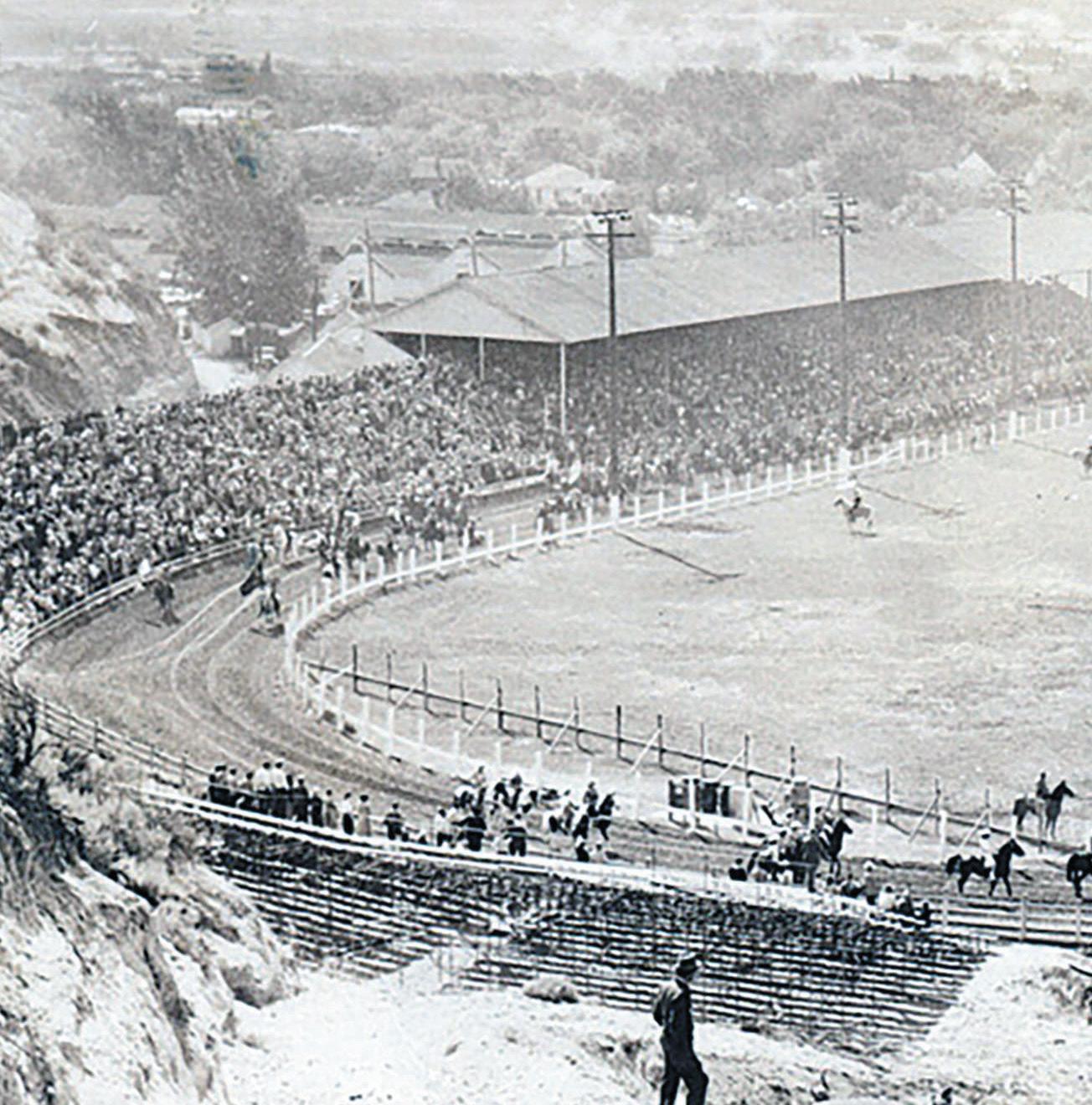
Like the plot of an Andy Hardy movie where the gang comes together to create a stage production, on June 14, 1923, close to 2,000 men from around the county showed up with their draft horses, wagons full of lumber, shovels, and hammers to help with clearing the land and moving the path of a stream that ran through the outer edge of the property. A hundred women also arrived to cook and provide meals for
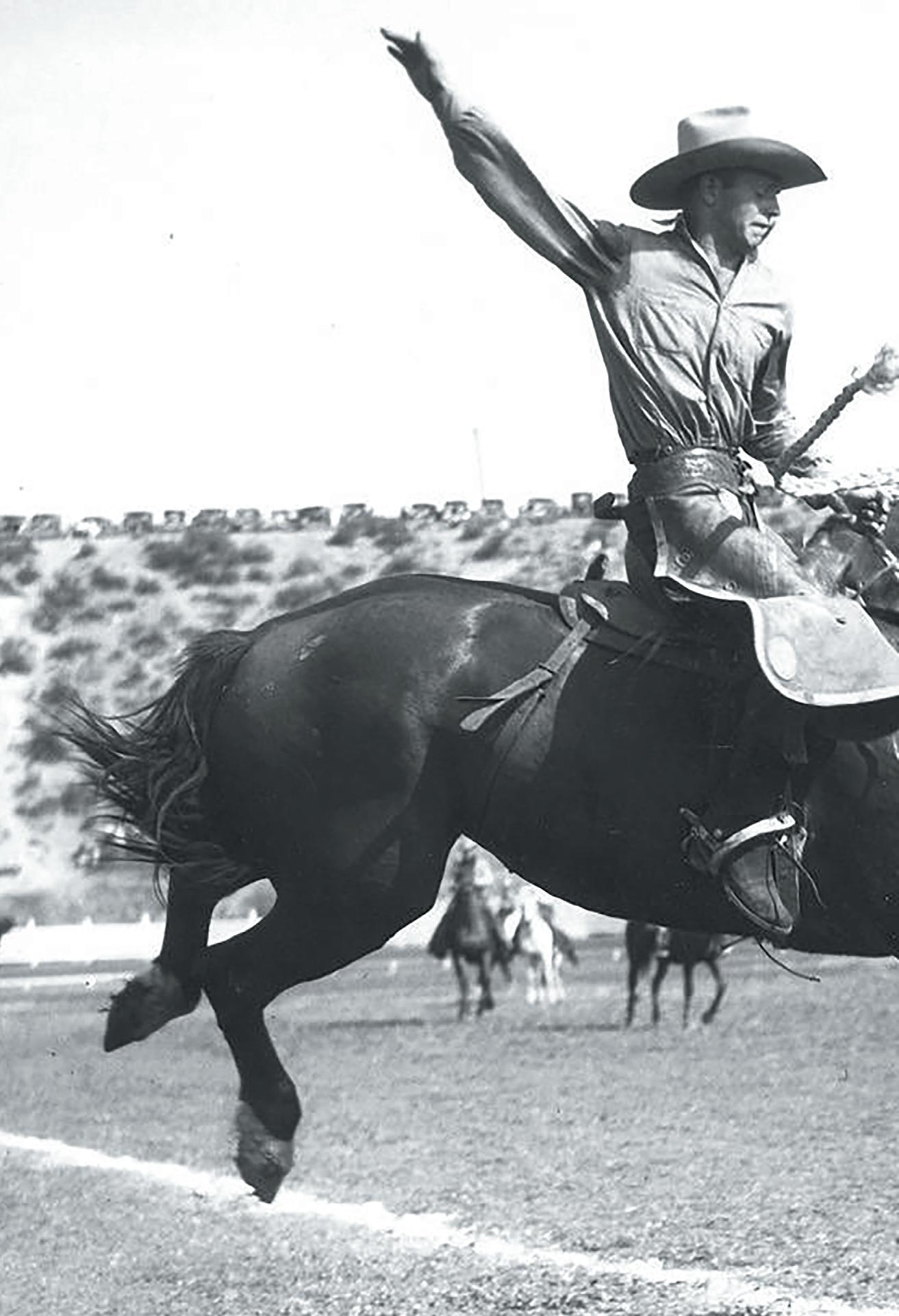
the volunteers which consisted of ranchers and their hands, farmers, businessmen from the town who closed their stores for the day, and members of the Kittitas Band of the Yakima Nation (recently the tribe exchange the “i” for another “a” in their name).
The coordinating committee had selected foremen, known as “straw-bosses,” to oversee specific tasks of clearing brush, landscaping, construction, and rerouting the stream. The county engineer supervised every stage of the development. The heavy work continued the next day with about 500 men to finish the ground clearing and beginning construction of the grandstands to seat up to 5,000 spectators. For the rest of the summer, men showed up on weekends to work all day in order to complete their assigned tasks.

Beyond the physical labor, another committee was established to do the planning and promotion of the actual rodeo event. Scheduled to coincide with the Kittitas County Fair on September 13-15, 1923, this committee selected the class competitions, publicized the event, recruited contestants, organized the grand parade through town, printed programs, secured stock of wild cows and steers (volunteered by the Ferguson Ranch), and saw to the capture of thirty wild horses from the local herds of the Whiskey Dick range. This committee developed into what is now the Ellensburg Rodeo Board of Directors.
One of the long-standing tasks, still appreciated by generations to follow, was the inclusion of the Kittitas Band of local Indians to participate as contestants and demonstrators with the establishment of an Indian Village for the public to visit. Tribal members, and their horses, were paid to parade in full regalia in the Grand Parade and Opening Ceremonies. Their encampment of teepees was located adjacent to the fairgrounds and beef would be provided for those who lived there for the three days of the rodeo/fair. Powwows were encouraged, and eventually other bands and tribes from around the region came to participate in what was being described famously as a cross cultural event. In years to come, the participation by tribal chiefs was so guaranteed that the opening of negotiations with Washington State officials over fishing rights was held in one of their teepees.

Eighteen contests were on the original schedule, and the program dared the spectators to “Watch ’Em Buck.” The professional events were held on the first two days with the amateur events on the third. Today’s professional list of events has been pared way down to meet the criteria allowed for a modern-day sanctioned rodeo, but the last day of the Ellensburg Rodeo is still dedicated to those wilder events and local participation. Gone are the professional stagecoach and chariot races, various women’s riding and roping events, and the Indian wild horse races, variations of all these are now relegated to “county” day. It was discovered that ticket sales would be down on the third day due to spectators returning home and the professionals moving on to other rodeos. This was expected and almost appreciated as the “county rodeo” was meant for events aimed at entertaining the locals and thanking them for their support.
The first year’s prizes were donated, cash or fancy tack, and this continued for several years with pledged sponsorships by local business. Besides prize money, they also provided saddles, chaps, and spurs to the winners. Eventually, a minimal amount of prize money would come from the entry fees. That practice came into question when professional rodeo cowboys, after watching the event grow year to year, felt with more participants there should be more money for prizes. Though the rodeo barely broke even the first year, their next year’s budget included raising funds to construct an additional 5,000 seating area around the arena. As greater amounts of money flowed in and out, a
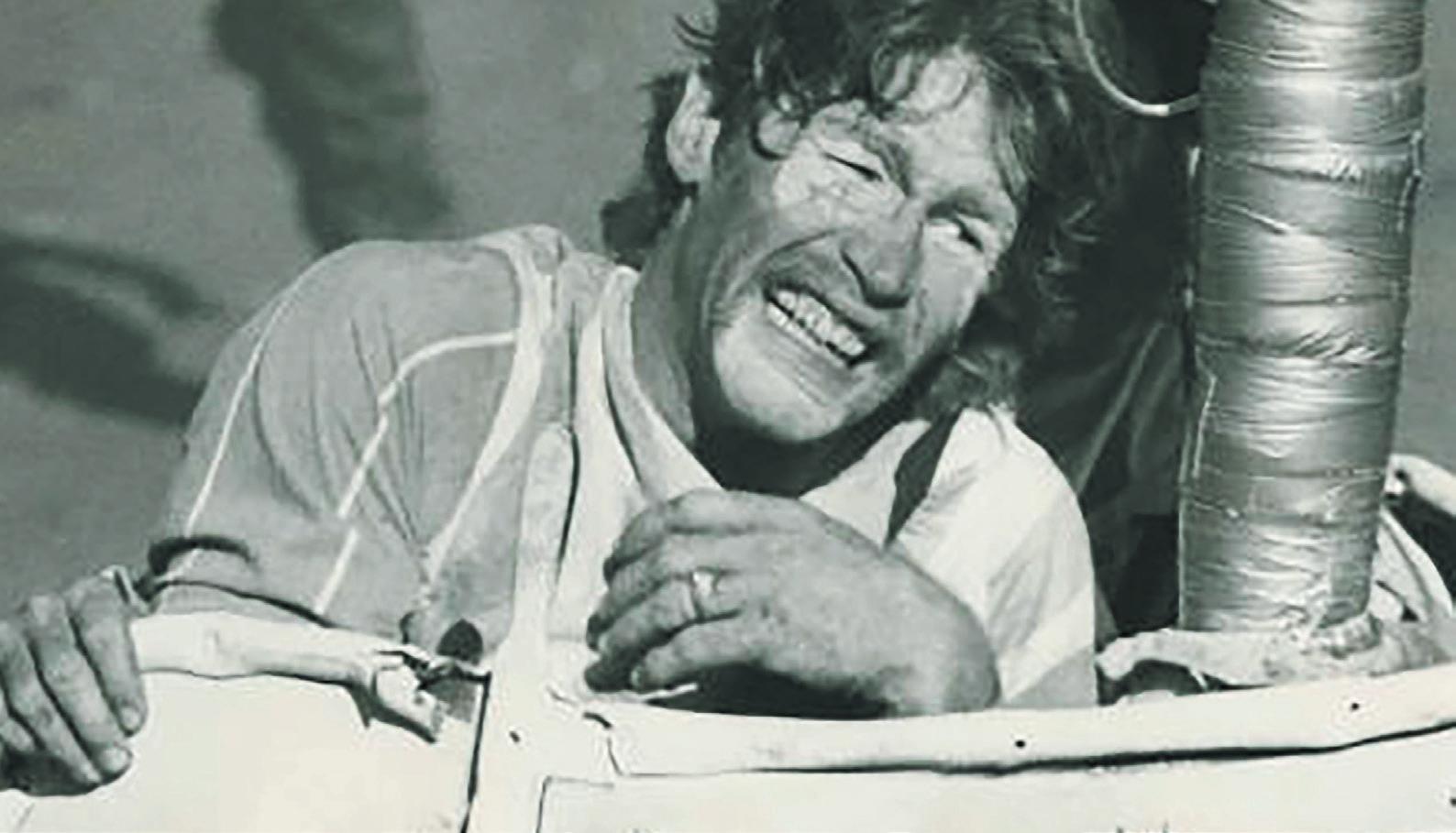
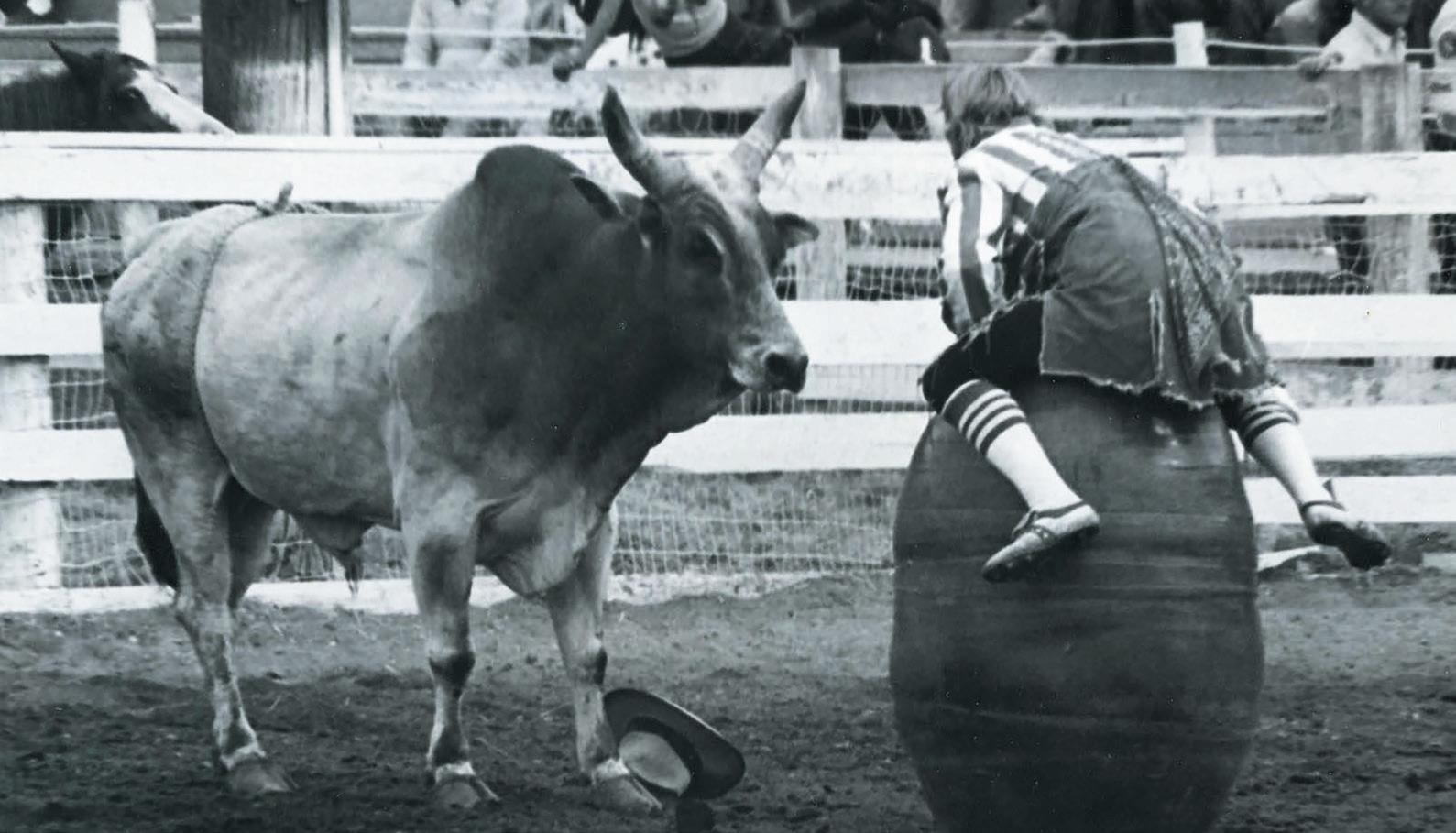

non-profit organization was made up of the original supporters of the rodeo to run the annual event. It was known as the Ellensburg Amusement Co, now known as Ellensburg Rodeo. Their board of directors is set up similar to the straw-boss system, each board member is in charge of several sub-committees, all working toward the same outcome of the rodeo.
It would be five years before the organization would post an actual profit. Until then, they relied on ticket sales, entry fees, pledged donations, and luck just to break even. The rodeo board developed a relationship with national companies for class sponsorship. This included gas companies, soda companies, and movie
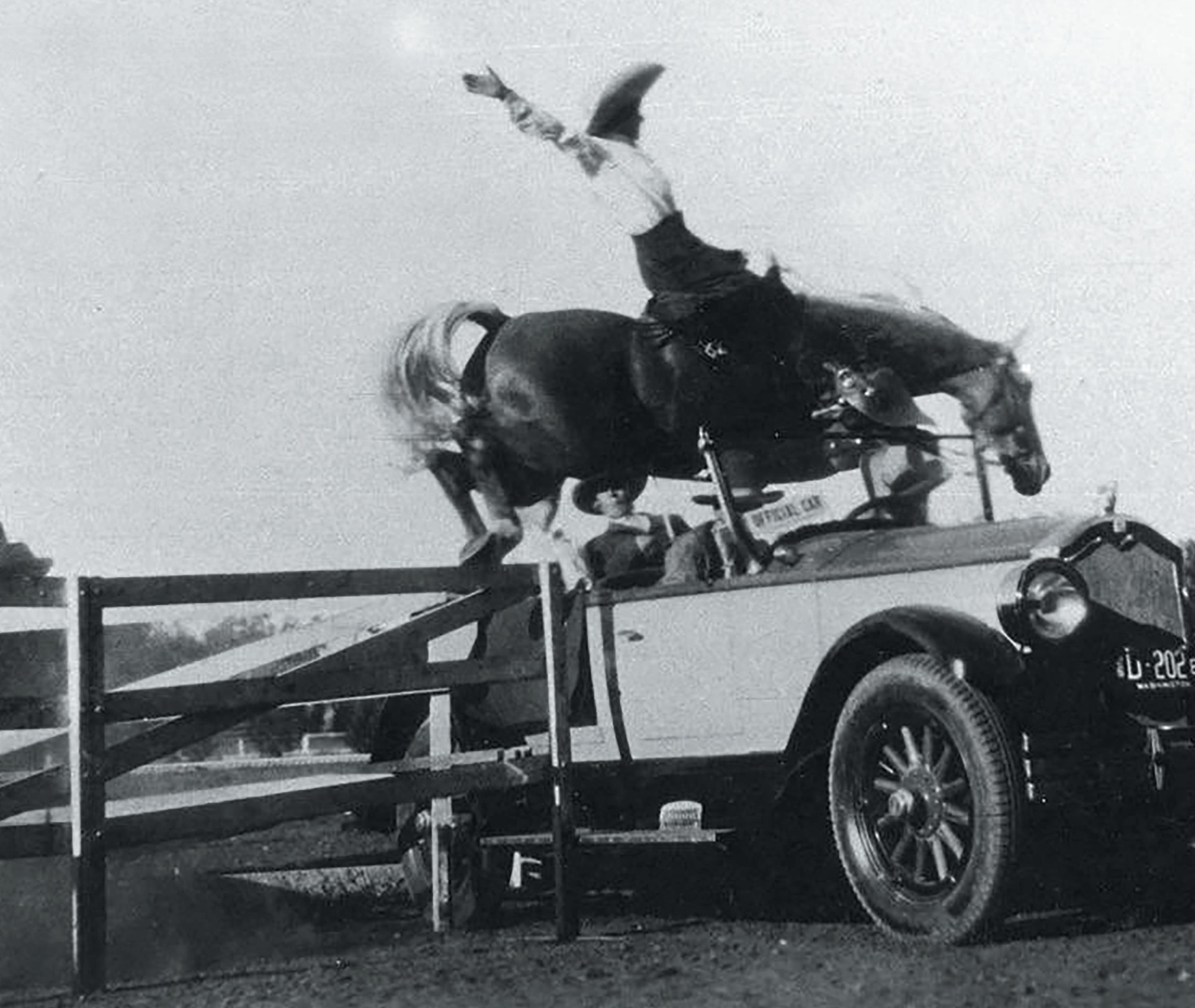
companies. Visibly, they appeared to be prosperous as they grew, with more seating and out-of-town spectators being shuttled in from the coast. Because of an excellent relationship with the Seattle Chamber of Commerce, representatives of the Ellensburg Rodeo (the Queen, her court, and usually their horses), would travel to the cities on the west side of the Cascades as well as around the rest of the state to promote the event. In the beginning, a few of the actual competitions for the Queen of the Ellensburg Rodeo were held across the mountains in Seattle, with young women from around the region vying for the title.
It wouldn’t be until 1931, before the rodeo/fair
was moved to its present designated slot of Labor Day Weekend, when another regional rodeo that had traditionally been scheduled for that weekend went defunct. Now, instead of it being Friday through Sunday, the rodeo would start on Saturday with the county event held on the Monday of the actual Labor Day.
With the creation of the Rodeo Association of America (RAA), they had to alter their events to come in line with other professional shows. It meant they had to change their contests to meet the regulations standardized times, classes, judges, and safety regulations if they wanted to join This also meant all women’s events had to be considered amateur and moved to the last day. Up until then they had offered Women’s Bronc Riding, Bulldogging, Steer Roping, and Relay Races. It would be almost fifty years later before the Women’s Professional Rodeo Association (WPRA) was able to negotiate for a $5,000 purse for Women’s Barrel Racing at the Ellensburg Rodeo. The only other professional event for female participation offered today is the Tag Roping event. Pole Bending and the Flag Race are still relegated to the “county day.”
The Ellensburg Rodeo organizers had to deal with a grass-roots organization of professional cowboys created to guarantee prize money worthy of the risks being taken in each event. It was known as the Cowboy Turtle Association (CTA) because like a turtle, members were sticking their neck out with involvement. Many of the regional rodeos were boycotted by the CTA members, who were considered national fan favorites. Similar to the professional sports organizations of today, rodeo cowboys had followings, and the rodeo organizers were counting on the presence of those contestants to put fans in the seats.
Ellensburg Rodeo was included in the 1937 CTA boycott. The problem wasn’t so much the regional rodeos as much as the Wild West shows frequently held in the eastern United States, notorious for promising prize money, yet when the show was over the money wasn’t there. The ripple down effect cascaded across the country, leaving several rodeos lacking in qualified entrants or as a form of protest outright refusing to accept CTA members as participants.
Ellensburg had always been known for their square
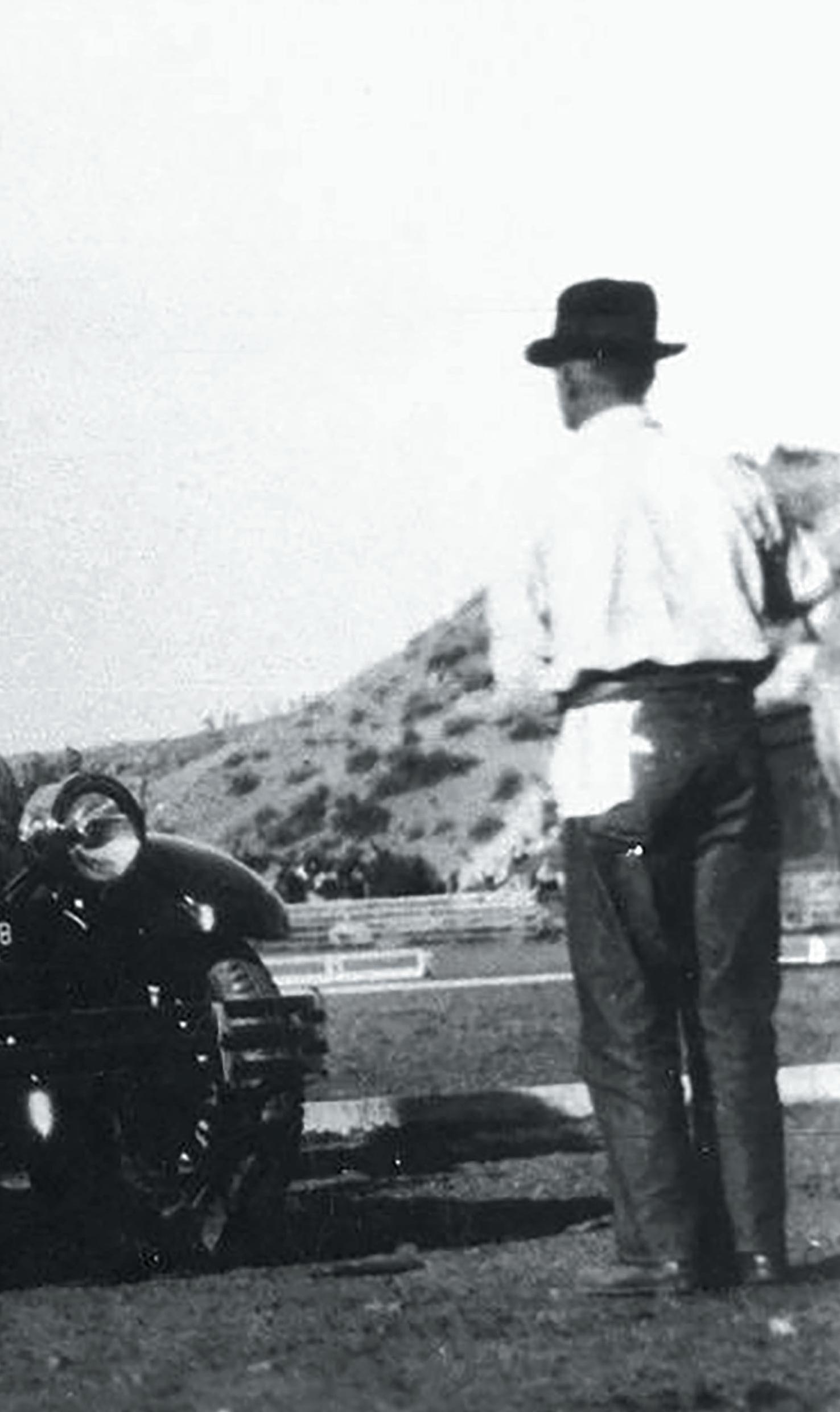
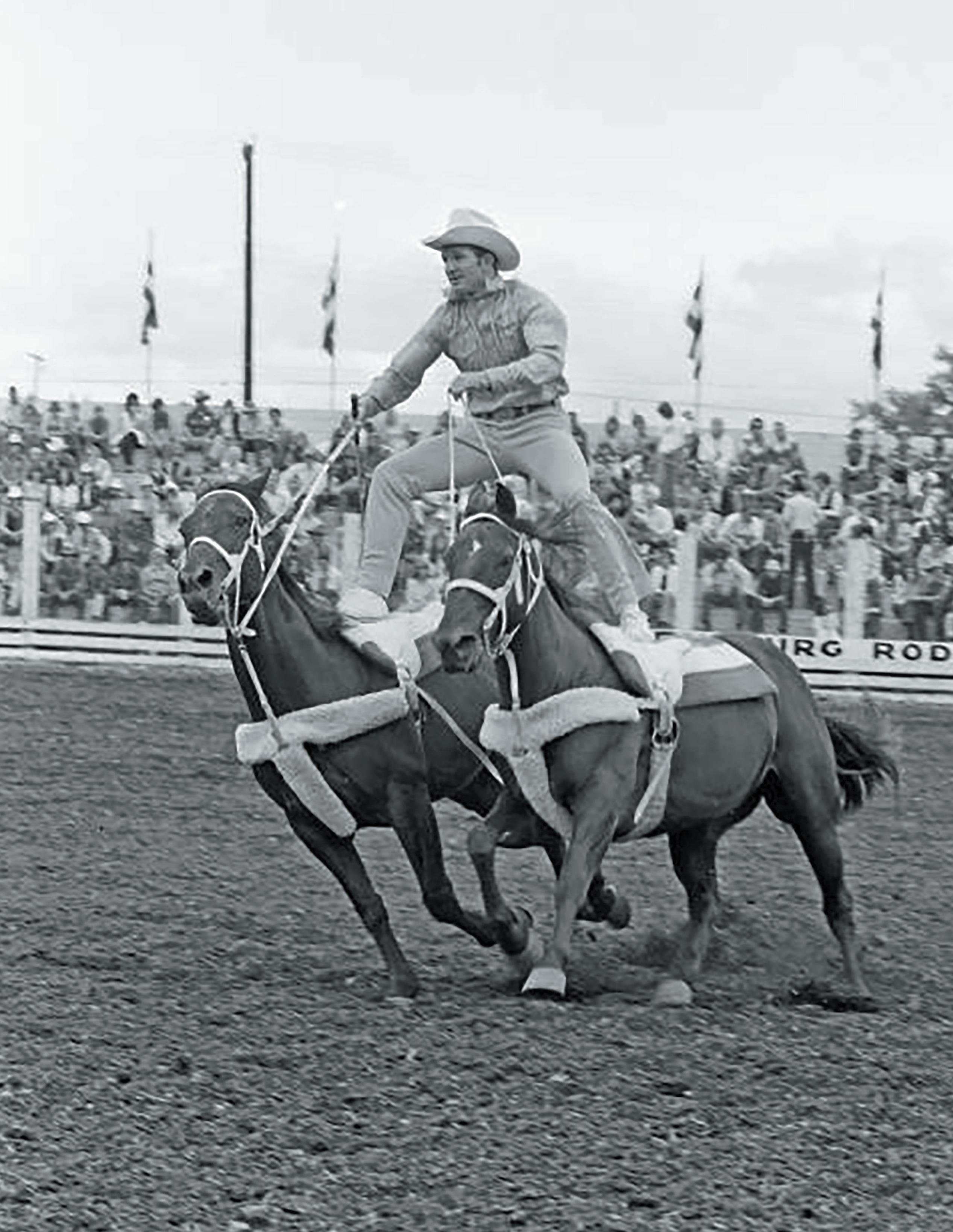
dealing with the cowboys, but recognized times were changing and eventually raised their prize money to be more inclusive of the entry fees. The 1937 rodeo did have some CTA members participate, but they were mostly local men who had started their careers at Ellensburg and were willing to break ranks for old time’s sake. The CTA eventually developed into today’s better-known Professional Rodeo Cowboys Association (PRCA).
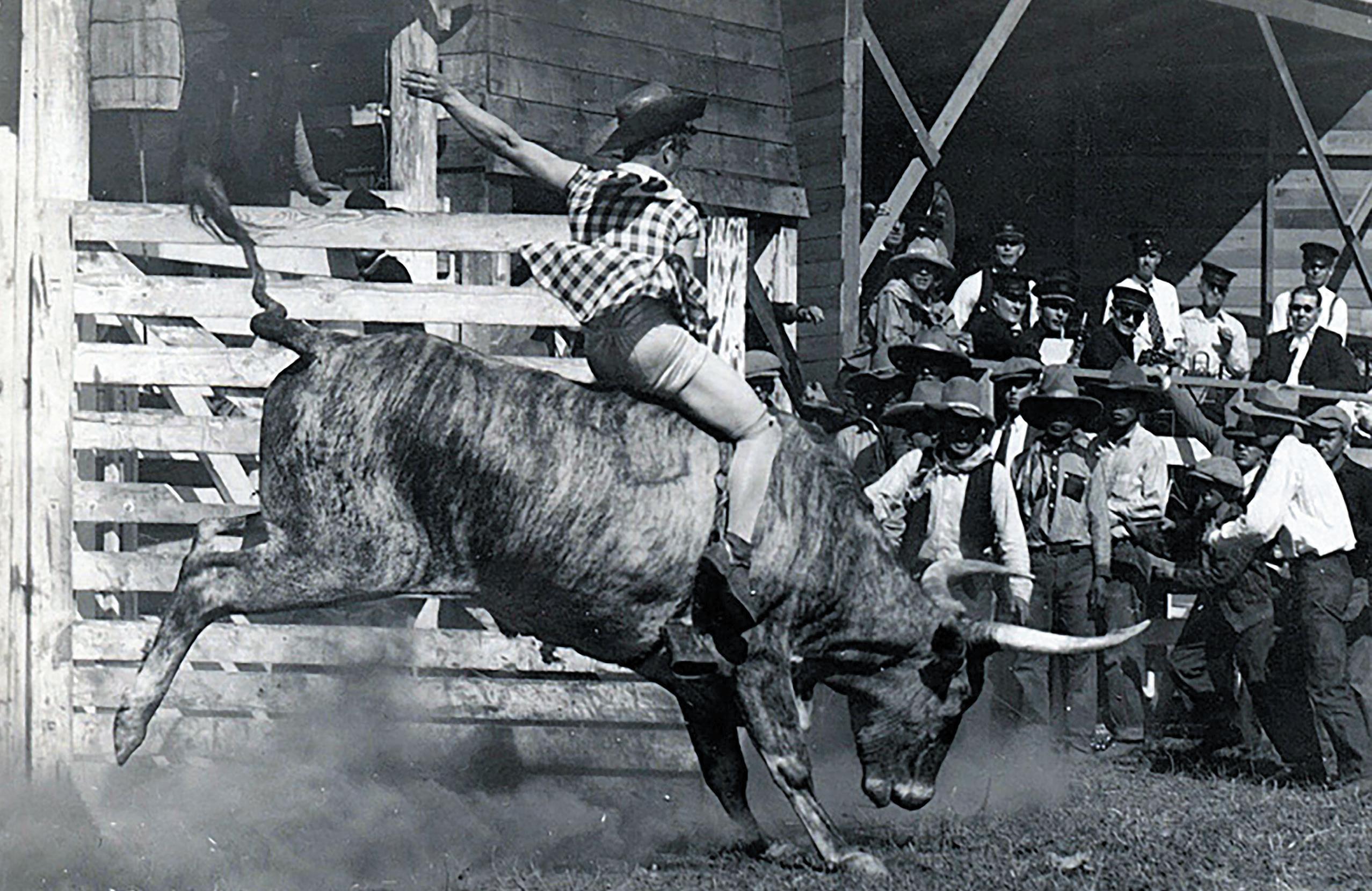
Recognizing they needed additional sources of income, the coordinators sponsored events that would keep spectators in town overnight as a guarantee they would stay for the next day’s show. One of these events was a locally written and produced three-act theatrical pageant retelling how the pioneers settled the west and ended with an attack and rescue. Members of the community fulfilled all the roles, even those of the local Indians, but eventually many Indians filled those roles themselves. Another event, not appreciated by the Kittitas County Fair Board, was a Beer Garden and eventually a mock gambling program (similar to today’s
Monte Carlo Night used for charity events) only for prizes instead of money. This event was sponsored by Ellensburg baseball and the American Legion who provided a portable floor for dancing to the music from a live orchestra.
Friday night concerts were soon added featuring national and regional talent. The music presented was, and still is, contemporary Western. Originally, the rodeo crew would haul out a stage in the middle of the arena and place bales of hay for the concert goers to sit on. This task became tiresome as many of the crew were rodeo participants themselves causing them to be up late hauling away the stage and haybales only to catch a couple of hours of sleep before having to be back to prepare for the next day’s contests.
Dr. Pfenning was given the honor of serving as superintendent for the 1923 event which was advertised as the “Wildest Roundup in the State.”
Traditional Western dress was encouraged, and still is today, so much so that during the grand parade prominent men from around town would be “jailed”
SHORTY NEWMAN ON A BRINDLE BULL, ELLENSBURG RODEO, 1929by the Kittitas County Mounted Sheriff’s Posse for not being appropriately dressed. Money posted as “bail” was donated as another form of fund raising for the rodeo.
Ellensburg Rodeo eventually became one of the cornerstones of the Columbia River Circuit, a regional grouping of rodeos which collectively tallied scores for outstanding cowboy awards. Earning an outstanding reputation as a quality event, the Ellensburg Rodeo provided a starting point for the careers of many world champions. One of the most notable of these men was someone eventually known outside the rodeo circuit, Enos Canutt. Moving on from his time on the circuit, now calling himself Yakima Canutt, he moved on to Hollywood first as a stunt man, then stunt coordinator, and eventually film producer.
The reputation of the Ellensburg Rodeo went beyond the management of the event but also in the quality of the livestock brought in for each performance. Originally, the broncs were wild horses captured from the local range for the performance. Each one was tested by local cowboys prior to the
show for suitability. According to a story told in John Ludtka’s book on the history of the Ellensburg Rodeo, on one occasion someone forgot to close the far gate of the arena during one of these tests so that bucking horse, still with rider, was seen leaving the fairgrounds and sprinting down a side street. Several years later, the rodeo contracted with Ringling Brothers for the use of their horses and Brahma steers from their private herd. The first steers and bulls were stock from local ranches like the Ferguson’s and eventually from the restaurateur Stuart Anderson’s ranch. Eventually contracts with other rodeos (such as Calgary) had animals shipped in on railway cars, making the drive from railway station to the rodeo grounds an annual event for spectators to freely watch from the hillside above the arena.
The desire to put on a good show for the spectators has always been foremost in the production of the Ellensburg Rodeo. That meant hiring the best in bull fighters for the protection of the contestants and the best clowns to entertain between rides and contests. One such was the “King of the Clowns,” Homer

Holcomb, and his trick mule, Orphan Annie. Female trick riders were fan favorites such as Bonnie Gray, who was known for jumping her horse, King Tut, over an automobile in the middle of the arena. In years to come, some notable male entertainers included John Payne, the “One-armed Bandit,” whose horse would guide his steers to the top of his cattle trailer. Another beloved entertainer was the movie star, Slim Pickens. He was known for a stand-up comedy routine from the arena but was loved for when he would go into the grandstand to tease the audience.
In 1997, John Ludtka wrote, The Tradition Lives: A 75 Year History of the Ellensburg Rodeo, in honor of the seventy-fifth anniversary of the event. It was a carefully researched description of the people and events leading up to the modern rodeo of today. Also created that year was the Ellensburg Rodeo Hall of Fame, a commission dedicated to sharing the history of the rodeo. Today they sponsor a museum and provide annual recognition of people, events, and animals that have left lasting memories of entertainment and support. The most recent inductees were Slim Pickens

for his memorable, pre-movie star, entertainment and Mabel Strickland, a trick-rider as well as contestant in the women’s bull-dogging event. The Ellensburg rodeo itself was honored in 2020 when the Professional Rodeo Cowboys Association inducted it into their Hall of Fame, taking its rightful place along with other regional events such as the Calgary Stampede and the Pendleton Round-Up.

World War II restricted two years of the rodeo, and the recent COVID pandemic also silenced the grandstand and arena for a year, but in 2021 it returned to a crowd eager to experience thrills as they cheered on the competitors. The centennial celebration for the Ellensburg Rodeo will be held Labor Day Weekend, 2023. Other Labor Day events, always the first Monday of September, have become popular around the state, so Friday was added to the schedule making it a four-day weekend. This allows for people to spend their time in Kittitas County for the traditional weekend and travel to other parts of the state for the actual Monday holiday, which in Ellensburg is still reserved for the celebration of their local supporters and volunteers.
If you’re looking for end-of-summer entertainment that’s family friendly yet wild all the same, make plans to visit Ellensburg, Washington, next Labor Day Weekend. There you’ll see firsthand how collective volunteerism and pride in tradition come together
for the sake of community support to celebrate our mutual history. The spirit of the pioneers is lovingly respected and presented with the utmost class and professionalism.
It’s a show you’ll never forget.
Author’s Note: Many thanks to Dr. Mike Allen, Communications Director of the Ellensburg Rodeo Hall of Fame, and Washington Rural Heritage: Ellensburg, for the gracious use of the photographs of the early days of the rodeo. Also, for his recommendation of The Tradition Lives: A 75 Year History of the Ellensburg Rodeo by John Ludtka, Ellensburg Rodeo Association, 1997.
P.A. O’NEIL is descended from Arizona pioneer stock, and has always had a love for the ways of the Old West. Her Smoked Irish heritage (Mexican and Irish) allowed for her to experience the world as a member of the minority
Lutheran University and has worked for colleges, churches, and youth organizations. She has been writing for almost
in anthologies and online journals. A collection of her stories was published two years ago and has met with great success. Witness Testimony and Other Tales is available in paperback and Kindle format and is still
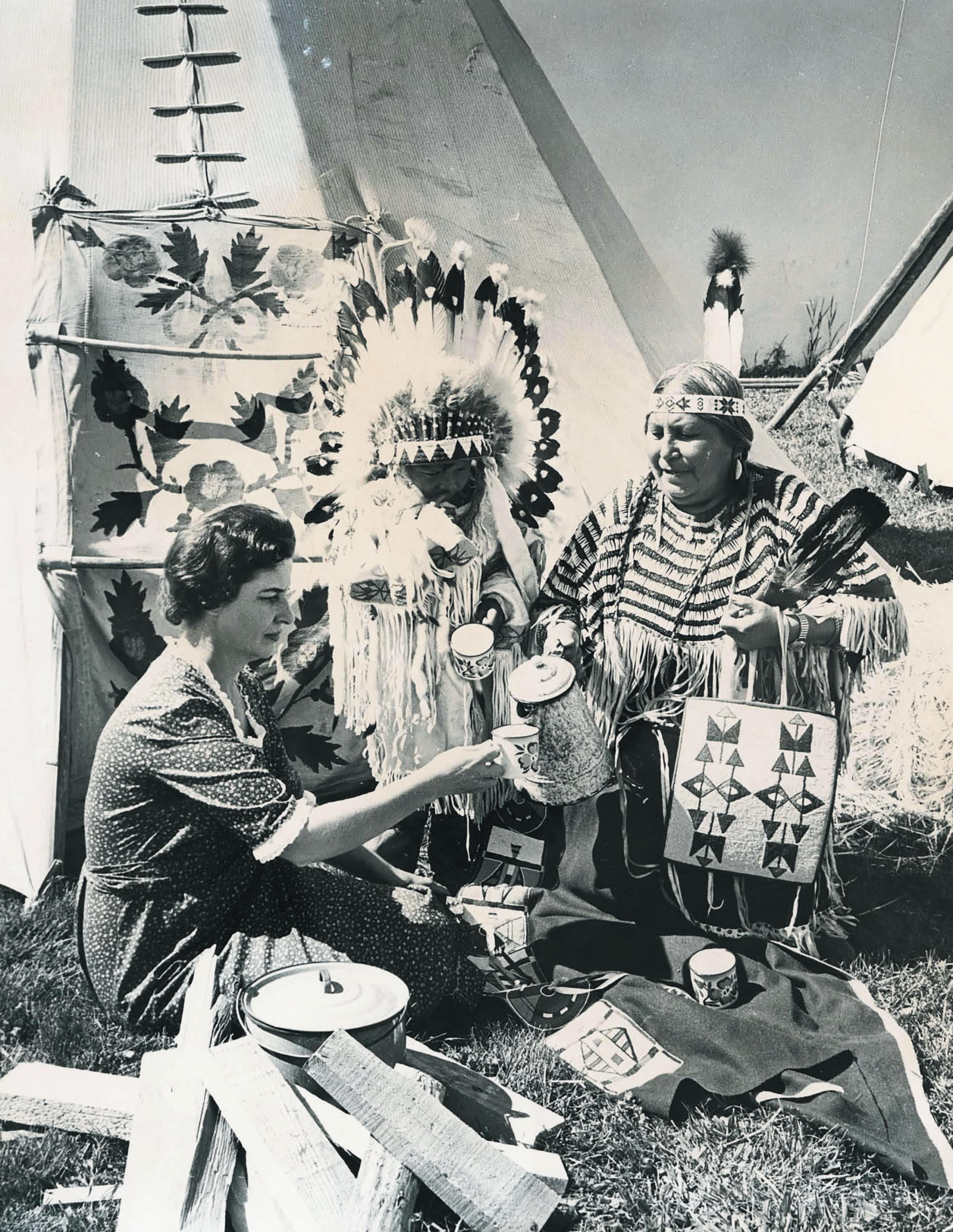
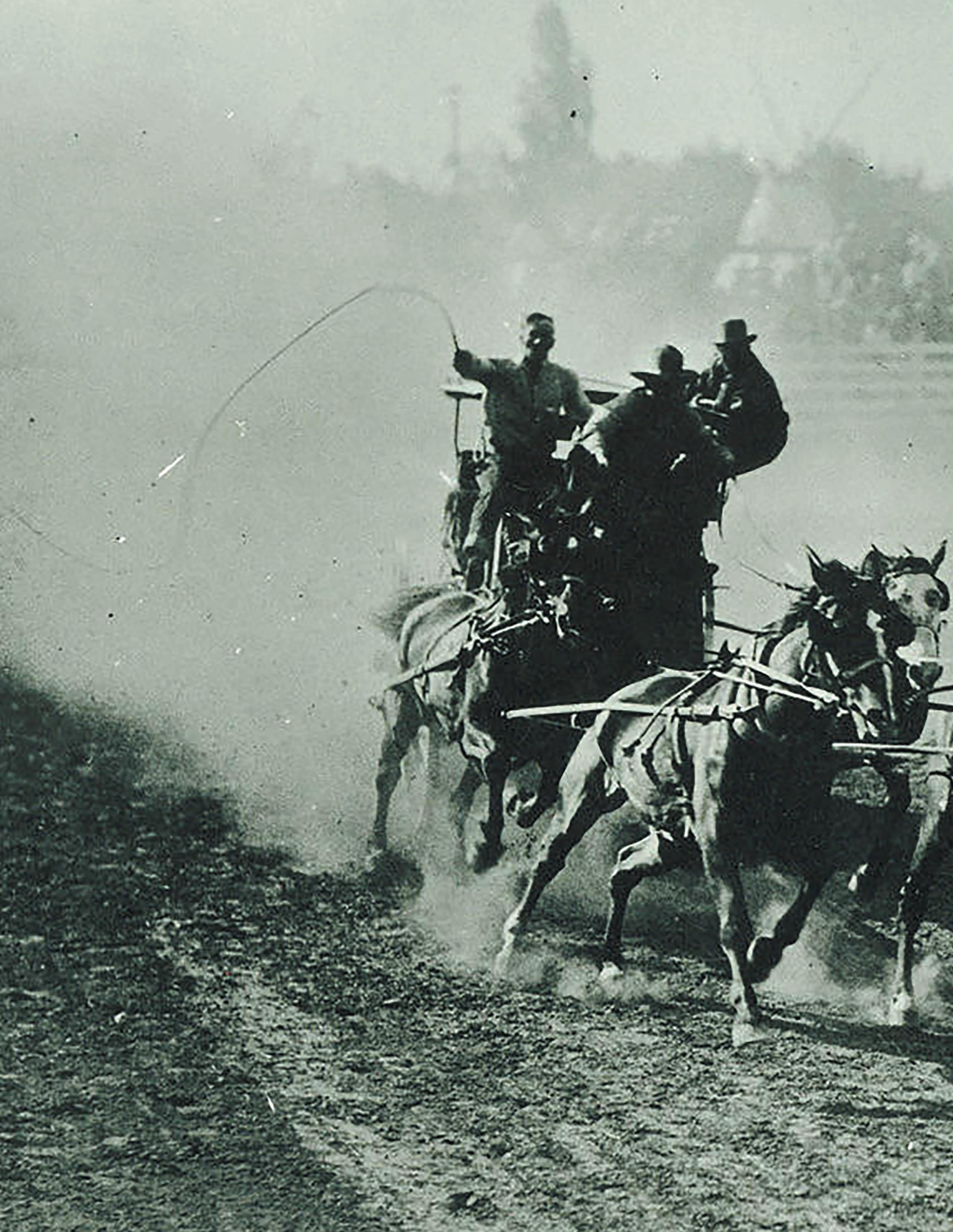
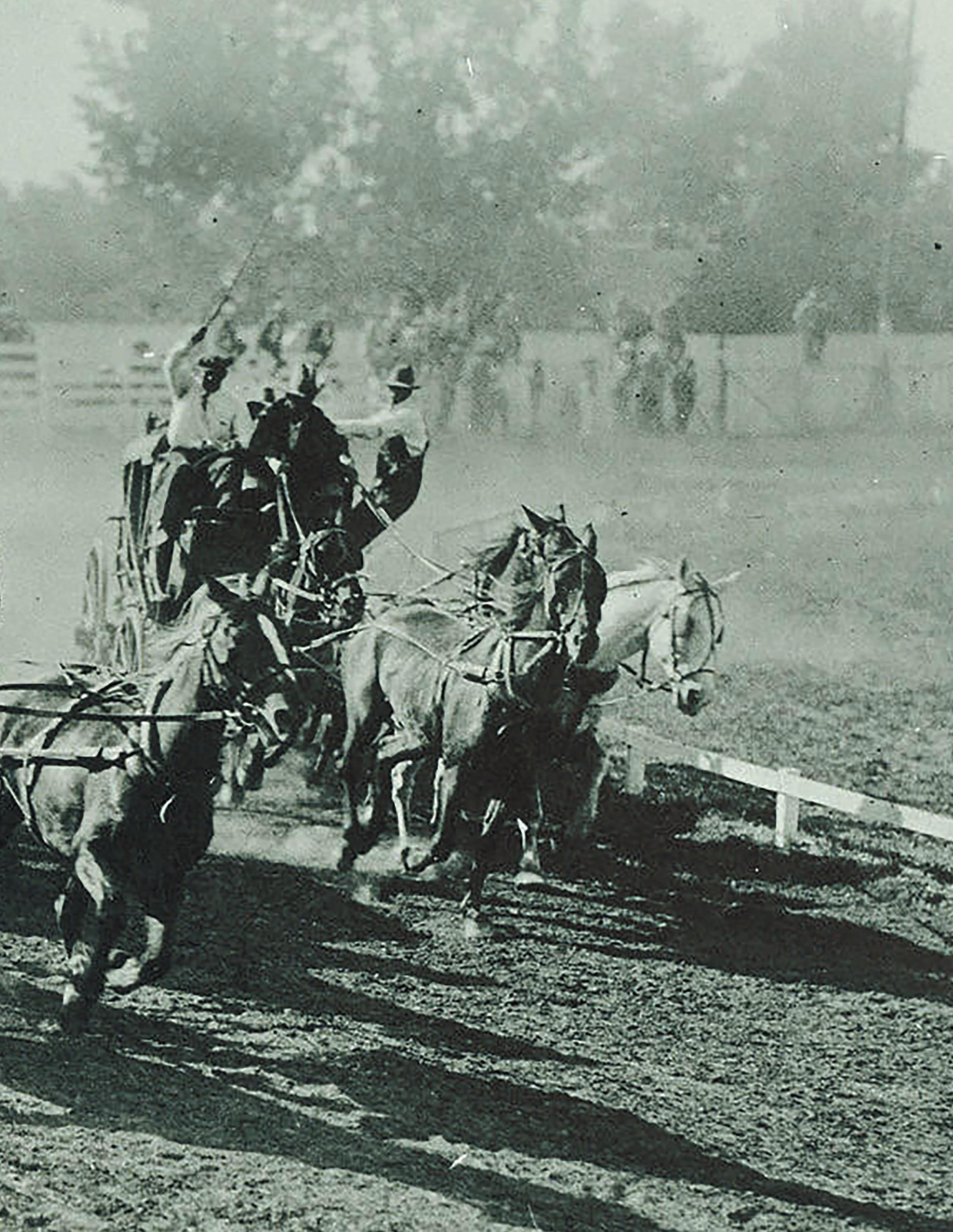

There once was a cowboy who gave me a twirl. On the dance floor, we waltzed, and he sang, telling me stories of days long gone by and his hard life out on the range. He said, “I’ve seen some good times, some rough ones, too. Mostly all of them have been bad. Thinking on the loved ones, who walked away, remembering makes me sad.”
He said, “But I don’t want no sympathy, and I ain’t looking for tears.
All I want is a good woman, with a smile and a song, who’ll love me in my golden years.” I danced with that cowboy on through the night. We laughed, and we talked, and we sang.
I told him the stories of my family and the sweet memories that they bring. I said, “I’ve seen some good times, some tough ones too. Mostly all of them have been bad. Thinking on the loved ones, who left me behind, remembering makes me sad.”
I said, “But I don’t want no sympathy, and I ain’t looking for tears, All I want is ‘I love you’ from a kind buckaroo, who’ll love me in my golden years.”
We waltzed at our wedding, that cowboy and me, and on through the years long ago. His rocking chair beside me, now rocks alone, when the wind ’cross the prairie does blow. He taught me a lesson, to live day by day, to forgive and forget all wrongs.
Now I’m sitting here singing, in my rocking chair, remembering that sweet cowboy’s songs.
But I don’t want no sympathy, and I ain’t looking for tears.
I’ve had a lot of joy, from a kind-hearted cowboy, who loved me in my golden years.
 poetry by BARBARA L. CLOUSE poetry by BARBARA
poetry by BARBARA L. CLOUSE poetry by BARBARA
THE YOUNG SOLDIERS’ FACES fell as their commander raced up, screaming at them. “What are you men doin’ back here? Didn’t you hear the bugle? We was waitin’ for you to come in and help us catch the Comanche and Kiowa that just raided this area.”
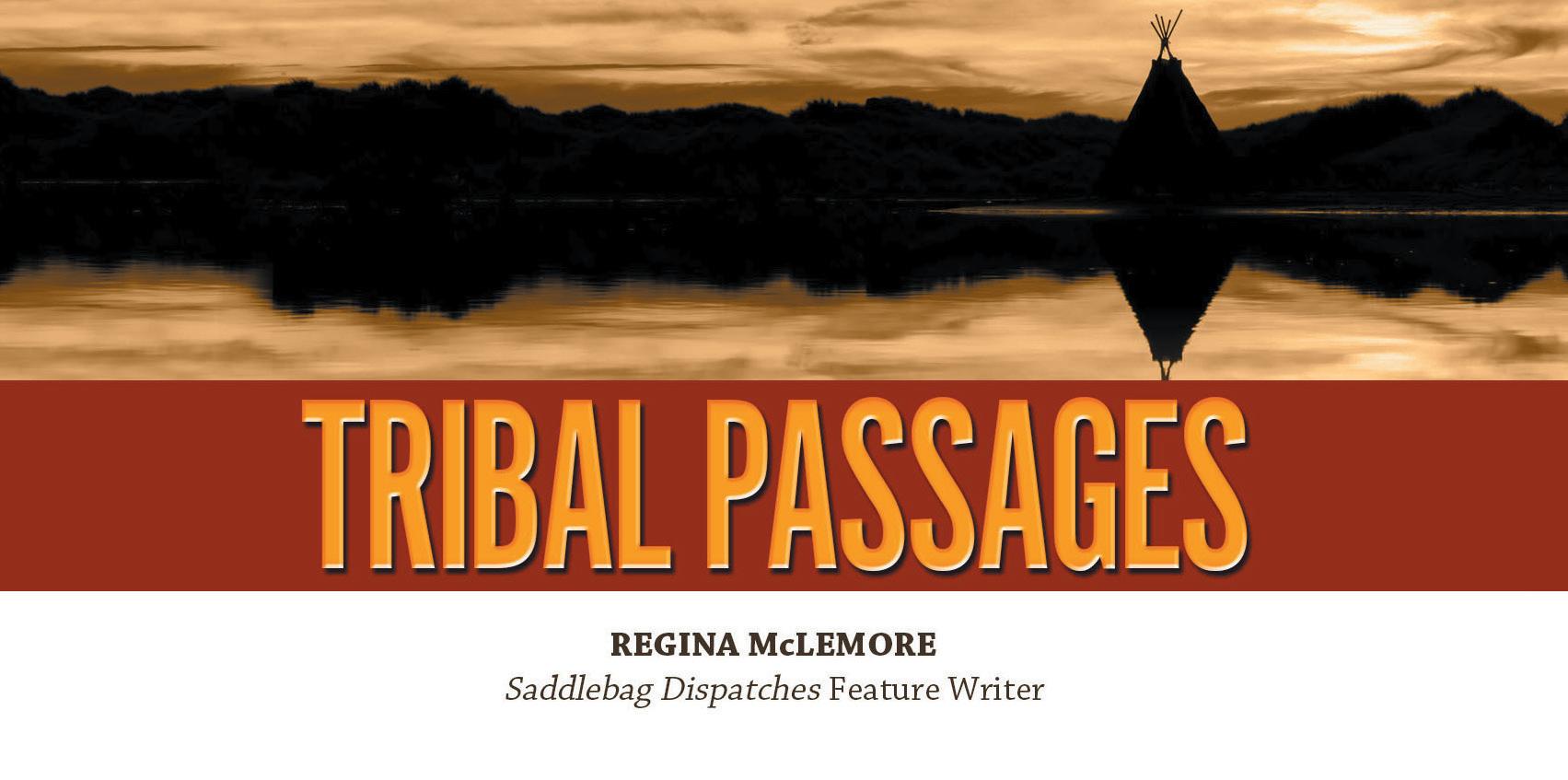
Their red-faced captain spoke up. “We did, but a few minutes later we heard another bugle tellin’ us to retreat. I didn’t know which one was right, so I sent word to you to give us some direction.”
The commander shook his head in disgust. “Guess that devil Satanta got us again. It was him you heard blowin’ that second bugle. Now, him and his friends are way ahead of us, and we might not ever get back the captives they took.”
This kind of scene likely played out several times in the 1850s, 1860s, and 1870s when the Kiowa war chief Satanta sowed confusion and violence throughout Indian Territory, Texas, and beyond. He employed a United States Cavalry bugle, which he had stolen in one of his many raids, in his devious acts.
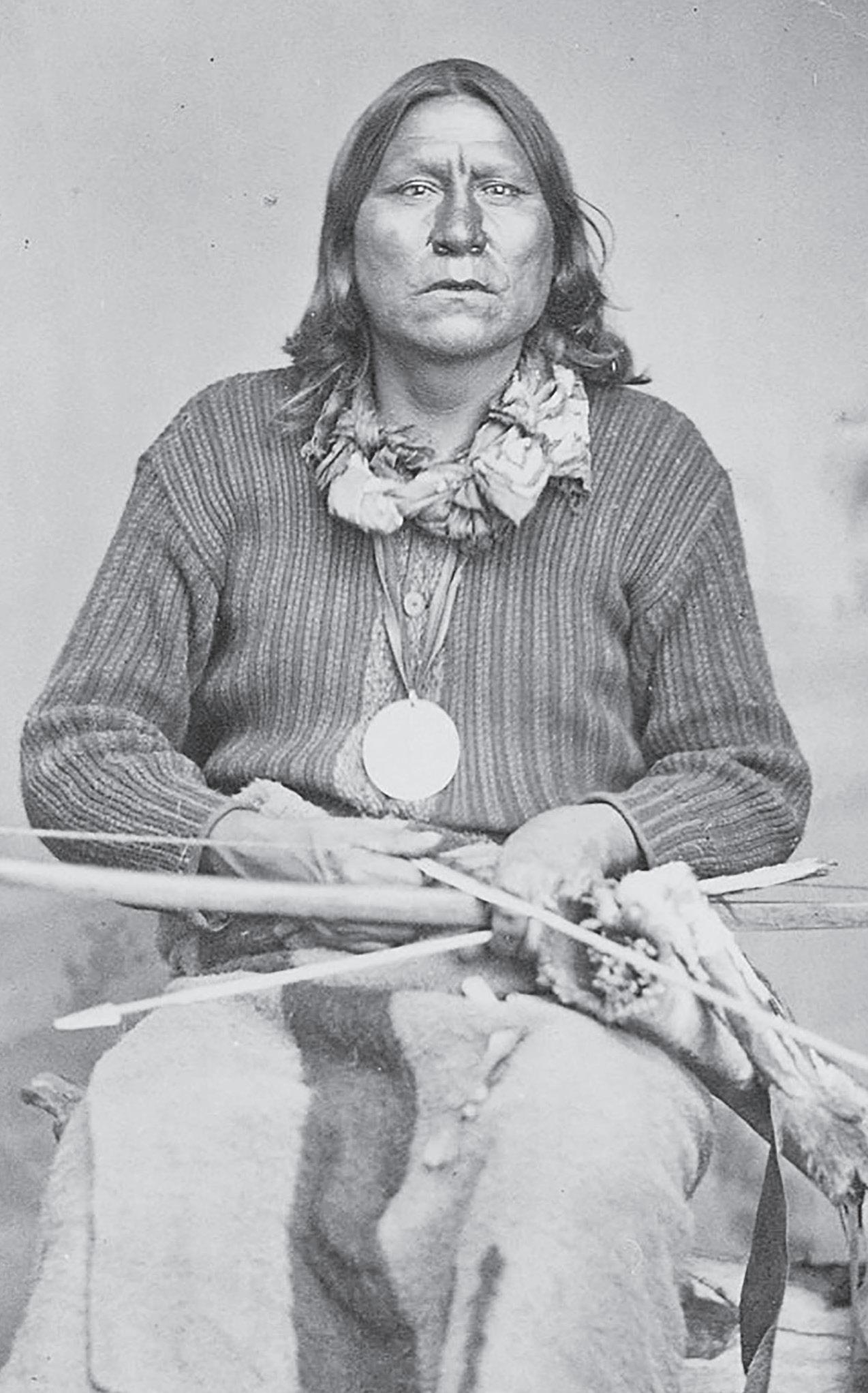 FEARED KIOWA WAR CHIEF SATANTA.
FEARED KIOWA WAR CHIEF SATANTA.
Satanta was likely born between 1815 and 1818 when the Kiowa ranged between the North Platte in present day western Nebraska and the Canadian River in present day north Texas and central Oklahoma. His baby name was “Big Ribs” because of the huge physique he was born with, which he maintained throughout his life. Later he received his adult name, Set-t’-ainte, meaning “White Bear,” which the whites changed to Satanta. Kiowa tradition says he earned the name when he killed a white bear.
He began attracting attention in the 1850s for his part in intertribal warfare, in particular, targeting the Cheyenne and the Ute. He also played a part in negotiating treaties with the United States Government. Satanta was a formidable presence, as well as a skilled orator, and his words were often quoted in eastern newspapers:
“I hear a great deal from the gentlemen the Great Father sends us, but they never do as they say.
“I have heard you intend to settle us on a reservation near the mountains. I don’t want to settle. I love to roam the prairies. There, I feel free and happy, but when we settle down, we grow pale and die.”
The Civil War provided the Kiowa with a perfect
opportunity to raid, especially in Texas. Northern officers reportedly told the Kiowa to “do all the damage they could to Texas because Texas was at war with the United States.” Satanta was feared and hated throughout Texas.
The year 1864 was a particularly bloody year for Satanta. He raided in west Texas, killing several whites and carrying off one woman into captivity. When he joined other plains tribes in raids into Colorado, their actions led to a tragedy. Many innocent Cheyenne and Arapaho women and children were killed at the Sand Creek Massacre because the United State Volunteer Cavalry blamed them for the Colorado raids that Satanta and his allies conducted.

October of 1864, one of the worst raids occurred in Young County, Texas. A mixed band of around 600 Kiowa and Comanche attacked multiple households, scalping and killing several and kidnapping women and children. Although he didn’t lead the raid, Satanta participated. Witnesses reported that he was there blowing a bugle to signal the war party members.
In still another raid, Satanta kidnapped members of the Box family. During this time, Satanta complained that Agent Jesse Leavenworth was breaking the treaty of 1865 by withholding presents due to the Kiowas. Leavenworth replied that he had been ordered to keep the goods until Satanta released the
Box family. In the end, Satanta expressed satisfaction with the ransom paid for their return and commented that trafficking in white women was more profitable than horse stealing.
According to author J’Nell Pate in Kiowa De-
Southern Plains, from Indian Leaders, Oklahoma’s First Statesmen , Satanta was described as a murderer and a kidnapper by both the military and the civilians along the Texas-Oklahoma frontier. His manner of speaking changed according to his mood and circumstances. One day he bragged about his violent actions and made statements, such as, “All the country… belongs to the Indians… you have no right to it, and you must leave.”
Two months later he proclaimed, “I don’t want war at all. I want peace.”
Possibly the most important conference between the Southern Plains Indians and the Army was held at Medicine Lodge Creek in October of 1867. Acting as the acknowledged leader of the Kiowa, Comanche, Arapaho, and Cheyenne for this meeting, Satanta did most of the talking. In one of his speeches, he said, “The white man grows jealous of his red brother. He once came to trade. He now comes as a soldier. He now covers his face with a cloud of jealousy and anger and tells us to be gone, as the offended master speaks to his dog….”
Nevertheless, Satanta knew he had to give in. His people would starve without the food and supplies that they would only be given if they signed the treaty. He reluctantly signed the treaty.
The tribes agreed to give up their nomadic lifestyle and confine themselves to living on reservations. The government promised to sustain them until they learned an agricultural lifestyle.
A year later, in 1868, General Phillip Sheridan held Kiowa chiefs Satanta and Lone Wolf and two Apache chiefs hostage as insurance that their people would move to Fort Cobb and later to the reservation. Satanta and his son had attempted to escape during the removal but were captured. Sheridan threatened to hang Satanta and Lone Wolf if the Kiowa didn’t commence moving the next morning. The Kiowa moved, but Sheridan kept the two chiefs captive for several weeks before finally releasing them. Angry and bitter, Kiowa leaders, Satanta, Lone Wolf, Timbered Mountain , and Big Bow , left the reservation in 1869.
After arresting Satanta, General Sheridan made a statement about him, which appeared in The Galves-

ton News on May 27, 1871. Sheridan stated that when Satanta came to Ft. Sill for his rations, he bragged to Agent Tatum about leading a recent raid on some teamsters at Salt Creek Prairie, Texas, killing seven men. When questioned further by Sheridan, Satanta confirmed the same story that Sheridan had heard from witnesses at Ft. Richardson. The only difference was Satanta wouldn’t admit that anyone was tied to a wagon wheel and burned. “But as Gen. McKenzie found the body, it does not admit of dispute.”
Sheridan said that he arrested Satanta and others concerned in the raid “on the spot.” He added that the authorities now held Satanta, Santauk (Santank), and Big Tree, “three as influential and bad Indians that ever infested any land.” He assured his readers
that they would be held in military authority until they could be turned over for “trial and disposal by the rightful civil tribunal.”
Sheridan’s plan did not go as smoothly as he hoped. Riding with one guard in the back of a wagon, on the way to trial at Jonesboro, the old Kiowa chief Santank pulled a blanket over his head and sang his death song. He gnawed and tore at his wrists until he could slip from the manacles. When he was free, he stabbed his guard with a knife that was concealed in his breechcloth, and the guard jumped from the wagon. Santank grabbed the guard’s rifle and tried to fire it, but it jammed. He was shot and killed by an officer who was riding beside the wagon. Satanta and Big Tree were taken on to Jonesboro where they soon would be tried.
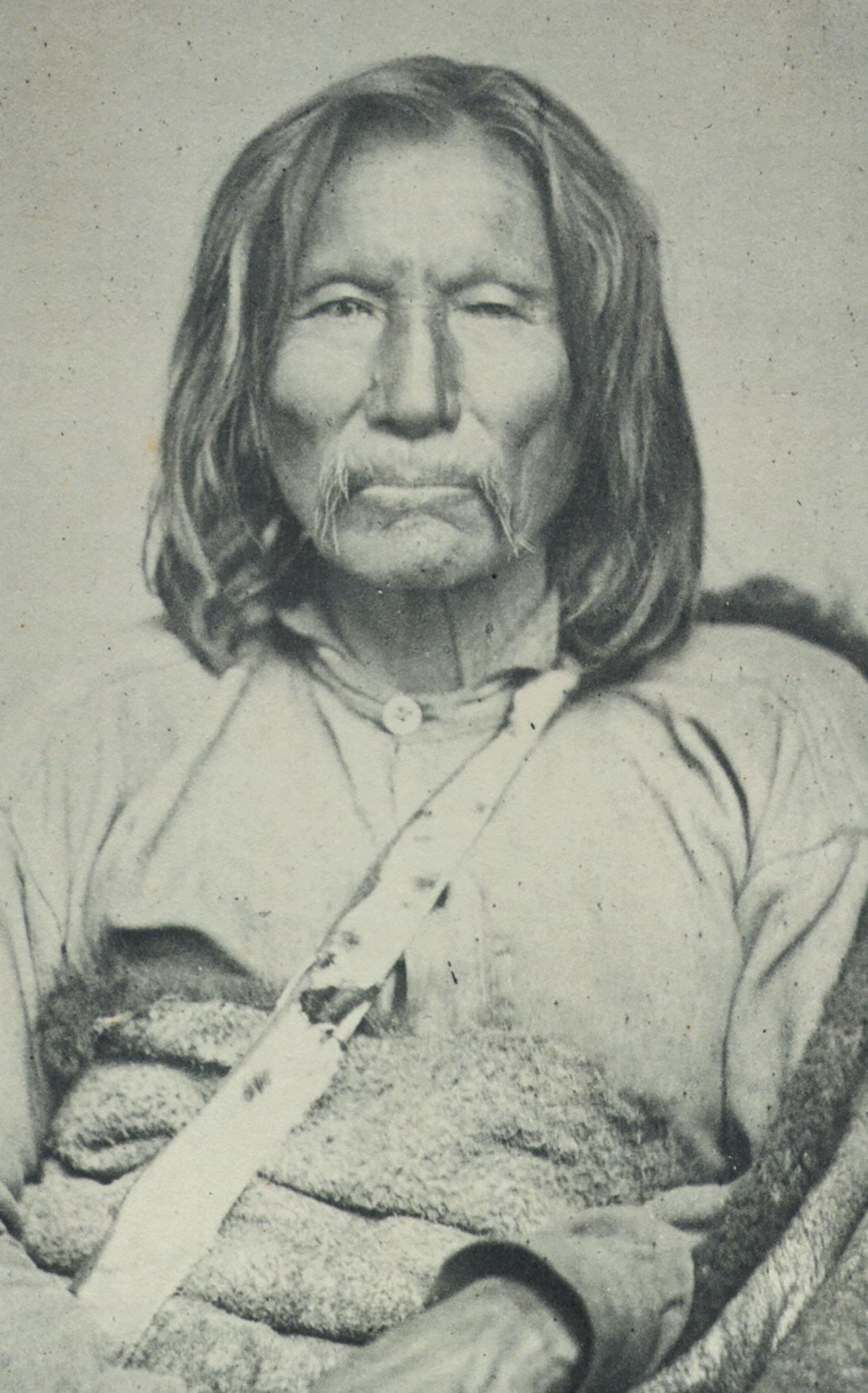
During Satanta’s trial, defense lawyers reminded the jury of the numerous wrongs Indians had suffered at the hands of white men. The prosecution offered the testimonies of survivors and officers who had first-hand experience with Satanta’s raid at Salt Creek Prairie. One of the wounded survivors recalled the actual raid, and General McKenzie described the mutilated bodies he had found at the site.
When the judge gave Satanta the opportunity to speak, he promised to “withdraw his men from Texas and wash out the spots of blood and make it a white land.” He also threatened, “If you kill me, it will be a spark on the prairie—make big fires—burn heap.”
Both men were found guilty and sentenced to hang on September 1, 1872, but different officials voiced their fear of reprisals if the verdict was carried out. Texas Governor Edmund J. Davis agreed and commuted their sentences to life imprisonment over the protests of many Texas citizens. By November 1,
1872, the two were serving time in the Texas State Penitentiary in Huntsville where they were assigned to work in a chair factory.
Governor Davis of Texas soon made a deal with Satanta, offering him a pardon if he would use his influence to make peace between the warring tribes and the Texans. On October 5, 1872, The Galveston News reported on a conference that was held in St. Louis, in which Satanta addressed several leaders from various tribes. During his speech, he declared, “My father in Texas had told me big talk and has told me to say to you that the Comanche must keep their young men at home…. I have been told that if I can keep your young men out of Texas I shall be liberated, and they have asked me to use my influence with the braves of the Kiowas. I want you to listen to my words and make friends with the Texans.”
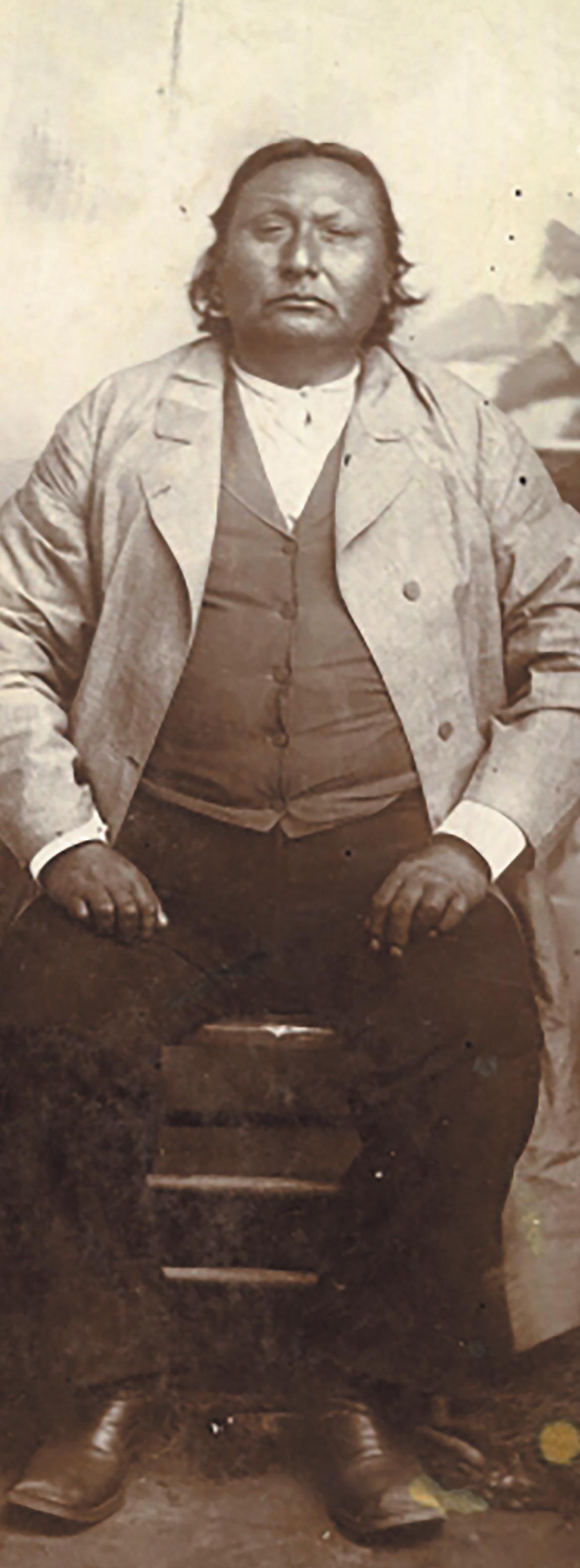
Governor Davis received a lot of criticism for pardoning and paroling Satanta and Big Tree. On October 7, 1873, the Austin-American Statesman reported that the frontier newspapers were “full of accounts of Indian depredations immediately following the Ft. Sill arrangement and the release of Satanta and Big Tree….” The article went on to describe repeated raids that led to stolen horses and murdered men. It ended by affirming “it was high time for Governor Davis to rearrest Satanta and Big Tree.”
Satanta, Big Tree, and most of their Kiowa and Comanche allies left their reservations in 1874. Spring of 1874 erupted with several violent confrontations. The Kiowa, Comanche, Southern Cheyenne, and Arapaho attacked some buffalo hunters in June at Adobe Walls near the Texas Panhandle. Reports differ as to whether Satanta took part in this attack. By the fall of 1874, the army had organized the biggest force to ever appear on the southern plains, totaling over 3,000 men. With this force, they drove the wandering Indians back to their reservations.
Satanta was arrested and sent back to Huntsville. Later, charges were dropped against Big Tree, and he was allowed to live out his life on the Kiowa reservation where he eventually served as a Baptist minister.
Despondent, Satanta struggled with illness and loneliness. About four years after his imprisonment, on October 11, 1878, he managed to open the arteries of his neck and legs. He was found and taken to a hospital where his wounds were bandaged. Later, as he lay on the second floor of the building, he dragged himself to a window and plunged to the ground. He was taken back to the prison, but he died the next day.
The Galveston Daily News on October 15, 1878, reported “The noted Kiowa chief Satanta has gone to the happy hunting ground.” The article then described the manner of Satanta’s death.
The last official Kiowa Sun Dance was held during the summer of 1889 at the usual meeting place, east of present-day Carnegie, Oklahoma. The next Sun Dance, in the summer of 1890, was interrupted by the arrival of Government Agent Charles E. Adams, backed up by a battalion of Fort Sill soldiers. He ordered the Kiowa to leave the area and never stage another Sun Dance. The government had outlawed
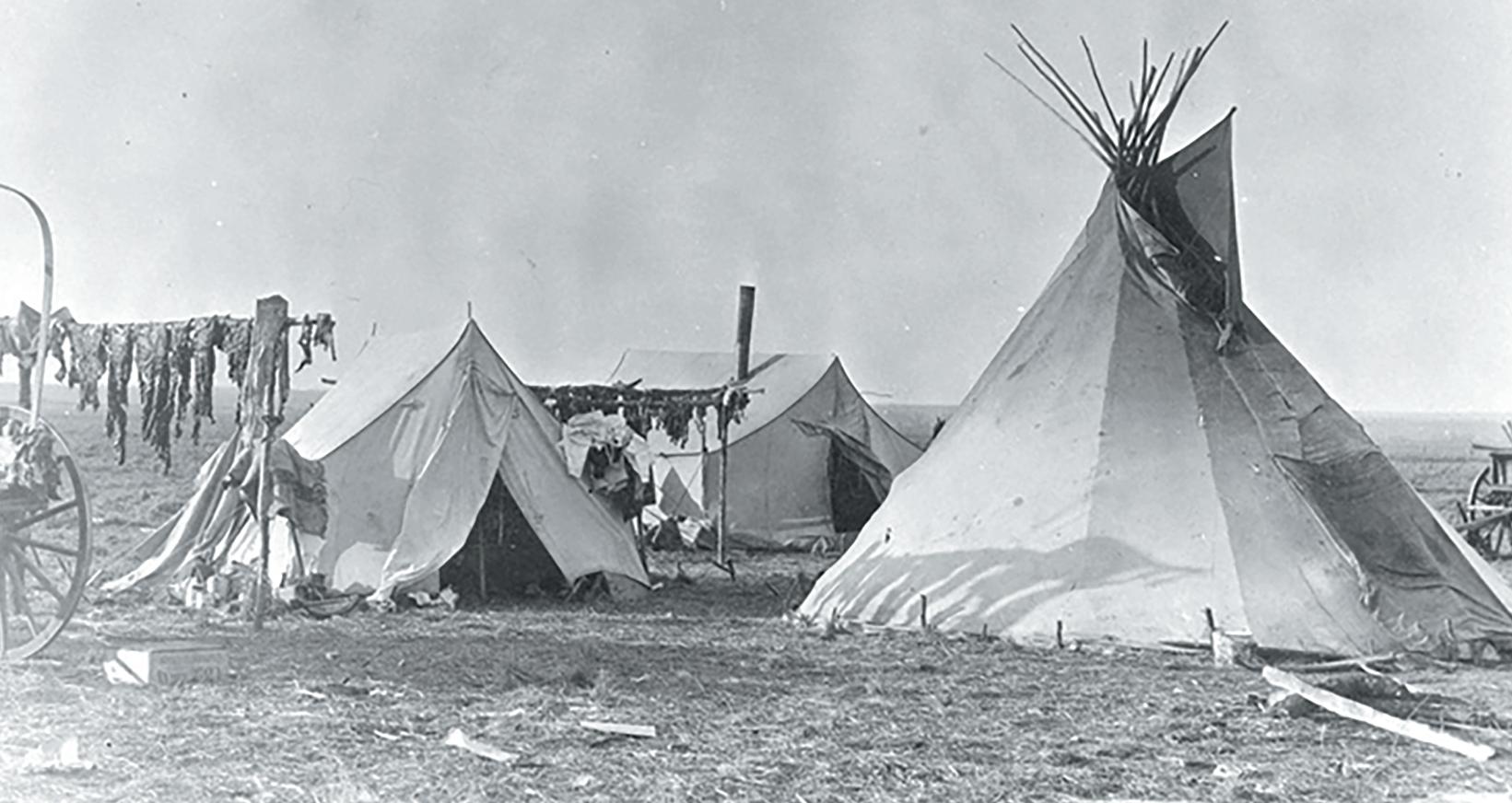
the dance because it was deemed to be too barbaric and harmful to the participants.
If Satanta had been there, he may have connived a way to have the Sun Dance, anyway, but by 1890, Satanta had made his final escape from the soldiers and their rules. However, as the greatest Kiowa trickster, Satanta left behind the stolen bugle to keep his memory alive in the minds and hearts of his people.
Each year, around July 4, a multitude of Kiowa meet at Carnegie like they once met to undergo the Sun Dance ritual. Now, they meet together to reminisce, fellowship, and dance. Typically, on the last day of their pow wow, they bring out the Kiowa war trophies. One of these is the cavalry bugle that Satanta brought back from one of his raids. If it is raining, someone covers the trophies with plastic, but everyone attending can still see them, hear the stories of how they were procured, and remember Satanta and other great and daring Kiowa leaders of the past.
— REGINA MCLEMORE is a retired educator of Cherokee heritage. Her great, great grandmother, Susie Christie Clay, survived the Trail of Tears in 1839.WORLD WAR I STILL RAGED when
Ida Lupino was born on February 4, 1918, in Camberwell, London, England. Her mother and father, Stanley Lupino and Connie Emerald Lupino, were a performing family. Queen Victoria called the Lupino family “The Royal Family of Greasepaint.”
Ida had a small uncredited part in TheLoveRace in 1931. Her first credited part came in 1932 in Her First Affaire. Her family moved to Holly wood in 1934, but her career hit a snag when she contracted a mild case of polio in May of that year. Supposedly, she caught the disease from a contaminated swimming pool. She was given a serum and recovered in a few months. After a string of small and insignificant roles playing lightweight ingenues, she walked out on a $1,700 a week
contract, the equivalent of $34,200 today. Her big break came in 1939 when she shared the screen with Ronald Coleman and Walter Huston in TheLight ThatFailed.


She shared the screen with some of the most popular stars of the time—Humphrey Bogart in the 1940 film HighSierra and again in the 1941 release, TheyDrivebyNight. She appeared with John Garfield and Edward G. Robinson in TheSeaWolf and with Garfield in Out of the Fog, both released in 1943.
She was married three times in her life. The first marriage was to Louis Hayward. They married on November 16, 1938. In 1941, they made the film LadiesinRetirement together. They divorced on May 11, 1946. Ida married Collier Young on August 5, 1948. He was a writer/producer. He wrote the screenplay for TheBigamist, which Ida directed. Together, Collier and Ida wrote the screenplays for TheHitchhiker,Outrage,NeverFear, and PrivateHell36 after they divorced on October 20, 1951. She married Howard Duff on October 21, 1951. They had met in 1950 on the set for the movie WomeninHiding. They began a torrid love affair, and she was carrying his child when she divorced Collier Young.
Bridget Mirella Duff was born on April 23, 1952. The couple separated in 1966 and divorced in 1984.
Ida became a U.S. citizen in 1948 and appeared in her first western, LustforGold, in 1949. The movie was actually two films in one with a unique double plot. Part of the film was in 1949 Arizona, with the western section told via flashbacks. It was the story of two men who searched for the Lost Dutchman Mine and starred Glenn Ford and Gig Young. The film co-starred Edgar Buchanan, Jay Silverheels, and Will Geer. Parts of the movie were filmed in Arizona around the Superstition Mountains and Weavers Needle.

Ida appeared as Louise Brandon in the anthology series ZaneGreyTheatre in 1956 in the episode “Fearful Courage.” The episode also starred James Whitmore and Michael Pate. She next appeared as Anne O’Toole in the Bonanza episode “The Saga of Anne O’Toole.” The episode starred Pernell Roberts, Dan Blocker, and Alan Hale, Jr.
DeathValleyDays was the second anthology western she appeared in. She played Pamela Mann in the episode “Pamela’s Oxen.” The episode starred James T. Callahan, James Coburn, and Robert Sorrels.
In 1963, Ida appeared as Helen Blaine in TheVirginian episode “A Distant Fury.” The episode starred Gary Clarke, Howard Duff, and Joey Heatherton. She returned to The Virginian in 1965 for the role of Mama Dolores in the episode “We’ve Lost a Train.” This episode was the pilot for the series Laredo. The series starred Doug McClure and James Drury. Neville Brand, Peter Brown, William Smith, Phillip Carey, Rhonda Fleming, and L. Q. Jones guest starred.
She played Dr. Faustina in The Wild Wild West
episode “The Night of the Big Blast” in 1966. The series starred Robert Conrad and Ross Martin with Mala Powers and Patsy Kelly appearing in the episode. She became a Batman villain in 1968, when she played Dr. Cassandra in two episodes of the pop culture show. She appeared in “The Entrancing Dr. Cassandra” with her husband Howard Duff and in an uncredited role as Dr. Cassandra in “The Joker’s Flying Saucer.”
In 1969, Ida appeared in TheOutcasts as Mrs. Blake in “The Thin Line” episode. The series starred Don Murray and Otis Young. Paul Fix and Harry Carey, Jr. also appeared in this episode. Her final appearance in a western series was in 1972 as Mia Bronson in the Alias SmithandJones episode “What’s in it for Mia?” Ben Murphy and Roger Davis played Curry and Hayes. Buddy Ebsen appeared as George Austin.
She co-starred in the movie JuniorBonner, as Elvira Bonner in 1972. Junior Bonner was a rodeo cowboy who wanted to win the bull riding championship in
IDA LUPINO, AN ENGLISH/AMERICAN ACTRESS AND DIRECTOR, WAS ONLY THE SECOND WOMAN TO JOIN THE DIRECTOR’S GUILD.his hometown. His father, Ace Bonner, returned to his family in Arizona after an absence of several years. This was a modern-day rodeo western. After the success of J.W.Coop, several rodeo-styled westerns appeared. The movie starred Steve McQueen as Junior Bonner. Robert Preston was his father, Ace. Ben Johnson, Joe Don Baker, Barbara Leigh, Bill McKinney, and Dub Taylor rounded out the cast.
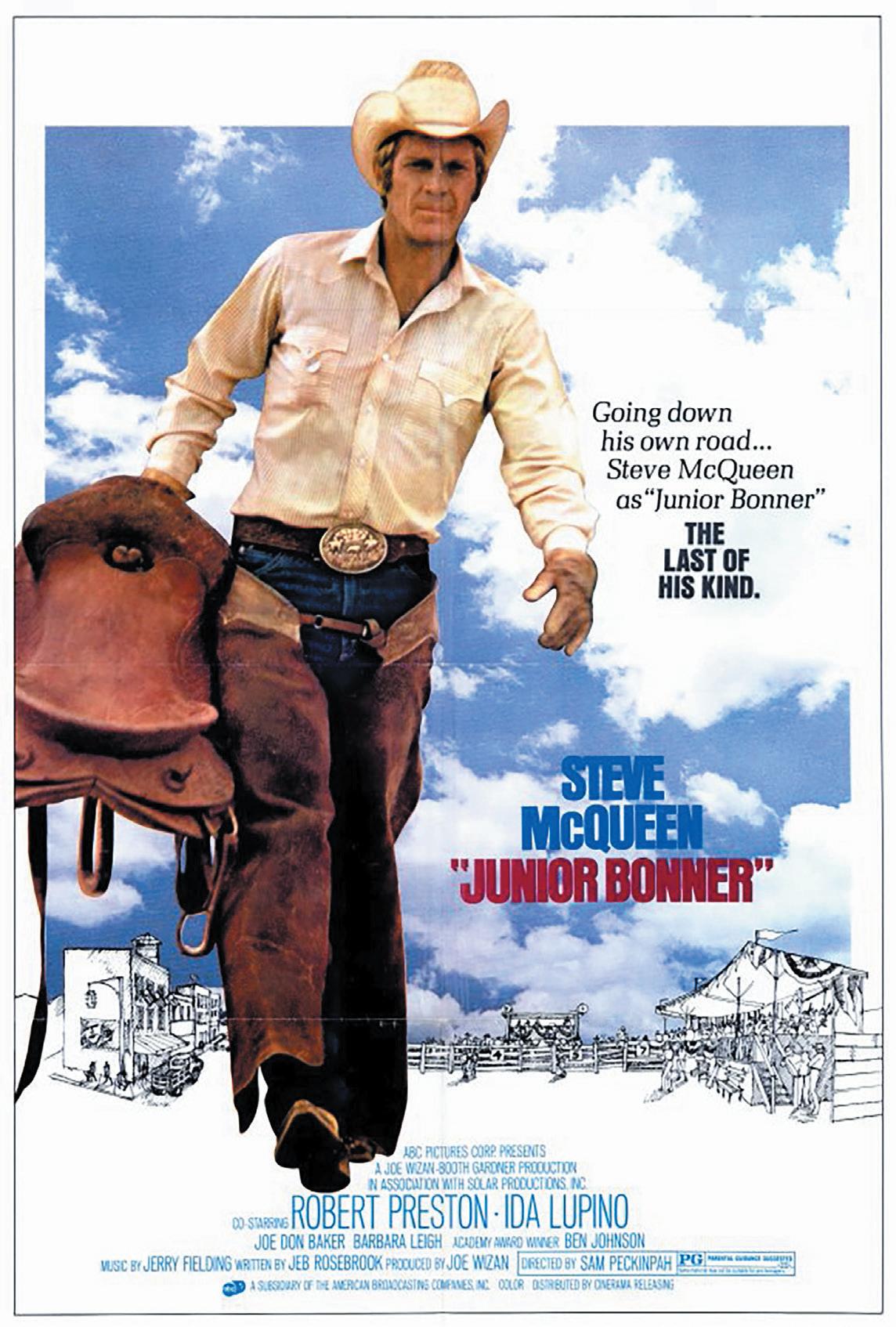
Her final appearance in a western was in the TV movie, FemaleArtillery, as Mar tha Lindstrom. An out law on the run joined a wagon train of pioneer women and secretly hid money in one of the wag ons. His old gang followed him. When they arrived, they wanted the money and the women. The mov ie starred Dennis Weaver, Sally Ann Howes, Linda Evans, Albert Salmi, Nina Foch.
Ida spent considerable time in the director’s chair. She directed nine movies from 1949 to 1966. Her first stint as a director, in an uncredited role, came in the film NotWanted in 1949. She took over the director’s duties when the original director Elmer Clifton suffered a heart attack and couldn’t complete the picture. She was the second woman to become a member of the Director’s Guild, the first being Dorothy Arzner. She directed NeverFear and Outrage in 1950. Ida and her then husband, Collier Young, wrote the screenplay for both films. In 1951, she directed Hard, Fast,andBeautiful. The film starred Mala Powers and Tod Andrews.
Ida stepped in to finish the film On Dangerous
Ground when director Nicholas Ray became ill. The film starred Ida, Robert Ryan, and Ward Bond. She directed two films in 1953, TheHitchhiker, written by Collier Young, and TheBigamist, written by Young and Ida. In the later film, she directed herself in a starring role. The Bigamist starred Joan Fontaine, Ida Lupino, Edmund Gwen, and Edmond O’Brien.
Edmond O’Brien, Frank Lovejoy, and William Talman starred in The Hitchhiker. The movie was inspired by real life murderer Billy “Cockeyed” Cook who slaughtered six people in a killing spree. Her next directing job came in 1958, when she directed the TV movie, Teenage Idol. This was the pilot for a situation comedy that didn’t get picked up by the network. A family became caught up in the craze over the latest teenage rock and roll sensation Swivelhips Jackson. It starred Darrell Hove, Patrick Wayne, and her then husband, Howard Duff. She directed her last movie in 1966, The Trouble with Angels. The family film starred Rosalind Russell, Haley Mills, and Binnie Barnes. This was Hayley Mills’s first movie after she left the Walt Disney Studio . Ida suffered bouts of heavy drinking for many years. During the filming, Ida’s drinking became intolerable. Rosalind called producer William Frye and shared her misgivings. Frye had a meeting with Ida, and she stopped drinking during the making of the picture. She directed nearly a hundred episodes of various
television shows during her career, such as Gilligan’s Island,Bewitched,HoneyWest,Batman,TheFugitive, TheUntouchables, and several westerns. She directed two episodes of HoteldeParee. She directed TheMan WhoBelievedinLaw in 1959 and SundownandtheBoat Soldier in 1960. The series starred Earl Holliman as Sundown, the reformed gunslinger. It also starred Strother Martin and Jeanette Nolan.
From 1959 to 1961, Ida directed eight episodes of Have Gun-Will Travel . The series starred Richard Boone as the gunfighter, Paladin. She directed three episodes in 1959. The first was “The Man Who Lost.” The episode starred Mort Mills, Jack Elam, and Rodolfo Acosta. Next came “First, Catch a Tiger.” John Anderson and Pamela Lincoln guest starred in the episode. “Charley Red Dog” was her last directing chore for Have Gun-Will Travel in 1959. Scott Marlowe and Raymond Bailey also appeared in the episode.
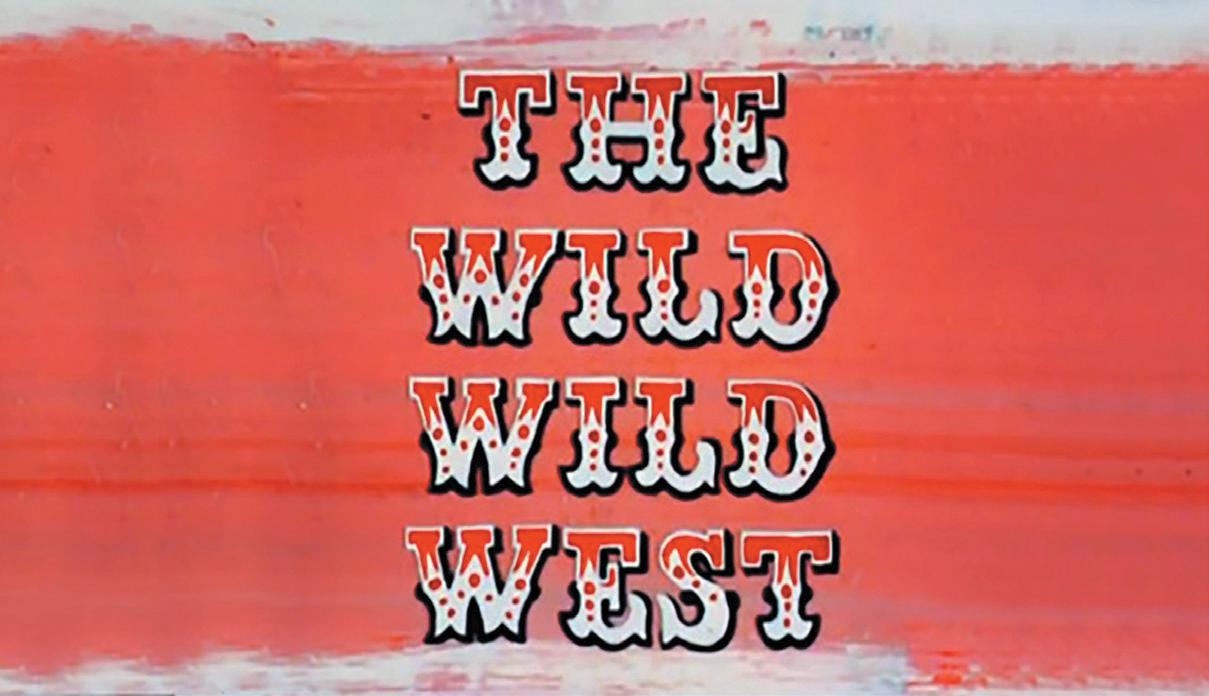
In 1960, Ida directed four episodes of the popular show. The first was “The Day of the Badman.” William Joyce and Sue Randall also appeared in the episode. Her second episode starred Hank Patterson, Lillian Bronson. and Howard Petrie in “The Lady on the Wall.”
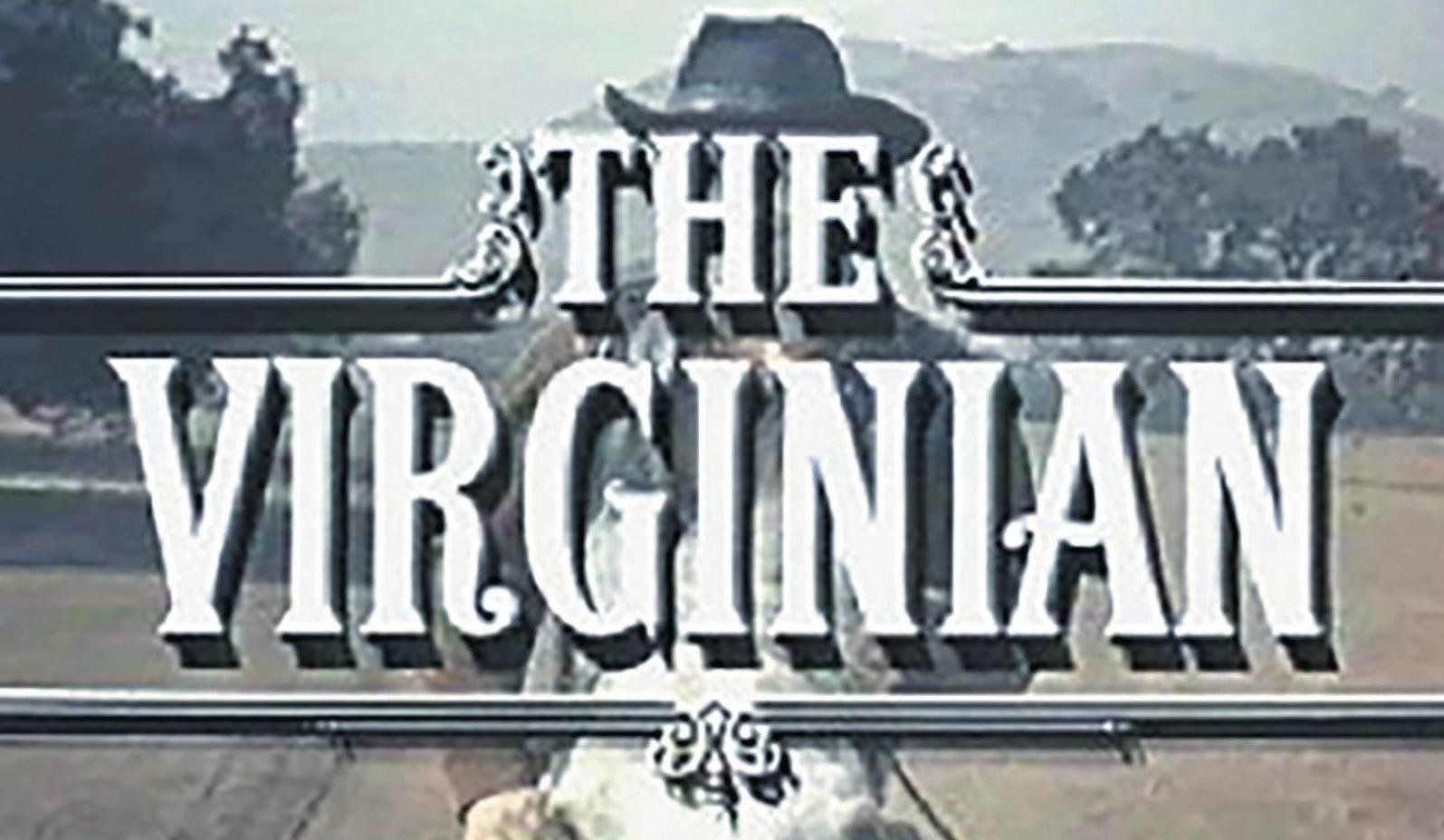
“Lady With a Gun” was the third episode she directed in 1960. The episode starred Paula Raymond and Jack Weston. In her final 1960 episode, “The Trial,” Robert Simon and Raymond Hatton appeared.
“The Gold Bar,” in 1961, was her final time behind the camera for Richard Boone. John Fiedler and Jean Engstrom guest starred in the episode. In a 1961 interview, Richard Boone stated “Ida stimulates me as an actor because she knows acting. In a weekly show you get into acting patterns. Ida gets you out of them.”
She also directed two episodes of the summer replacement show Tate in 1960. Tate was a Civil War veteran who was wounded at The Battle of Vicksburg in Mississippi. His left arm was useless, covered by a long leather glove and placed in a sling. He worked as
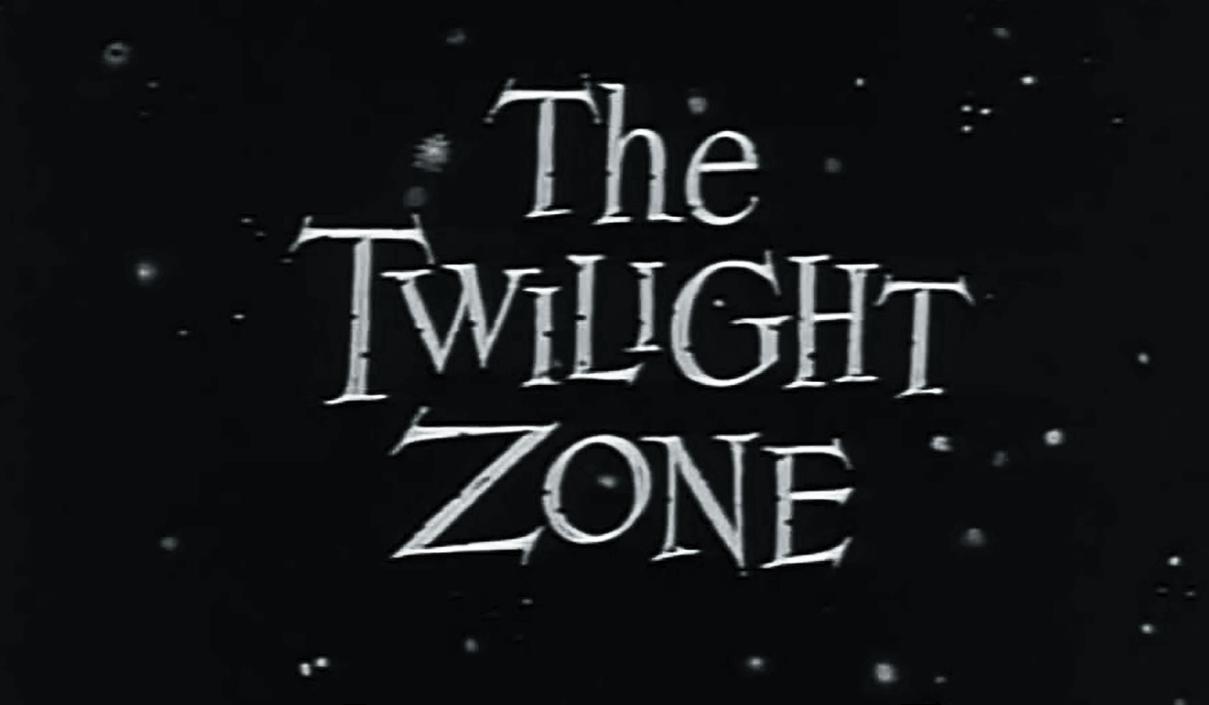
a bounty hunter in the old west, traveling wherever he was needed. The series starred the Marlboro Man, David McLean, in the title role. In “The Mary Hardin Story,” the episode starred Mort Mills and Julia
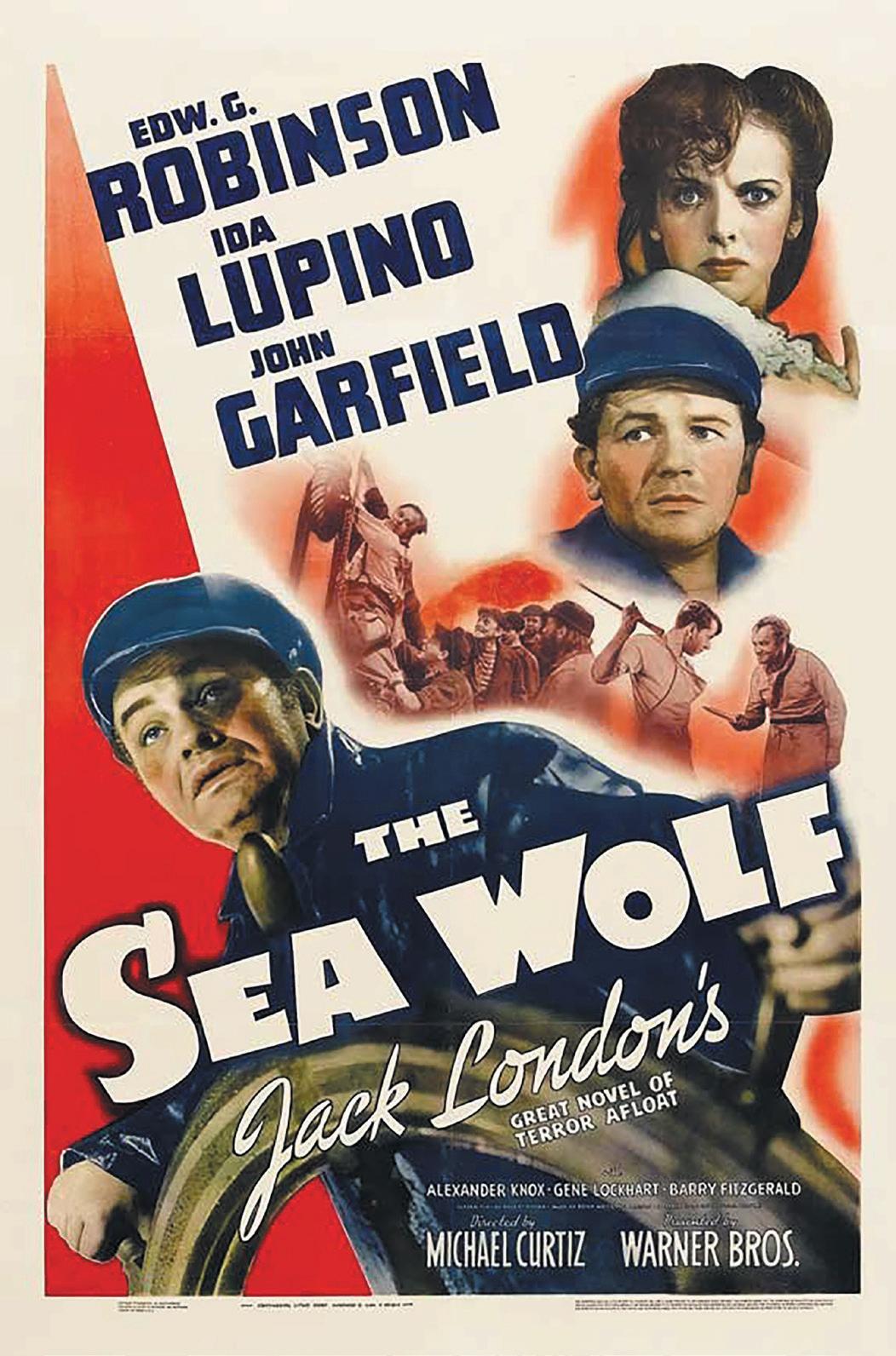
episode of DanielBoone with Fess Parker, Patricia Blair, Darby Hinton, and Dal McKinnon. Barbara Hershey and Mort Mills guest starred in the episode. She also directed an episode of DundeeandtheCulhane in ‘67, in “Thy Brother’s Keeper Brief.” The series dealt with the adventures of two traveling lawyers in the west. John Mills, Lindy Davis, and William Fawcett appeared in the episode. She directed her final television episode in 1968 in TheGhostandMrs.Muir. The episode was ti - tled “Madeira, My Dear?” The series starred Hope Lange and Edward Mulhare.
Ida was the only woman to star in and direct an episode of the original TwilightZone. In 1959 she starred in “The Sixteen-Millimeter Shrine.” In 1964 she directed “The Masks”. She directed nine episodes of the anthology series, Thriller, which starred Boris Karloff as the host.
Her final appearance in a television show was in 1977, when she played Gloria Gibson in an episode of Charlie’sAngels.
Adams. “Stopover” co-starred Bill Tennant, Vaughn Taylor, and Robert F. Simon. Ida direct ed one episode of TheRifleman in 1961 in the episode, “Assault.” Chuck Connors, Johnny Crawford, and Paul Fix starred in the series. The episode guest starred Linda Lawson.
In 1966, Ida directed an episode of TheVirginian, “Dead Eye Dick.” A mother and her teenage daughter were visiting Medicine Bow. James Drury, Doug McClure, and Roberta Shore starred in the series. The guest stars in the episode were Alice Rawlings and William Schallert. She directed “The King’s Shilling” for the 1967
Her final movie appearance came in 1979, when she appeared as Mrs. Morton in My Boys are Good Boys with Ralph Meeker and Lloyd Nolan. Ida has two stars on the Hollywood Walk of Fame—one for her contributions to motion pictures, and one for her work on television. She was nominated for three Emmy Awards during her career. Two for Mr.Adam’sandEve, the weekly show she did with then husband, Howard Duff, and once for her role on FourStarPlayhouse. In 1943, she won the New York Film Critics award for Best Actress for her role in The Hard Way. She also won a Saturn Award in 1976. She received The Golden Scroll for Best Supporting Actress for her role in the horror film, TheDevil’s
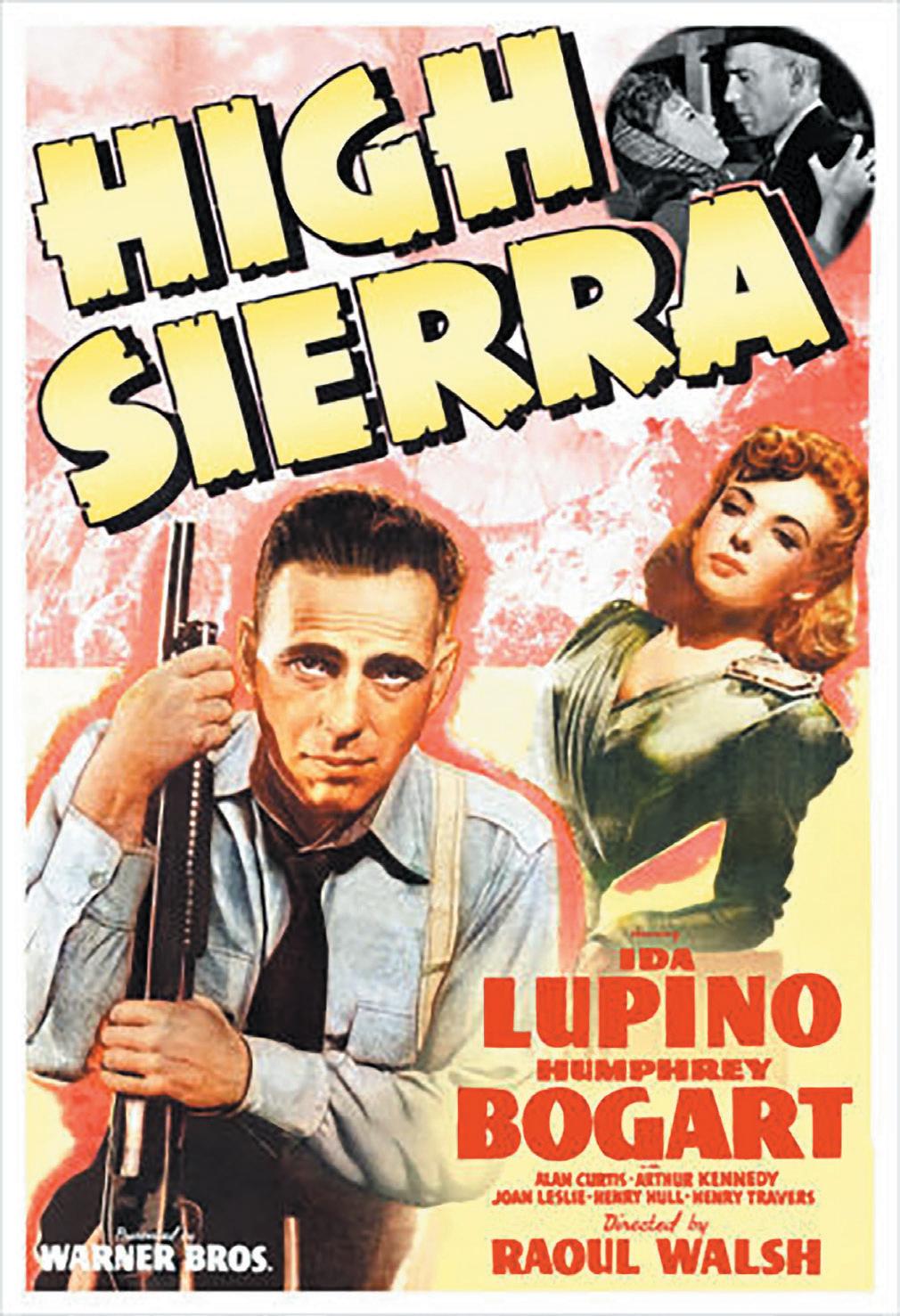
Rain. The movie starred Ernest Borgnine, William Shatner, Eddie Albert, and John Travolta. Toward the end of her career, Ida was nearly bald and wore a wig daily.
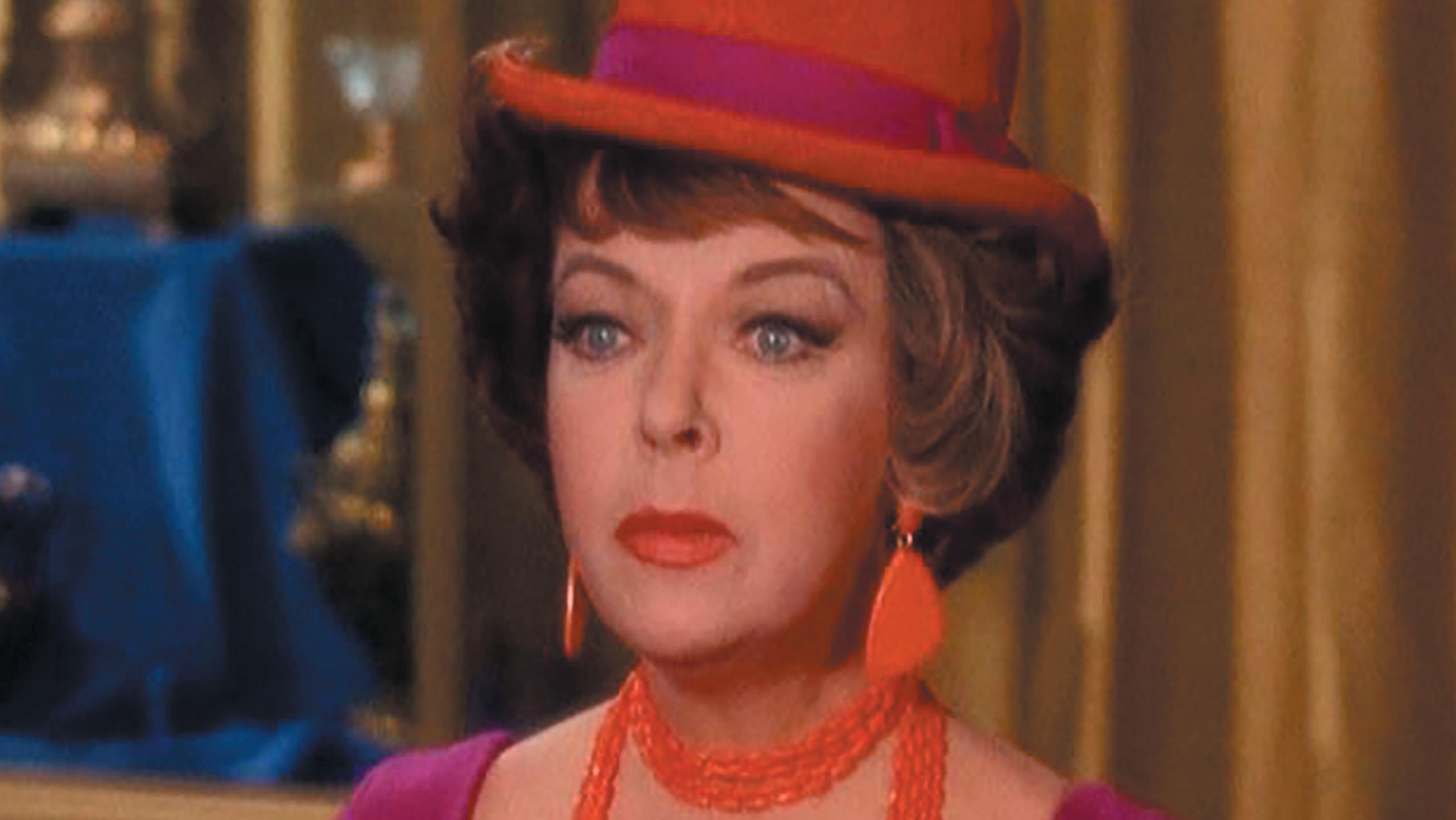
She won two National Board of Review awards for Moontide in 1942 and HighSierra and Ladiesin Retirement in 1941. Two of the films she directed have been selected by the National Film Registry in conjunction with the Library of Congress as being culturally, historically, or aesthetically pleasing. They are Outrage in 1950 and TheHitchhiker in 1953.
Ida’s alcohol use increased in the twilight of her career. Her alcohol problems on the set of TheTrouble with Angels in 1966 cost her any additional opportunities to direct feature films. In 1972, her friend, Bob Finkel, asked her to be a presenter at the 1972 Academy Awards. The academy was honoring the career of Charlie Chaplin. She was staggering drunk when she arrived at the event. She arrived alone, and Finkel didn’t want her to appear on stage. To avoid the embarrassment, he locked her in a dressing room. She fell asleep on a couch. When the dressing room was needed, Finkel moved her to a mop closet. She
didn’t wake up during the move and continued sleeping. Finkel forgot about her and didn’t let her out of the locked mop closet for an additional two hours after the show ended. When he unlocked the closet, Ida was still sleeping.
She was offered the role of Jessica Fletcher in the series Murder,SheWrote but turned it down due to her declining health.
Ida became reclusive after retirement, rarely venturing from her home. She wrote several short stories and children’s books during this time.
Ida Lupino died on August 3, 1995 of a stroke while battling colon cancer. She was buried in Forest Lawn Memorial Park in Glendale, California.
TERRY ALEXANDER and his wife, Phyllis, live on a small farm near Porum, Oklahoma. They have three children, thirteen grandchildren, and four great grandchildren. Terry is a member of The Oklahoma Writers Federation, Ozark Creative Writers, Tahlequah Writers, and Western Fictioneers. If you see him at a conference, though, don’t let him convince you to take part in one of his trivia games—he’ll stump you every time.
LUPINO AS BATMAN VILLIAN DR. CASSANDRA IN THE 1966 EPISODE “THE ENTRANCING DR. CASSANDRA.”EVEN IN THE PRE-COLONIZATION era, the Cherokee practiced a form of democracy. When it came time to select a new chief, the tribal council would meet and vote new leaders into office. Technically, any member of the tribe could rise to the top leadership position, but as with European and American governments, the results of these elections followed well established patterns. Chiefs were almost always male and usually members of important families. Wealth mattered, as did courage in battle. Even singular acts of generosity played a role. Sometimes charismatic individuals without property or family connections would beat the odds by setting their sights on power and working relentlessly until they achieved it.
And then, there was John Bowles. The mixed-race son of a Scottish trader and a Cherokee mother seemed totally ill suited to become the chief of his tribe. Instead of inheriting or fighting for power in the game of tribal politics, he was pushed into leadership by the relentless forces of history that arrived on the shores of the New World with European colonists.

The first push came two years before John was born. The British empire removed his tribe from their rich farmlands near the coast of the North Carolina colony and resettled them in Little Hiwassee, a small village in the Appalachian Mountains.
The tribe expected better treatment from the English. Chief Dragging Canoe had allied his band
with the British in the French and Indian War They’d been promised even-handed treatment in return for their service, but when the war ended, they were forced beyond the so-called proclamation line to an area designated for Indians. It wasn’t surprising that Dragging Canoe would try to remain neutral when talk of revolution spread through the colonies.
Relations between the British Empire and the Americans had never been completely friendly, but they turned considerably worse when parliament decided to fund their military adventures by taxing the colonies. They passed the Sugar Act (a tax on all non-British imports), the Currency Act (a law forbidding colonies from printing their own money), and the Quartering Act (a law requiring colonies to build barracks and support English troops). Finally in 1765, the year John Bowles was born, parliament passed the Stamp Act, a tax on all colonial documents.
Eleven years after the Stamp Act, the colonies declared independence. The Revolutionary War was on, and Chief Dragging Canoe was forced to choose sides in a struggle that would not benefit the Cherokee regardless of who won. He chose the British side but made up his mind to avoid the conflict as long as possible.
John Bowles’s prospects as a half-blood Cherokee whose tribe had taken the wrong side in the Revolutionary War didn’t seem promising. Almost no one in Little Hiwassee spoke English—John never
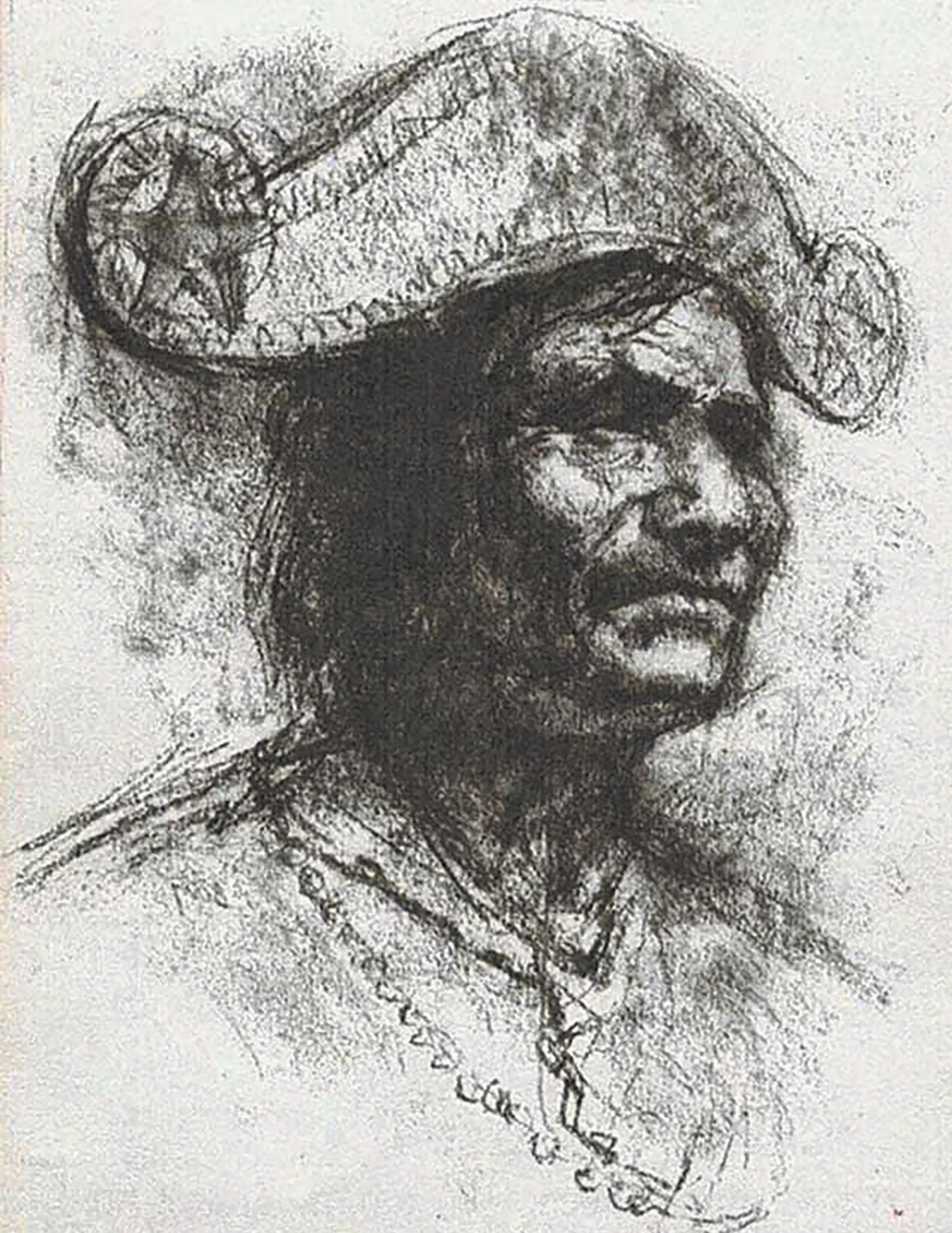
learned—so despite the light-colored eyes, freckled skin, and auburn hair he’d inherited from his father, villagers called him by his tribal name, Di’Wali (Bold Hunter). When he was twelve years old, his father was murdered by white colonists, leaving John Di’Wali Bowles a fatherless child who looked white but had an Indian name.
His striking appearance and dramatic past made him the subject of rumors. The Cherokee fabricated an oral history that featured Di’Wali as a half-blood, antiwhite warrior who single-handedly killed his father’s murderers at the age of fourteen years. White colonists spread equally outlandish tales. They cast John Bowles in the role of white child who’d been kidnapped by the Indians and raised as one of them.
murder that had followed him from Little Hiwassee. By this time, Chief John Bowles was being referred to as “the Bowl” by whites and native peoples alike.
The government grudgingly tolerated the Indians until a group of native men attacked a merchant boat as it passed south down the Tennessee River. Renegades boarded the boat, murdered all the white merchants, and made off with the cargo.
The Bowl denied having any part in the initial conflict but moved quickly to return women, children, and slaves to the boat unharmed and sent them down river with provisions. His act of mitigation was interpreted as a confession of guilt by the settlers.
When it was clear the government intended to take reprisals, the other chiefs in the Five Lower Towns fixed blame for the attack on the Bowl. Government agencies were satisfied to have a scapegoat rather than go to war against the entire Cherokee Nation.
BEFORE THE REVOLUTIONARY WAR reached Little Hiwassee, Dragging Canoe uprooted his followers and moved them to the town of Running Water (present day Muscle Shoals, Alabama ). A number of Cherokee bands had the same idea, and the chief’s new location was one of five sizable villages at the base of the Chattanooga Mountain.
During the long cross country trek, John “Di’Wali” Bowles did everything he could to become a close confidant of Dragging Canoe. By the time they settled into their new community, the chief had become dependent on the half-blood young man, and the band began to associate him with leadership decisions. When the old chief died in 1792, it seemed a natural thing for the tribal council to elect John Bowles to take his place.
The young half-blood’s elevation to principal chief of the Running Water band must have been a great honor, but it pitted him against white settlers who were moving into the area in ever increasing numbers.
The new migrants had plans for the fertile Tennessee River valley where the Cherokee had set up their community, but first they had to find a way to get the Indians out. They complained to government agencies about the five Cherokee villages but were especially concerned about the Running Water band led by the half-blood surrounded by stories of kidnapping and
The Bowl couldn’t win a war against federal troops. He followed the example Dragging Canoe had established and moved his band to the formally French Territory of Missouri where American soldiers were unlikely to pursue.
Indian lands had been left largely intact by the Louisiana Purchase, and white settlers didn’t put up a fight when Bowles established a village beside the St. Francis River. Hunting, fishing, and farming were good, and no soldiers came to harass them. Bowles would have kept his people in their Missouri home if a series of intense 7.2 to 8.2 magnitude earthquakes had not struck the region on December 16, 1811. The quakes were accompanied by the Great Comet of 1811, which first appeared in the night sky in October of that year and remained visible for 260 days.
Native mystics interpreted the comet/earthquake combination as a supernatural sign that troubles lay ahead. Shawnee leader, Tecumseh, traveled through the southeastern United States advocating resistance to white incursions into native lands. A large contingent of Muscogee Creek broke from the Creek Confederation and went to war against the U.S. government. The British Empire took this opportunity to arm Native peoples who were willing to take their side in the war of 1812. And once again, international powers were pulling indigenous people into an international struggle.
Many Cherokee chiefs set aside their differences with the U.S. government and supported Major General Andrew Jackson in his fight with the British and the breakaway Creek. The Bowl did not. He believed the earthquake and the comet were an undeniable sign that trouble was on the way, but for him, trouble meant involvement in white men’s wars. He vowed to take his people to a new location beyond the reach of the U.S. government and the British Empire. After a short stop in what would become Arkansas Territory, he led his
band into Spanish controlled Texas and eventually settled north of Nacogdoches.
The Spanish were busy with their own political unrest in Mexico and paid little attention to the Cherokee. The seven thousand North American immigrants in east Texas didn’t object to Bowles’s band. They encouraged the so-called Civilized Tribe to settle in the territory between the Trinity and Sabine Rivers and help establish a stronghold against Apache and Comanche.
It didn’t take long for other refugee tribes (Shawnee, Delaware, Kickapoo, Choctaw, Biloxi, Alabama, and Coushatta) to hear the news of the new successful Indian settlement and migrate into the area. They recognized the Bowl as the principal chief of a loose confederation.
ONE MIGRANT WHO JOINED the Bowl’s group was Richard Fields, a mixed-race Cherokee who fought alongside Andrew Jackson in the War of 1812. Fields claimed to have influential contacts who could aid in negotiations for a formal land title with Spain. He challenged John Bowles’s leadership and replaced him as principal chief in a tribal election in 1820. Western Cherokee typically elected at least two and often three chiefs at a time to assure a continuity of leadership. Bowles was retained as the second ranking leader of the tribe, so he was still held in high regard.
If Fields had any influence with Spain, it disappeared when Mexico won her war of independence from the Spanish Empire soon after the new chief assumed office. Even the informal arrangement Bowles had enjoyed with the Spanish was subject to change. Fields wrote to the mayor of Nacogdoches asking for his support.
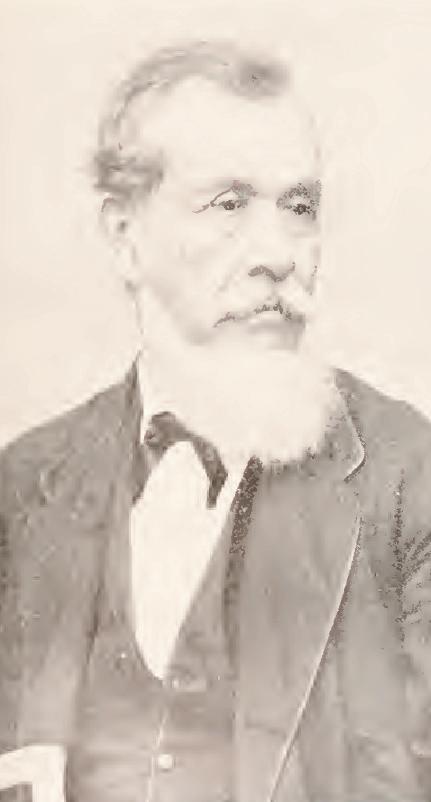

I wish to fall at your feet and humbly ask you what must be done with us poor Indians. We have some grants that were given us when we lived under the Spanish Government, and we wish you to send us news by the next mail whether they will be reversed or not. And if we were permitted, we will come as soon as possible to present ourselves before you in a manner agreeable to our talents. If we present ourselves in a rough manner, we pray you to right us. Our intentions are good toward the government.
Yours as chief of the Cherokee Nation. Fields
When there was no reply, he set out with John Bowles and twenty others to pay a visit to Emperor Agustin de Iturbide in Mexico City.
The new empire was in a state of turmoil from the moment it was established. When the Cherokee arrived in Mexico City early in 1823, a revolution was already in progress. Before the emperor was overthrown, he granted the tribe a convention allowing them to occupy and cultivate specified lands in eastern Texas. Both the empire, however, and its successor government refused any other rights.
When Fields returned to Texas, he wrote to the provincial governor that he had been granted a province sufficient to him and his people. He proclaimed himself master of the Cherokee holdings and threatened to evict anyone who didn’t comply with his orders.
Fields’s actions might have gone unchallenged, but North American settlers Stephen Austin (the founder of Anglo Texas) and Hayden Edwards were successfully negotiating with the new Mexican government. The Austin family’s colonial grant was renewed, allowing him to bring hundreds of white settlers into Texas along with their slaves. Edwards was given a land grant which included the town of Nacogdoches as well as land occupied by the Cherokee.
When Hayden Edwards announced his apparently
legitimate claim, Fields was incensed. He publicly swore revenge on Mexicans and white settlers who dared trespass. Rumors began circulating that he meant to join forces with the Comanche and even that he planned an attack on San Antonio. Stephen Austin alerted Mexican government officials about the possibility of an Indian war and requested troops be sent to check on the Cherokee.
If Richard Fields had any intention of making an alliance with the Comanche, he quickly abandoned them. He wrote to the Mayor of Nacogdoches and to Jose Antonio Saucedo, the political chief of Coahuila and Texas pledging his military support against hostile Indians. Saucedo thanked him for his offer but asked for proof of permits that originally allowed the Cherokee to emigrate to Texas. There were no documents to produce.
BEFORE THE TRIBE WAS forced to deliver on the promise of military assistance, a white author, John Dunn Hunter, came onto the scene. He was an internationally famous Indian advocate who claimed to have been kidnapped as a child by the Kickapoo and raised by the tribe. Hunter published a memoir in 1823 describing the experience and became an outspoken supporter of native people.
Several prominent Americans, including William Clark, of the Lewis and Clark Expedition, pointed out factual errors in Hunter’s manuscript and suggested the story was totally fictitious. Despite his prominent detractors, Hunter’s book sold well in the United States and even better in Britain, where it led to his becoming a popular speaker.
Hunter became a powerful influence over Richard Fields. He convinced the chief that, without a formal title to their land, the Cherokee would be ordered out of Texas as soon as Mexico found it convenient. The writer persuaded Chief Fields to send him to Mexico City to negotiate on behalf of the tribe.
The Mexican government had been free with land
grants to other white North Americans, but they sent Hunter back to Texas empty handed. The author was incensed. He convinced Fields to declare the Cherokee would fight to hold onto their land. The two men stirred up the tribe to the point they were ready to go to war immediately.
Hunter traveled to Nacogdoches in hopes of establishing an alliance with Hayden Edwards against the Mexican government. He left feeling the two had come to an agreement, but whatever understanding they had reached fell apart when Edwards received a contract from Mexico City to settle 1,800 Anglo families on the land he’d been granted (including land occupied by the Cherokee). Mexico’s only condition was that he honor legal grants of people already there.
In October 1825, Edwards issued a proclamation ordering all persons residing in the territory to
present themselves with valid titles. Since Texas had been owned first by Spain and then by two Mexican governments in quick succession, practically no one had land claims that couldn’t be disputed.
The prospect of being evicted by the North Americans angered the Cherokee and all the Mexican settlers in the region. Edwards further aggravated the situation by removing the existing mayor of Nacogdoches, Samuel Norris, and conducting a new election that placed his son-in-law in office.
The locals declared the election void. They removed Edwards’s puppet mayor by force, reinstalled Samuel Norris, and formed a band of regulators to force Anglo settlers into submission.
On November 22, 1826, thirty-six armed Anglo settlers responded by arresting Mayor Norris and the commander of Nacogdoches’s militia. Their actions were certain to provoke the Mexican government. Hayden Edwards saw his colonial empire slipping from his fingers before it had gotten started. He immediately tried to enlist the support of Anglo settlers and the Cherokee to revolt against Mexico. He found a sympathetic ear in John Dunn Hunter.
The writer persuaded Chief Fields to ally himself with the rebels. They drew up a treaty giving the Cherokee formal title to their land and awarding the rest of Texas to the Anglos. They called the independent new land the Republic of Fredonia.
Stephen Austin rejected Edwards’s plan out of hand. He called the revolutionaries “a small party of infatuated madmen” and told his colonists it was their duty to defend the proud name of Texas from the infamy of the Nacogdoches insurgents. He persuaded the Mexican government to offer a full pardon with a promise to investigate the grievances of all rebels who abandoned their plan. He circumvented Richard Fields and called on Chief Bowles to convince the Cherokee to
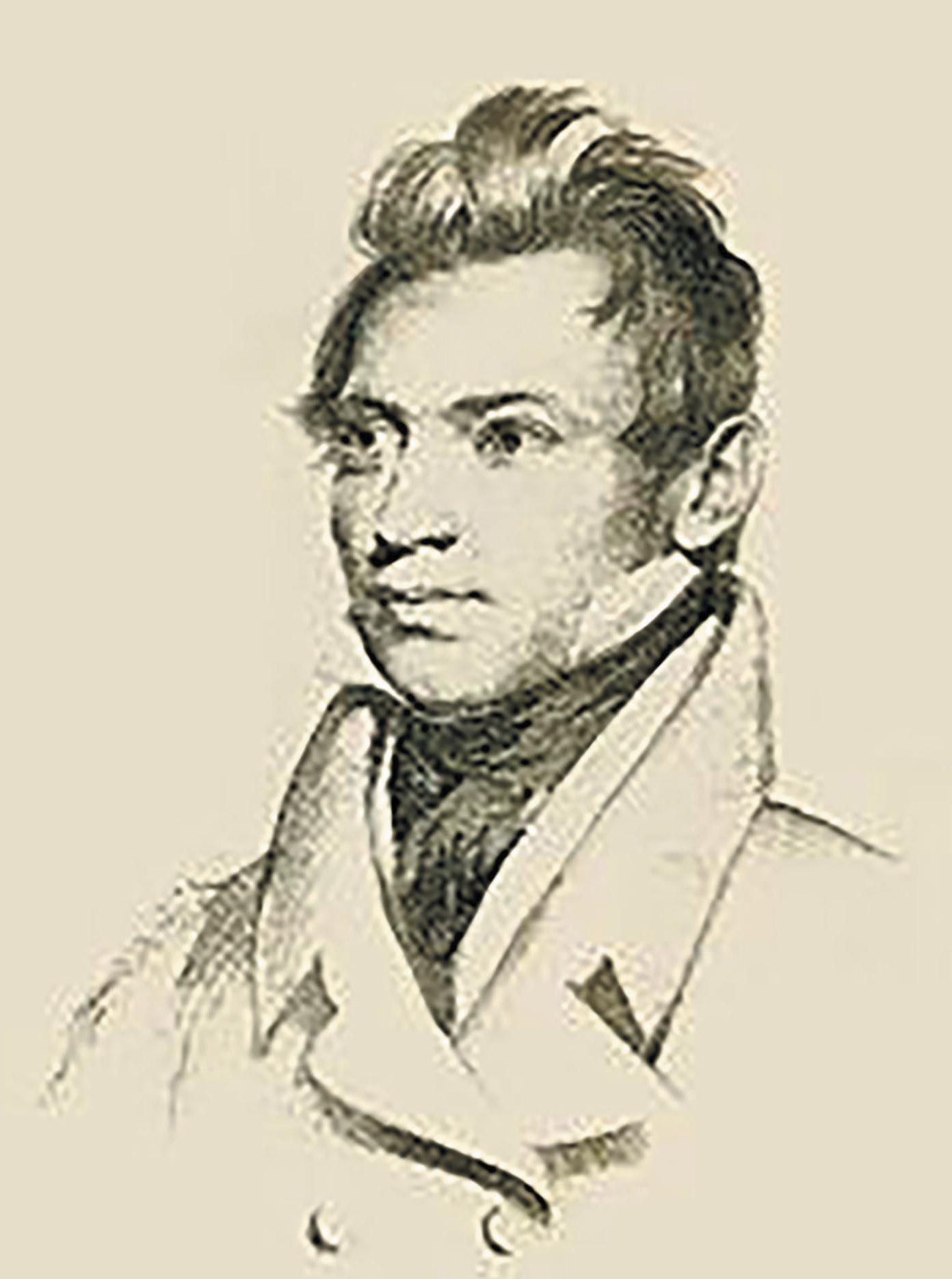
reject the alliance with the Fredonians. Considering the Indian’s experience with Anglo treaties, that was probably not too difficult.
The rebellion degenerated to a couple of hundred armed insurgents who were still willing to make a stand in Nacogdoches until Hayden Edwards fled with his family to Louisiana. After that, the Fredonian Rebellion ended without a shot being fired.
The tribal council met and once again elected the Bowl principal chief of the Texas Cherokee. They also tried Richard Fields and John Dunn Hunter in absentia and condemned them to death. On Chief Bowles’s authority, a posse hunted the two men down and executed them. Richard Fields and John Dunn Hunter were the only casualties of the Fredonian Rebellion.
In appreciation for Bowles’s loyalty, the Mexican Army conferred the rank of lieutenant colonel on the chief. They gave him a military officer’s hat which he wore with great pride for the rest of his life.
of the declaration. He also presented the chief with a ceremonial sword and silk vest.
After the Republic of Texas won the war with Mexico on April 21, 1836, the treaty negotiated between Houston and Bowles was sent to the Texas senate for ratification. No action was taken.
Mexico’s decisive defeat at the Battle of San Jacinto cost them victory in the Texas Revolution, but they had not given up on the idea of retaking the territory. In the spring of 1837, Mexico sent a delegation to try and persuade Bowles to help them in a war against the Anglo settlers. As usual, they offered the Cherokee a legally binding title to land they already occupied. Some younger members of the tribe, who had more confidence in the Mexican government than the Anglos, were ready to take action. The chief agreed to talk but nothing more.
In August of 1838, six hundred Mexican and Indian troops camped a few miles from the Bowl’s home and conducted daily talks with him. They were outnumbered by the Texas militia, but with Bowles’s help, they stood a chance of winning.
STEPHEN AUSTIN, WHO HAD just allied himself with Mexico to defeat a rebellion, set about promoting his own war of independence. He understood the need for Cherokee alliance, or at least neutrality, if the Anglos were to have a chance of winning. His key to success was to use Sam Houston as his negotiator.
Houston was perhaps the only white man John Bowles would trust. In addition to being a decorated officer in the U.S. Army, the former governor of Tennessee had run away from home as a boy and lived with the Cherokee. He’d been adopted into the tribe and given a Cherokee name, Co-lon-neh, the Raven. He had also married a Cherokee woman in a tribal ceremony.
Houston, in consultation with Bowles, drafted a declaration that was adopted unanimously by the provisional government of the Republic of Texas on November 13, 1835. “We solemnly declare that we will guarantee to them [Cherokee] the peaceful enjoyment of their rights to the lands as we do our own.” They further declared Mexican and Anglo settlers’ claims to land on Cherokee territory null and void. Houston signed a treaty with Bowles that included the details
Sam Houston, already elected the first president of the Republic of Texas, wrote the chief calling on his friendship but also threatening to send 2,000 troops into his territory armed with cannon if he didn’t expel the Mexicans and allow the Texas militia to attack them. While Bowles and Houston negotiated, the Texas militia attacked without permission from either the republic or the Cherokee and quickly routed Mexican and Indian troops.
Later that year, a Mexican Indian Agent was intercepted in Texas carrying papers offering the Cherokee land for their alliance. Some members of Bowles’s tribe rode with him. For most Texans that was proof enough that Bowles was conspiring to overthrow the republic, but Houston refused to believe it. Rather than break relations with the Cherokee, he tried to cement the alliance by offering Bowles the rank of brigadier general in the Texas army. The chief would be paid $2,000 a year if he served actively and $1,000 a year if he simply accepted the commission. Houston also proposed hiring Bowles’s warriors into the army at $96 a head.
No formal arrangement was reached concerning
Cherokee involvement in the Texas militia, but the chief met with the regional tribes on Houston’s behalf and persuaded all but the Comanche to sign a treaty. Once again, Sam Houston and Bowles had successfully negotiated a comprehensive agreement. Once again, the Texas congress refused to ratify the document.
Texans were already running high when the last and largest Indian attack on white settlers pushed things to the breaking point. On October 5, 1838, a group of renegades killed eighteen members of the Killough family who had settled on Cherokee land the previous year. No one seriously believed Bowles orchestrated the attack, but most Texans were quick to hold him responsible.
The Killough massacre happened just as Houston’s term expired and Mirabeau Buonaparte Lamar was elected president. Lamar wanted all Texas Cherokee sent to Indian Territory along with U.S. Cherokee relocated by virtue of the Indian Removal act of 1830. He wrote the Texas Minister to Washington urging him to persuade the U.S. government to participate in the forced removal of Indians from the Republic of Texas. Confident of his ability to secure U.S. cooperation, Lamar appointed a commission to offer the tribes of Texas compensation for their land with the threat of war if they refused. He set an upper limit of $25,000 cash.
Seeing no alternative, Bowles agreed to go. He asked for three months to prepare and promised other tribes (Shawnee, Alabama, Coushatta, and Delaware) would accompany the Cherokee.
The Texans denied the chief his three months delay but promised that ample supplies and time would be arranged. They put a treaty before him, knowing that he could not read or write, and demanded that he sign. Bowles asked for more time to confer with trusted members of his tribe, but he had already decided he wouldn’t sign another treaty with the Texans. A large contingent of troops were camped six miles from his home, and he was beginning to suspect that all this negotiation would eventually end in a massacre. He stalled as long as he could while the Cherokee gathered their families and scattered.
On June 15, 1839, the Texas militia attacked and quickly routed the Indians who remained close by. The following day five hundred heavily armed soldiers pursued the others. Within a few hours they came on a mile long line of warriors near the Neches River led by eighty-three-year-old John Bowles mounted on a sorrel horse. The Chief brandished the sword Sam Houston had given him.
The Texans charged the Indian position across open terrain, then pursued their retreat into the Neches bottom. The Texan losses were two killed and twentyseven wounded (three fatally) to an estimated hundred dead Cherokee and Delaware.
The soldiers were relentless. They shot Bowles’s horse out from under him and shot him in the back as he retreated on foot. The old chief crumpled to the ground but managed to pull himself into a sitting position to face his attackers. Although Chief Bowles posed no threat, Captain Robert Smith walked up to the old man and shot him in the head. Soldiers took the saber from the chief’s hand and presented it to his executioner.
When the sun rose the next morning, the remaining Cherokee had scattered. Some went to Arkansas, some went to Mexico, most went to Indian Territory to join members of their tribe who had been removed from Georgia and North Carolina.
As for Chief John Bowles, the Texans mutilated his body and left it lying where he fell. Bowles’s skull remained on the site for several years after scavengers had scattered the rest of his bones. The State of Texas placed a monument on the site in 1936 to commemorate the short bloody conflict. It is believed that John Bowles died within twenty feet of the memorial. Every year, on the Saturday closest to June 16, the American Indian Cultural Society holds a ceremony there remembering the battle.
JOHN T. BIGGS is the author of six novels and hundreds of short stories and the winner of the Reader’s Digest Grand Prize. His writing is so full of Oklahoma that once you read it, you’ll never get the red dirt stains washed out of your mind. John lives in Oklahoma City with his wife, and they travel extensively throughout the world with their family.


